
- +91-7827999000
- [email protected]


Why Book With Us?
No-hassle best price guarantee
Our Destination expert will be happy to help you resolve queries for this tour.
Call +917827999000
9:30 AM - 5:30 PM (Mon to Sat) Second Saturday and Gazetted Holidays Off
National Himalayan Trekking Cum Training Expedition Kashmir Great Lakes 2024
Program Coordinator Details:
Field Director Mr. Dilip Chauhan 7987072006
Mr. Zahid: 9906535012
Mr. Nandan: 8906435581
Important Note- Participants are requested to bring below documents at the time of reporting at base camp.
(1) 2 Copies of ID proof
(2) Trekking Medical certificate (ON GOVERNMENT PRESCRIBED FORMAT ONLY WHICH IS EMAILED BY US)
(3) 2 Passport size photographs
*Introduction:
The Kashmir Great Lakes, trek is the most beautiful, amazing and full of natural beauty trek. In this trek you can enjoy the scenic beauty of God’s amazing creation called ‘Lakes’. Here you can see 6 different Lakes named, Vishnusar, Kishansar, Gadsar ,Satsar,Gangabal,Nandkol and many other small lakes . This is the totally hidden part of Kashmir. Only very few number of people is known about this amazing trek.
* Purpose: The purpose of the program is to expose the YHAI members to a greater adventure and to rough the rigors of plodding, with a sense of love for nature and outdoor recreational activity aiming at promoting national integration.
* Duration: 8N/9D
* Reporting Point: YHAI Base Camp, Near the main gate of Dachigam National Park, Harwan, Srinagar, J&K-191123
*DAY WISE SCHEDULE:
#Day 1: Reporting at Base Camp
#Day 2: Orientation, Training and Acclimatization Walk
#Day 3: Trek to Nichnai Camp (11948 ft.)
#Day 4: Trek to Vishnusar Camp (12152 ft) via Nichnai Pass (13458 ft)
#Day 5: Trek to Gadsar (10777 ft) via Gadsar Pass (13763 ft)
#Day 6: Trek to Satsar (11860 ft)
#Day 7: Trek to Gangabal (11482 ft) via Zach Pass (13428 ft)
#Day 8: Trek to Naranag Village and Then Transfer to the Base Camp
#Day 9: Check Out After Breakfast
Please Note:
1. Participants take note, KGL trek is a high altitude, strenuous, challenging trek that requires moderately high to high degree of mental and physical fitness. If in any case the participant is not able to undertake/ participate/complete the trek due to his/her medical conditions or if the YHAI officers at Base camp found him/her medically and physically unfit for the trek, (which may include but is not limited to health conditions, age restrictions, skill levels, or any other relevant factors) the participant will not be permitted to participate/continue the trek.
2.Further, if it is found that the participant has willingly, deliberately and intentionally witheld his/her medical conditions from the past or present, (while booking or participating in the trek,) the knowledge of which information to YHAI may have lead YHAI to advise/not permit the participation of such member due to risk to health and safety of the member, YHAI at any time can refuse /deny the member-participant the opportunity to participate/further continue the trek.
3. YHAI will not be held liable for any delay, cancellation, or inability to commence/continue the trek due to natural calamities or acts of nature beyond our control. This includes but is not limited to earthquakes, floods, fires, storms, or any other unforeseeable natural events. In such cases, YHAI will make reasonable efforts to notify and assist its participant/members, but refunds or compensation for any losses incurred will not be provided by YHAI.
With reference to point 1,2 and 3 above, no participant/member can claim/seek refund/Credit voucher or alike if any or all conditions mentioned hereinabove are met.
Booking Date
Reporting date :, seats left :, reporting point : yhai base camp, near the main gate of dachigam national park, harwan, srinagar, j&k-191123.

*How to Reach:
#Nearest Railway Station: Jammu (Jammu Tawi), Katra (J&K)
• Regular Taxi on sharing basis and bus service is available from Jammu to Srinagar
IMPORTANT: Please read all the instructions of programme carefully before booking the same (including cancellation policy).
* Who can Participate:
The minimum age for a member to join the program is 18 years to 60 Years, YHAI membership is mandatory to participate. This condition will be adhered to strictly. Under age and above age will not be considered. Members desirous of joining this programme may apply online duly supported by a "Trekking Medical Certificate\" (ON GOVERNMENT PRESCRIBED FORMAT ONLY WHICH IS EMAILED BY US) .
Special Allowance Cases:
On the special case if the person is medically fit and a regular trekker than he can be allowed in offline mode (decision will be final only on management discretion and seat availability). In this case, he/she has to produce Indemnity bond on RS. 100/- bond paper from his respective state and has to submit the same along with his Registration form.
RISK FACTOR :-
This trek is a High risk Adventure programme with following risk factors:
1. High Altitude sickness
THIS TREK IS MODERATE TO HARD
YHAI will provide adequate assistance in above circumstances but cannot be held responsible for any risk mentioned or not mentioned above.
All participants should be physically fit, only those who fulfill the mentioned criteria will be allowed to participate in the expedition. YHAI decision will be final and all participants have to abide by it. NO REFUND IS ADMISSIBLE IN CASE OF ANY MEDICAL REASONS.
* How to participate:
Online Booking: Members desirous of joining this programme may apply online by paying requisite program fee along with online booking amount i.e. Rs.16000/-
We accept Net Banking, Debit Card and Credit Card payment on www.yhaindia.org for online payments.
After successful transaction Admit Card will be generated. Participant has to carry "Admit Card", "Trekking Medical Certificate (ON GOVERNMENT PRESCRIBED FORMAT ONLY WHICH IS EMAILED BY US) " & "Membership Card" & 2 pass size photograph at the time of reporting to the Base Camp.
Offline Booking: Members desirous of joining this programme may apply on the prescribed "Trekking Registration Form" duly supported by a "Trekking Medical Certificate (ON GOVERNMENT PRESCRIBED FORMAT ONLY WHICH IS EMAILED BY US) ", along with a Demand Draft of requisite amount of Rs.16000/- (included postage charges) in favor of “Youth Hostels Association of India” payable at New Delhi. The Trekking registration Form, Trekking Medical Form and Demand Draft may be sent to following address:
Trekking Department, National Office
Youth Hostels Association of India
5, Nyaya Marg, Chankayapuri. New Delhi-110021,
Contact No.: 7827999000
All Offline Booking confirmation is subject to availability of seats. National Office will send the Admit Card along with confirmation letter to the participant at the address mentioned in "Trekking Registration Form".
Members can also apply through our YHAI Units or State Branch in their respective area.
N.B: Without admit card and Medical fitness Certificate do not claim your registration as confirmed.
* Food Supplies : YHAI provides nutritious and good quality meals which includes Morning tea, breakfast, packed lunch, evening tea (in the camp), inner and after dinner tea/coffee/Bourn vita, shall be provided. Please bring your own plates, mugs, spoons etc.
* Accommodation facilities: Tented accommodation on sharing basis, paka toilet cum bathroom facility, at the base camp.
* Safety & Security:
YHAI Group Insurance cover is for accidental death or permanent disability only. You are advised to take personal insurance cover for your journey and other related matters. Extensive and painstaking preparations have gone into the planning of this program for your safety. Our field staff and experienced camp leaders have been visiting the area to check all details. While every care has been taken to ensure safety, the Youth Hostels Association of India cannot be held responsible for any accident, illness and such other unforeseen eventualities.
* What participants should bring along:
Rucksack (if You have one), Woolens, Cotton Shirts, Slacks, Cotton Pants, Sun Cap, Shoes, Socks, Enameled or Steel Mug / tumbler, Plate, Lunch box ,Spoon, Water purifying tablets, Pen knife, Needle, Thread, Spare buttons, Goggles, Cold cream / Vaseline, Soap, Toilet Paper, Towel, Rain sheet, Medicines (As per your personal requirement, which you regularly use at home and Crepe Bandage 4in*1, Micropore tape 1/2inch*1, Bandaids, Cough lozenges/ Kanthil or other, Vicks Vaporub, Coldarin, Clortrimazole cream and powder, Paracetamol*10 Mupirocin cream, Diclofenac gel, Lopamide*10, Azithromycin and Electral), Camera with extra batteries.
* Special Casual leave:
The Trekking Expedition organized by Youth Hostels Association of India have the approval of Ministry of Personnel, Public Grievances and Pensions (Dept. of Personnel And Training), Government of India, vide Office Order no. 28016/3/89-Estt (A), Dated 25 October, 1989. Participants working in the Central Govt. Organization can apply to the authorities concerned for availing special casual leave for the duration of the expedition. This leave can be sanctioned by their office up to 30 days in calendar year.
Cancellation
Cancellation Method:
1) Participants booked online will do online cancellation minimum 10 days prior to your reporting date.
2) Participants booked offline will inform their cancellation by email to [email protected] minimum 10 days prior to your reporting date.
Only cancellation done as per above method will be eligible for credit shell/refund. The below cancellation policy will however not be applicable if the request reaches short of 10 days prior to the reporting date and shall not be eligible for credit shell/refund.
Cancellation Policy:
The Participant, who cancels the programme by serving request minimum 10 days prior to his/her reporting date as per above terms and conditions of "Cancellation Method", is eligible to get the credit shell or refund as follows:
(a) Credit Shell:-
1) In case you are unable to join the programme due to any reason, you will get a 100% Credit Shell of the participation fees which will be valid till December 2024.
2) If the next programme opted by you is cheaper, you may use the balance amount in any of the Trek till Dec 2024.
3) If the next opted programme is costlier, the trekker has to pay the differential amount.
4) Program opted using the Credit Shell cannot be cancelled again.
5) You may transfer your seat to your family members and friends also. The seats thus transferred cannot be retransferred or cancelled.
6) The credit shell can only be used in booking of adventure programs organised by YHAI. The credit shell will not be used in taking memberships and hostel bookings.
(b) Refund:-
Participants can opt for a 50% refund instead of 100% credit shell if they wish to. The conditions of “Cancellation Method” will be the same as mentioned above. The participant has to inform either offline or online minimum 10 days prior to his reporting date. If the request reaches short of 10 days prior to the reporting date the refund request shall not be considered.
Note: If any program will be cancelled due to Natural Calamity / Government Restriction / Cancellation of Permission or any other reasons, YHAI will be accountable only for program fees and not other expenses which participants have made for joining the program. In these circumstances the decision for participation fees will be considered by the YHAI and will be bound to all.

- mission & story
- the organisation
- our network
- awards & achievements
- memorandum and rules & regulations
- Privacy Policy
- Cancellation Policy
- Terms & conditions
Memberships & Benefits
- apply for membership
- institutional
- membership benefits
- membership discounts
- national level
- state level
- Weekend Program
- hostel level
- yhai in news
- press releases
- photo gallery
- about youth hostels
- yhai hostels
- licensee youth hostels
Connect With Us
- [Timing 9:30 a.m to 5:30 p.m. (Mon - Sat)]
- (Second Saturday and Gazetted Holidays Off)

connect by app
Get our newsletter.

+91 98246 54117 -->
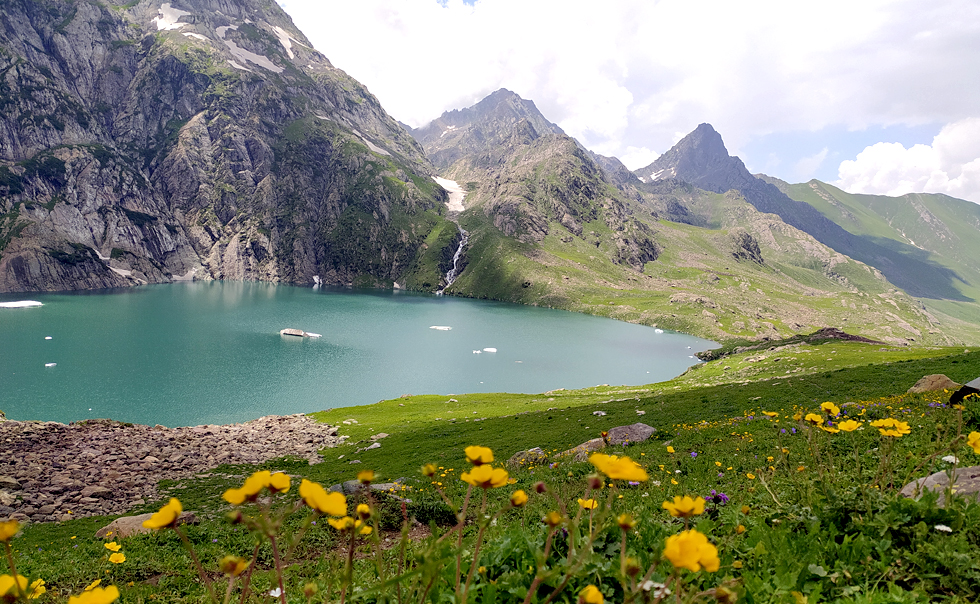
- Upcoming Trekking
National Himalayan Trekking Cum Training Expedition Kashmir Great Lakes 2024
The Kashmir Great Lakes, trek is the most beautiful, amazing and full of natural beauty trek. In this trek you can enjoy the scenic beauty of God’s amazing creation called ‘Lakes’.
Breif Description Of The Program : The Kashmir Great Lakes, trek is the most beautiful, amazing and full of natural beauty trek. In this trek you can enjoy the scenic beauty of God’s amazing creation called ‘Lakes’. Here you can see 6 different Lakes named, Vishnusar, Kishansar, Gadsar ,Satsar,Gangabal,Nandkol and many other small lakes . This is the totally hidden part of Kashmir. Only very few number of people is known about this amazing trek. Purpose : The purpose of the program is to expose the YHAI members to a greater adventure and to rough the rigors of plodding, with a sense of love for nature and outdoor recreational activity aiming at promoting national integration. Reporting Place : YHAI Base Camp, Near the main gate of Dachigam National Park, Harwan, Srinagar, J&K-191123 Program Includes : Expert Guides, Expert supporting team, Food (Veg), Equipments, Group Insurance, Forest entry. Day Wise Schedule: Day 1 : Reporting at Base Camp Day 2 : Orientation, Training and Acclimatization Walk Day 3 : Trek to Nichnai Camp (11948 ft.) Day 4 : Trek to Vishnusar Camp (12152 ft) via Nichnai Pass (13458 ft) Day 5 : Trek to Gadsar (10777 ft) via Gadsar Pass (13763 ft) Day 6 : Trek to Satsar (11860 ft) Day 7 : Trek to Gangabal (11482 ft) via Zach Pass (13428 ft) Day 8 : Trek to Naranag Village and Then Transfer to the Base Camp. Day 9 : Check Out After Breakfast Participate will check out after breakfast on the last day taking bountiful memories of this fantabulous journey home with you. How to Reach: Nearest Railway Station: Jammu (Jammu Tawi), Katra (J&K) Regular Taxi on sharing basis and bus service is available from Jammu to Srinagar Important: Please read all the instructions of programme carefully before booking the same (including cancellation policy). Accommodation Facilities: Tented accommodation on sharing basis, paka toilet cum bathroom facility, at the base camp. Food & Water Supplies: YHAI provides nutritious and good quality meals which includes Morning tea, breakfast, packed lunch, evening tea (in the camp), inner and after dinner tea/coffee/Bourn vita, shall be provided. Please bring your own plates, mugs, spoons etc. Who Can Participate?: The minimum age for a member to join the program is 18 years to 60 Years, YHAI membership is mandatory to participate. This condition will be adhered to strictly. Under age and above age will not be considered. Members desirous of joining this programme may apply online duly supported by a “Trekking Medical Certificate\”(ON GOVERNMENT PRESCRIBED FORMAT ONLY WHICH IS EMAILED BY US). Special Allowance Cases: On the special case if the person is medically fit and a regular trekker than he can be allowed in offline mode (decision will be final only on management discretion and seat availability). In this case, he/she has to produce Indemnity bond on RS. 100/- bond paper from his respective state and has to submit the same along with his Registration form. What Participants Should Bring: Rucksack (if You have one), Woolens, Cotton Shirts, Slacks, Cotton Pants, Sun Cap, Shoes, Socks, Enameled or Steel Mug / tumbler, Plate, Lunch box ,Spoon, Water purifying tablets, Pen knife, Needle, Thread, Spare buttons, Goggles, Cold cream / Vaseline, Soap, Toilet Paper, Towel, Rain sheet, Medicines (As per your personal requirement, which you regularly use at home and Crepe Bandage 4in*1, Micropore tape 1/2inch*1, Bandaids, Cough lozenges/ Kanthil or other, Vicks Vaporub, Coldarin, Clortrimazole cream and powder, Paracetamol*10 Mupirocin cream, Diclofenac gel, Lopamide*10, Azithromycin and Electral), Camera with extra batteries. How To Join: For Online booking: Members desirous of joining this programme may apply online by paying requisite program fee along with online booking amount i.e. Rs.16000/- We accept Net Banking, Debit Card and Credit Card payment on www.yhaindia.org for online payments. After successful transaction Admit Card will be generated. Participant has to carry “Admit Card”, “Trekking Medical Certificate(ON GOVERNMENT PRESCRIBED FORMAT ONLY WHICH IS EMAILED BY US)” & “Membership Card” & 2 pass size photograph at the time of reporting to the Base Camp. For Offline Booking Process: Members desirous of joining this programme may apply on the prescribed “Trekking Registration Form” duly supported by a “Trekking Medical Certificate(ON GOVERNMENT PRESCRIBED FORMAT ONLY WHICH IS EMAILED BY US)”, along with a Demand Draft of requisite amount of Rs.16000/- (included postage charges) in favor of “Youth Hostels Association of India” payable at New Delhi. The Trekking registration Form, Trekking Medical Form and Demand Draft may be sent to following address: Trekking Department, National Office Youth Hostels Association of India 5, Nyaya Marg, Chankayapuri. New Delhi-110021, Contact No.: 7827999000 All Offline Booking confirmation is subject to availability of seats. National Office will send the Admit Card along with confirmation letter to the participant at the address mentioned in “Trekking Registration Form”. Members can also apply through our YHAI Units or State Branch in their respective area. N.B: Without admit card and Medical fitness Certificate do not claim your registration as confirmed. Program Includes: Transportation from Road Head Naranag to Sonamarg base camp, Expert Guides, Expert supporting team, Food (Veg), Equipments, Group Insurance, Forest entry. Risk factor: This trek is a High risk Adventure programme with following risk factors: 1. High Altitude sickness This Trek Is Moderate To Hard. YHAI will provide adequate assistance in above circumstances but cannot be held responsible for any risk mentioned or not mentioned above. All participants should be physically fit, only those who fulfill the mentioned criteria will be allowed to participate in the expedition. YHAI decision will be final and all participants have to abide by it. No Refund Is Admissible In Case Of Any Medical Reasons. Safety & Security: YHAI Group Insurance cover is for accidental death or permanent disability only. You are advised to take personal insurance cover for your journey and other related matters. Extensive and painstaking preparations have gone into the planning of this program for your safety. Our field staff and experienced camp leaders have been visiting the area to check all details. While every care has been taken to ensure safety, the Youth Hostels Association of India cannot be held responsible for any accident, illness and such other unforeseen eventualities. Special Casual Leave: The Trekking Expedition organized by Youth Hostels Association of India have the approval of Ministry of Personnel, Public Grievances and Pensions (Dept. of Personnel And Training), Government of India, vide Office Order no. 28016/3/89-Estt (A), Dated 25 October, 1989. Participants working in the Central Govt. Organization can apply to the authorities concerned for availing special casual leave for the duration of the expedition. This leave can be sanctioned by their office up to 30 days in calendar year. Cancellation Rules: 1) Participants booked online will do online cancellation minimum 10 days prior to your reporting date. 2) Participants booked offline will inform their cancellation by email to [email protected], minimum 10 days prior to your reporting date. Only cancellation done as per above method will be eligible for credit shell. The below cancellation policy will however not be applicable if the request reaches short of 10 days prior to reporting date and shall not be eligible for credit shell. Cancellation Policy: 1) In case you are unable to join the programme due to any reason, you will get a 100% Credit Shell of the participation fees which will be valid till December 2024. No refund will be applicable for any cancellation of seat. 2) If the next programme opted by you is cheaper, you may use the balance amount in any of the Trek till Dec 2024. 3) If the next opted programme is costlier, the trekker has to pay the differential amount. 4) Program opted using the Credit Shell cannot be cancelled again. 5) You may transfer your seat to your family members and friends also. The seats thus transferred cannot be retransferred or cancelled. 6) The credit shell can only be used in booking of adventure programs organised by YHAI. The credit shell will not be used in taking memberships and hostel bookings. Note: If any program will be cancelled due to Natural Calamity / Government Restriction / Cancellation of Permission or any other reasons , Yhai will be accountable only for program fees and not other expenses which participants have made for joining the program. In these circumstances the decision for participation fees will be considered by the Yhai and will be bound to all.
Itineraries map
Weather forecast.
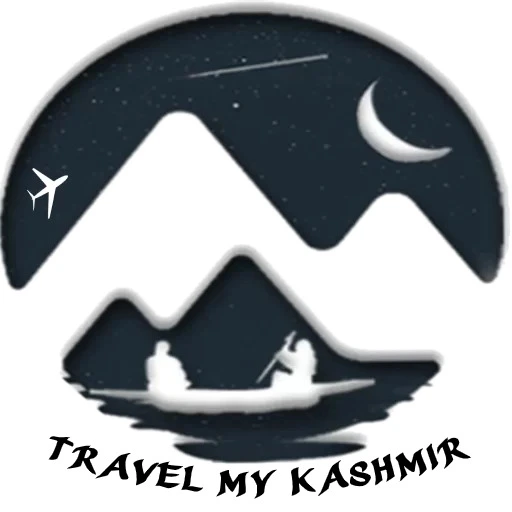
car rental srinagar
Srinagar airport taxi, taxi booking, srinagar-leh taxi, online auto rickshaw, railway station taxi, gulmarg cable car, shikara ride booking, bike rental srinagar, houseboat booking, kashmir photo serivces, trekking in kashmir, pony ride booking, hot air balloon, river rafting kashmir, kashmir tour packages, guide in kashmir, paragliding in kashmir, fishing in kashmir, gulmarg ski resort, more services, 3-days kashmir, 7-days kashmir, kashmir tour package, 4-days kashmir, 8-days kashmir, 5-days kashmir, 9-days kashmir, 6-days kashmir, cheapest tour package, privacy policy, kashmir great lakes trek guide, explore the pristine alpine lakes.
Table of Contents
Kashmir Great Lakes Trek Overview
- Trek Name: Kashmir Great Lakes
- Trek Duration: 8 days
- Distance : 72 Kms
- Highest Altitude: 13,750 ft
- Country: India
- Location: Kashmir
- Suitable for: 12- 60 years
- Trek Difficulty: Moderate to Difficult
- Base camp: Gagangir
- Month: July | August | September |
- Railway station: Srinagar Railway station
- Airport: Srinagar (sheikh ul-alam international)
Kashmir Great Lakes Trek: Hiking Heaven in the Himalayas
The Kashmir Great Lakes Trek is a breathtaking adventure in the heart of the Himalayas, offering trekkers a chance to explore some of India’s most pristine alpine landscapes. This 8-days journey is situated 75 km northeast of Srinagar and takes you through lush meadows, dense forests, and rocky terrain, showcasing seven stunning high-altitude lakes situated among snow-capped peaks. During this trek you are going to explore seven lakes and five different beautiful valleys. Trekkers will experience diverse flora and fauna, encounter local shepherds, and camp under star-filled skies. With moderate difficulty, this trek is perfect for both beginners and experienced hikers seeking to immerse themselves in the raw beauty of Kashmir’s wilderness. Buts it’s best to go for short treks before going for this trek. The best time for Great Lakes trek Kashmir expedition is from July to September when the weather is most favorable and the scenery at its peak. The Kashmir great lakes trek distance is 72 Kms.
Complete itinerary of Kashmir Great Lakes Trek (KGL)
Our aim is to keep trekkers well-informed before starting the Kashmir Great Lakes trek. With good knowledge, you can make your trek safe and risk-free. In this section, you will find detailed information about the Kashmir Great Lakes trek. It covers what to expect each day and how to prepare
- Quick Itinerary
- Detailed Itinerary
Day 1 Drive from Srinagar to Gagangir. Drive Duration: 3-4 hours | Drive Distance: 83 km | Pick-up point for Travel My Kashmir trekkers: Kashmir cab service by Travel My Kashmir. Transportation will be arranged at 10:00 am on Day 2, departing from from Srinagar to Gagangir.
Day 2 Drive from Gagangir to Shitkadi Trek to Nichnai Trek distance: 11.6 km | Trek duration: 6.5 hours | Altitude gain: 8,150 ft to 11,607 ft
Transportation will be arranged at 10:00 am on Day 2, departing from Gagangir to Shitkadi Base camp.
Day 3 Trek from Nichnai to Vishnusar via Nichnai Pass Trek distance: 13.5 km | Trek Duration: 7 hours | Altitude gain: 11,607 ft to 12,011 ft via 13,229 ft
Trek Difficulty: Moderate
The journey unfolds in three distinct phases:
- Initial Stage: A gradual uphill trek lasting approximately 90 minutes.
- Middle Phase: An hour-long ascent to reach the mountain pass.
- Final Leg: A challenging hour-long steep descent from the pass, which then transitions into a more comfortable flat terrain walk.
Day 4 Trek from Vishnusar Lake to Gadsar via Gadsar Pass Trek distance: 16 km | Trek Duration: 7.5 hours | Altitude gain and loss: 12,011 ft to 10,706 ft via 13,715 ft
Trek Difficulty: Moderate to Challenging
The journey consists of three main segments:
- Initial Climb: A rigorous uphill trek lasting between 90 to 120 minutes. This steep ascent forms the most demanding part of the journey.
- Descent Phase: Following the climb, trekkers face a steep downhill section for approximately 60 minutes.
- Final Stretch: The trail levels out, offering a more relaxed walking experience to conclude the trek.
Day 5 Trek from Gadsar to Satsar Trek distance: 11.5 km | Trek Duration: 4.5 hours | Altitude gain: 10,706 ft to 11,985 ft
The journey is composed of two distinct phases:
- Initial Climb: A challenging uphill trek lasting approximately 90 minutes. This steep ascent forms the most demanding portion of the route.
- Plateau Phase: Following the climb, the trail evens out, offering a more comfortable walking experience for the remainder of the trek.
Day 6 Trek from Satsar to Gangabal via Zaj Pass Trek distance: 9 km | Trek Duration: 6 hours | Altitude loss: 11,985 ft to 11,486 ft via 13,276 ft
Trek Difficulty: Challenging. The trek involves 30 minutes of gradual ascent, followed by a steep climb lasting approximately 45 minutes, and then a steep descent. This pattern of ascending and descending continues throughout the trail.
Day 7 Trek from Gangabal to Naranag. Drive to Srinagar Trek distance: 13 km | Trek Duration: 6 hours | Altitude loss: 11,486 ft to 7,800 ft Drive Distance: 2 hours | Drive Duration: 50 km
Trek Difficulty: Moderate. The trail features a combination of ascents and descents over 6 km, followed by a very steep descent. You should arrive in Srinagar by 5 pm.
Day 8 Buffer Day
A buffer day in trekking is an extra day built into the itinerary to account for unexpected circumstances or delays.
Day 1 : Drive from Srinagar to Gagangir
Drive Duration: 3-4 hours | Drive Distance: 83 km
you will be picked up by our cab service in Srinagar at 10 am. The drive will take around 4 hours to reach Gagangir, which is the basecamp of this trek.
Day 2 : Drive from Gagangir to Shitkadi. Trek to Nichnai
Trek distance: 11.6 km | Duration: 6.5 hours Altitude : 8,150 ft to 11,607 ft Trek Gradient: Moderate. Expect a steep ascent lasting 3 hours, followed by an hour of descent. The final 2 hours involve a gradual climb to Nichnai.
Journey to Nichnai: A Scenic Trek from Shitkadi
Starting Point: Your adventure begins with a short 30-minute drive to Shitkadi, located 3 km from Sonamarg on the Srinagar road. Look for a solitary dhaba on the right – your last chance for supplies before Naranag.
Trail Overview:
- 3-hour ascent
- 1-hour descent
- 2-hour gentle ascent to Nichnai
- Follow the jeep track diverging right, descending to the Sindh river level.
- Trail veers left into a verdant meadow overlooking Sonamarg.
- Ascend through Maple and Pine forests, enjoying unique Kashmiri landscapes.
- Reach a ridge offering panoramic views of Sonamarg valley.
- Descend into a picturesque meadow flanked by Silver Birch trees.
- Pass shepherds’ huts and small brooks – ideal for water refills.
- Arrive at Shekdur, a beautiful meadow surrounded by Bhoj trees. Lunch stop.
- Trek through Silver Birch forests, enjoying dappled sunlight.
- Descend to a river valley, marking the start of Nichnai.
- Follow the right bank upstream, with views of snow-capped peaks behind.
- The valley widens, revealing expansive green meadows between mountain ranges.
Campsite: Set up camp on flat ground in the wide river valley, with twin snow-clad peaks visible in the distance.
Day 3 : Trek from Nichnai to Vishnusar via Nichnai Pass
Trek distance: 13.5 km | Trek Duration: 7 hours Altitude gain: 11,607 ft to 12,011 ft via 13,229 ft Trek difficulty : The trek has a moderate gradient. It starts with 1.5 hours of gradual ascent, then an hour of climbing to reach the pass. Afterward, there’s a steep descent from the pass for about an hour, which eventually levels out into a flat walk.
On the 3rd day, we start at 8:00 am, and the first milestone of the day is the Nichnai Pass or Vishnusar Berry, which is visible from the campsite, located just to the right of the twin snow-covered peaks. After walking along the river for about half an hour, cross it to reach the left bank. Follow this bank for the next hour, noting that the trail gradually begins to ascend through the meadow. The next hour involves a moderate climb to the Nichnai Pass at 13,500 feet, followed by a short descent and a long, flat walk through meadows leading to Vishnusar Lake. As you climb, you’ll spot a deep blue lake at the base of the mountains, which heightens your anticipation for the lake ahead. From the Nichnai Pass, you can view the Sonamarg Valley and the trail you have followed. BSNL phone networks usually work here, and it is also the last point on the trek where you get network coverage; the next opportunity for network is after Gangbal.
The Nichnai Pass resembles a large tunnel and represents a swift ascent by trekking standards, especially since you’re only on the second day of your trek. It is the highest point of today’s trek, located at an altitude of 13,100 feet. From this pass, the trail begins to descend. The descent starts on a rocky path, which then transitions to grassy terrain within the next hour. You’ll notice red flowers blooming around you as you walk through a vast green meadow framed by mountains. A new river flows from the pass into this meadow.
Take a moment to capture these beautiful views. To your left, observe a large waterfall cascading down the mountain and merging with the river. After the waterfall, the rapid descent ends, and you’ll continue through a wide, flat meadow. On the left, you’ll see classic snow-capped Himalayan peaks, while to your right, the grey, barren mountains resemble the Ladakh ranges.
As you walk through the lush green grass between these ranges, you will see two main streams flowing through the valley. Stay close to the left stream and prepare for another icy stream crossing in about half an hour.
Proceed through the meadow for another hour and a half until you reach the valley’s end, where a perpendicular stream flows from left to right. This stream originates from Vishnusar Lake, which is situated higher up and is not visible from the campsite. Set up your tents near the stream from the lake, where there is plenty of space.
If time allows, explore the twin lakes. Vishnusar Lake is 0.5 km to the left and 100 feet above the campsite. Follow the stream without crossing it to reach the lake in about 7 minutes. This is the first lake you will see on this trek, and as we continue the Kashmir Great Lakes trek, you will explore additional lakes later. Tonight, we’ll set up camp near Vishnusar Lake.
Day 4 : Trek from Vishnusar to Gadsar Trek distance: 16 km | Trek Duration: 7.5 hours Altitude gain and loss: 12,011 ft to 10,706 ft via 13,715 ft Trek gradient: Moderately difficult: 1.5 to 2 hours of steep ascent followed by 1 hour of steep descent, ending with a flat walk
On the 4th day of our trek, we will head to Kishansar Lake via Gadsar Pass. From the campsite, you will see a thin line traversing the mountainside, which is actually the track you need to follow. After about an hour and a half of climbing, you will reach the top of a ridge. Continue climbing for another 45 minutes, and you will arrive at a spot that offers a breathtaking full view of both Kishansar and Vishnusar Lakes.
The beautiful path continues until you reach the pass. This is the Gadsar Pass, at an altitude of 13,800 feet, and it is the highest point on this trek. The trek involves a steep 2-hour ascent, followed by a steep descent, and then a gentle walk through the meadows. Beyond the Gadsar Pass, a long valley unfolds with 2-3 small lakes in view. In the far distance, a series of snow-covered peaks can be seen, located outside our Line of Control.
The descent is straightforward. The first small lake on the left is Yamsar Lake, which is not as popular as the other lakes and is associated with Lord Yama, according to locals. Beyond Yamsar is another unnamed lake. After an hour of descending, you reach flat meadows again. This valley is narrow, with mountains surrounding it on either side. Notice the colorful flowers sprouting from the green grass, starting with red and transitioning to blue and purple iris flowers.
When you reach the area with blue irises, you are near Gadsar Lake, at an altitude of 12,000 feet, one of the most beautiful and untouched lakes on this trek. Located at the base of towering snow-covered peaks, one side of the lake is adorned with snow blocks cascading down from the mountains, while the other side is graced with colorful flowers and lush greenery, creating a mesmerizing view. From Gadsar Lake, you will see a mesmerizing view of Yamsar Lake, the unknown lake, and Gadsar Lake, all connected by a stream of water that flows from the higher lake to the lower.
You can camp at Gadsar Lake, but it is usually preferred to stay near the Gadsar army camp. Continue descending from Gadsar, and within half an hour, the valley opens up. You’ll notice another blue lake on the left side of the valley. As you continue, you will lose a considerable amount of altitude. As you follow the trail, you will start noticing shepherds’ huts, and after another half an hour, you will arrive at the army camp. To move forward, you need permission from the Gadsar army camp. Report to the army post as quickly as possible, as it takes about 2 to 3 hours for the green signal to come through from the headquarters. Your ID proofs will be checked, collected, and recorded before you can proceed further.
Day 6 : Trek from Gadsar to Satsar
Trek distance: 11.5 km | Trek Duration: 4.5 hours Altitude gain: 10,706 ft to 11,985 ft Trek gradient: Moderate; 1.5 hours of steep ascent followed by a level walk.
From the army camp, you need to move left towards the stream to head up into the mountains. You are now above the tree line, with views of the tree cover and rivers below. The climb continues for an hour and a half, during which you gain 1,100 feet in altitude. After crossing the 11,500-foot mark, the climb transitions into a traverse and bends to the left, leaving the river valley. Once out of the valley, you will walk across a flat meadow surrounded by mountains on all sides. This section of the trail is called Maegandob, where you may also spot a few craters to your right. Soon, you will see the first of the Satsar Lakes. The name Satsar comes from ‘Sat,’ meaning seven, and ‘Sar,’ meaning lake. Satsar is a collection of seven lakes, which perfectly explains the significance of the name.
You can choose to camp at this site if you camped at Gadsar Lake. If you started from the Gadsar army camp, you can cover a little more distance today and camp near the first of the Satsar Lakes. Depending on the season, you may find 4 or 5 of the lakes filled with water. After crossing the bridge, you will come across another army check post, the third check post of this trek. The process here is similar to the Gadsar army camp, involving checking and recording your ID and information. Once the procedures are complete, you can continue on your trail. After walking for 10 minutes, you will reach the first of the Satsar Lakes. The lake is situated in a scenic landscape, surrounded by lush greenery and mountain vistas. Its emerald-blue waters shift in color over time.
Day 6 : Trek from Satsar to Gangabal via Zaj Pass
Trek distance: 9 km | Trek Duration: 6 hours Altitude loss: 11,985 ft to 11,486 ft via 13,276 ft Trek difficulty: Challenging. It starts with 30 minutes of gradual ascent and descent, followed by a steep 45-minute climb and then a steep descent. The trail continues with alternating ascents and descents throughout.
The trail goes up and down. Starting from our campsite, we will trek for half an hour to reach the largest and last of the Satsar Lakes. The path is mostly rocky with many boulders. After the lake, the trail descends for another half hour until we reach the first forest line. To the right is a ridge, and to the left is the forest. From here, we will climb up a zigzag path to the top of the first ridge. We need to climb two more ridges to reach the top. The terrain is barren and rocky. On the other side, you can see some Gujjar huts and greenery, which contrasts with the rocky trail.
After about a two-hour climb, you’ll reach the top of the third ridge, which is around 13,000 feet high. From there, you can see two lakes with a stream flowing from the higher lake to the lower one, creating a beautiful view. If you look closely, you’ll notice two more lakes on either side. The smaller lake’s name is unknown, but the largest lake is Gangabal, accompanied by Nandkol. The path then goes down and up again as you descend about 1,400 feet to the lake. Now our next destination is either Gangabal or Nandkol. Fill your empty water bottles and move to the next destination.
After walking an hour and a half, you will reach a meadow again. After crossing the wooden bridge on a stream, you will arrive at Nandkol, which is a camping site for the night. The Nandkol lake lies at the base of the Harmukh peak. Both Nandkol and Gadsar are famous for trout fishing. But unfortunately, many people who come here leave behind a lot of waste.
From Nandkol, the Gangbal lake is just a distance of 20 minutes; a stream connects both of them. To reach another lake, we have to cross this stream. Avoid crossing the stream at the lower levels. Instead, head to the bank of Gangabal, where you’ll find a sturdy man-made bridge on the right. Gangbal is a huge lake, and if you want to circle it, then you need at least one hour of time
Day 7 : Trek from Gangabal to Naranag and Drive back to Srinagar
Trek distance: 13 km | Trek Duration: 6 hours Drive Distance: 2 hours | Drive Duration: 50 km Altitude loss: 11,486 ft to 7,800 ft Trek gradient: Moderate. A mix of ascents and descents for 6 km followed by a very steep descent all the way down.
Today’s trek is entirely downhill, but the steep descent can be tough on your knees, so be ready. From the Gangabal campsite, follow the stream down through the ridge towards the trees. After about 30 minutes, you will get Airtel network coverage and can let your family know you are alive!. When the ridge ends, you will reach a flat meadow. From here, you can look back and admire the majestic Harmukh Peak. About an hour into the trek, you’ll enter a forest of mostly pine trees and start seeing signs of civilization, like a log hut. For the next 6 km, you’ll weave in and out of the forest without losing much altitude. After covering two-thirds of the distance, the trail begins a steep descent. This part of the trail is muddy and well-trodden, surrounded by thick pine trees. The last 4 km involve a significant drop of over 3,000 feet. You might see other trekkers heading from Naranang to Gangabal. As Naranang comes into view, there’s a bit more to go. The final stretch is quite steep and can test your endurance. Soon, you’ll reach a stone-paved path and enter the village of Naranang. From there, you’ll drive to Srinagar, expecting to arrive by 6:30 pm. You can then arrange your further travel plans
Day 8 : Buffer Day
When planning your Kashmir great lakes trek, always add an extra day to handle any bad weather or political issues that might come up during the trek. This will vary based on the specific trek and the current situation in Kashmir.
KGL Inclusion / Exclusion
- Meals: Vegetarian and egg-based meals provided from Day 1 evening to Day 8 lunch.
- Permits and Fees: All necessary permits and fees (equivalent to Indian nationals) covered.
- Camping Equipment: Twin-share tents, sleeping bags, and mattresses provided.
- Safety Equipment: Static rescue rope, seat harness, carabiners, and pulleys included.
- Trek Leadership: Certified mountaineering trek leader with first aid and rescue training.
- Local Support: Experienced local guide, cook, and helpers included.
- Luggage Transport: Porters or mules for carrying shared luggage.
- Medical Kit: Exhaustive first aid kit with portable oxygen cylinder.
- Meals: Participants are responsible for meals during road journeys.
- Insurance: Any type of insurance is not covered.
- Personal Expenses: All personal expenses are to be borne by the participant.
- Additional Costs: Any expenses not explicitly mentioned in the package inclusions are not covered.
- Luggage: Participants are responsible for carrying their personal backpacks.
- Transportation: Transportation to and from Srinagar is not included.
How difficult is the Kashmir Great lakes Trek (KGL)?
During this Grek Lakes trek Kashmir, You will cover a total distance of 75 km over six days, with average of 12 km of trekking each day. The trek involves climbing and descending 1500 feet daily. The Kashmir great lakes trek reaches its peak altitude at 13,715 feet. Along the way, you will encounter numerous streams to cross and boulders to navigate. There is also a 40 minute long boulder section between Satsar to Gangbal which can be challenging for some trekkers.
Here are some key points about its difficulty:
- Altitude: The trek reaches elevations of around 13,715 feet (3,965 meters), which can cause altitude sickness for some trekkers.
- Terrain: The trail includes steep ascents and descents, rocky paths, and sometimes snow-covered areas depending on the season.
- Duration: It typically takes 6-7 days to complete, covering approximately 70-75 kilometers.
- Weather: Conditions can be unpredictable, with potential for rain, snow, and cold temperatures even in summer.
- Physical fitness: A good level of fitness is required due to long daily walking distances (about 10-15 km per day) and challenging terrain.
- Remoteness: The trek takes place in a relatively isolated area, which can add to the challenge.
How Long is the Kashmir Great Lakes Trek?
The Kashmir Great Lakes Trek typically takes 6 to 7 days to complete. During this time, trekkers cover a total distance of approximately 70 to 75 kilometers. The trek is usually done at a moderate pace, allowing time for acclimatization to the high altitude and for enjoying the scenic beauty of the region.
How Much Does the Kashmir Great Lake Trek (KGL) cost?
As of 2024, the cost of the Kashmir Great Lakes trek is approximately Rs. 17,000 per person. For more information and inquiries, you can contact Travel My Kashmir at 9796466052. It should be noted that the Kashmir Great Lakes trek (KGL) is typically allowed from July to September.
Kashmir Great Lakes trek permit?
All necessary permits for the Kashmir Great Lakes trek, including Forest Permits, Camping Charges, Trek Permit Fees, and IMF Permission, will be included in our trekking packages. So you don’t have to worry about obtaining any permits yourself. Simply book your KGL trekking package from Travel My Kashmir and start your adventure.
How many lakes are there in the Kashmir Great Lakes Trek?
The Kashmir Great Lakes Trek features a total of seven stunning lakes. These lakes offer breathtaking views and a unique trekking experience. The seven lakes included in the trek are:
- Vishansar Lake
- Kishanganga Lake
- Gadsar Lake
- Satsar Lake
- Kukusar Lake
- Gangabal Lake
- Nundkol Lake
What is the best time for the Kashmir Great Lakes trek?
The best time for the Kashmir Great Lakes trek is typically from mid-July to mid-September. This period offers the most favorable conditions for several reasons:
- Weather: During these summer months, temperatures are milder and more comfortable for trekking at high altitudes.
- Snow melt: By July, most of the snow on the trails has melted, making the paths more accessible and safer to navigate.
- Landscape: The alpine meadows are in full bloom, creating a vibrant and picturesque setting.
- Lake views: The lakes are usually free from ice, showcasing their crystal-clear waters and stunning reflections.
- Stable conditions: This period generally has more stable weather, reducing the risk of heavy rains or snowfall that could complicate the trek.
Note: Even during this optimal period the weather in the mountains can be unpredictable. Trekkers should always be prepared for sudden changes in conditions. Additionally, August can be slightly more crowded due to peak tourist season. If you prefer a quieter experience, you might opt for early July or September.
How to reach the Base camp?
Before going for the Kashmir great Lakes trek , you should be aware of the travel plan. Here we provide step-by-step guide of how to reach the base camp and how to plan your travel of Kashmir great Lakes trek (KGL).
- Fly or travel to Srinagar, the capital city of Jammu and Kashmir.
- From Srinagar, you need to travel to Sonamarg, which is usually the starting point for the trek. This is about 80 km from Srinagar and takes around 2-3 hours by road. We provide the transportation service from Srinagar to the base camp.
- It is always best to keep a buffer day. If your trek is completed on time, you can utilize this buffer day for local sightseeing in Srinagar and can enjoy activities like Shikara ride in Dal lake .
Options to reach Srinagar:
- Direct flight: Srinagar Airport has excellent connectivity with major airports across India. You can also choose our Srinagar airport cab service for a comfortable journey.
- By Railway: If you are arriving by train, the nearest railway station is Srinagar Railway Station. The railway section between Jammu and Srinagar is not fully connected, so you may need to hire a cab from Jammu to Sangaldan Railway Station. From there, you can proceed directly to Srinagar Railway Station. For a hassle-free journey, consider our Srinagar Railway Station cab service .
- By Road: If you are traveling by road, there are multiple options to reach Srinagar, such as a private cab, a bus, a shared cab, tempo travelers, or even you can pre-book a cab from Jammu to Srinagar online.
- Drop-off Information: The specified location for drop-off is Srinagar, at 6 pm.
What to pack for Great Lakes Kashmir Trek?
Documents required for great lakes of kashmir trek or kgl trek.
Here is the list of documents you must carry with you when starting the Kashmir Great Lakes trek.
- Identification Proof : Carry a valid government-issued ID proof such as Aadhar Card, Passport, Voter ID, or Driving License. This is essential for any identification checks during the trek. Keep both the original as well as photocopy of it.
- Medical certificate: The forest department requires a medical certificate completed by an MBBS doctor to grant permission for your trek. Without this certificate, you won’t be able to obtain the necessary permits. Download Medical certificate
How to get fit for Kashmir Great Lakes?
The Kashmir Great Lakes trek is a beautiful but challenging adventure, so it’s important to be well-prepared physically. Here are some tips to help you get fit for the trek:
1. Cardiovascular Endurance
- Running or Jogging : Start with short distances and gradually increase your mileage over time. Aim for at least 30-45 minutes of running or jogging, 3-4 times a week.
- Cycling : Incorporate cycling into your routine to build leg strength and cardiovascular fitness. Aim for longer rides as your fitness improves.
2. Strength Training:
- Leg Exercises : Focus on squats, lunges, and step-ups to build strength in your quadriceps, hamstrings, and calves.
- Core Exercises: Planks, sit-ups, and other core exercises will help you maintain balance and stability on uneven terrain.
3. Stamina Building:
- Long Walks: Try to walk 5-6 kilometers daily, preferably on inclines or uneven terrain to simulate trekking conditions.
- Day Hikes: Go on day hikes with a backpack to get used to carrying weight and walking for extended periods.
Kashmir Great Lakes Trek Photos?
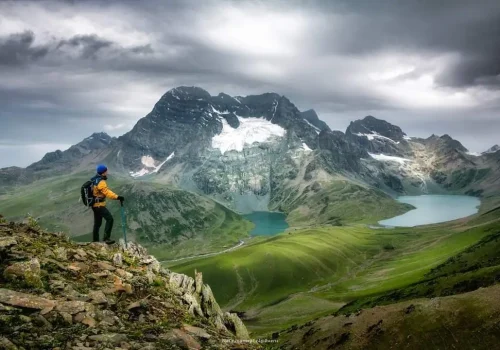
kashmir great lakes trek map
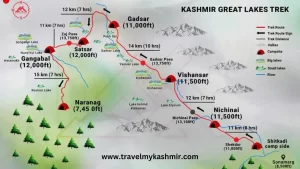
Trusted by Google and Trip Advisor
Check out the reviews from Trip Advisor and Google

Rate Us on Trip Advisor
316+ reviews with ⭐⭐⭐⭐⭐Rating

Rate Us on Google
800+ reviews with ⭐⭐⭐⭐⭐ Rating
Frequently asked questions
- Capability to complete a 5 km run in 32 minutes
- BMI below 28
- Children should be at least 12 years old, and adults up to 62 years are recommended
- Commitment to abstain from smoking and drinking during the entire trek
- Dedication to practicing responsible trekking
There is no maximum age restriction for trekking in India. However, it is recommended that children be at least over 10 years old.
The months from July to August are best for Great Lakes trek Kashmir.
The best season for the Kashmir Great Lakes Trek (KGL Trek) is during the summer months, from July to mid-September .
The Kashmir Great Lakes Trek (KGL Trek) is roughly between 69 and 75 kilometers (43 and 47 miles) long. The total distance may vary slightly depending on the specific route chosen by your trekking company. The trek typically takes 7 to 9 days to complete, depending on the pace and itinerary.
The Kashmir great lakes trek cost starts from Rs. 17000 per person.
The climber needs to be in good physical condition and have the endurance to walk 6 kilometers in 35 minutes without feeling strained. Additionally, they should be capable of carrying a backpack weighing between 12 to 16 kilograms.
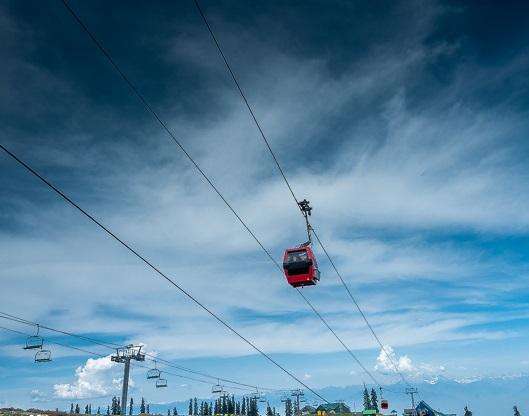
- Home | Kashmir Cab
- Srinagar Tour & Travel
- Hotel Booking in Kashmir
- Houseboat Booking Kashmir
- Hot Air Balloon booking
- Shikara ride
- Bike Rental in Srinagar
- Motorcycle On Rent Kashmir
- Srinagar to Leh Bike
- Kashmir Bike Rental
Self Drive Cars
- Self Drive Cars in Kashmir
- Car On Rent in Srinagar
- Self Drive Car in Srinagar
- Car On Rent in Kashmir
Taxi Services
- Taxi service in Srinagar
- Taxi Kashmir
- Tourist Taxi Srinagar
- Kashmir Taxi Service
- online cabs Srinagar
- Taxi Rates in Srinagar
- Srinagar Car rental
- Book A Cab in Kashmir
- Srinagar Airport Cab service
- Kashmir Car rental
- Car rental Srinagar
- Shikara boat book Srinagar
- Dal Lake Shikara ride book
- Shikara boat in Kashmir
- Shikara ride rates
- Online Shikara booking
- Srinagar Shikara Ride
- Shikara ride rates Srinagar
- Srinagar Railway Station Taxi
Boathouse Srinagar Kashmir Nigeen Lake
- Houseboat in Srinagar
- 5-Star Houseboats in Srinagar
- 4 Days kashmir trip

Wildcraft App
Easy Checkout & Free Shipping in App

- CORPORATE GIFTING
Use code APP10 during checkout for additional 10% OFF (Applicable only for app transactions). Use code SAVE10 for additional 10% OFF on min cart of 1500 (Applicable only for the first-time purchaser on mobile site and desktop transactions)

TOP SEARCHES
- RAIN CHEATER
- HIKING SHOES
- TRAVELCASES
- Jackets & Cheaters
- Sweatshirts & Pullovers
- Joggers & Trackpants
- Pants & Cargos
- Shorts & Cargo Shorts
- Shirts & Tshirts
- Rain Jackets
- Rain Suits & Ponchos
- Thermal Tops
- Thermal Bottoms
- Caps & Hats
- Mufflers & Gaiters
- Travel Cases
- Soft Trolleys
- Hard Trolleys
- Hybrid Trolleys
- Travel Gear
- Duffle Bags
- Duffle Trolleys
- Belts & Wallets
- Travel Accessories
- Technical Gear
- Sleeping Bags & Tents
- Laptop Backpacks
- Messengers & Portfolios
- Trousers & Trackpants
- Capris & Leggings
- WiKi Essentials
- WiKi Rainwear
- Campus Backpacks
- WiKi Boy Backpacks
- WiKi Girl Backpacks
- WiKi Junior Backpacks
- WiKi Slings & Messengers
- Wiki Disney Collection
- WiKi Accessories
- WiKi Lunch Bags
- WiKi Pencil Pouches
- WiKi String Bags
- Wiki Disney Accessories
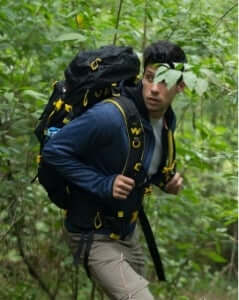
- Luggage Sizes
- Check-in Bags
- Teen's Packs
- Teen's Accessories
- Men's Clothing
- Men's Jackets & Cheaters
- Men's Sweatshirts & Pullovers
- Men's Tracksuits
- Men's Joggers & Trackpants
- Men's Pants & Cargos
- Men's Shorts & Cargo Shorts
- Men's Shirts & Tshirts
- Men's Rain Jackets
- Men's Raincoats
- Men's Rain Pants
- Men's Rain Suits & Ponchos
- Men's Essentials
- Men's Briefs
- Men's Trunks
- Men's Vests
- Men's Socks
- Men's Caps & Hats
- Men's Mufflers & Gaiters
- Men's Gloves
- Men's Thermal Tops
- Men's Thermal Bottoms
- Men's Supermasks
- Women's Clothing
- Women's Jackets & Cheaters
- Women's Sweatshirts & Pullover
- Women's Shirts & Tshirts
- Women's Trousers & Trackpants
- Women's Capris & Leggings
- Women's Rain Jackets
- Women's Raincoats
- Women's Rain Pants
- Women's Rain suits & Ponchos
- Women's Essentials
- Women's Socks
- Women's Caps & Hats
- Women's Mufflers & Gaiters
- Women's Gloves
- Women's Supermasks
- Teen's Clothing
- Teen's Essentials
- Men's Shoes
- Hiking & Trekking
- Even Terrain Running
- Travel Sandals
- Women's Shoes
A Guide to Kashmir's Great Lakes Trek: Routes, Highlights, & Tips
A guide to the kashmir great lakes trek: routes, highlights, and tips.
Located in the heart of the Himalayas, the Kashmir Valley is a stunning example of Mother Nature's unmatched artistry.
Among the myriad of treasures that this picturesque region holds, the pristine alpine lakes stand out as jewels adorning the mountains.
This blog will take you on a virtual tour of the beautiful lake treks in Kashmir, a destination that is a true paradise for outdoor enthusiasts.
Every lake trek in Kashmir is a symphony of natural beauty, from the tranquil shores of Gangbal Lake to the hidden gems like Tarsar and Marsar.
Top 8 Lake Treks in Kashmir 2023
1. tarsar marsar trek.
Route: The trek usually starts from Aru Valley and passes through Lidderwat, Shekwas, Tarsar Lake, Sundersar Lake, Marsar Lake, and ends at Homwas.
Duration: Approximately 7-8 days
Difficulty: Moderate
Highlights:
- Scenic meadows, alpine lakes, and panoramic views of snow-capped peaks.
- The twin lakes of Tarsar and Marsar, each with its unique charm.
- Camping at the serene Sundersar Lake.
- Water sources with pure water are limited, so carry sufficient drinking water.
- Wear appropriate trekking gear and carry a good-quality backpack.
2. Gangbal Lake Trek
Route: The trek often starts from Naranag and passes through Trunkhol, Satlanjan, Kolsar Lake, and Gangbal Lake.
Duration: Around 7 days
Difficulty: Moderate to challenging
- Views of Harmukh Peak, one of the highest peaks in the Pir Panjal range.
- The pristine Gangbal Lake is surrounded by meadows.
- Camping at high-altitude locations with stunning night skies.
- Check weather conditions before embarking on the trek.
- Pack warm clothing like winter jackets, cold-weather trekking pants and a good quality sleeping bag.
3. Vishansar Lake Trek
Route: The trek starts from Sonamarg and goes through Nichnai, Vishansar Lake, Krishansar Lake, Gadsar Pass, and ends at Satsar.
Duration: Approximately 5-6 days
- Vishansar Lake is surrounded by lush green meadows.
- Views of Krishansar and Satsar Lakes.
- Gadsar Pass offers breathtaking panoramic views.
- Carry a good camera to capture the scenic landscapes.
- Stay hydrated and take regular breaks for acclimatization.
4. Sheeshnag Lake Trek
Route: The trek often starts from Pahalgam and goes through Aru, Lidderwat, Sheeshnag Lake, and ends at Tarsar Marsar.
Duration: Around 4-5 days
- The mesmerizing Sheeshnag Lake.
- Picturesque landscapes of Aru Valley.
- Exploration of Lidderwat and its natural beauty.
- Plan your trek during the favourable weather season.
- Ensure proper permits for the trek.
- Engage with local guides for a better understanding of the terrain.
5. Gadsar Lake Trek
Route: The trek starts from Sonamarg and passes through Sheeshnag, Vishansar, Krishansar, Gadsar, Satsar, Gangbal, and ends at Naranag.
Duration: Approximately 8-9 days
Difficulty: Challenging
- Views of multiple high-altitude lakes.
- Gadsar Lake is surrounded by snow-capped peaks.
- Varied landscapes, including meadows, valleys, and rocky terrain.
- Obtain necessary permits for the trek.
- Pack essentials like a first aid kit, high-energy snacks, and extra layers.
- Respect the local environment and wildlife.
6. Krishansar and Satsar Lakes Trek
Route: The trek starts from Sonamarg and passes through Nichnai, Vishansar, Krishansar, Gadsar, Satsar, and ends at Gangbal.
- Krishansar and Satsar Lakes are surrounded by alpine meadows.
- Gadsar Pass offers panoramic views of the Great Lakes.
- The pristine Gangbal Lake at the end of the trek.
- Check the trekking regulations and obtain necessary permits.
- Stay in good physical condition and acclimatise properly.
- Pack lightweight but warm clothing for the varying weather.
7. Gulmarg Apharwat Peak Trek
Route: The trek starts from Gulmarg and ascends to Apharwat Peak.
Duration: 2-3 days
- Spectacular views of the Pir Panjal range.
- The Meadows of Gulmarg offers a scenic start to the trek.
- A variety of flora and fauna along the trail.
- Check the availability of the trek route and weather conditions.
- Gulmarg has its charm; consider exploring the town before or after the trek.
- Hire experienced local guides for safety.
8. Nundkol Lake Trek
Route: The trek usually starts from Naranag and goes through Trunkhol, Satlanjan, Kolsar Lake, Gangbal Lake, and Nundkol Lake.
- The pristine Gangbal Lake and its tranquil surroundings.
- Nundkol Lake with its clear blue waters.
- Scenic landscapes and views of Harmukh Peak.
- Be prepared for weather changes.
- Carry sufficient water and energy snacks.
- Respect the local culture and environment.
5 Must-Haves on Kashmir Lakes Treks
- Good Hiking Boots
Get yourself a decent pair of waterproof hiking boots with sufficient ankle support.
- Dressing for the Weather
Layer up to accommodate a range of temperatures. Pack a hat, sunscreen, thermal layers, clothing that wicks away perspiration, and a waterproof outer layer like down jackets.
Pick a rucksack that fits all your stuff comfortably and can withstand the elements. Don't forget to include the basics like water, snacks, and other personal items.
- Water and Hydration System
Carry a reusable water bottle or a hydration system. It is especially important to drink plenty of water while trekking at high altitudes.
- First Aid Kit
Bandages, antibacterial ointment, painkillers, blister treatment, and other personal medications should all be in your emergency first aid box.
Summing It Up
As we draw the curtains on this comprehensive guide to the Kashmir Great Lakes Trek, you should be finding yourselves at the intersection of awe-inspiring landscapes, cultural richness, and a great spirit of adventure.
The routes we've traversed, the highlights we've uncovered, and the tips we've shared collectively weave a tapestry for unforgettable treks in future.

.webp)
Kashmir Great Lakes Trek
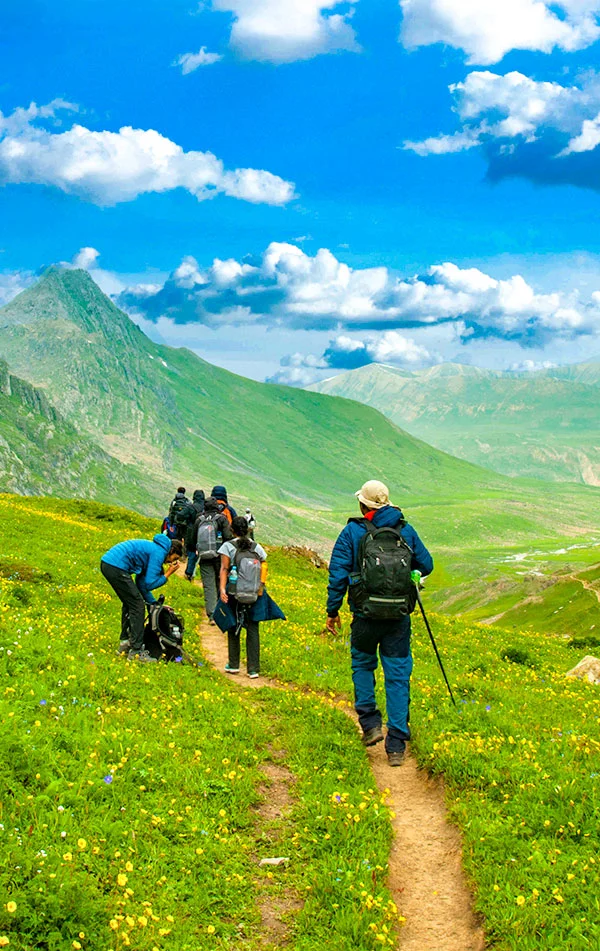
Kashmir | India
Max Altitude
Trekking Km
Moderate to Difficult
Get in Touch with Our Trek Expert
17300 /person $ /person.
- September-2024
- +5% GST (goods and services tax).
- Services Shitkadi camp to Naranag.
- Meeting Point ( Pickup/ Drop Point ): Nishat Garden Near the Parking Area.
- Reporting Time : 12:00 pm
- Drop Time : 6:30 pm to 7:30 pm (Timings are subject to change based on weather and road conditions).
- Please reach Srinagar a day before to avoid any delays.
Insurance 280
- Insurance is mandatory.
- Non-Indian rates are slightly higher. Trek coordinator will provide balance payment link post-booking.
- Get insurance through us or elsewhere. If not through us, email for a refund after booking.
- Cancellation 4 or more days before the start of the trip results in a 100% cash refund.
- Cancellation less than 4 days from the start of the trip results in no refund.
Transport 1700
- Transportation from Srinagar to Sonamarg & return is optional.
- Choose add-ons during booking. If missed, log in and add them later.
- Book transportation at least 10 days before the trek.
- Cancellation less than 4 days from the start of the trip results in a 50% cash refund.
- Cancellation after the trip date does not qualify for a refund.
Offload 2100
- Backpack offload is optional.
- Book off-load at least 10 days before the trek.
- For offline bookings at the base camp, a convenience fee of Rs. 2400 applies.
- Cancellations made before the trip date will receive a full refund.
For more information. Please complete this form.
Trek Name: Kashmir Great Lakes Trek
Adventure Type: Trekking
Base Camp: Sonamarg
Season: Monsoon |
Month: July | August | September |
Country: India
Altitude: 13750 Ft.
Grade: Moderate to Difficult
Rail Head: Jammu
Stay: Camping (Twin sharing) & Hotel/Guesthouse
Food: Meals while on trek & at Hotel/Guesthouse (Veg & Eggs)
Location: Kashmir
Distance: 72 Km.
Trail Type: Cross over trail | Start in one valley, traverse the pass, and ends in another valley.
AirPort: Srinagar (sheikh ul-alam international)
The Kashmir Great Lakes Trek is in no need of an introductory treatise. It presents the proem in itself. You can draw a preface of it by just hearing its name. Kashmir is a wonderful place and if you are on a Himalayan trek you are bound to taste the natural beauty and adventure. The trek to the Kashmir Great Lakes offers a lifetime of experience of memories that are so wonderfully reminiscent. The tranquil silence of the Kashmir lakes and their virgin beauty is spellbound. Apart from the lakes, even the barren milky snow-clad mountains stand out in might and pride.
The location of this trek is Kashmir, also known as the paradise of the earth. The trek duration is around 7-9 days and this trek is often graded as moderate in regards to the trekking challenges. The elevation circles 13750 feet and the distance paths are approximately 63 km. On such a fulfilling trek you will learn so much about yourself- in a trifecta – physically, mentally, and emotionally.
For a trekker, nothing can replace and prepare him for those paramount and conflicting emotions about whether his body will take so much strain and whether he will make it or not. But the joy of reaching the destination is obvious. This trek will always be happy and a cherishing trek for the trekkers that comes in handy with a few preparations.
As the trek to the Kashmir Great Lakes Trek demands physical fitness, you must take good care of your health, shape yourself well and be fit and fine. Trekkers can train themselves by working out regularly in the gym along with running, walking on an incline, cycling, cross-training, and stretching on a daily basis. Along with physical health mental fitness is important equally.
Coming to the details of the trek, it generally starts from almost 3 km out of Sonamarg, on the Srinagar road. You can find a few dhabas on your way. Its better for the trekkers to pick up short eats here for the next trace of a dwelling place will be at Naranag which would probably mark the end of the track.
A few of the trail and the trek enters a green meadow, overlooking the Sonamarg town. At the top of the meadows, trekkers reach the starting line of Maple and Pine trees. What follows is a lovey-dovey deep dense forest of Maple trees. Such an experience has always been unique to this trek in India.
You will always be amongst the meadows throughout this trek. The best time to enjoy the Kashmir Great Lakes trek is between June and September as the greenery and the blooming flowers are at their best during this calendar period. Its so that a beginner in trekking can also join this trek.
Trailing through the Maple trees uphill, trekkers can enjoy the crystal clear view of the nearby villages downhill and especially the Sonamarg village. Every bit of nature nestles to make a wonderful picture. From here the trail slopes down into yet another meadow lined by the Silver Birch trees and a few shepherd huts. Massively tiny brooks struggling through the meadows and snowy peaks of small mountains mark the land of Shekdur. Shekdur is the only campsite with trees on this trek. It is therefore an add-on to your clicks. The suns rays piercing through the forest, make it a nice show of dark and light. Further, the trail climbs back into a river valley which is the beginning of Nichanai. You have entered into a wide valley encompassed by the peaks.
After crossing a tunnel-like Nichinai pass followed up by miles of spreading meadow and the cascading waterfall comes the Vishansar Lake. The first impression that the lake imposes upon the trekker is its larger-than-life size and snow-clad mountain peaks surround the azure lake waters. It is been followed up by the Kishansar Lake which is only at a distance of 1.2 km. It has a big meadow stretching by its side. The trail follows up through a ridge. You can see the loveliest view of the two lakes that you have just crossed together from the Gadsar pass which is the highest point of this trek.
Then the time comes to descend. On the way back, the eye captures the view of Yamsir Lake, the nameless lake, and the Gadsar Lake which are all connected by streams. Further, you will come to a place called Maengandob where a few deep craters are found. The landscape ahead is magnificent as you get to visit Satsar Lakes-collection of seven Lakes and further the twin lakes among which the bigger is the Gangabal and the smaller one is Nundkol. At you arrive at your last destination, Naranag and you are greeted with awe-inspiring glaciers, meadows as well as mountain peaks.
The trek to the Kashmir Great Lakes Trek will provide the trekkers with a perfect flavour of all hues of the Kashmiri terrain- innumerable meadows, snow-clad glaciers, pinnacles, passes, rocky barren lands, and gurgling streams. The trail to the Great Lakes is worth trekking. It does justice to all the expectations of a trekker.
While trekking, trekkers must be equipped with the necessary equipment. Apart from the professional trekking gear including a pair of trekking shoes, and a trekking pole is important specifically. Trekkers must never compromise with their body requirements. Its better to understand your bodys needs and not proceed under peer pressure if you don’t feel well. Keep your luggage as light as possible. It will be in your comfort.
- Who can Participate
- Important Links
- How to Reach
- Trek Essential
Who Can Participate
- Age; 15 years.
- Experience of any high altitude trek, at least 1 treks of 4,000m/13,100ft.
- The climber must be fit and have sufficient stamina to cover 6 km of distance in 35 minutes without stress.
- The climber should be able to carry a 12-16 kg backpack.
Special Offer
- Make a single payment and trek the number of times you want.
- If you book a trek with Trek The Himalayas and cannot complete it, or if you've successfully completed the trek and wish to do it again, you can repeat it multiple times at no additional cost.
Terms and conditions
- This offer is non-transferable.
- This offer is valid for Trek The Himalayas limited fixed departures.
- This offer is valid for 5 years from the date of booking.
- This offer is not valid if the participant has received a cash refund or voucher at the time of cancellation.
- Participants don’t have to pay for the trek cost but have to pay for transportation and trek permit costs.
To reserve a spot for a trek or adventure program, you can either utilize our online booking form or call us at the provided number. For your confirmation, a deposit must be wired, including the initial payment.
Arrive At Shitkadi camp
- Altitude: 2,600 m/ 8,500 ft.
- Drive Distance: 90 km from Srinagar | approx 3 hrs.
- If booked in advance, TTH can arrange pickup from Nishant Garden, at 12 pm.
- Our campsite is near the Sindh River (Shitkadi Village)
- Since there are no shops around ensure that you have all that you need already
- Remember to carry your ID proof in original and 2 photocopies as we have to submit them at the army check post.
The journey to Kashmir Great Lakes begins from Shitkadi Village, which is a little ahead of Sonamarg and about a 3-hour drive from Srinagar. TTH representatives will pick you up from Sonamarg and drive all the way to Shiitkadi, where you will rest for the night before beginning your trekking adventure the next day. Before you begin your trekking adventure, you will spend the day in the beautiful surroundings of Shitkadi Village. You can spot some of the great mountain peaks like Kolahoi, Tribal, Machoi, Amarnath Peak, and Machoi Glacier. The view en route to the campsite is very scenic and all along the route, you will see the vast expanse of grasslands and meadows on either side of the road. The stay is arranged at Shitkudi Campsite. There will be a briefing session in the evening before dinner. Dine early and give your body enough rest to begin your trek tomorrow.
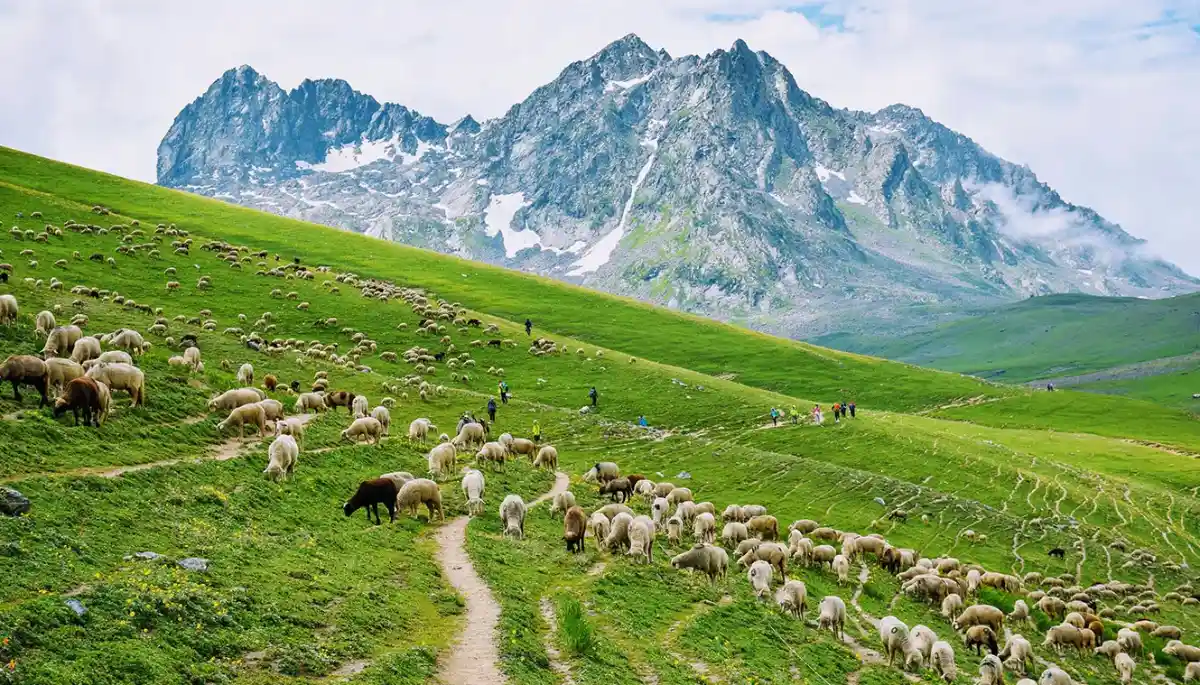
Shitkadi camp To Nichinai Via Shekdur
- Altitude: Nichinai 3,500 m/ 11,500 ft. Shekdur 3,350 m/ 11,000 ft.
- Trek Distance: 11 km | 8 hrs.
- Altitude Gain: 900 m/ 3,000 ft.
- After breakfast, we trek to Nichinai via Shekdur.
- The trail takes you through meadows, and dense forests with Maple, Pine, and Bhoj trees.
- After approx. half an hour, we get to an army check post where we have to submit our ID proofs.
- While you are at it, you can enjoy an awesome view of the Sonmarg Valley or the Thajiwas Glacier
- The trek from Shitkadi to Shekdur goes through thick forests of pine trees and will take approx. 2 and a half hours
- At Shekdur, you can indulge in instant noodles and an omelet if you wish to.
- We follow the Nichinai stream as we trek from Shekdur to Nichinai.
- We have lunch at the Nichinai stream.
3 hours ascent followed by 1 hr descent and finally a gentle ascent to Nichinai (6 hrs, 9 km).
The trek starts 3 km out of Sonamarg, on Srinagar Road. Exactly at the 3 km mark, spot a lone Dhaba on the right. The place also sells packaged water, biscuits, etc., and is your last place to pick up any snacks or little bites. The next trace of civilization can be spotted at Naranang after the trek.
A jeep track diverts to the right off the main road at the shop. The track goes down to the level of the Sindh River that flows in between the mud track and the main road. The trekking trail starts along the track but quickly diverts higher up. 10 minutes into the trek, the trail bends and enters a green meadow. The meadow directly overlooks Sonamarg town. In half an hour, you reach the top of the meadow from where tree lines of Maple and Pine start. Once you reach the tree line, the trail descends until a tiny brook and then climbs up again and what follows next is a lovely dense forest of Maple trees. Walking on green beds of grass amidst the Maple cover is an experience unique to Kashmir in India.
For the next hour and a half, the trail winds up through Maple trees. Stick to the trail that goes in an uphill direction as the one heading down diverts into the nearby villages. Occasionally, the trees give way to clearings. Turn around and delight in the spectacular view of the Sonamarg Valley that gets bigger and fuller as you keep gaining altitude. The Maple cover accompanies you to the top of the ridge and on one side a meadow gently slopes down. Spend a few moments on the ridge, enjoying the view of Sonamarg and the neighbouring Valley. The streams, the meadows, the pines, and the towns nestled together make a wonderful picture. The climb now gradually goes downhill as the trail slopes down towards the meadow that is lined with Silver Birch trees and a few shepherd huts. The carpet of green rolls down from the treeline all the way to the end of the 40 ft wide meadow. There are a couple of small brooks that cross the meadow, which can be your source of water. On your right, you can see a small group of peaks covered in snow. You are now in Shekdur. If you wish to keep your trek short for the day, you can also opt for pitching your tent here. From the road head, it takes 2 1/2 hours to reach Shekdur meadows, it will take about half an hour more if you decide to end your trek at the edge of the meadow.
The Shekdur Campsite is surrounded by Bhoj trees on all sides and this is the single such campsite that has tree covers thus this is a good spot to take some Instagram-worthy photographs. If you have started from Srinagar in the morning, make Shekdur your first camp. The next campsite Nichinai is at least 2 more hours away.
If you started from Sonamarg then Shekdur is just three hours away which makes it too early to camp. Having lunch at Shekdur campsite head to Nichinai campsite. The meadows of Shekdur stretch for half an hour. The gentle descent of the meadow now ends in forests of Bhoj or Silver Birch. Take the trail that goes in the middle of the forest and continue to descend gently. Watch out for sun rays making their way in between the thick foliage making it a nice show of light and dark.
In 45 minutes, you reach the end of the Birch trees and the trail goes down and climbs back into a river valley. The River Valley is the beginning of Nichinai. The trail is now along the right bank of the river going upstream. Look behind to see the snow-clad peaks of the Sonmarg Valley. You are now in a wide valley enclosed by mountains on either side. The river, which joins the Sindh eventually flows with speed through the valley. The first 30 minutes is over rocks and if you are taking mules, they will walk very slowly over here.
An hour more into the river valley, green patches devoid of rocks open up. The river valley widens and you can see the green meadow widening in between the two mountain ranges. Far ahead lie triangular twin snow-clad peaks. At Nichinai campsite, find a clear spot to pitch your tents, ending the first day of the trek.
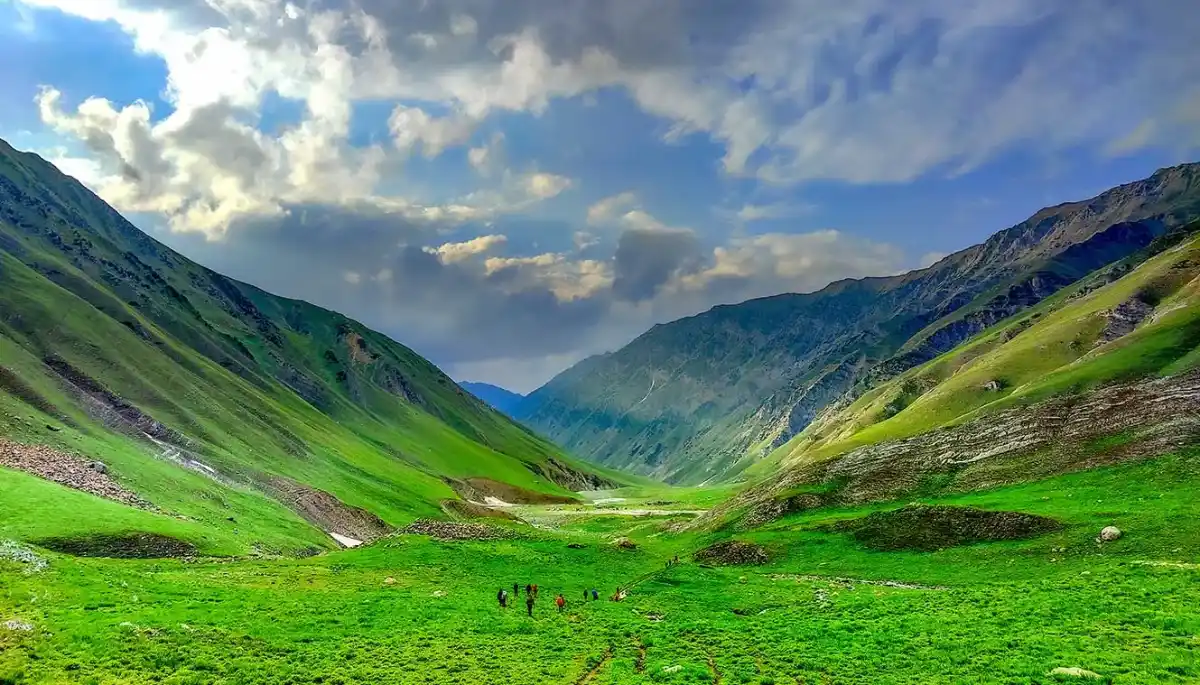
Nichinai To Vishansar Lake via Nichinai pass
- Altitude: Vishansar 3,650 m/ 12,000 ft Nichinai pass 4,000 m/ 13,100 ft.
- Trek Distance: 12 km | 7 hr.
- Trek from Nichinai to Nichinai Pass is approximately 1 and a half hours ascent. At the top of Nichinai Pass, you can get the BSNL network, which is the last point under the mobile coverage area.
- From Nichinai Pass to Vishansar there is a descent
- At Vishansar campsite lunch will be offered.
- We can visit Vishansar Lake, which is just 15-minute walk from the campsite
- The first lake of the trek and one of the most beautiful ones
- If the trek is in July, the lake will be frozen. Otherwise, we can go fishing at the lake, with the permission from Srinagar fishing department.
- Vishansar is visited by hoards of sheep and their shepherds who always have some interesting stories to tell.
- A campsite is a unique place with open ground and you can play volleyball, cricket, etc.
- Beware of dogs at the campsite.
Moderate climb to Nichinai Pass (13,000 ft). Small descent followed by a long flat meadow walk ending near Vishansar Lake (12 km, 6 hrs).
We start the day early around 7 or 8 in the morning to begin our trek towards the first of the Great Lakes, the Vishansar Lake. The day's trek is more or less a long walk on the alpine grasslands of Kashmir. Start your trek from Nichinai to Nichinai Pass, which is visible from the campsite. Half an hour into the walk and you have to cross the gurgling stream to reach its left bank. The trail starts ascending here and for the next one hour, you will climb up gradually to the Nichinai Pass. The Nichinai Pass is the highest point in today’s trek and is located at an altitude of 13,100 ft. From the pass, it’s a small descent and then a flat walk on the meadow all the way to the Vishansar Lake.
As you continue climbing the Pass, you will see the lake down below at the foot of the mountains, it appears to be a small deep-blue enclosure. The trail that you are walking on now is not the original ridge and it will turn inwards two times before you arrive at the Nichinai Pass. The Nichinai Pass is like a big tunnel and from the top, you can observe the Sonamarg Valley down below. BSNL network is erratic here and this is the last point where you will get any network. The next traces of the network are available when you have moved past Gangabal. On the left of the pass lies the mighty peaks of the Himalayan region, whereas on the right side, there are no mountains but the ground rises up. While some may find the climb to the Nichnai Pass a little strenuous as it is a straight climb, however, there is good news as the trek post the pass is a downward climb. The trail from the pass descends rapidly and in about an hour, you will reach grassy lands from the rocky area. The meadow is a vast expanse of land spreading far and wide with snow-clad mountains surrounding the entire meadow. There’s another river flowing from the pass into the meadow ahead. To your left, you will also see a big waterfall cascading down and mingling with the river. As you walk on the meadows, you will notice two streams crossing the meadows, stick to the banks of the one on the left, and in about half an hour, you will have to make a stream crossing but be prepared as the water is going to be icy cold.
At the end of the valley, a river flows perpendicularly from left to right and this river actually originates at the Vishansar Lake. The lake is not visible yet as it is a little higher on the top. This is a good place to pitch your tents by the river. After the trek, if you have ample time, you can explore the twin lakes or wait for it until the 6th day. From your campsite, the Vishansar Lake may be about 0.5 km away and about 100 ft high. The Vshnusar Lake is nestled beautifully between 4 mountains and the Kishansar Lake beautifully reflects in the lake waters. The color of the lake changes according to the time of the day and the cloud cover. Before sunrise, the lake is usually colorless, and on a clear day, as the sun rises, the water of the lake starts getting blue on a sunny day, the water of the lake is a deep aquamarine blue. As the sun gets closer to setting, towards the end of the day it becomes a greenish-blue towards the end of the day. This is the first lake you will see on the trek and eventually, you will check other lakes as well. Today we will camp close to Vishansar Lake.
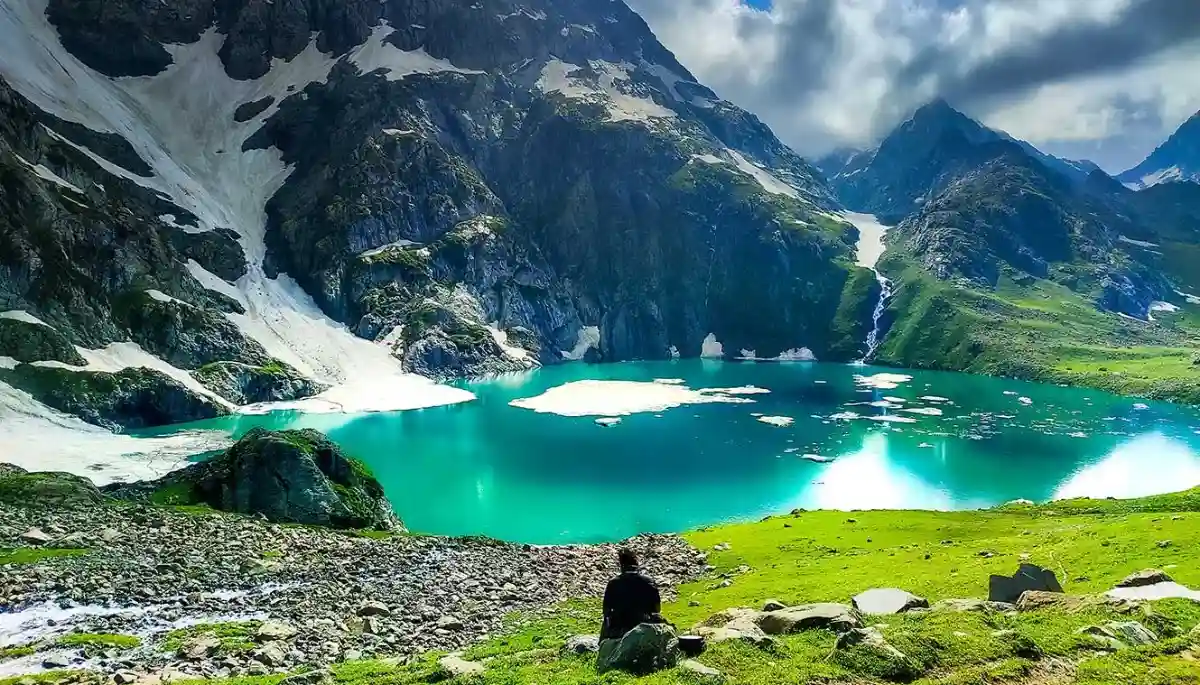
Acclimatization + Rest Day (Conditions Apply)
Day 4 is reserved for acclimatization as you need to give your body enough time to adjust to the conditions of higher altitude. The next lake following the Vishansar lake is the Kishansar Lake. Kishansar is 0.5 km away from Vishansar and is situated at the base of the Kishansar Peak. It will take about 45 minutes to trek to Kishansar from Vishansar. You can take a short acclimatization walk to Krishansar Lake for acclimatization purposes. The trail to the Kishansar Lake climbs from the right side of the Vishansar Lake. On the right-hand side of the Kishansar Lake lies a big meadow which is a perfect spot for capturing photographs.
Note: The use of acclimatization day is subject to change to weather conditions. If the weather is really good then we won't stop for acclimatization but rather move forward to the next campsite. Acclimatization day can be used later at Gangabal campsite.
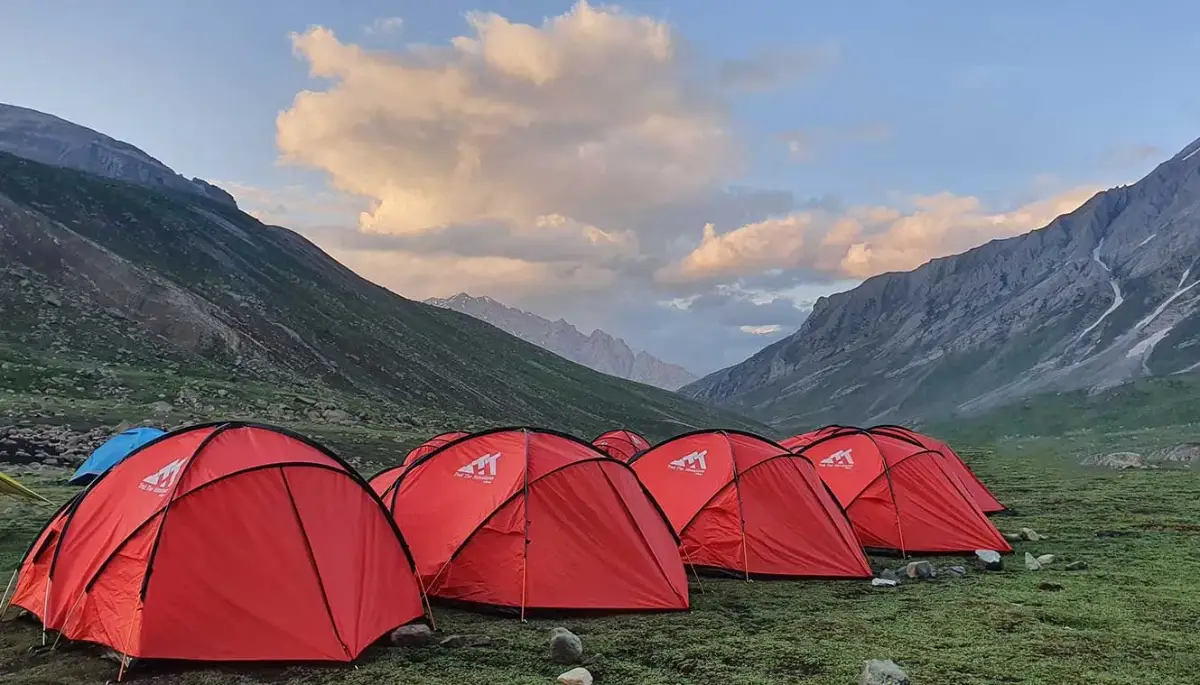
Vishansar Lake To Gadsar Lake Via Gadsar Pass
- Altitude: Gadsar 3,350 m/ 11,000 ft Gadsar pass 4,200 m/ 13,750 ft.
- Trek Distance: 14 km | 10 hrs.
- We start the trek earlier than usual.
- The trail passes from Vishansar To Gadsar via Gadsar Pass, the highest point of the trek.
- From Vishansar, the trail takes a steep ascent to Gadsar Pass.
- We can spot the Kishansar Lake on the way.
- From the Gadasr Pass to the campsite, we descend gradually.
- We can spot the Gadsar Lake en route.
- You might also spot the glacier of the Gadsar Lake.
- After the Gadsar Lake, we will reach the campsite in two hours.
- Just a few minutes before our campsite, we will have another army checkpoint and we will have to share our IDs.
- A packed lunch will be provided during the trek.
Steep 2 hours ascent followed by a steep descent following a gentle walk in the meadows (5 hrs, 10 km)
Today we will trek to Kishansar Lake via Gadsar Pass. From your campsite, you can spot a very thin line traveling through the side of the mountain, this is the trail that you need to follow today. A climb of about an hour and a half will take you to the top of a ridge, another 45 minutes in the climb and you will arrive at a spot that will totally captivate you with an amazing view. There comes a point from which you can see the Kishansar and Vishansar Lakes together in full view. This enchanting view accompanies you all the way to the top of the Gadsar Pass. The Gadsar Pass lies at an altitude of 13,750 ft and is the highest point on today’s trek. Relish the view from the top of the Gadsar Pass for a while before moving ahead. On the horizon line on one side are the snow-clad majesties of the Himalayas and on the other side, a gorgeous valley stretches with 2-3 small lakes visible from the top. The peaks that you can see from the top of Gadsar Pass lie out of the Line Of Control (LOC).
Once you reach the Gadsar Pass, it is a steep descent below and en route, you will first spot the Yamsar Lake, a quaint little lake not very popular among the people. Yamsar Lake can serve as the first landmark that takes you to Kishansar Lake. Continue from Yamsar and about an hour of descent will bring you again to flat grasslands or meadows of the beautiful Kashmir Valley. This time the valley is a bit narrower, the mountains surrounding the meadow on either side. Multi-colored flowers line the green grass of the valley and give it an ethereal look. Once you have arrived at the area near the blue Irises, Gadsar is not far away. Soon you will reach Gadsar, one of the prettiest alpine lakes you have ever seen. Gadsar Lake lies at an altitude of 12,000 ft and the sheer beauty of it will leave you speechless. Gadsar is located at the base of mighty snow-covered peaks. On the one side, you will see snow blocks cascading down to the lake from the mountains, and on the other side, you can see colorful flowers and greenery making for a mesmerizing sight.
Gadsar Lake area will be our campsite for the day, although not many people camp here. If you are camping near Gadsar, make sure that you leave the campsite as clean as you found it. If you do not opt for camping by the lake then continue your climb further downhill to the Gadsar army camp. About half an hour into the trek, the narrow valley opens up and becomes wider, you can see another blue lake on the left-hand side of the valley. As you move on, you are losing a considerable amount of altitude. Continue for another half an hour and you will start noticing the Shepherd huts lining the edge of the valley, keep walking and after about half an hour you will arrive at the army camp. The army camp is a small hut that houses 5-8 army men and to move further beyond the camp, you will have to obtain permits from the army headquarters. The headquarter is located three miles from the checkpoint, follow the tree line into the village to find the HQ. The Gadsar army camp communicates with walkie talkie and the HQ is equipped with a satellite phone. A pro tip: When you are near the army camp, report as quickly as possible as it takes about 2 to 3 hours for the green signal to come through from the headquarters. Your ID proofs will be checked, collected, and recorded before you can proceed further.
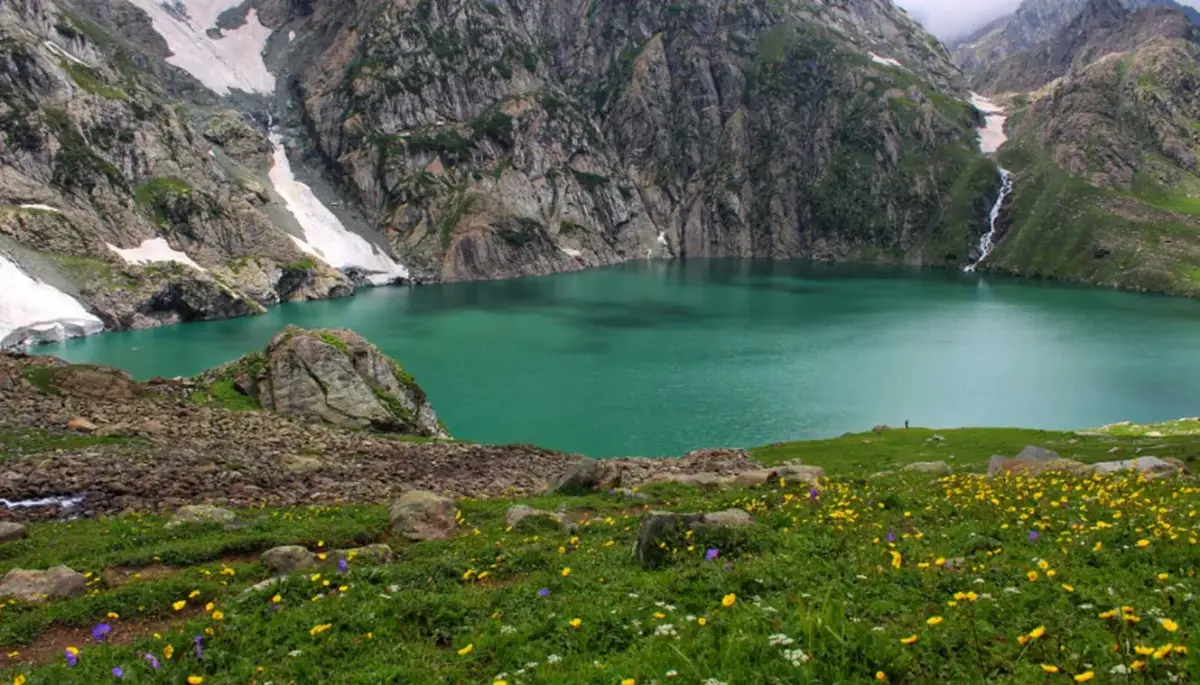
Gadsar To Satsar
- Altitude: 3,650 m/ 12000 ft.
- Distance: 9 km | 6 hrs.
- Mid-July to mid-August, the trail is laden with vibrant flowers.
- We need to share our IDs at another army check post en route.
- Moving on, we see two small lakes which are often mistaken for Satsar Lakes.
- We will visit Satsar twin lakes in the afternoon, which are approx. 1.3 hr apart.
- Satsar Twin Lake is also known as Mengen Top.
- The twin lakes are situated in the middle of two mountains.
Gentle descent or 1 hr followed by a steep ascent for 3 hrs followed by a flat meadow walk.
From the army camp, move left towards the stream, to head up into the mountain. You are now above the tree line and you can see the tree cover and the rivers below you. The climb continues for an hour and a half and you gain an altitude of 1,100 ft. Once you cross past the 11,500 ft mark, the climb transforms into a traverse and bends towards the left leaving the river valley. Once you are out of the river valley, you will be walking on a flat meadow surrounded by mountains on all sides. This section of the trail is called Maegandob and you may also spot a few craters to your right. Soon you will spot first of the Satsar Lakes. The name Satsar translates to ‘Sat’ meaning seven and ‘Sar’ meaning lake. Satsar is a collection of seven lakes which justifies the significance of the name.
If Gadsar Lake was your last camping spot, you can choose to camp here. However, if you camped in the army camp then it is justifiable that you trek a little further and camp near one of the Satsar Lakes. Out of all the lakes, you may find 4 to 5 lakes with water, depending on the season you are visiting Kashmir in. Once you cross the bridge, you will come across another army check post, this will be the third check post on your route, and the same process of checking, collecting, and recording your ID and information will continue. After the procedures are done, you can continue on your trail, and after 10 minutes of walking, you will arrive at the first of the Sat Sar lakes. The lake is set in a picturesque setting with lush greenery and mountain views, and the emerald-blue color of the lake changes hues with time.
Satsar Lake is our camping ground for the day. Find an ideal spot for camping near the lake and pitch your tents. Retire early in your tents and give your body the rest it deserves after a long day of hiking.
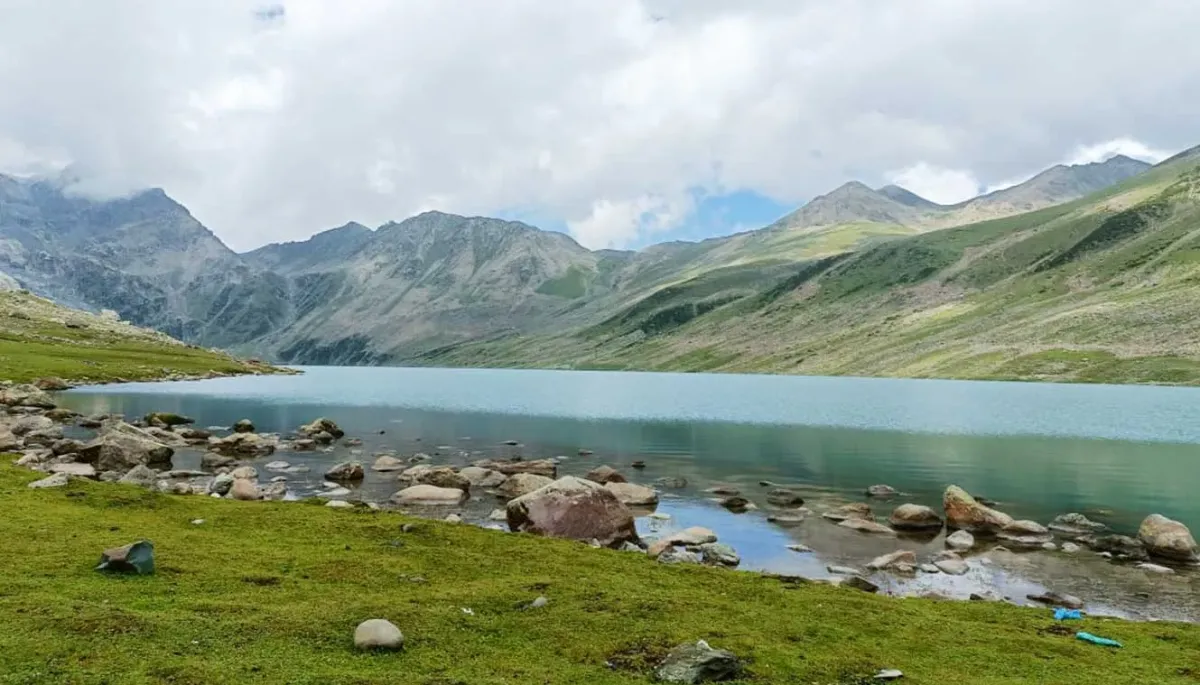
Satsar To Gangabal Twin Lakes Via Zaj Pass
- Altitude: Gangabal 3,500 m/ 11,500 ft Zaj pass 3,950 m/ 13,000 ft.
- Trek Distance: 11 km | Duration: 6 hours approx.
- We walk on rocky paths for approximately an hour and ascend to Zaj Pass
- At the Pass, you can enjoy views of the 4 lakes as well as Mt. Harmukh and its glacier.
- From the pass, we descend to Gangabal Lake and camp at Nandkol Lake
- We visit the Gangabl Lake, which is one of the largest lakes on the trek.
Mild ascent followed by a gradual descent followed by long steep ascent long steep descent followed by gradual up and down walk.
The trail follows the same pattern of going up and down. From our campsite, we will begin our trek and after half an hour of climbing, you will arrive at the biggest of the Satsar Lakes and also the last one in the sequence. The terrain is mostly rocky and filled with boulders. From the lake, the trail keeps descending and continues for about half an hour on this trail and you will arrive at the first forest line. On your right is a ridge and on your left is the forest line. From here, you will again gain altitude through a zig-zag trail to the top of the first ridge you have to climb two more ridges to reach the top and the terrain from the base to the ridge top is barren and rocky. On the opposite side, you can spot some Gujjar huts and some greenery that is in stark contrast to the barrenness of the trail you are on.
An ascent of about two hours will bring you to the top of the third ridge, which is approximately 13,000 ft. From the top of the ridge, you get an amazing view of two lakes with the stream taking water from the higher lake to the lower, which is one of the most wonderful sights to behold. Look more closely and you will see two more lakes on either side, the name of the smaller lake is not known while the biggest lake amidst all of them is Gangabal with its companion Nandkol. The route descends and ascends as you climb down about 1,400 ft to the lake.
There are no water sources on the ascent, during the descent, you will come across a stream, and crossing the wooden bridge, you will arrive at Nandkol your camping site for the night. Nandkol campsite is a popular camping ground and as such a Green Trails Hotspot. You can spot remnants of camping here and there. A lot of people come from Naranang to Gangbal for a weekend outing and that leaves the places with a good deal of waste. Nandkol and Gangbal are also famous fishing destinations, especially trout fish. The Gangbal Lake is at a distance of 20 minutes from Nandkol and a stream connects both of them. We have to cross the stream to reach one lake from the other. Avoid crossing the stream from the lower level, instead, go all the way to Gangbal and you will find a bridge laid out. Gangbal Lake is a big one and circling it will take at least an hour.
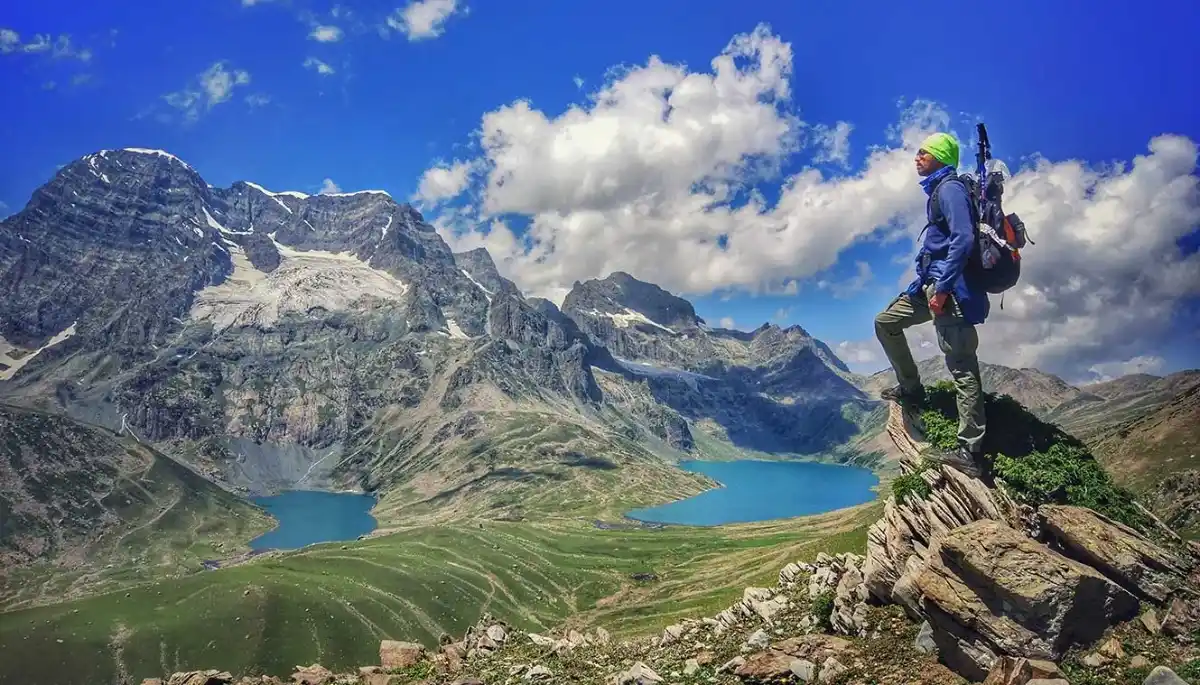
Gangabal To Naranag, Drive To Srinagar
- Altitude: 2,250 m/ 7,450 ft.
- Trek Distance: 15 km | 7 hrs approx.
- The trail is a descent till the last point of the trek - Naranang, so take care of your knees and ankles.
- The trail will pass through pine tree forests.
* Please Note that prepaid SIM cards do not work in Kashmir.
Don’t forget your ID proof in original and 2 photocopies.
On Day 8, you’ll reach Srinagar between 6:30 pm and 7:30 pm. You can book your travel any time after 8 pm.
Gradual descent followed by a steep descent.
Although today is a complete downhill climb the steep descent is going to be hard on your knees so be prepared. From your Gangabal campsite, climb down through the ridge following the stream towards the tree covers. 30 minutes into the trek and the Airtel network begins to catch network, you can inform your home that you have made it down safely! As the ridge ends, you arrive at a flat meadow. From here you can look back and see an impressive image of Harmukh Peak, standing tall and mighty.
An hour into the trek and you will begin to enter the treeline, which mostly consists of Pine trees and you will also begin to see signs of civilization as a log hut comes into view. For about 6 km you will keep making your way in and out of the forest not really losing much altitude. After two-thirds of the distance is covered, the trail begins to descend and it is a really steep descent. The trail here is muddy and well-trodden and through thick pine covers. The last 4 km of the trek is a huge drop where you lose an altitude of more than 3000 ft. You may even spot a lot of trekkers on your way down, they are trekking from Naranang to Gangabal. Naranang slowly comes into sight, a little bit more to go. The last part can be a test of your endurance as it is quite steep. A little further and stone-paved path comes along and in a few minutes, you enter the village of Naranang. From here, you will drive to Srinagar. Expect to reach Srinagar by 6:30 pm. From here on you can book your further travel ahead.
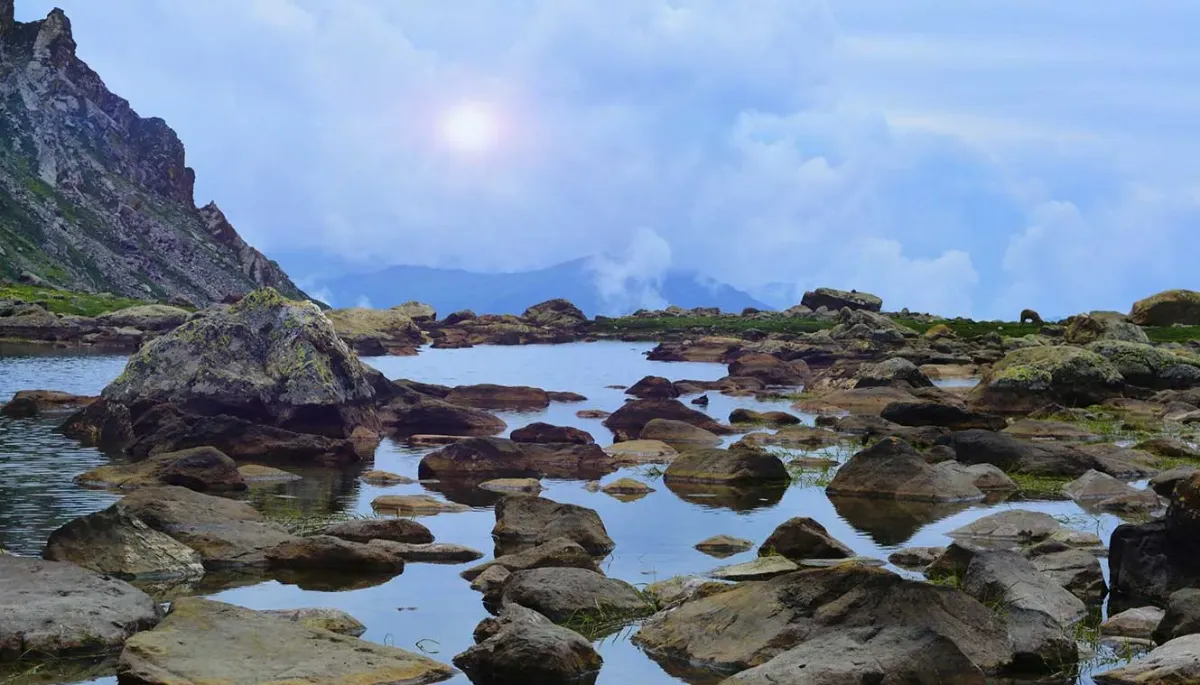
Day-1: Arrive At Shitkadi camp
Day-2: shitkadi camp to nichinai via shekdur.
- Altitude: Nichinai 3,500 m/ 11,500 ft. Shekdur 3,350 m/ 11,000 ft.
Day-3: Nichinai To Vishansar Lake via Nichinai pass
Day-4: acclimatization + rest day (conditions apply).
- You may visit Kishansar Lake, which is approximately 1 and a half km from our campsite.
- If weather is not good we will use acclimatization day at Vishansar or else move towards our next campsite, rest day can be used at Gangbal camp site.
Day-5: Vishansar Lake To Gadsar Lake Via Gadsar Pass
- Trek Distance:14 km | 10 hrs.
Day-6: Gadsar To Satsar
Day-7: satsar to gangabal twin lakes via zaj pass.
- Altitude: Gangabal 3,500 m/ 11,500 ft Zaj pass 3,950 m/ 13,000 ft.
Day-8: Gangabal To Naranag, Drive To Srinagar
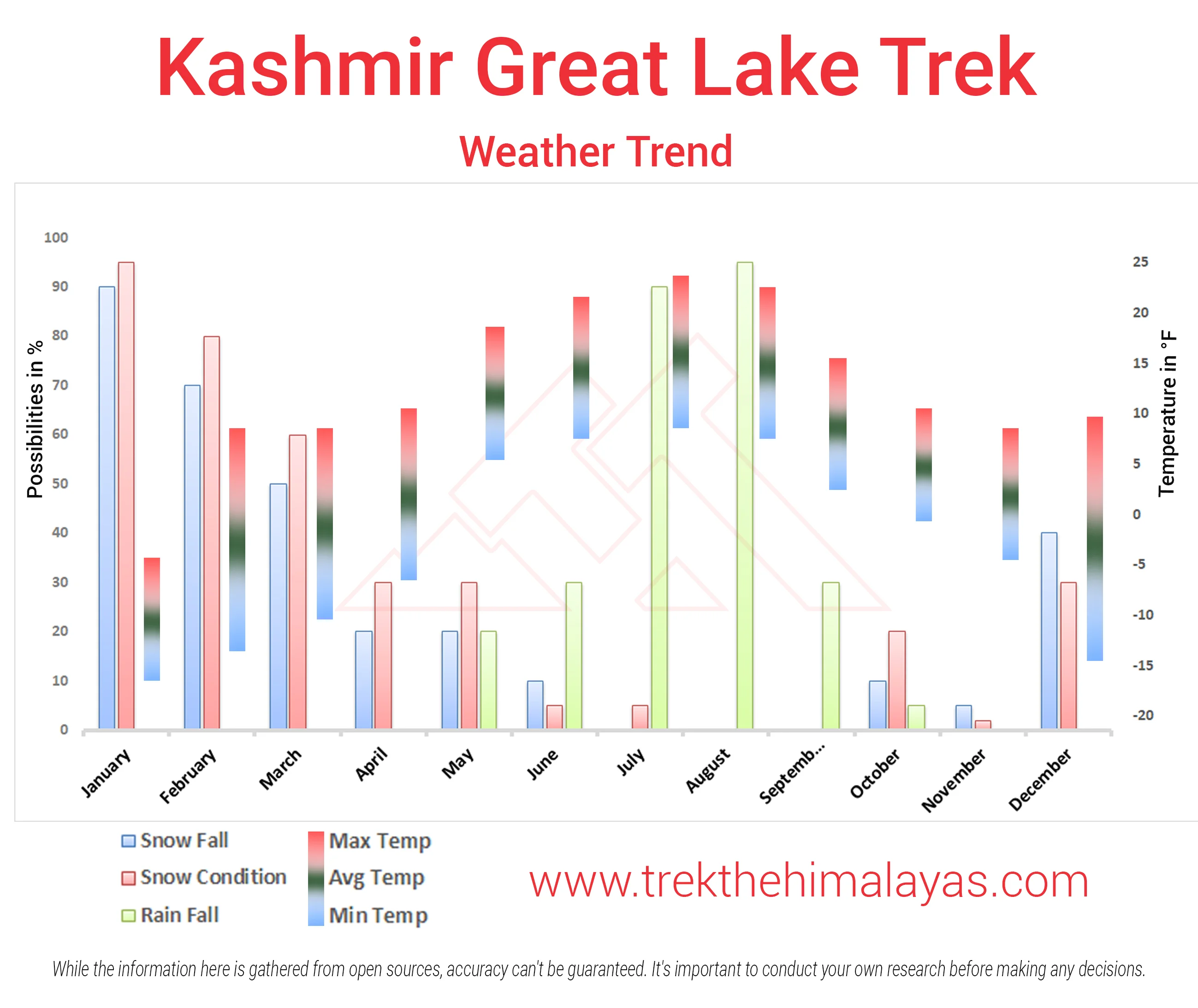
Pulse rate at rest must be in between (60 to 90 beats per minute).
Blood Pressure Reading must be in between (DIASTOLIC 70 – 90, SYSTOLIC 100 - 140 mm Hg).
Respiratory rate at rest must be in between (12 to 20 breaths per minute).
Should not have Liver and kidney issues.
Should not have Diabetes Mellitus, Bronchial Asthma, Heart problems, Hypertension, etc.
No pacemaker implant.
People with Sinus issues, Epilepsy please contact to trek coordinator before booking the trek.
If your BMI is not normal, Please contact our Trek coordinator before Trek booking.
Medical & Disclaimer Form (Mandatory Documents) Click here to download Medical & Disclaimer Form
- Government Employees can avail the benefit of Special Casual Leave (SCL) when they join us for a trekking expedition. As per the rules of the Pay Commission, Special Casual Leave can be availed for up to 30 days in a calendar year for trekking/mountaineering expeditions through a registered organization. Trek The Himalayas is a registered adventure tour operator by the Indian Mountaineering Foundation (IMF) and the Ministry Of Tourism (MOT).
- Trekkers have to apply for leave at least 20 days before the trek departure date.
- This service is exclusive to Indian government employees and is applicable only for treks within India.
- Do mail at info@trekthehimalayas to apply and mention your booked trek date and trek name.
- Junior trekkers (below 15 years) should have a company of parents/guardians.
- Trekkers between 15 to 18 years can come solo with the disclaimer form signed by parent/guardian.
- Medical & Disclaimer Form (Mandatory Documents) Click here to download Medical & Disclaimer Form
Exercise For Moderate to Difficult
Fitness Regime For:
Calculate Your Bmi
Your BMI value is
Congratulations, your body is in good conditions!
Medical & Disclaimer Form (Mandatory Documents) Click Here.
How To Reach
Pick-up information.
- Pick-up location: Nishat Garden near the Parking Area , Srinagar.
- Once you have reached Srinagar, TTH will manage the rest of your travel arrangements, if you have opted for TTH's pick-up service, you can select this option during the booking process by adding it as an add-on.
- Do reach Srinagar one day before your trek date for a safer side.
- Pick-up Place & Time: Nishat Garden near the Parking Area , Srinagar 12:00 noon.
Options to Reach Srinagar
1. If you are planning to fly to Srinagar which is well connected to all major airports in India, you can reach the Nishat Garden in appx 1 hr via taxi from the airport (approx 20 Km).
2. If you’re coming by train, there are two railway stations.
- Jammu railway station is about 260 km away and takes around 8 hours by bus.
- Udhampur is 200 km away and from there, it is a 6-hour bus journey to Srinagar.
3. If you are taking a bus from Jammu, then you have multiple options to take. There are two gates outside Jammu ISBT. You will get shared cabs from both of these gates.
4. If you are reaching the Railway Station, the share cabs to Srinagar will cost between Rs 700 to Rs 1000.
5. Shared cabs are more from the Jammu ISBT compared to the Railway Station. You can travel from the Railway station to the bus stand. The fare of the bus will be Rs 10. The auto will charge around Rs 80 to 120.
Drop-Off Information
- The designated drop-off point is Nishat Garden near the parking area, Srinagar 6 pm.
- If you have to make any arrangements for further travel from Srinagar, do it the next day.
- TTH offers comfortable transportation through Tempo Traveler, Bolero, or equivalent vehicles. If you wish to upgrade your mode of transportation, please contact your trek coordinator for further assistance.
.webp)
1. Insurance is Mandatory.
2. Accommodation (as per the itinerary):
- Camping while the trek (Twin sharing basis).
3. Meals (Veg + Egg):
- Meals while on trek (Veg & Egg).
- Day1 dinner to day8 lunch.
4. Support:
- 1 Versatile base camp manager handles communication and deploys extra manpower in emergencies.
- 1 Mountaineering & First aid qualified professional trek Leader.
- 1 Experienced high-altitude chef.
- Local experienced guides (Number of guides depending on the group size).
- Enough support staff.
5. Trek equipment:
- Sleeping bag, Sleeping liners (if required), mattresses, and Utensils.
- 3 men all season trekker tent (twin sharing), Kitchen & Dining tent, Toilet tent.
- Camping stool, Walkie talkie.
- Ropes, Helmet, Ice axe, Harness, Gaiters & crampons (if required).
6. First aid:
- Medical kit,Stretcher,Oxygen cylinder,Blood pressure monitor,Oximeter,Stethoscope.
7. Mules/porters to carry the central luggage. 8. Clock room facility available at the base camp for additional luggage. 9. All necessary permits and entry fees, up to the amount charged for Indian. 10. Services from Sonamarg to Naranga.
11. Trek Completion Certificate.
1. Food during the transit. 2. Any kind of personal expenses. 3. Mule or porter to carry personal luggage. 4. Emergency evacuation, hospitalization charge, etc.
5. Transportation (as per the itinerary):
- Transport from Srinagar to Shitkadi camp and Narnag to Srinagar (Rs 1,700/-).
6. Anything not specifically mentioned under the head Inclusion.
Things can be provided on demand and availability (participant has to pay extra for these things).
1- Satellite phone/set phone - is a type of mobile phone that connects via radio links via satellites orbiting the Earth instead of terrestrial cell sites like cellphones. Therefore, they can operate in most geographic locations on the Earth's surface.
2- Gamow/PAC HAPO Bag (Portable Hyperbaric Bag) - is a unique, portable hyperbaric chamber for the treatment of acute mountain sickness (AMS), also known as altitude sickness.
3- AEDs (Automated External Defibrillators) - are portable life-saving devices designed to treat people experiencing sudden cardiac arrest, a medical condition in which the heart stops beating suddenly and unexpectedly.
Cancellation terms:
Cancellations prior to 25 days from the start of the Trip
Refund options
- 5% deduction of trek fee
- 100% cash voucher for any trip till one year
- Transfer your trek (any trek, any date) to your friend
Cancellation between 24 days and 15 days to the start of the Trip
- 30% deduction of trek fee
- 100% cash voucher for same trip till one year
- 85% cash voucher for any trip till one year
- Transfer your trek (same trek, any date) to your friend
Cancellation between 14 days and 10 days to the start of the Trip
- 50% deduction of trek fee
- 80% cash voucher for same trip till one year
- 70% cash voucher for any trip till one year
- Book the same trek, in the same season, with any other batch
Cancellation less than 9 days to the start of the trek
- No cash refund
- 20% cash voucher for the same trip till one year
- 10% cash voucher for any trip till one year
- Transfer your trek (same trek, same date) to your friend
Note- If a booking is made using a voucher or discount code, the policies related to vouchers and discounts cannot be modified.
In the unlikely event that TTH cancels a trek prior to the scheduled departure date:
While it is extremely rare for TTH to cancel a trek, we understand that unforeseen circumstances or natural disasters may occasionally require us to do so before the scheduled departure. These circumstances could include continuous rain or snow, thunderstorms, snowstorms, landslides, floods, earthquakes, or any other natural calamity that poses a risk to the safety of our trekkers. Additionally, unforeseeable events such as local riots, curfews, pandemics, lockdowns, government orders, or any similar situations that compromise the safety of the trekking experience may also necessitate a cancellation.
In the event of such a cancellation, TTH will provide you with a voucher equivalent to the amount you paid for the trek. This voucher can be redeemed for any of our treks within the next year, allowing you to still enjoy an adventure with us at a later date.
The issuance of a voucher is not applicable in situations where you are required to descend from the trek for any reason. The trek leader may make the decision to send you down from the trek due to factors such as insufficient fitness level, symptoms of Acute Mountain Sickness (AMS), high blood pressure, exceeding the designated turn-around-time, health concerns, or if you are found smoking, drinking, or violating the rules set for the trek. In such cases, the provision of a voucher does not apply.
In the rare event that TTH shifts a trek:
We would like to emphasize that weather conditions in high-altitude areas are highly unpredictable and can undergo sudden changes at any time, irrespective of the day. Additionally, circumstances beyond our control, such as natural disasters, political unrest, pandemics, and lockdowns, may impact the feasibility of conducting a trek. In cases where we are unable to proceed with an event due to such circumstances that are beyond our direct control, we will make every effort to provide you with an alternative trek that is safer and more suitable.
In such situations, we will issue a voucher to offset the cost difference between the originally scheduled trek and the alternative trek. This voucher can be redeemed at any time within one year from the date of issue. Please note that a refund fee or reimbursement of the cost difference is not applicable in these cases.
- Change of trek batch is dependent on the availability of seats in the batch
- In case of transferring a trek to a friend, he/she should satisfy all the mandatory requirements put forward by TTH
- TTH holds the right to change/cancel the policies, without prior notice
- Cash refund is applicable only in case of bookings made without using any promotional offer code or vouchers
Cash Voucher Terms:
- This is a non-transferable voucher
- The voucher cannot be merged with any other offer of Trek The Himalayas
- The voucher is valid for Trek booked directly with Trek The Himalayas in India
- To avail the voucher please use your register phone number or e-mail id
- All the other Terms of booking a trek with Trek The Himalayas are applicable to the voucher
- Trek The Himalayas holds rights to add/remove any of the Terms and Conditions without prior notice
Itineraries are based on information available at the time of planning and are subject to change. "Trek The Himalayas" reserves the right to change expedition dates, people or itineraries as conditions warrant. If a trip must be delayed or the itinerary changed due to bad weather, road conditions, transportation delays, government intervention, airline schedules, sickness, or other contingency for which TTH or its agents cannot make provision, the cost of delays and/or other changes are the responsibility of the participant. TTH reserves the right to decline, or accept, any individual as a trip member for any reason whatsoever.
Trek Essentials
PDF Of Trek Essential Download
Frequently Asked Questions(FAQ)
How to register/create an account with tth.
To register with TTH, visit our website - www.trekthehimalayas.com and create your account. To create your account you will need to use your email address and fill in all the details, set your unique password and your account is ready to use.
How to book a trek?
- To book a trek with TTH, you first need to register with us and create an account.
- Choose the trek that you want to do and click on available dates.
- You will land at the login page, fill in the required details.
- Add Participants, choose add-on services click on the Pay now button, choose your preferred payment method, and make the payment. TTH accepts multiple payment options, including credit/debit cards, net banking, and UPI.
- You will receive a confirmation email from TTH with all the necessary details about the trek, including the meeting point, transportation, accommodation, and other important instructions.
- Click Here to watch Video
Made a payment but did not receive any confirmation.
please send an email to us at [email protected] or reach out to the numbers provided in the Help and Support section of your Trek Page. We will ensure that your issue is promptly resolved.
How to book off-load luggage and transportation?
To book services such as off-load luggage and transportation, you can find them listed as add-ons. These additional services can be booked at the time of your initial booking. If you miss booking add-ons during the initial reservation, you can log in anytime and easily book 4 days before the departure date add-ons through the platform.
If I have booked the wrong trek or date, how can I make changes?
In such a situation, please log in to your account and transfer your trek or date to the desired one within 12 hours or drop us an email at [email protected] 10 days before the departure date of the trek. After the initial 12-hour period, any changes will be processed according to the cancellation policy.
I am a beginner and confused which trek to book.
We recommend visiting our "Suggest Me a Trek" page. By filling out the form, our experts will contact you with the best possible trek options based on your preferences and experience level. Alternatively, you can reach out to us via email at [email protected] or give us a call using the numbers provided on our website for personalized assistance and recommendations.
How is family trek different from regular trek?
Family treks differ from regular treks by focusing on ease of difficulty, offering shorter durations for younger participants, Kid-friendly and easily digestible foods, child-friendly activities, maintaining a higher guide ratio for diverse age groups, and implementing additional safety measures for families.
Ideal treks for children.
Family Trek with Kids recommendation Only Dayara Bugyal and Chopta Chandrashila Trek.
Minimum age for children to trek with TTH.
Minimum age for TTH treks is typically 7 years, though this may vary depending on the specific trek.
Can we take children to high altitudes with their guardian?
Yes, you can take a kids to a high-altitude trek with a parent. Discuss with a trek expert before booking a trek.
Can we send kids without Parents/guardian?
- Medical & Disclaimer Form (Mandatory Documents) Click here to download medical and disclaimer form
How to prepare a child for a high altitude trek?
Physical Fitness: Ensure your child is physically fit. Engage them in regular exercise, outdoor activities, and hikes to build stamina and endurance. Hydration: Emphasize the importance of staying hydrated at high altitudes. Encourage your child to drink water regularly, even if they don't feel thirsty. Proper Nutrition: Provide a well-balanced diet with sufficient carbohydrates for energy and foods rich in iron to prevent altitude sickness. Adequate Sleep: Ensure your child gets enough sleep in the days leading up to the trek. Quality rest is crucial for altitude adaptation. Educate on Altitude Sickness: Teach your child about the symptoms of altitude sickness, such as headache, nausea, and dizziness. Encourage them to communicate any discomfort immediately. Appropriate Clothing and Gear: Dress your child in layers to adjust to changing temperatures. Ensure they have appropriate trekking gear, including sturdy footwear. Positive Mindset: Foster a positive mindset. Encourage your child, and let them know it's okay to take breaks when needed. Medical Check-Up: Schedule a medical check-up before the trek to ensure your child is fit for high-altitude activities. Consult with a healthcare professional about any potential health concerns.
Kind of food will be served during the trek for children.
TTH takes special care to provide wholesome and nutritious food for children on treks. Here are some of the foods that are typically served for children: Breakfast: For breakfast, TTH serves a variety of options like porridge, cornflakes, bread, butter, jam, honey, boiled eggs, omelettes, and pancakes. Children can choose from these options to fuel themselves for the day's trek. Lunch: For lunch, TTH serves lunch which includes rotis, vegetables, rice, dal, and salad. The rotis are usually made fresh on the trek and are a good source of carbohydrates. The dal and vegetables provide protein and other essential nutrients. Snacks: TTH provides healthy snacks like fresh fruits, dry fruits, energy bars, cookies, and biscuits to keep the children energized throughout the day. Dinner: For dinner, TTH serves a hot and wholesome meal which includes soup, rice, dal, vegetables, and a non-vegetarian dish (if requested in advance). Children can also choose from a variety of desserts like custard, jelly, and fruit salad. Dietary requirements: If a child has any special dietary requirements, TTH can cater to those needs as well. For example, if a child is lactose intolerant or allergic to nuts, the kitchen staff can make arrangements to accommodate those requirements.
How to choose the right trek?
Choosing the right trek for a beginner can be a bit overwhelming as there are many factors to consider such as distance, elevation gain, terrain difficulty, weather, and time of year. Here are some tips that can help you choose the right trek for a beginner:
1. Determine fitness level: Assess the fitness level of the beginner to understand their physical capabilities. This will help you select a trek that is challenging but not too difficult.
2. Choose a well-traveled trail: A well-traveled trail will have more amenities such as signposts, water stations, and shelter. It is also safer as there will be other hikers on the trail.
3. Consider the length of the trek: For beginners, it is recommended to start with a shorter trek that can be completed in a day or two. This will help them get acclimatized to trekking and build their confidence.
4. Look for gradual elevation gain: Choose a trek with a gradual elevation gain rather than steep ascents. This will make the trek easier and more enjoyable.
5. Check the weather: Check the weather forecast before selecting a trek. Avoid treks during the monsoon season or winter when the trails can be slippery or dangerous.
6. Research the trail: Read about the trail to get an idea of the terrain, altitude, and difficulty level. This will help you select a trek that is suitable for the beginner.
7. Consult with an expert: If you are unsure about which trek to choose, consult our trek expert Mr. Nitin (+91 70600 59773) between 10 AM to 6 PM (Tuesday - Friday). Mr. Nitin will provide you valuable advice and guidance.
Overall, it is important to choose a trek that is enjoyable, challenging but not too difficult, and suitable for the beginner's fitness level and experience.
Can a beginner choose a tough trek?
It is not recommended for a beginner to choose a difficult Himalayan trek. Trekking in the Himalayas can be physically and mentally challenging, especially if you are not used to the high altitude, steep slopes, and rugged terrain. Choosing a difficult trek without the proper experience, fitness level, and preparation can be dangerous and put you at risk of altitude sickness, injury, and other hazards.
If you are a beginner, it is recommended to start with an easier trek and gradually build up your skills and experience. This will help you understand the challenges of trekking in the Himalayas, and also prepare you physically and mentally for a more difficult trek in the future. It is also important to choose a trek that matches your fitness level, experience, and interest.
What is the age limit for a beginner trekker?
There is no specific age limit for a beginner trekker. However, it is important to consider your physical fitness, health condition, and personal interests before embarking on a trek. Trekking in the Himalayas can be physically and mentally demanding, and requires a certain level of physical fitness and endurance.
If you have any pre-existing medical conditions or are above a certain age, it is recommended to consult with a doctor before embarking on a trek. It is also important to listen to your body and take breaks as needed during the trek to prevent exhaustion or injury.
If I am solo, can I join the trek in a group?
Yes, you can join the trek. We have fixed departure groups where you can simply book your trek and we will take care of curating a group.
How does my family get updated about my Trek?
Before you start the trek, it is recommended that you make all the necessary phone calls as during the trek you may or may not receive network coverage, once you come back to the Base Camp, you can reconnect with your family via phone once again. You can share your trek coordinator contact detail with your family members to get the latest updates about your trek batch.
What food can I expect?
At TTH, we provide wholesome and nutritious meals during the trek. The food is vegetarian and includes a variety of dishes such as rice, dal, vegetables, chapati, paratha, pasta, noodles, and soup. We also offer snacks such as biscuits, and salty, and dry fruits during the trek. Special dietary requirements such as vegan, gluten-free, or Jain food can also be arranged if informed in advance.
I am allergic to some foods.
If you are allergic to some foods, you need to let us know in advance so that we can make arrangements accordingly.
How safe is trekking with TTH?
TTH is a trekking company that prioritizes the safety of all its participants, including women trekkers. They have a comprehensive safety system in place, which includes a dedicated team of experienced and trained trek leaders and support staff who are equipped to handle emergency situations and provide first aid.
TTH also takes specific measures to ensure the safety and comfort of women trekkers. They have a separate tent accommodation for women trekkers, female trek leaders, and support staff. They also provide separate toilet facilities for women and encourage a safe and respectful environment for all trekkers.
Moreover, TTH has a strict policy against any kind of harassment and has a zero-tolerance policy towards such incidents. They have a designated Internal Complaints Committee (ICC) to investigate and address any complaints related to harassment or misconduct. Overall, TTH has a good reputation for safety and responsible trekking practices, and women can feel comfortable and safe while trekking with them.
How TTH will manage if I am the only woman in the group?
In case you are the only women in the group, we provide a single sleeping arrangement. Also, during the trek, the trek leader will always remain by your side to provide optimum safety and reassurance.
How can I know that other women are in the batch?
You can reach out to the trek coordinator to inquire about the number of female trekkers and their respective states who have booked the trek. Please note that the trek coordinator cannot disclose personal details of any trekker. Once you've confirmed your booking, a WhatsApp Group will be created for all the trekkers in your batch. This allows you to connect with fellow trekkers before the trek begins.
Can I know in advance, which trek is led by a women Trek Leader?
While many of our treks are led by female trek leaders, however, it is not possible to know which trek leader is assigned to which group. But nonetheless, whether the trek leader is male or female you can be completely assured of your safety and security with us.
Can I trek with periods? If yes, then where can I dispose of the sanitary pad?
Yes, it is possible to trek with periods. However, it is important to take some extra precautions and preparations to ensure a comfortable and safe trekking experience. Here are some tips that can help you trek during your period:
1. Use menstrual hygiene products that you are comfortable with, such as tampons, pads, or menstrual cups. It is recommended to carry enough supplies for the entire duration of the trek.
2. Pack wet wipes, hand sanitizer, and plastic bags to dispose of used hygiene products.
3. Wear comfortable and breathable clothing that allows for easy movement and reduces friction. Avoid wearing tight or restrictive clothing that can cause discomfort.
4. Carry pain relief medication, such as ibuprofen or acetaminophen, in case of menstrual cramps.
5. Stay hydrated and maintain a balanced diet to support your energy levels and overall health.
6. Take breaks as needed and listen to your body. If you feel uncomfortable or experience any unusual symptoms, seek medical attention immediately. It is also recommended to consult with a doctor before going on a trek during your period, especially if you have a pre-existing medical condition or are taking medication.
By taking necessary precautions and being prepared, you can have a safe and comfortable trekking experience even during your period. We provide proper disposal facilities for sanitary pad disposal during the trek.
How will the accommodation be during the trek?
We offer three person tents with twin-sharing for optimum comfort. A woman trekker will share a tent with another woman trekker and if you are the only woman in the group, you will be given a single accommodation for your comfort and privacy.
Are trek poles, Jackets and other equipment available for rent from Trek The Himalayas?
Yes, we do provide gears on rent. You can book it using you TTH account directly.
Who will be with us on the trek from Trek The Himalayas?
Mountaineering qualified Experienced and first aid certified Trek Leader, First Aid Certify local guide, Cook, helpers and supporting staff.
Who can not join the trek?
People suffering from Bronchitis, Asthma, High blood pressure, Epilepsy (got faints), TB , Heart problem or on higher BMI side are strictly not allowed to go on any Himalayan trek. Apart from this if you had any medical history, please let us know.
When it gets really cold can I consume alcohol?
No. Alcohol and smoking isn’t allowed while on trek. It is totally misconception that it will keep you warm. Your body need to acclimatize properly and for that eat properly and drink enough water; these things will keep you warm.
What type of toilet facility is TTH providing at the trek?
Toilet tents provide a convenient solution for answering nature's call in the great outdoors. Dry toilets, in particular, offer a highly sanitary approach. By digging a pit and utilizing mud and a shovel, you can easily cover up your waste. This method ensures cleanliness and hygiene while camping or exploring in the forest.
Remember to pack essential toiletries to complete your outdoor bathroom kit and maintain proper personal hygiene during your adventures. With these practices in place, you can enjoy nature while also respecting it.
How do I manage the negative temperatures on the trek at higher camps? Do I need special jackets?
Layer Up From Head To Toe Eat Full Meals, never sleep empty stomach You can keep warmee (if you’re more susceptible to cold). Use sleeping bag in right way and don’t leave free space in sleeping bag.
For upper body – Thermal layer – T-shirt (full-sleeves) – Fleece T-shirt (for extreme colds) – Fleece layer – Thick Jacket/Down Jacket – Waterproof or Windproof layer (outermost layer, when it is snowing or raining) - For Lower Body – Thermal layer – Hiking pants (normal) or Winter hiking pants
Based on how warm you feel you can skip any of the above layers. Your outer later should be windproof since it is windy at high altitude. The idea behind layering is that the more insulation you have the less cold you feel, and instead of wearing a very thick jacket if you wear multiple layers, your body will be better insulated against the cold.
Do you provide crampon/micro spikes and gaiters?
Yes, we provide micro spikes and gaiters, if required.
What documents need to carry on trek?
Mandatory documents: 2 xerox of ID having address (addhar card/driving license), 2 Passport size photographs, hard copy Medical form signed & sealed by doctor, disclaimer form sign by trekker and high altitude insurance.
If we come prior the trek date, Do you provide accommodation?
No. We don’t but we can suggest you good hotel/Stay nearby pick up location.
Do we get enough water for drinking?
Yes, trekker must carry 2 water bottles 1 litre each so they can refill it at campsite for drinking and keep themselves hydrate.
What kind of shoes we should buy for the trek?
You should buy shoes which has these three features –Good grip, Ankle Support and additional water resistant layers. Generally, we advise Quechua Trek 100, MH 500 and MH 100.
What happens if some members of the team need to turn back before the summit?
No one is forced to go on. There is always enough staff to split the party according to need and regroup later at the camp. Most people have no trouble reaching the highest campsite. If some members decide not to climb the final distance they can wait for the climbers to come back down the same way or take a lateral path to the descent route.
What makes Trek The Himalayas Best Trekking Company in India?
Trek The Himalayas is the safest and most trusted trekking organization in India. Our deep expertise and commitment ensure that each trekker can fully immerse in the Himalayan beauty while experiencing a well-organized and memorable journey. We are proud to be recognized among the best trekking companies in India and have been awarded the PHD Samman Award two years consecutively for Best Adventure Tour Operator . Our founders, themselves are proficient mountaineers and belong to the hilly states of India. At TTH we follow all the safety protocols. Our Trek Leaders are expertly trained in First Aid and Acute Mountain Sickness (AMS) management. The extensive experience is a key factor in establishing us as the best trekking company in India .
What kind of accommodation we’ll get in KGL trek?
We do camping throughout the trek. We provide twin sharing tent all season tent .
What will the temperatures be like during KGL trek?
During trekking day time is always pleasant as temperature stay between 15C-22C throughout the season. At night time, temperature varies between 8 C to 0 C. Our morning, evening and nights are quite cold so you need to be prepared by wearing layers around camp. In early July, high chances of getting snow at Nichnai Pass and Gadsar pass and around. From July mid to August, almost snow melts by July end. And then around August end to September mid expected night temperature around 4 C to 0 C and one can expect snowfall around 2nd week of September. Do expect light shower around evening time.
How do we reach Srinagar?
Pick-up location is TRC: Nishad Garden in Srinagar at 12:00 Noon, TTH will take care of your further travel arrangements. Options to Reach Srinagar: We advise you to reach Srinagar one day before trek date and by flight only. Better to avoid road route. If you are planning to take a bus, you can reach ISBT in Srinagar from any major city. It will take 1 hour to reach Nishad garden from ISBT. If you are planning to fly to Srinagar which is well connected to all major airports in India, you can reach TRC within 20 to 25 minutes via taxi. If you’re coming by train, there are two railway stations.
Where and what time do we have to reach in Srinagar?
Reporting point is Nishad Garden in Srinagar and Reporting time is 12:00 noon on trek date.
Whom should I call once I reach in Srinagar?
We always share driver and vehicle number 1 days prior the trek date, so you can call him on your arrival if you’re having problem with finding vehicle.
How do we reach to basecamp and get back after the trek?
You can take out transport service; do contact your trek coordinator to book transport service. We use Sumo/Bolero/Max/Tavera or equivalent (shared by 6/7 people). We arrange vehicle depending on availability and final batch size.
What is the best time to do Kashmir Great Lakes?
Best time to do Kashmir Great Lakes Trek is July, August and September 2nd week. One can see lush green meadows, alpine lakes and beautiful colourful flowers. To enjoy it’s beauty, it is advisable to plan this trek July and August month. In September time one can see green meadows turning brown and flowers also changes its colour, but still this change in scenery is pleasing to watch.
Is KGL a good trek for a first timer?
Yes, we recommend KGL trek to first timer as well as experienced one. Make sure that you should have good fitness. People suffering from Bronchitis, Asthma, High blood pressure, Epilepsy (got faints), TB , Heart problem or on higher BMI side are strictly not allowed to go on any Himalayan trek. Apart from this if you had any medical history, please let us know.
Is there mobile network on KGL trek?
No network while trekking. Idea, Airtel and BSNL networks available in Sonamarg and after that you will not get any network during the trek. Only post-paid connection works in Kashmir.
Are there any electricity charging points on KGL trek?
There isn’t any charging point on KGL trek. And you need to rely on your power bank or batteries.
Is Trekking pole necessary?
Yes, it is necessary. It is additional support which helps you reduce tiredness and give you strength and balance.
Explore Most Informative Articles on Kashmir Great Lakes Trek
11 best himalayan treks in india witness the himalayan local culture.
Discover the 11 best treks in India and their charming base villages. Jhaka Village on the Rupin Pass Trek clings to a cliff, offering stunning views and rich local culture. Natin on the Dayara Bugyal Trek showcases clear Himalayan vistas and colorful homes. Markha Village on the Markha Valley Trek is remote yet vibrant with Buddhist heritage. Tugasi on the Pangarchulla Trek features lush fields and friendly locals. Osla on the Har Ki Doon Trek preserves ancient wooden architecture and traditions. Sankri, the winter jewel of the Kedarkantha Peak Trek, transforms seasonally from snowy wonderland to blooming paradise. Sonmarg on the Kashmir Great Lakes Trek is a picturesque paradise. Kibber on the Kanamo Trek offers snow-covered arid landscapes and wildlife. Yunam near Keylong is a biker’s haven. Khati on the Pindari Glacier Trek offers Kumaoni culture and forest beauty. Sari on the Chopta Trek provides clear summit views and vibrant rhododendrons. These villages enhance the trekking experience with their unique charm and beauty.
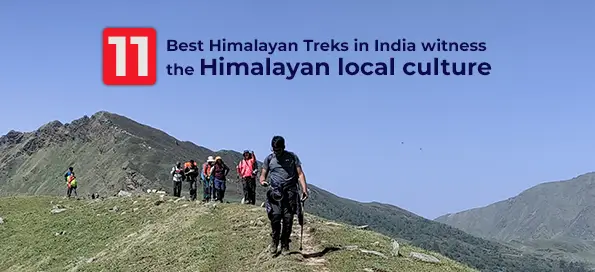
40 Best Himalayan Treks in India for 2024
Discover the 40 Best Himalayan Treks in India for 2024! The Himalayas, stretching across India’s northern frontier, offer a stunning array of trekking adventures suitable for all skill levels. From the iconic Everest Base Camp to the serene Valley of Flowers, each trek unveils unique landscapes, diverse flora, and vibrant cultures. Whether you're seeking challenging climbs, scenic hikes, or cultural experiences, the Indian Himalayas have something for every adventurer. Explore these top treks to embrace breathtaking views, ancient trails, and unforgettable journeys in one of the world's most majestic mountain ranges. Gear up for an extraordinary trekking experience in the Himalayas.
.webp)
Kashmir Great Lakes Trek - Trek The Himalayas
The Kashmir Great Lakes trek is truly a journey through heaven, and Trek The Himalayas invites you to experience this enchanting adventure! For a long time, we had the stunning landscapes of KGL on our minds, captivated by pictures of its pristine, godly lakes shared online. It was just a matter of when our plan would finally materialize. As we embarked on this trek, we were greeted by breathtaking views of emerald lakes surrounded by towering snow-capped peaks and lush meadows adorned with vibrant wildflowers. Each day unveiled new natural wonders, from shimmering alpine lakes like Vishansar and Krishansar to the stunning vistas at Gadsar Lake. Our experienced guides ensured our safety and shared fascinating stories about the region's rich culture and history. The camaraderie we developed with fellow trekkers made this journey even more special. Join us for the Kashmir Great Lakes trek, and create memories in this picturesque paradise with Trek The Himalayas!
.webp)
Six Things about Kashmir Great Lakes Trek
Discover the magic of the Kashmir Great Lakes Trek with Trek The Himalayas, where six unforgettable experiences await. Traverse through verdant alpine meadows that stretch as far as the eye can see, and marvel at the pristine azure lakes that dot the landscape like jewels. Snow-capped peaks provide a breathtaking backdrop, enhancing the trek's visual splendor. Along the way, you'll encounter a rich diversity of flora, adding vibrant colors and life to the scenery. The warmth and hospitality of the locals will make you feel right at home, creating lasting memories of genuine connection. This trek promises an adventure of a lifetime, blending natural beauty, cultural encounters, and the thrill of exploring one of the most picturesque regions in the world. Join us for an experience that will leave you spellbound and longing for more.
.webp)
Explore the stunning beauty of Kashmir with Trek The Himalayas on The Great Lakes Trek. This extraordinary journey takes you through some of the most pristine alpine lakes nestled amidst the majestic Himalayas. As you trek through this breathtaking landscape, you'll encounter a series of sparkling lakes, each offering its own unique charm and tranquility. Surrounded by towering peaks and verdant meadows, the trek showcases the unparalleled natural beauty of the region. Experience the serenity of high-altitude lakes, the vibrant colors of alpine flora, and the awe-inspiring grandeur of the Himalayas. With well-planned routes and expert guidance, The Great Lakes Trek promises an unforgettable adventure that immerses you in the pristine wilderness of Kashmir. Join us to discover why this trek is a must-experience for nature lovers and adventure seekers alike.
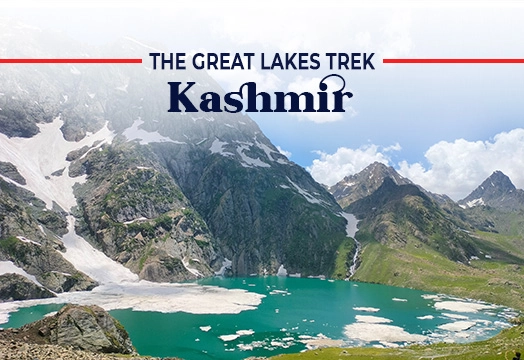
Embark on the idyllic Kashmir Great Lakes Trek with Trek The Himalayas, where each step unveils a new wonder. This mesmerizing trek takes you through pristine alpine lakes, lush valleys, and breathtaking Himalayan vistas. As you journey along the trails, you'll encounter crystal-clear lakes like Vishansar, Krishansar, and Gadsar, each reflecting the surrounding snow-capped peaks. The vibrant meadows, dotted with wildflowers, and the serene valleys create a picturesque landscape that feels like a slice of paradise. The trek offers a perfect blend of adventure and tranquility, allowing you to immerse yourself in the natural beauty and serenity of Kashmir. Whether you're a seasoned trekker or a nature lover, the Kashmir Great Lakes Trek promises an unforgettable experience, showcasing the majestic beauty of the Himalayas in one of India's most stunning regions. Join us for an adventure that will leave you enchanted by the pristine landscapes and timeless charm of Kashmir
.webp)
2017: A Year of Adventure
Ready for a thrilling year with Trek The Himalayas? Here's your adventure guide: Start with the Brahmatal Trek in January, featuring snow-clad peaks and panoramic views. February brings Skiing in Auli, where adrenaline-pumping slopes await. In March, embark on the Nainital Corbett Cycling adventure through stunning mountain trails. April offers the Bhrigu Lake Trek, an easy high-altitude journey with breathtaking scenery. May's Rupin Pass trek takes you across Uttarakhand and Himachal Pradesh. June is perfect for the Pangarchulla Trek, offering views of Dronagiri and Parvat peaks. Discover the Kashmir Great Lakes in July, with seven sparkling alpine lakes. August showcases the vibrant Valley of Flowers and Hemkund Sahib. September features the Hampta Pass, with contrasting valleys and ranges. In October, the Goechala Trek offers stunning views from 16,200 feet. November's Winter Kuari Pass is rich in historical significance, while December's Kedarkantha Trek is ideal for beginners on their first winter trek.
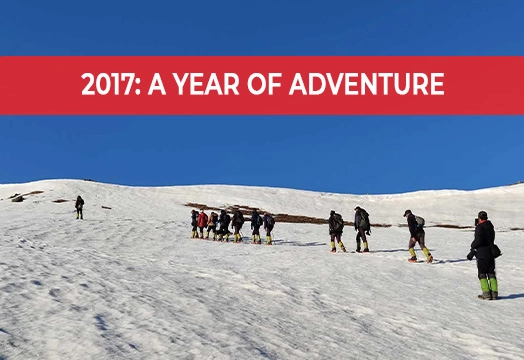
Embark on the picturesque Kashmir Great Lakes Trek with Trek The Himalayas, a journey through the heart of the Himalayas that promises breathtaking beauty and unforgettable experiences. This trek takes you through stunning alpine landscapes, featuring lush meadows, dense forests, and towering snow-capped peaks. As you traverse this magical region, you'll encounter a series of pristine lakes, each more enchanting than the last, including the famous Vishansar, Krishansar, and Gadsar Lakes. The trek offers a perfect blend of challenging terrains and serene natural beauty, making it ideal for adventure enthusiasts and nature lovers alike. The vibrant colors of the landscape, combined with the tranquility of the lakes, create a surreal atmosphere that captures the essence of Kashmir's charm. Join us for the Kashmir Great Lakes Trek and immerse yourself in one of the most picturesque and rewarding trekking experiences in the Himalayas.
.jpg)
Swachh Bharat and Kashmir Great Lakes Trek
Join Trek The Himalayas on the Kashmir Great Lakes Trek and be part of the Swachh Bharat initiative. As you explore the breathtaking landscapes of Kashmir, you have the opportunity to contribute to the cleanliness and preservation of this pristine environment. The Kashmir Great Lakes Trek offers stunning vistas of alpine lakes, snow-capped peaks, and verdant meadows, providing a truly immersive trekking experience. By participating in this trek, you’ll not only enjoy the natural beauty but also play a crucial role in maintaining the cleanliness of the trails and surrounding areas. Our collaboration with Swachh Bharat ensures that we uphold high standards of environmental stewardship, making your adventure both memorable and impactful. Join us to experience the magnificence of Kashmir’s great lakes while supporting a cleaner and greener trekking environment.
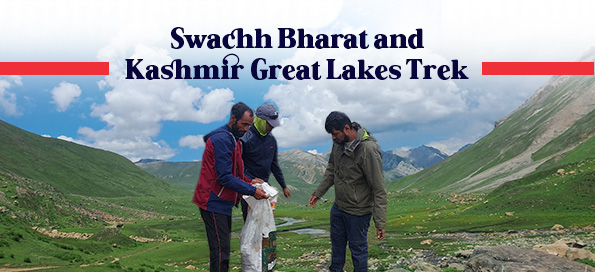
Kashimir Great Lakes Trek - Trek The Himalayas
Experience romance amidst the breathtaking beauty of the Himalayas on the Kashmir Great Lakes Trek with Trek The Himalayas. This enchanting journey takes you through some of the most stunning landscapes in the region, where serene lakes, lush meadows, and majestic peaks create a perfect backdrop for unforgettable moments. As you trek through the diverse terrain, you'll be surrounded by the pristine beauty of high-altitude lakes, verdant valleys, and snow-capped mountains. The trek offers a unique blend of natural splendor and peaceful seclusion, providing the ideal setting for romantic moments and shared adventures. With expert guidance and support from our team, you can fully immerse yourself in this magical journey, creating memories that will last a lifetime. Join us on the Kashmir Great Lakes Trek and experience the romance and wonder of the Himalayas like never before.
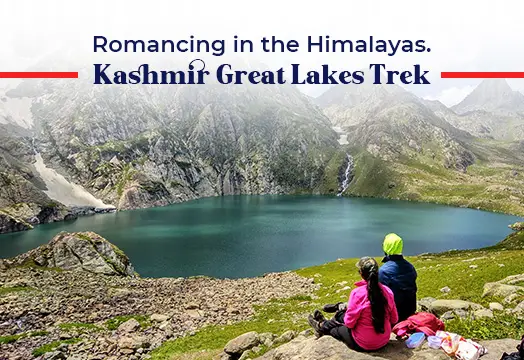
- Date and Price
Rent A Gear
Trek Articles
Quick Links
Trekking & Hiking
Mountaineering
Multi Sports
Himalayan Pilgrimage
Website Privacy
Terms & Condition
Contact Info
Get in touch with us. E-mail us Monday-Saturday (10 AM to 6 PM)
Address: Trek The Himalayas 7/2/1, Convent road, Near SBI Main Branch Dehradun-248001,Uttarakhand
Phone: 8191004846
Email: [email protected]
2024 Trek The Himalayas. All rights reserved

Kashmir Great Lakes Trek
Heaven On Earth
Moderate to Difficult
Highest Altitude
July - Mid Sept
The Kashmir Great Lakes Trek , a journey that stands out for its unique features, is a trek that speaks for itself. Its name alone evokes images of breathtaking beauty and adventure. Nestled in the heart of the Himalayas, Kashmir is a haven for nature lovers and thrill-seekers alike. This trek offers a one-of-a-kind experience that will imprint unforgettable memories. The pristine lakes and snow-capped mountains are a sight to behold; their tranquillity and majesty will leave you in awe. The trek is an opportunity to immerse yourself in the natural beauty of Kashmir and create memories that will last a lifetime.
Kashmir, known as the earth’s paradise, is the location of this trek, which lasts around 7-9 days and is considered moderately challenging. The elevation reaches 13000 feet, and the distance covered is approximately 63 km. This trek provides an opportunity for self-discovery on multiple levels – physical, mental, and emotional. The experience of pushing one’s body to its limits and overcoming doubts about completing the trek is a challenge like no other. While the journey may be tough, the sense of accomplishment upon reaching the destination is unparalleled. This trek can be a happy and memorable experience for trekkers with proper preparation.
To embark on the challenging journey to the Kashmir Great Lakes Trek, it’s crucial to prioritize your health and well-being. Ensure you’re in top physical condition by engaging in regular gym sessions and incorporating activities like running, walking on an incline, cycling, cross-training, and stretching into your daily routine. Mental fitness is equally vital, so cultivate a positive mindset and practice stress-reducing techniques to help you cope with the demands of the trek. This preparation will not only make the trek more enjoyable but also increase your chances of successfully completing it.
Along the Srinagar road, the trek begins approximately 3 kilometres outside Sonamarg. You’ll encounter a few roadside restaurants and dhabas where you can grab snacks or light meals. It’s recommended that trekkers stop here to stock up on provisions, as the next opportunity for food and shelter won’t be until Naranag, which marks the end of the trail.
The path winds through a picturesque meadow with lush green grass, offering breathtaking views of the Sonamarg town below. As trekkers ascend, they reach the threshold of a dense forest, where towering Maple and Pine trees stand sentinel. The ensuing trail unfolds into a romantic paradise, with the dense canopy of Maple trees creating a dreamy, intimate atmosphere that is singular to this trek in India. This unique beauty of the trek is sure to intrigue and excite any adventure enthusiast.
The Kashmir Great Lakes Trek is a journey that speaks for itself. Its name alone conjures up images of breathtaking beauty and adventure. Located in the heart of the Himalayas, Kashmir is a paradise for nature lovers and thrill-seekers alike. This trek offers a once-in-a-lifetime experience that will leave you with unforgettable memories. The pristine lakes and snow-capped mountains are a sight; their tranquillity and majesty will leave you spellbound. The trek is a chance to immerse yourself in the natural beauty of Kashmir and create memories that will last a lifetime.
Kashmir, known as the earth’s paradise, is the location of this trek, which lasts around 7-9 days and is considered moderately challenging. The elevation reaches 13000 feet, and the distance covered is approximately 63 km. This trek provides an opportunity for self-discovery on multiple levels – physical, mental, and emotional. The experience of pushing one’s body to its limits and overcoming doubts about completing the trek is unmatched. While the journey may be challenging, the sense of accomplishment upon reaching the destination is unparalleled. This trek can be a happy and memorable experience for trekkers with proper preparation.
To embark on the challenging journey to the Kashmir Great Lakes Trek, it’s crucial to prioritize your health and well-being. Ensure you’re in top physical condition by engaging in regular gym sessions and incorporating activities like running, walking on an incline, cycling, cross-training, and stretching into your daily routine. Mental fitness is equally vital, so cultivate a positive mindset and practice stress-reducing techniques to help you cope with the demands of the trek.
The path winds through a picturesque meadow with lush green grass, offering breathtaking views of the Sonamarg town below. As trekkers ascend, they reach the threshold of a dense forest, where towering Maple and Pine trees stand sentinel. The ensuing trail unfolds into a romantic paradise, with the dense canopy of Maple trees creating a dreamy, intimate atmosphere that is singular to this trek in India.
- Stay will be on a twin-sharing basis in tents
- + 280 Trek Insurance (Mandatory)
- Discount Policy
- Transport Optional ( INR - 1,600 extra )
Pickup time 12 P.M from TRC Taxi Stand, Srinagar, in front of Tourism Office Building
- Inclusions & Exclusions
- Food Provided Trekup India
- Safety With Trekup India
Call Our Mountain Experts
Fix Diparture Dates
Kashmir great lakes trek videos.
Videos by experts watch these videos to prepare well for a Successful Trek

Want To Trek Like Pro?
Check out the following videos if you want to trek like a pro trekker and improve your skills. These videos contain helpful tips, tricks, and techniques to help you trek like a pro. Whether you’re a beginner or an experienced trekker, these videos can provide valuable insights to enhance your trekking experience. So, watch the videos below by Trekup India experts to take your trekking skills to the next level.
Know Everything About Acute Mountain Sickness
Acute Mountain Sickness is a medical condition that can occur when individuals travel to high altitudes, typically above 8,000 feet. It is caused by the decrease in air pressure and oxygen levels in the air as altitude increases. Symptoms of Acute Mountain Sickness may include headache, nausea, vomiting, dizziness, and difficulty sleeping. To avoid Acute Mountain Sickness, it is important to gradually adjust to high altitudes and seek medical attention if symptoms worsen. To learn more about this condition, check out the videos by Trekup India.
Day Wise Detailed Itinerary of Kashmir Great Lakes
Day 1: arrive srinagar and drive to sonamarg.
- Altitude: 7800 feet
- It takes approximately 3 hours to drive 90kms from Shrinagar
- TrekupIndia can arrange pickup from TRC at 12 pm if booked in advance
- The campsite is located near the Sindh River (Shitkadi Village).
- There are no shops nearby so make sure you have everything you need.
- Keep your ID proof with you in the original and two photocopies. We will need them to check at the Army Check Post.
In the afternoon, depart for Sonamarg. It takes 3 hours to reach Srinagar.
Day 02: Sonamarg (7.800ft) to Nichnai (11.1500ft), via Shekdur
- Altitude: 7,800 ft – 11,500 ft
- 11kms Trek, approximately 8 Hours
- We trek to Nichnai via Shekdur after breakfast.
- You will find the trail through dense forests of Maple, Pine, and Bhoj trees.
- We are allowed to go through the army checkpoint after about half an hour. Here we must submit our ID proofs.
- You can also enjoy a spectacular view of the Sonmarg Valley and the Thajiwas Glacier while you’re at it.
- It takes approximately 2 and a half hours to trek from Shitkadi, Shekdur through dense pine forests.
- You can enjoy instant noodles or an omelette at Shekdur if you so desire.
- As we trek from Shekdur, to Nichnai, we follow the Nichnai Stream.
- After Shekdur, we have lunch at Nichnai.
The trek commences 3 kilometres from Sonamarg, along the Srinagar Road. After a brief 3-kilometer journey, you’ll encounter a solitary Dhaba offering snacks and refreshments. Naranag is the next settlement, located at the end of the trail. The jeep track diverges from the main road, veering right, and descends towards the Sindh River. The river flows parallel to the mud track and the main road. The trail follows a gentle curve to the left, traversing a picturesque meadow with breathtaking views of Sonamarg.
Within half an hour, you’ll reach the meadow’s summit, where Maple and Pine trees begin to dominate the landscape. The trail then descends to a small brook, only to ascend again, leading you through a dense forest of Maple trees. The experience of walking on the lush green grass amidst these Maples is truly unique.
The trail will lead you through a picturesque Maple tree forest for the next hour and a half. Stay on the uphill path; the downhill trail will take you to nearby villages. Enjoy the scenic views of the Sonamarg valley from the clearings between the trees. As you reach the top of the ridge, the Maple forest will give way to a meadow, offering stunning views of the valley below. Please take a moment to appreciate the scene’s beauty, with its streams, meadows, pines, and town nestled in the distance.
After a brief climb, the trail will descend into a verdant meadow lined with Silver Birch trees and dotted with small brooks. This is Shekdur, a lovely campsite surrounded by Bhojs. If you’re starting your trek from Srinagar at dawn, Shekdur is an ideal first campsite. However, if you’re starting from Sonamarg, it’s too early to set up camp here. Instead, take a break at the meadow before continuing to Nichnai, the next campsite.
The meadow lasts about half an hour before reaching a forest of Bhoj, or Silver Birch. Follow the trail through the forest and watch for the sun’s rays as they filter through the dense foliage, creating a dappled pattern of light and shadow.
In approximately 45 minutes, you’ll reach the end of the birch tree line and begin your descent into the river valley, marking the beginning of Nichanai. The trail follows the right bank of the Nichanai River as it flows upstream, with the snow-capped peaks of Sonamarg Valley visible to your left.
You’ll traverse a wide valley flanked by mountains, with the river Sindh flowing through it. The terrain will be rocky for the first 30 minutes, but eventually, the landscape will transform into a lush green meadow as the river valley narrows. Look ahead to spot the Triangular Twin Snow-capped Peaks in the distance.
Day 03: Nichnai (1,500ft) to Vishansar lake (12,000.ft).
- Altitude: 11500 ft to 12,000ft through 13100 ft
- 12 km Trek, approximately 7 hours
- The trek from Nichnai Pass to Nichnai Pass takes approximately 1 and 1/2 hours.
- You can access the B.S.N.L network at the top of Nichnai Pass, which is the final point in the mobile coverage area.
- There is a descent from Nichnai pass towards Vishansar.
- Lunch will be served at the campsite Vishansar
- You can also visit the Vishansar lake, which is only 15 minutes from the campsite.
- This is the first and most beautiful lake on the trek.
- The lake will freeze if the trek takes place in July. If we have permission from Srinagar Fishing Department, we can fish at the lake.
- Vishansar is frequented by flocks of sheep, and their shepherds are well-known for telling interesting stories.
- This campsite offers a great place to play volleyball, cricket and other sports.
Embark on a picturesque journey across meadows, with the scenery continually improving. Begin your trek by 8:00 am to allow ample time to appreciate the surroundings. Your first destination for the day is the Nichnai pass or Vishnusar Berry, visible from the campsite. The pass is a striking landmark located just right of the twin snow-capped peaks. Following a half-hour river-side walk, cross the waterway to transition to its left bank. Observe the trail gradually ascending as you advance through the meadow for the next hour. The subsequent hour is dedicated to a moderate climb to Nichnai Pass, standing at 13,500 ft, succeeded by a minor descent and an extensive flat meadow walk, ultimately leading to Vishnusar Lake. As you ascend, take notice of a small lake nestled at the base of the mountains, its deep blue hue igniting excitement for the lake.
The pass is not immediately apparent from the meadow below, as the trail misleads with two inward turns before revealing the Nichnai pass. From this vantage point, take in the breathtaking views of the Sonamarg valley and the path you’ve traversed. This is a reliable spot to get a phone signal, courtesy of the BSNL network, which may not be available again until you reach beyond Gangabal.
As you continue your journey, the path opens into a vast, snow-covered valley, with towering peaks rising up on your left. The landscape on the right side slopes upward, but no prominent peaks are in sight. You’re currently at an elevation of 13,229 feet, which is quite a feat, considering it’s only the second day of your trek. The high altitude can be challenging, but the good news is that the trail begins to descend from here, offering a welcome respite. The rugged terrain leads to a steep rocky path, eventually turning into lush green grass. Bright red flowers dot the landscape, adding colour to the otherwise muted tones. Ahead, a vast meadow stretches out for miles, flanked by towering mountains. A new river flows gently through the valley, providing a soothing soundtrack to your journey.
As you pause, take in the breathtaking panorama of rugged peaks, glistening rivers, and vibrant meadows. To your left, a magnificent waterfall cascades down the mountain slope, merging with the river below. Beyond the waterfall, the terrain flattens out, and you continue your journey through the expansive meadow. The iconic snow-capped Himalayas rise majestically to your left, while the barren, grey mountains on your right evoke the stark beauty of the Ladakh ranges.
Amble along the verdant valley, flanked by two towering ranges. Two prominent streams meander through the landscape, with the left-hand stream being your guide. Prepare for a refreshing stream crossing in a mere half hour, with crisp water leaving you invigorated.
Set up camp in the meadow for 90 minutes until you reach the valley’s end. A stream flows from the left towards the right, originating from Vishnusar Lake, located higher up on the left but cannot be seen from the campsite. Pitch your tents in an open area near the stream, leaving plenty of space for other campers.
The Vishnusar lake is 0.5 km to the left and 100 feet above the campsite. Head left and follow the stream to reach the lake, keeping it to your right. It takes approximately 7 minutes to reach the lake between two mounds. The first thing you’ll notice about the Vishnusar Lake is its size and how four mountains surround it. The Kishansar peak, located 0.5 km away, is reflected in the lake’s calm waters, creating a stunning visual effect. The lake’s colour varies depending on the time of day and the clouds in the sky. In the early morning, the water is crystal clear, but the lake takes on a blue hue as the sun rises. When the sun is high in the sky, and the clouds are few, the water appears a deep blue. However, in the late afternoon, the lake turns greenish-blue, thanks to the combination of clouds and the setting sun. Regardless of the time of day, the Vishnusar Lake is truly breathtaking and worth seeing in its different colours.
Day 4: Day of Acclimatization and Rest/Buffer Day at Vishansar
Note: Kindly note in our Kashmir Great Lakes Trek Day 04 is rest day (which is optional) and will be used as a buffer day only incase of any weather condition, shutdown, political unrest, using Rest day / buffer day will completely depends on current weather condition of the region or Kashmir Situation. In all good situations the trek will continue and rest day / buffer day will not be used, making it a 6N 7D program. If the rest day / buffer day is used Trekup India will not charge for its logistics.
Day 05: Vishansar (12000ft) to Gadsar (12000ft), via Kishansar lake & Gadsar Pass (13,750ft).
- Altitude: (12,000ft to (12,000ft), via (13.750ft).
- 14kms Trek, approximately 10 Hours
- The trek starts earlier than usual.
- The trek takes you from Vishansar up to Gadsar.
- The trail ascends steeply from Vishansar to Gadsar Pass.
- On the way, we can see Kishansar Lake.
- We descend slowly from the Gadsar pass to the campsite.
- En route, we can see Gadsar lake.
- The Glacier of Gadsar Lake might also be visible.
- We will arrive at the campsite after passing Gadsar lake. It takes us 2 hours.
- We will be stopped by another army checkpoint just a few minutes from our campsite. They will ask for our ID proofs.
- Lunch will be provided
You’ll encounter a narrow trail that winds up the mountainside as you journey. This path will lead you to the summit, but be sure to follow the track that ascends higher, as it will provide the most scenic route. The climb should take around an hour and a half at a moderate pace, and about 45 minutes into your ascent, you’ll be rewarded with a breathtaking view of both Kishansar and Vishnusar lakes, nestled in the mountains.
The scenic view of the twin lakes persists until you reach the ridge summit or the pass, known as the Gadsar pass, which stands at 13,800 feet, the highest point on this trek. The trek involves a strenuous 2-hour climb followed by a steep descent and a leisurely walk through the meadows. On the opposite side of the Gadsar pass, a long valley stretches out, with 2-3 small lakes visible in the distance. A series of snow-capped peaks can be seen on the far horizon, lying beyond our Line of Control. It is not unusual to encounter snow at the Gadsar pass and in the initial sections of the descent on the other side.
The path downward is uncomplicated. The initial minor lake on the left is Yamsar Lake, which the local population believes has a connection to Lord Yama. Following Yamsar is a second unnamed lake. A short descent of an hour brings you back to level meadows. This valley is more compact, with two mountain ranges running along its sides. Take note of the vibrant flowers growing out of the green grass, beginning with red and gradually shifting to blue and purple irises.
As you venture into the blue Iris area, you’re just a short distance from the breathtaking Gadsar lake, nestled at the foot of snow-capped peaks. Vibrant blue flowers bloom on one side, while snow slabs tumble into the lake from the mountain on the other. Ahead, the valley stretches out in a gentle green-blue slope. The Yamsar, the unnamed lake, and Gadsar are linked by a stream that flows from the higher lake to the lower, with Gadsar at an elevation of 12,500 feet.
Select Gadsar as your campsite for its breathtaking beauty, but only if you promise to leave the area as pristine as you found it. Gadsar is typically unoccupied, and a small, abandoned military shelter is nearby.
If you opt not to set up camp beside Gadsar, the next suitable location would be the army camp nearby. Following the downward trail from Gadsar, the valley expands after a half-hour walk, revealing a second blue lake on the left-hand side. The snow-capped mountains give way to rugged, barren peaks. You’ve descended a significant amount of altitude. Another half hour down the trail, a few shepherds’ huts come into view. Continue downhill for three and a half hours, and the army camp will be at the end of your journey. The Gadsar army camp comprises a small hut housing approximately 5-8 military personnel.
To proceed beyond the military camp, authorization from the central command is required. The command centre is located 4.8 kilometres further down, near a village, and is situated among the trees. The Gadsar camp maintains contact with the headquarters using handheld radios. The headquarters is also equipped with a satellite phone for military use. If you are near the Gadsar army camp, it is advisable to report to them promptly. Processing your documentation, which includes verifying original identification cards, takes approximately 2-3 hours.
Day 06: Gadsar (12000ft) to Satsar (12000ft).
- Altitude: 12,000 ft – 12,000ft
- 9kms Trek, approximately 6 hours.
- The trail is full of vibrant flowers from mid-July to mid-August.
- You will need to show your ID at another checkpoint of the army while you are on your way.
- We see two smaller lakes that are sometimes mistaken for Satsar Lakes.
- In the afternoon, we will visit the Satsar twin Lakes, which are approximately 1.3 h
- Mengen top is also known for Stasar twin lakes.
- These twin lakes can be found in the middle of the mountain.
After crossing the stream, follow the trail that ascends the mountain, reminiscent of a typical western ghats path. You’ll feel above the tree line, with the tree-covered valley stretching below. The 1.5-hour climb will take you up 1,100 feet, and the trail will eventually transition into a traverse. You’ll leave the river valley behind and find yourself walking on a flat trail surrounded by mountains, with deep craters to your right. This area is known as Maengandob. The landscape ahead is breathtaking, with isolated mountains and a small ridge to your right. In between, you’ll find a flat green bed with a river flowing through it. Consider camping here if Gadsar Lake is your last stop. If you started at the army camp, it’s worth covering a bit more distance and setting up camp near the first of the Satsar lakes. Satsar consists of seven lakes, four or five containing water depending on the season. Located beyond the ridge on the right is the Satsar army check post, the third line of defence from the LOC. Expect to go through the usual identity checks, collection, and questioning process. It’s best to take care of this today to ensure a smooth and enjoyable trekking experience tomorrow. Just ten minutes from the army camp is the first of the Satsar lakes, a picturesque body of water nestled in a green setting with mountains rising in front. Choose a suitable spot to set up camp for the day.
Day 07: Satsar (12,500ft) to Gangabal twin Lakes (11,500ft).
- Altitude: 12,000 ft – 11,500 ft 13000
- 11kms Trek, approximately 6 Hours
- For approximately an hour, we walk on rocky trails and then ascend to Jazz Pass.
- The pass offers views of Mt. Harmukh with its glacier.
- We descend to the Gangbal lake, and then camp at Nandkol lake.
- We will visit Gangbal Lake, one of the largest lakes on the trek.
- After dinner, a group of Kashmiri staff members will perform traditional songs and dances.
The terrain undulates throughout the day’s trek, alternating between gentle inclines and declines, followed by a steep ascent and descent. The path replicates this pattern, consistently rising and falling. Begin by trekking for half an hour to reach the largest Satsar lake, traversing bouldery terrain requiring more hopping than walking. Beyond the final lake, the trail descends, and after a 30-minute walk, the forest line comes into view on the left, while a ridge line lies to the right, standing 1,000 feet taller. It’s time to gain altitude again, starting from 11,800 feet at the base of the climb. Use the zig-zag pony track to ascend the first ridge, a 45-minute journey with limited breaks. From the summit, two additional ridges remain to be climbed. The barren and rocky trail offers a contrasting view of the adjacent mountains, where Gujjar huts are visible amidst tall pines. The disparity between the arid mountains and the lush greenery on the other side is striking.
After a two-hour ascent, you reach the summit of the third ridge, where you’re greeted with a breathtaking view. The altimeter shows an elevation of approximately 13,400 feet. The real treat, however, is the stunning panorama that unfolds before you. Two lakes sit side by side, with a stream flowing from the higher lake to the lower. Look closely and spot two more lakes in the distance, one on either side. The largest of the four lakes is Gangabal, and its companion is Nandkol. Your destination is now clearly visible, lying 1,400 feet below you. The path ahead involves a brief descent followed by a steep climb back to the lake. Take in the scenery and get ready for a challenging descent. Your final destination is either Gangabal or Nandkol. While the ascent is dry, you’ll cross a stream midway through the descent. Fill up your water bottles and press on. The steep descent takes about an hour and a half, after which you’ll find yourself in a lush green meadow. The meadow stretches from right to left, and a kilometre down the left, you’ll see the tree line again. Once you reach the base, the lake shore is still far off. Though the destination is now visible, it appears distant.
A short climb, a quick descent, and a stream crossing over a wooden log bridge lead you to the shores of Nandkol Lake. Observe that this lake isn’t as pristine as the others you saw on the trek. The area is littered with remnants of camping. Many people trek up from Naranag to Gangabal and return as a weekend getaway, leaving behind a trail of garbage. You can’t help but wish they had taken the time to clean up after themselves and appreciate the beauty of these lakes.
The picturesque Nandkol Lake is situated at the foot of the majestic Harmukh Peak, with the Harmukh Glacier gracefully descending the rocky slopes. Both Nandkol and Gangabal Lakes are renowned for their excellent trout fishing spots. While Gangabal Lake is a 20-minute trek away from Nandkol, a fiery stream flows between the two lakes, connecting them. To reach Gangabal from Nandkol, it’s essential to cross this stream using a sturdy artificial bridge on the right-hand side of the bank of Gangabal. The lake is vast, and a leisurely circumambulation of either lake will take around an hour.
Day 08: Gangabal (11,500ft) to Naranag (7.450ft). Drive to Srinagar
- Altitude: 11500 ft to 7450 ft
- 15kms Trek, approximately 7 hours
- You will be walking down the trail until you reach Naranag. Please take care of your ankles and knees.
- You will be passing through the pine forest.
- TrekupIndia can arrange transportation to Srinagar for a fee if you make an advance booking.
- You will arrive in Srinagar at 6:30 pm after driving 70kms.
- Prepaid sim cards are not valid in Kashmir. Carry Postpaid Sim Cards.
- You will reach Srinagar on Day 8 between 6:30 and 7:30 PM. After 8 PM, you can book your travel.
After a gentle downhill journey for 6 hours, the trail becomes much steeper and more challenging for the final 11 kilometres. Today’s journey may seem effortless as you descend downhill, but be mindful of the steep incline that may strain your knees.
Begin your trek from the Gangabal campsite, following the stream and ridgeline until you reach a grove of trees. After 30 minutes, you’ll start getting cell phone reception, so take a moment to let your loved ones know you’ve made it safely. As you continue, the ridge will give way to a picturesque meadow, offering a stunning view of Harmukh Peak in the distance.
As you continue your journey, you’ll notice the landscape shift, with the treeline coming into view. Most of the trees are pine, and you’ll begin to see signs of civilization, such as a log hut, as you make your way deeper into the forest. The trail takes you in and out of the woods for about 6 km without much change in altitude.
However, as you reach the two-thirds mark, the path begins to descend, which is quite steep. The trail is muddy and well-trodden, and the thick pine cover creates a canopy overhead. Over the final 4 km, you’ll experience a dramatic drop in altitude, losing over 3000 ft. You may see other trekkers on their way up from Naranang to Gangabal. As you continue down, Naranang comes into view, and the end of your trek is in sight.
The last portion can be challenging, as the path is quite steep, but a stone-paved path appears, and you’ll soon enter the village of Naranang. From there, you’ll drive to Srinagar, with an estimated arrival time of 6:30 pm. From this point, you can make further travel arrangements as needed.
We’ve prepared a comprehensive Trek Route Map for your upcoming adventure to Kashmir Great Lakes Trek , which outlines the entire journey including all stops and trails. This map provides detailed information on the terrain, distance between points of interest, and estimated travel time to help ensure a safe and enjoyable trek. We’ve carefully curated the map to ensure that you have all the necessary information at your fingertips. Please take a moment to review it thoroughly, and don’t hesitate to reach out if you have any questions or concerns.

The Trek Altitude Chart is a useful tool for Trekkers to monitor their altitude changes during their rides, allowing them to plan their routes more efficiently and track their progress over time. This Kashmir Great Lakes Trek chart is beneficial for both casual and experienced Trekkers, helping them make the most out of their Trek experience.
Trek Cost Inclusions
- Stay: 7 Nights of tented accommodation at individual campsites of Trekup India on twin sharing.
- Meals: Trekup India will provide freshly cooked meals during the trek starting with Dinner on Day 1 to tea, coffee on day 8 (Meals are simple, nutritious, and vegetarian)
- Trek Equipment: Sleeping bag, Sleeping tents, Kitchen tent, Dining tent, Toilet Tent.
- Amenities: All utensils, sleeping mattresses (Black foam mats), Crampons, and Gaiters for snow.
- Health & Safety: First Aid Box, Oxygen Cylinders, Stretchers, Oxi meters, BP Machines, health.
- Permits: Forest Permits and Camping Permission Fee
- Trek Crew: High Altitude Chef, Helpers, Trek Leader & Guides, and other support teams.
- Potters & Mules: Potters and Mules are to carry all trekking equipment, ration, and vegetables.
Trek Cost Exclusions
- GST 5% (it is Mandatory)
- Transport Optional: Srinagar to Sonmarg and return. ( 1600 extra )
- Trek Insurance Mandatory: (Trekup India recommends each trekker to get insurance) you can read more about What Is Trek Insurance, Why It Is Mandatory On Treks And What It Covers .
- Any Meals/accommodation beside the itinerary or not mentioned in the program.
- INR 2000 Extra for Forest Permits for Non Indian Nationals
- Any Bus / Airfare to/from trek start/end point
- Personal Medical expenses do carry your medication.
- Any personal services such as Laundry, phone calls, liquors, mineral water, etc.
- Any still / video camera fee
- Any Entrance fee Monuments, Monasteries, Museums, Temples – Pay directly on the spot.
- Mules or porter charges to carry private baggage (Offload Charges for bag 365 per day, per bag if paid online (at base camp 2,550). Note: Bag weight should not be more than 10 kg.
- Any emergency evacuation charges
- Any services that are not mentioned in the cost inclusion section.
What should you pack for the Kashmir Great Lakes Trek
Buran Ghati trek is a high-altitude trek. The trekking gear you have to have for this particular trek differs from normal treks. Thus, read this whole segment. There is an important question that the trekker who is doing trek asks, like what all things to carry while trekking. Below, we have provided the details on everything you should take; an easy way to remember is by Head to foot or foot to head. We have prepared from Head to foot.

When trekking it's important to carry headgear to protect your head and face.
Heading out for a trek? Don’t forget to carry headgear to protect your beautiful face and head from the sun, wind, and dust! It’s an essential accessory that keeps you safe and comfortable throughout your adventurous journey. So, make sure you pack it before you step out into nature!
- Head Lamps are essential for the night, and most importantly, headtorchs keep your hands free while trekking.
- Hats or Cap – Cap will protect you from winds and sometimes freezing temperatures for the night. Hats protect you from the sun during the day and also ensure they have a strap so the hat doesn’t blow from the wind.
- Sunglasses – you will need specific sunglasses for trekking. The glasses should protect from UV rays, fit your face perfectly so it doesn’t fall while you climb, jump, or cross an obstacle, and be according to the weather conditions of the place; the glass should be made to fit different weather conditions.
- Buff / Balaclava – You must carry this to protect your mouth or neck from extreme temperatures and keep it warm.
When trekking in high altitudes, prepare for cold weather by wearing layers. Layering traps heat, keeps you warm, and allows you to easily adjust your clothing as temperatures fluctuate.
Layering is important for different seasons when trekking. When planning a high-altitude trek, it is important to prepare for the cold weather. Wearing layers is the best approach as it provides both protection and flexibility when the weather changes frequently in the mountains. Layering helps to trap heat and keep your body warm, while at the same time allowing you to easily adjust your clothing as the temperature fluctuates. By wearing layers, you can enjoy your trek comfortably and stay safe in the unpredictable mountain weather
- For spring, summer, and monsoon treks , consider wearing three layers: a woollen sweater, a fleece, and a padded jacket.
- For autumn treks , add one more fleece layer to make it four layers.
- For winter treks , you may need five layers with thermals, a woollen sweater, two fleeces, and a padded jacket.
- T-shirt/sleeve shirt – Bring three T-shirts and two quick-dry trek pants, wearing one and carrying the others. Long sleeve shirts help to protect from sun UV rays. We recommend synthetic T-shirts as they get dry quickly when they get wet.
- Hiking / Trekking Jacket – down jackets (-5 to-10 C) or two-three-layer jackets.
- Thermals – at least two pairs of thermals help keep the body warm during cold weather.
- Undergarments – you can carry them according to your habitual and hygiene requirements.
- Gloves – 1 pair of gloves will keep your hand warm and nice.
- Trek Pants – Bring 2 to 3 comfortable trekking pants. Trekking pants play a significant role, as they are designed for comfort and mobility, making trekking easier. It should be Synthetic so that it gets dry quickly when wet.
- Rain Wear – you can carry a raincoat or Poncho. During long rains and snowfalls, the waterproof jackets start leaking. Still, the Poncho and raincoats keep you dry, so choose accordingly.
Tip: If you choose a raincoat on your trek, carry a small waterproof cover so things inside your backpack can’t get wet. If you carry a Poncho, you don’t need to worry. It protects both you and your backpack.
When it comes to planning a trek, one of the most important aspects is to ensure that you have the right kind of foot gear.
- Trekking shoes whichare waterproof and have ankle support. Walking / Hiking sandals which can be used off the trek, i.e., in the morning and evening hours when you reach the campsite, basically to get your feet rest from heavy boots, sometimes used for crossing streams and rivers, it’s more comfortable and safer than crossing barefoot or wetting your shoes. Sneakers (Optional) can be worn for normal driving days or used around the camp.
- Socks – you should at least carry 3 to 4 pairs.
- Microspikes & Gaitors will be provided by Trekup India when required. You don’t have to carry them.
Personal First Aid Kit
Don't forget to pack your personal first aid kit! It's always better to be safe. So, make sure you're prepared for any unforeseen circumstances.
Below are some common medicines generally required/used during your adventure trip; however, please consult your doctors prior.
- Antiseptic towel or water syringe (to clean the wound)
- Butterfly bandage for a small cut
- Cotton and elastic bandages and sterile gauze pad for larger wounds
- Latex gloves are used when the wound bleeds.
- Medicine for Diarrhea (Upset stomach)
- Medicine for cold, flue/fever, headache
- Some pain killers
- ORS pouches
- Quick pain relief spray (External use)
- Any personal medicine prescribed by your doctor
- Dimox / Similar for high altitude sickness
- Bug Repellent
- Carry some nutria/energy bars and drinks (non-alcoholic)
- Note: Kindly consult your doctor before purchasing or taking any medicine.
Gadgets and Other Items
You might also consider bringing a camera, binoculars, portable charger, and snacks. Be well-prepared and tackle any trail with confidence.
- Trekking Poles
- Mobile phone
- Spare batteries for phone and camera, power bank
- Lightweight flashlight or headlight
- A waterproof bag made of plastic is used for the camera.
- Plug/converter for electrical items
- 1-litre water bottle
- A journal with a pen would be a good idea to keep your notes.
- Some book of your interest for the ideal time
- Get into the habit of maintaining a Map and guidebook of the region.
Hygiene & Personal toiletry
Remember to pack hygiene and personal toiletry items such as soap, shampoo, toothbrush, toothpaste, deodorant, and toilet paper.
- Sunscreen with UV protection
- 1 or 2 small quick-drying towels
- Toilet paper/tissues/wet wipes
- Toothbrush/toothpaste/ mouth freshener
- Deodorant / Talcum powder
- Lip-gloss/salve
- Sanitary pads/tampons (For female trekkers)
- Bio gradable Soap
- Nail clipper
- Your other personal items that you use daily.
Compulsory Documents to Carry
There are certain documents that you should always carry with you. These documents are not only necessary for your safety and security, but they may also be required by local authorities.
These files must be submitted to the Forest Department before your trek. With none of these, you will not be permitted to trek—original and photocopy of government photo identity card. Carry IDs like Aadhaar, voter ID, etc.
How To Plan Your Trek & Reach Srinagar, Jammu?
By Air:- Most air carriers such as Air Indian Airlines, Jet Airways (www.jetairways.com ) have regular flights to Srinagar. Getting to Srinagar by flight from New Delhi is considered the most conceivable.
By Train:- Jammu may be the closest railway station to Srinagar, which is at a distance of 290 km. Jammu railway station is nicely attached to other main towns in India by rail. Direct Rails are available from Delhi, Trivandrum, Bangalore and also Chennai.
By Bus:- Srinagar is connected through the National Highway 1A to all over the country. J & K transportation has regular comfy buses from Jammu. The Journey captures approximately ten hrs to arrive at Srinagar.
Kashmir Great Lakes Trek Photos
Fitness required & preparation guide for kgl trek.
If you’re preparing for a kashmir great lakes trek, Trekup India recommends jogging as part of your fitness routine. Jogging helps work out the same muscle groups that you’ll use during trekking and can help you build endurance. You don’t need any special equipment to get started.

Fitness Target
Trekup India has put the Kashmir Great Lakes Trek into an moderaye-to-difficult-grade-level trek.
For Moderate – Difficult Level Treks – In order to be well-prepared for your trek, it is recommended that you focus on building your endurance by aiming to cover a distance of 4.5 kilometres in less than 40 minutes. This will help you to develop the necessary stamina and strength required to complete your journey successfully.
How to Achieve This Fitness Target?
To start preparing for your trek:
- Try jogging for at least five days every week.
- If you find 5 km too difficult at first, begin with 2 km and gradually increase over 2-3 weeks.
- Once you feel more comfortable running 5 km, focus on improving your speed gradually on a daily basis.
It is important to ensure that you can consistently complete 4.5 km in under 40 minutes for at least two weeks before your planned trek. Allow yourself 6-8 weeks to prepare physically for the journey.
Strength Training exercises that benefit Trekking
Trekking is an activity that demands a good level of strength.
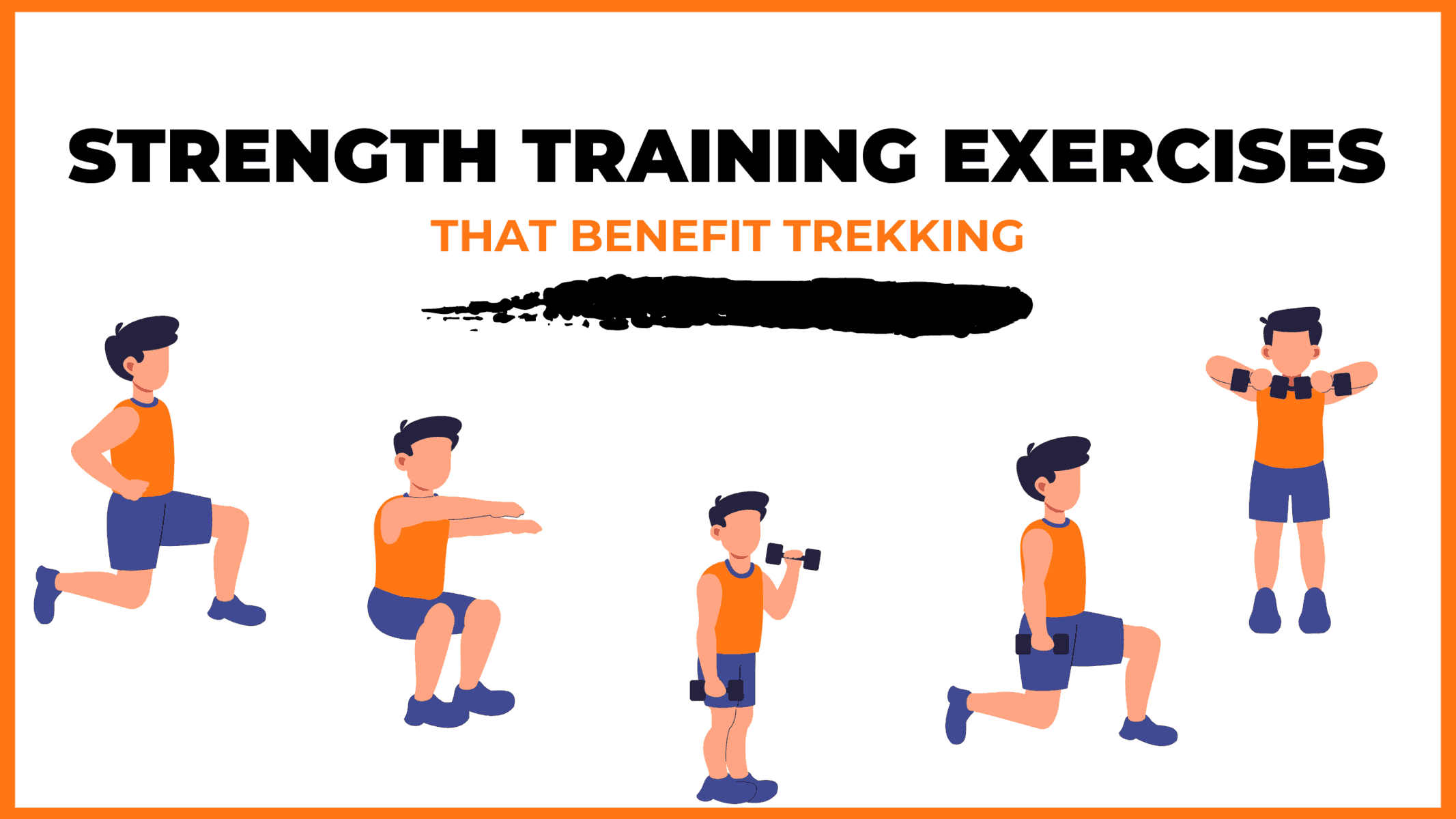
Trekking is a demanding activity that requires good cardiovascular endurance, muscular strength, and overall fitness. To help you prepare for your trek, incorporating bodyweight exercises into your training routine can be an effective way to build strength, improve stability, and enhance endurance, all of which are crucial for a successful trek. In this regard, here’s a breakdown of body weight exercises categorized by the specific body parts they target and the benefits they offer during trekking.
1. Lower Body Exercises
Lower body exercises like squats and lunges are great for building lower body strength, essential for trekking.
Squats are an excellent exercise for building lower body strength, essential for trekking. They target the quadriceps, hamstrings, glutes, and calves. Solid quadriceps and glutes provide power for ascending and tackling uphill climbs, while vital hamstrings aid stability during descents. This is particularly helpful in navigating uneven terrain during trekking.
How to perform Squats Exercises:
- Stand with feet shoulder-width apart, toes pointing slightly outward.
- Lower your body by bending your knees and hips, keeping your back straight.
- Lower until your thighs are parallel to the ground or as low as comfortable.
- Push through your heels to return to the starting position.
Lunges target the quadriceps, hamstrings, glutes, and calves. They improve lower body strength, balance, and stability, crucial for maintaining control on rocky trails and steep slopes. Additionally, they enhance flexibility, reducing the risk of injury while trekking.
How to Perform Lunge Exercises:
- Stand with feet hip-width apart, hands on hips or sides.
- Take a step forward with one foot, lowering your body until both knees are bent at 90-degree angles.
- Push through the heel of your front foot to return to the starting position.
- Repeat on the other side, alternating legs.
2. Upper Body Exercises
Upper body exercises such as push-ups and pull-ups effectively strengthen the upper body, especially the chest and shoulders, which are essential for carrying a backpack during treks.
a. Push-Ups
Targets: Chest, shoulders, triceps, and core.
Benefits for Trekking: Push-ups are an effective exercise to strengthen the upper body, especially the chest and shoulders, essential for carrying a backpack during treks. Improved upper body strength will also help maintain posture and stability while traversing challenging terrain.
How to Perform Push-Ups Exercises:
- Start in a plank position with hands shoulder-width apart and body in a straight line from head to heels.
- Lower your body by bending your elbows until your chest nearly touches the ground.
- Push through your palms to return to the starting position.
- Keep your core engaged throughout the movement.
b. Pull-Ups/Bodyweight Rows:
Targeting the back, biceps, and shoulders can significantly benefit trekking. You can strengthen these muscle groups by performing pull-ups or bodyweight rows and improve your posture and balance while carrying a backpack. Additionally, more muscular back muscles can help reduce the risk of back strain and fatigue during long treks, making your journey safer and more comfortable.
3. Core Exercises
Core exercises like planks and Russian twists can help strengthen the core muscles, which are crucial for maintaining stability and balance while trekking on uneven terrain.
Targets: Abdominals, obliques, and lower back.
Benefits for Trekking: Planks are an effective exercise that helps strengthen the core muscles. These muscles are crucial for maintaining stability and balance while trekking on uneven terrain. A strong core also helps improve posture, reducing the risk of back pain and fatigue during extended hikes.
How to Perform Planks Exercises:
- Start in a plank position with elbows directly under shoulders and body in a straight line from head to heels.
- Engage your core and hold the position, avoiding sagging or arching the back.
- Keep breathing steadily and hold for the desired duration.
b. Russian Twists
Targets: Obliques, abdominals, and lower back.
Benefits for Trekking: Russian twists engage the core muscles, particularly the obliques, improving rotational stability and balance. Enhanced core strength helps prevent injuries and improves overall performance during trekking.
How to Perform Russian Twist Exercises:
- Sit on the ground with knees bent and feet flat, leaning back slightly to engage the core.
- Clasp hands together and twist the torso to one side, bringing the hands towards the ground beside the hip.
- Return to the centre, then twist to the other side.
- Continue alternating sides for the desired number of repetitions.
4. Full Body/Cardiovascular Exercises
Full-body/cardiovascular exercises like burpees and mountain climbers are excellent for improving cardiovascular endurance, strength, and agility.
Burpees are an excellent full-body exercise that targets your legs, chest, arms, and core. This exercise dramatically benefits trekking enthusiasts, improving cardiovascular endurance, strength, and agility. Regularly incorporating burpees into your workout routine can enhance your overall fitness level, which can help you endure long hikes and rugged terrains with ease.
How to Perform Burpees Exercises:
- Start in a standing position.
- Squat down and place hands on the ground.
- Jump feet back into a plank position.
- Perform a push-up.
- Jump feet back to the squat position.
- Explosively jump up into the air, reaching overhead.
- Land softly and repeat the sequence.
b. Mountain Climbers
Mountain climbers target the core, shoulders, chest, and legs. This dynamic, full-body exercise can significantly improve cardiovascular endurance and agility. It is an excellent functional workout for trekking preparation as it engages both the upper and lower body muscles while strengthening the core muscles.
How to Perform Mountain Climbers Exercises:
- Drive one knee towards the chest, then quickly switch legs, alternating in a running motion.
- Keep the core engaged and the hips stable throughout the movement.
- Continue at a moderate to fast pace for the desired duration.
Incorporating bodyweight exercises into your training routine can help you build strength and endurance and prepare your body for the physical demands of trekking. Consistency and proper form are crucial to maximizing the benefits of these exercises and ensuring a safe and enjoyable trekking experience. Engaging your core muscles, including obliques, abdominals, and lower back, with Russian twists can improve your rotational stability and balance, preventing injuries and enhancing overall performance during trekking.
When incorporating strength training exercises into your workout routine, it’s essential to maintain proper form and technique to avoid injury. Start with lighter weights and gradually increase the intensity as you progress, focusing on compound exercises targeting multiple muscle groups simultaneously. Some examples of practical strength training exercises for trekking include squats, lunges, deadlifts, and pull-ups.
Remember to give your muscles time to recover between workouts, and remember to stretch before and after your workouts to prevent injury and improve flexibility. Combining strength training with jogging and proper stretching allows you to take your fitness to the next level and confidently tackle even the most challenging treks.
Our Trekkers Reviews And Expreinces
We provide only Indian vegetarian food, and your meal will mainly consist of Indian bread, vegetables, lentils, rice, and a delicious dessert. During your trek, we will serve three meals a day, including breakfast, lunch, and dinner. You will also be served tea, snacks, and lip-smacking soup in the evening before dinner. If it is a long day of trekking, you will be given a packed snack.
After extensive research on the trekkers’ nutritional requirements, we prepare the menu. Before putting all the meals together, we also consider the altitude and the weather.
The meal we serve during the trek is perfectly balanced with calories, carbohydrates, vitamins, protein, fibre, and minerals. You need to know that all our cooks have great expertise in cooking and have undergone thorough training. So, get ready to enjoy delectable and lip-smacking dishes during your trek. You will be served with lemon tea in the tent to start your day with a refreshed feeling. Before leaving the campsite for trekking, you will be given a hot finger-licking breakfast like upma, Aallu Prantha, Besan Chilla, Poha, Daliya, Corn flakes, and Maggie, along with tea or coffee.
If your trek is longer, we also offer some fresh local fruits such as apples and healthy drinks like Frootie or Maaza. In the afternoon, you will be served a simple & healthy lunch, while at around 04:00 pm, you will be given tea and a light evening breakfast. After you reach your campsite at night, you will be served a hot and delightful dinner.
After reading this, you must have understood the food we provided on the trek; you don’t need to worry about food. Many trekkers repeatedly trek with us because of the food we provide. Thus, we will give you unforgettable experiences.

Trekking with us for the Buran Ghati Trek is entirely safe because we have a team of trek leaders qualified in Wilderness first-aid and complete information about the high-altitude glitches. During the trek, we carry a full first-aid kit that contains all the essential medicines. Before trekking with us, you must ensure that you are medically fit for the trek; for us, your medical fitness is more important than anything else.
Right from our establishment, we at Trekup India have been continuously introducing new safety practices into Indian trekking to ensure the safety of voyagers. Trekup India introduced microspikes and made emergency bottled oxygen mandatory for all treks. Our trek leaders take your daily Pulse oximeter reading. We at Trekup India introduced the radio walkie-talkie as a safety communication device.
How can we ensure that your trek is safe with us?
We have noticed that most trek-organizing organizations do not follow these systems, but with time, they are following us; several competing companies are adopting these practices and organizing great, safe treks.
We ensure complete technical safety in the mountain. Our company has a vast team of more than 100 guides and trek leaders who serve on Himalayan treks. One of the best things about our team is that all the members are trained professionally by the Nehru Institute of Mountaineering, Indian Mountaineering Foundation Delhi, and Hanifle Center Outdoor Education Mussoorie.
Explore our New Safety Protocols
To ensure a perfect Trek, we have introduced some new safety checks to ensure excellent safety for our trekkers.
Our On-trek safety checks include:
- Daily oxygen saturation, along with pulse readings
- Stretchers team appointed on every trek
- Trained mountain staff and complete safety
- Additional oxygen cylinders
- Special medical kit for high-altitude treks
- Microspikes on all types of snow treks
- Experienced Trek leaders, as well as safety
- Technical team on all snowy slopes
For Us, Your Safety Is the Top Priority
At Trekup India, you will find a team with local knowledge and fluency in English and Hindi. This helps ensure that you have a fantastic trek. Not only this, but we also pay attention to your health and safety because this is something we cannot ignore. All the team leaders involved in trekking have already undergone several professional courses in first aid, portable altitude chamber training, CPR, environmental awareness training, and advanced wilderness emergency medicine.
We also carry a complete first aid medical kit on every trek and trip we organize. Apart from the medical kit, we take a portable altitude chamber (if needed) and medical oxygen for all high-altitude treks. Our company has significant expertise in organizing all sorts of group adventure holidays for family groups, school and college groups, and friend groups. We have many travel options that suit different fitness levels and travelling styles.
Regardless of the group size, we value each and every member of our trekking groups. Our commitment to personal attention ensures that your needs and safety are always our top priority.
Who we are?
Trekup India has been a stalwart in the Adventure Tourism industry for 30 years. Since our inception, we have been dedicated to providing top-notch treks, voyages, trekking programs, and high-altitude expeditions. Our extensive experience is a testament to our commitment to your adventure and safety.
We organize treks in Uttarakhand, Kashmir, Sikkim, and Himachal while being part of the trekking community; we feature more than 75 documented Himalayan treks. In addition to other outdoor activities, our company also organizes trips for schools, colleges, and families.
Therefore, we maintain the quality of services offered to our valuable customers.
Must Read These Information Of Kashmir Great Lakes?
Why you should do kashmir great lakes trek, 1. enjoy the stunning mountain scenery while on the trek.
Many treks in the Himalayas offer breathtaking views. The Kashmir Great Lakes, however, is a different scale. The mountains of Kashmir look like this. You can feel their presence all around you. It is not exaggerated to say that a trek through Kashmir is like viewing IMAX on a TV while everything else is on a regular TV screen. Kashmir is a place you can feel it all
2.The diversity of the valleys, meadows
Seven trekking days are required for the Kashmir Great Lakes trek. You will also be trekking in seven different valleys. Each valley is spread out over the course of the trek. Each valley is a tough competitor to the one before it.
Six of the seven valleys that you can trek are distinct grasslands, or meadows. These meadows and grasslands at high altitude are linked by high passes. You would expect meadows to be the same on both sides of a pass. They aren’t. Each of them has its own world and charm.
You can start with the Shekdur meadows, also known as tabletop set among Maples and Birch trees. The Nichnai grasslands are a great example of how large and rugged meadows can get. Cross the Nichnai pass to enter a meadow you won’t want.
The Vishnusar grassland is a wide, grassland that descends gently, rich in wildflowers, and has a gentle stream running through it.
The Gadsar meadow has a more dramatic appearance. It is narrower and has more jagged mountains on its sides. The central landscape is dominated by a large Gadsar, but it leads to many smaller lakes. Wildflowers bloom throughout the valley.
You will be transported to the top of the Gadsar valley by climbing up “Windows wall paper” Valley of Satsar. Satsar meadows are characterized by a smooth, manicured green lawn with a few maple trees and horses enjoying the graze. I have never seen greener grass elsewhere.
The Gangabal expanse is the last grassland. The valley below Zaj pass is almost like looking at the green world map. Gangabal in the blue looks just like Africa! Nandkol is on its side. The green landscape is also dotted by 4 lakes.
For me, the meadows at the trek are the best and most important reason to love KGL.
3. The lakes
The lakes are a must-see in any discussion about the Kashmir Great Lakes Trek. Before my exploration began, I only saw a few photos of the lakes and thought they were photoshopped images from a Scandinavian country. These lakes were not found in our mountains. These lakes at high altitude change color throughout the day.
Clear at dawn, sea green by afternoon, light blue by evening, and then inky blue by night. You will be amazed at the stunning lake scenery of Vishnusar, Kishansar, and the sea-green Gadsar with its ice floes.
4. The colors in Kashmir Great Lakes
KGL can be done best in July/August or early September. These months are monsoon in India, but the rains on the Pir Panjal side get much less. The mountains still get their summer rains, and the flowers explode into a rainbow of colors.
Different colors can be found in different valleys. There are pinks, purples and yellows as well as whites. The flowers change with the seasons. The colors of the sky and grass, rocks, water, and water all add to the beauty of the trek. It is not difficult to believe that Kashmir’s green is more vibrant than Kashmir’s blue. Each color is vividly saturated.
The vibrant colors of the Kashmir Great Lakes Trek will be a big hit with you.
Best time to do Kashmir Great Lakes Trek
To ensure a successful and enjoyable Kashmir Great Lakes trek, it’s crucial to timing your journey appropriately. The best time to embark on this adventure is during the monsoon season, specifically the months of July, August, and September. These months offer pleasant weather conditions and clear skies, allowing you to take in the stunning vistas of the surrounding mountains and lakes. However, it’s always important to check the weather forecast before embarking on your trek to ensure a safe and memorable experience.
How Difficult is the Kashmir Great Lakes Trek
The Kashmir Great Lakes trek is a moderately challenging ascent that reaches an elevation of 13,715 feet. Despite the tranquil and picturesque appearance of the trail in photos, it poses its share of challenges.
The trek spans 75 km over six days, averaging 12 km of trekking each day. You’ll need to ascend and descend 1500 feet daily. This trek has five tough segments that demand careful focus, such as the initial climb to Nichnai Campsite, the steady ascent from Nichnai Campsite to Nichnai Pass, the demanding climb to Gadsar Pass, the rocky stretch from Satsar to Gangabal, and the steep descent to Naranag.
The initial ascent to Nichnai Campsite presents a formidable challenge, as it demands a strenuous climb from Shitkadi (the starting point of the trek) to the Table Top (the first rest area). This grueling journey takes approximately 6-7 hours to complete and involves an altitude gain of 3,000 feet, which can be daunting and potentially lead to altitude sickness.
The journey on the second day of the trek presents another tough challenge with a 3-hour ascent to Nichnai Pass from the Nichnai Campsite. On the third day, you will encounter a 40-minute stretch with large rocks between Satsar and Gangbal. This part lacks a clearly marked path, requiring you to navigate by leaping and maneuvering around the boulders. It can be a difficult passage if you are not mentally and physically ready for it.
Mythological Stories About Kashmir Great Lakes Trek
The Harmukh mountain, rising more than 16,000 feet high, is revered in local lore as the abode of Lord Shiva. According to legend, a devout individual endeavored for twelve strenuous years to reach the mountain’s summit to meet the deity but was unsuccessful. Despite this, he achieved enlightenment during his quest and mysteriously disappeared from the hill. In tribute to Lord Shiva, a pilgrimage to Harmukh is undertaken, with devotees ascending to 14,000 feet to pay their respects to the god.
In 1856, Thomas Montgomerie led an expedition to Harmukh as part of the Great Trigonometric Survey, which resulted in the discovery of the renowned mountain K2. Prior to this, the mountain was unnamed and unknown to the surrounding villages due to its immense size. The survey team assigned the name K2, which has persisted as the mountain’s name despite the later adoption of a local name.
Frequently Asked Questions About Trek
What is the duration of the kashmir great lakes trek.
The Kashmir Great Lakes Trek, a journey that spans a distance of 75 km over six days (including a day for travel to and from the trek starting point), is a challenge that requires thorough preparation. The elevation varies from 6,175 ft in Srinagar to 13,715 ft in Gadsar Pass. Each day, you can expect to trek an average of 10-11 km. Due to the demanding nature of the trek, it’s crucial to be well-prepared, both physically and mentally, to fully enjoy and conquer this adventure. The feeling of accomplishment and the breathtaking views you’ll witness at the end of each day will make every step worth it.
How difficult is the Kashmir Great Lakes Trek?
The Kashmir Great Lakes Trek is a popular hiking trail in India that spans over 70 kilometres through the Himalayas. This trek is famous for its breathtaking views of alpine lakes, snow-capped peaks, and lush meadows. The beauty of the surroundings will inspire you to keep going, even during the challenging parts of the trek. However, it’s important to note that the trek is quite challenging and requires good fitness and endurance. The route involves steep ascents and descents, rocky terrain, and high-altitude passes. The trek typically takes 7-8 days to complete, with an average walking time of 6-7 hours daily. Proper preparation and acclimatization are essential to ensure a safe and enjoyable experience on this trek.
How much is the Kashmir Great Lakes trek package?
If you are planning to trek to the Kashmir Great Lakes, you might be interested in the all-inclusive bundle that comes at a fixed price of 16500 per person. This bundle includes accommodation, meals, guide fees, and permits. However, it does not cover personal expenses, such as trekking gear, insurance, or any additional activities you might want to do during the trek. With the Kashmir Great Lakes Trek Bundle, you can have a hassle-free trekking experience without worrying about basic expenses.
Can beginners do Kashmir Great Lakes?
The KGL trek is an ideal adventure for those who are new to trekking as well as for experienced trekkers. However, it is crucial to be in good physical shape to enjoy the trek to the fullest. It is advised that individuals with certain medical conditions such as Bronchial Asthma, High Blood Pressure, Epilepsy, TB, Heart Problems, or a high BMI should refrain from participating in Himalayan treks for their safety. If you have any medical history, it is essential to inform us beforehand so that we can take the necessary precautions and make arrangements accordingly. Your safety is our top priority, and we have comprehensive safety measures in place to ensure a secure and confident trekking experience.
Similar Treks

Valley Of Flowers Trek

Hampta Pass Trek

Trek Insurance – (Trekup India recommends each trekker get insurance.)
Discount Policy Trekup India
Group Discount: Our group discount policy allows you to save money when booking a trek with a group of 10 or more individuals. You will only need to pay for 9 people, as we waive off the trek fee for one person in the group. It’s important to note that the discount amount does not include the 5% GST. We look forward to hosting your group on our trekking adventure soon!
Trekup India offer special discounts to inspire enthusiastic Trekkers. Checkout our Discount policy here
Transportation to base camp is optional. If you want to book transport, you can also book it at the time of booking; just tell your mountain expert or trek coordinator, and they will guide you. We strongly recommend you book your transport at least seven days before the trek.

Kashmir Great Lakes Trek
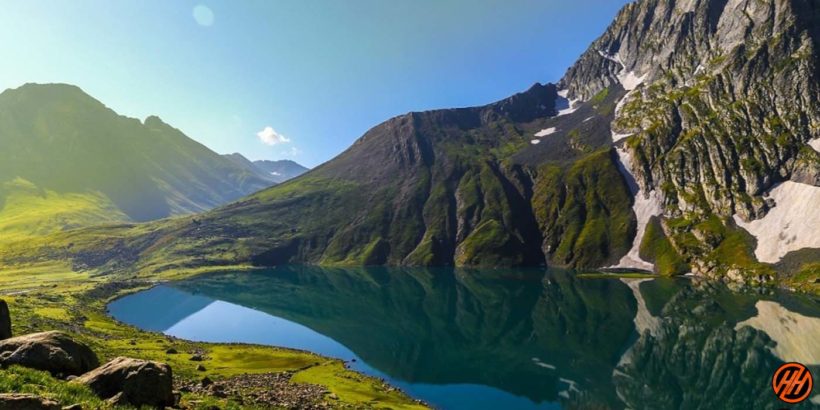
Description
Reviews (13), things to take, available dates, include / exclude, the kashmir great lakes trek is a perfect combination of adventure and natural beauty and is a must-do for any trekking enthusiast. 2024 -complete information .
Kashmir Ghati has always been compared to heaven because of its exotic beauty and fascinating places; untouched and serene. The Kashmir Great Lakes is an extremely beautiful trek because of “eight Alpine Lakes” in a series attitude is 13850 feet.

The Kashmir Great Lakes Trek is a popular trekking route in the Indian state of Jammu and Kashmir. The trek takes you through stunning alpine meadows, high-altitude lakes, and breathtaking mountain passes. It is considered to be one of the most beautiful treks in India.
During the trek, you will pass through several beautiful lakes, including Gangabal Lake, Nundkol Lake, and Tarsar Lake. You will also cross high-altitude mountain passes, such as the Nichnai Pass and the Gadsar Pass, which offer stunning views of the surrounding Himalayan peaks.
The best time to undertake the Kashmir Great Lakes Trek is from July to September when the weather is pleasant and the trekking conditions are favorable. However, it is important to note that the region is prone to occasional landslides and flash floods, so it is always advisable to check the weather forecast before starting the trek and to take appropriate precautions.
Their beauty is incomparable! During the trek, go through the lavish meadows, get panorama views of the mountains and explore the aqua-green alpine lakes. Certainly, each day on this trek is perfect!
The bliss is the heavenly meadows of Kashmir. A number of pine and maple trees grow here. Further, below Gadsar pass wildflowers grow in abundance and ahead the fields of Satsar are plain.
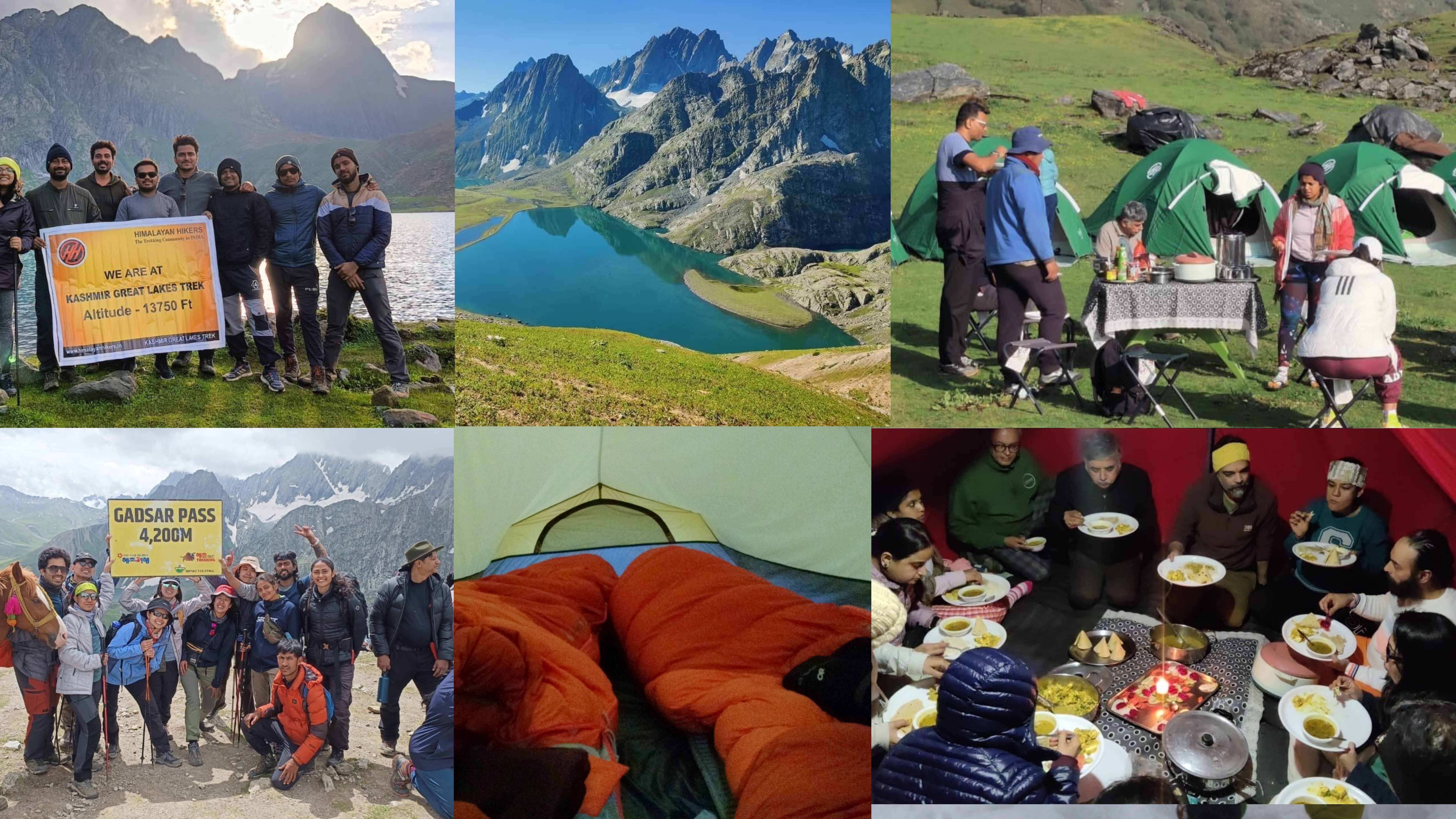
So, experience the grandeur of the Kashmir Great Lakes Trek and add it to the Diary of your Himalayan Journey!
On the trek every day you can see 70-degree views, beautiful meadows alpine lakes.
The Kashmir Great Lakes trek is a beautiful trek in the Himalayas, offering stunning views of alpine meadows, high-altitude lakes, and snow-capped peaks. It is difficult to say which part of the trek is the best as every day on the trail offers something unique and memorable. However, here are a few highlights of the Kashmir Great Lakes trek:
- Nichnai Pass: This is the first high-altitude pass on the trek, which offers panoramic views of the valley below and the surrounding peaks.
- Vishansar and Kishansar Lakes: These twin lakes are the most picturesque spots on the trek, with crystal clear water reflecting the snow-capped peaks in the background.
- Gadsar Pass: This is the highest pass on the trek and offers stunning views of the surrounding mountains.
- Tarsar Lake: This is another beautiful high-altitude lake, surrounded by lush green meadows and towering peaks.
- Sonamarg: The trek ends in Sonamarg, a picturesque hill station known for its stunning natural beauty and adventure activities like skiing and trekking.
Overall, the entire Kashmir Great Lakes trek is a feast for the senses, with breathtaking landscapes, diverse flora and fauna, and warm hospitality of the local people making it a once-in-a-lifetime experience
Key Points of Kashmir Great Lakes Trek-2024
Duration: – 06 Nights 07 Days from Srinagar to Srinagar
Base camp: – Shitkadi- Sonamarg
Monsoon Temperature: – Day (5°C to 17°C) Night (2° C to 8° C)
Altitude- Kashmir Great Lakes Trek – 13785 Feet
Best Time: – July August, September
Trek Level: – Moderate
Trek distance: – On foot 68 Km – By taxi 125 km
Group Size: 0 5 to 25 people
Kashmir Great Lakes Trek Day by Day Short Itinerary, Altitude, and Trek Distance|2024
DAY 01- Pickup Point TRC –Near Krishna Dhaba Srinagar| Pick-up time 1:00 pm | Drive to Shitkai Camp Himalayan Hikers ,
Drive Distance: 90 km | Duration: 03-04 hours | Altitude 8,625 ft | Overnight Stay Camp– Twin Sharing
DAY 02- Trek from Shitkadi to Nichani Thach | Trek Distance: 12 km | Trek Time: 6/7 hours | Altitude 11,605 ft | Overnight Stay Camp – Twin Sharing
DAY 03- Trek from Nichani to Vishansar via Nichani pass | Trek Distance: 13.5 km | Trek Time: 6/7 hours | Altitude 13,225 ft | Overnight Stay Camp – Twin Sharing
DAY 04 – Trek from Vishansar to Gadsar Lake Via Gadsar pass view point 13,785 ft| Trek Distance: 16 km | Trek Time: 7/8 hours | Altitude 10,725 ft | Overnight Stay Camp – Twin Sharing
DAY 05- Trek from Gadsar Lake to Satsar Lake| Trek Distance: 11 km | Trek Time: 5/6 hours | Altitude 11,995 ft | Overnight Stay Camp – Twin Sharing
DAY 06- Trek from Satsar Lake to Gangabal via Zaj pass viewpoint | Trek Distance: 09 km | Trek Time: 5/6 hours | Altitude 11,885 ft | Overnight Stay Camp – Twin Sharing
DAY 07- Trek from Gangabal Lake to Naranag Road head | Trek Distance: 13 km | Trek Time: 5/6 hours | Altitude 7,805 ft | Same Day Drive to Srinagar TRC- Distance: 2 hours | 70 km
The best part KGL Trek view of the Gadsar pass trek in Kashmir Great Lakes Trek
Get Amazed On Kashmir Great Lakes Trek, All of the lakes are amazing but Gadsar is untouched because of its high altitude (13800 feet above.
It lies against a glacier and is surrounded by a meadow where wildflowers grow in abundance. Therefore, it perfectly adds beauty to the picturesque valley.
The high Gadsar Pass offers lovely valley views and offers the sight of Kishansar and Vishansar– The two Lakes. On the other hand lies lavish grasslands of Gadsar valley.
The Kashmir Great Lakes trek is one of the most popular treks in India, and for good reason. Here are some reasons why people undertake this trek:
- Scenic Beauty: The trek offers breathtaking views of the high-altitude lakes, snow-capped peaks, and verdant meadows that are unique to the Himalayas. The landscape changes with every step, making it a photographer’s delight.
- Adventure: The trek is challenging and involves long hours of walking over rugged terrain. It offers a chance to push oneself physically and mentally and experience the thrill of trekking in the high mountains.
- Cultural Experience: The trek passes through remote villages where trekkers can interact with locals and get a glimpse of their way of life. This is a great opportunity to learn about the local customs, traditions, and cuisine.
- Wildlife: The trek passes through some of the most bio-diverse regions in the Himalayas, and trekkers can spot a variety of wildlife, including brown bears, musk deer, and snow leopards.
- Spiritual Experience: The trek takes you through some of the most pristine and serene landscapes in the Himalayas, offering a chance to connect with nature and experience a sense of inner peace and tranquility.
Overall, the Kashmir Great Lakes trek is a great way to explore the beauty of the Himalayas and experience the thrill of adventure in a pristine natural environment.
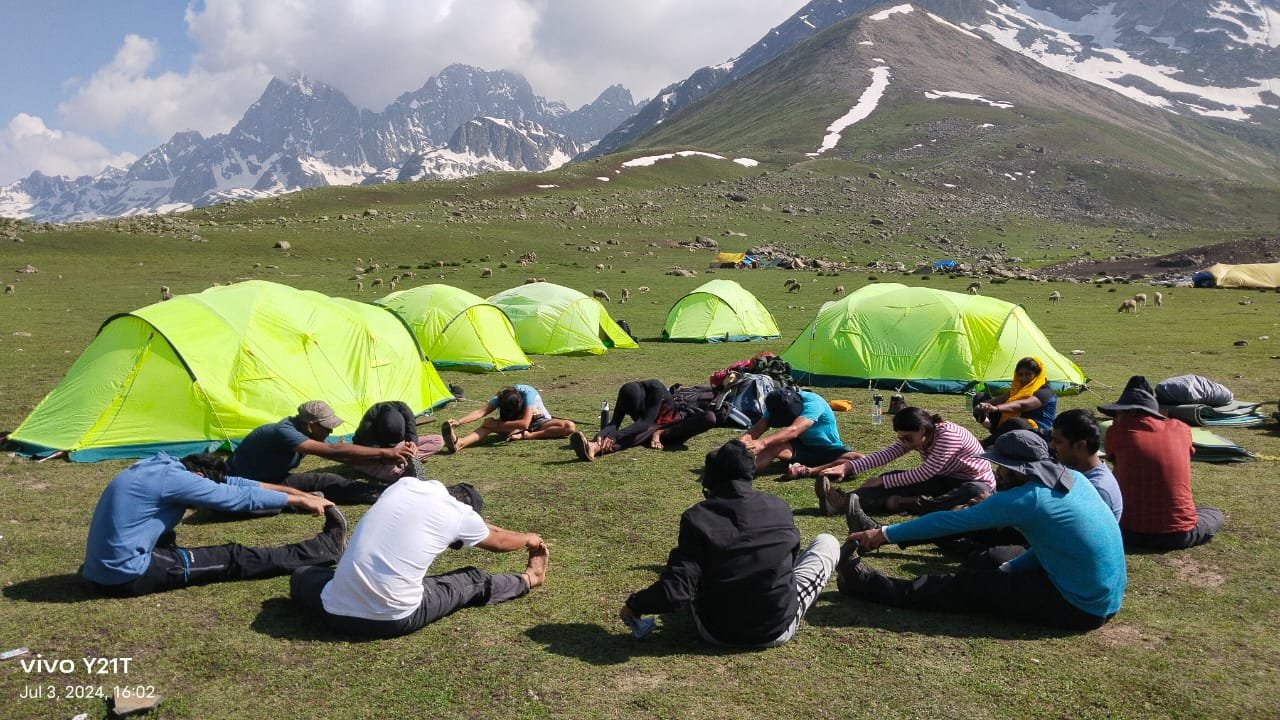
If you are planning to do the Kashmir Great Lakes trek, here are some main points to keep in mind:
- Trekking Season: The best time to do this trek is from July to September when the weather is pleasant and the skies are clear. However, the weather can be unpredictable, and it is important to be prepared for rain, snow, and cold temperatures.
- Fitness Level: The Kashmir Great Lakes trek is a moderate to difficult level trek, and it requires a good level of fitness. You should be able to walk for 6-7 hours a day over uneven terrain and at high altitudes.
- Altitude Sickness: The trek involves climbing to high altitudes, and altitude sickness can be a problem for some trekkers. It is important to acclimatize properly, drink plenty of water, and take necessary precautions to prevent altitude sickness.
- Permits: You need to obtain a permit from the local authorities to undertake the trek. The permit is usually obtained by the trekking agency you choose to go with.
- Equipment: You need to have proper trekking equipment like trekking boots, warm clothes, rain gear, and a good quality backpack. It is important to choose the right equipment as it can make a big difference in your comfort level on the trek.
- Environment: It is important to respect the environment and follow the ‘Leave No Trace’ principles. You should not litter or damage the fragile ecosystem of the Himalayas.
- Safety: You should always trek with a guide and ensure that you have proper communication equipment in case of an emergency. It is also important to carry a first aid kit and any necessary medication with you.
By keeping these main points in mind, you can have a safe and enjoyable trekking experience in the Kashmir Great Lakes region.
Best Time to Do Kashmir Great Lakes Trek
Kashmir Great Lakes Trek is a very beautiful and moderate trek in the Kashmir Valley, Kashmir Great Lakes Trek is great for those people who have a great passion for mountaineering. Hills and consider it a special purpose in their life.
We have been doing this trek for years Kashmir great lakes trek, we have every experience related to this trek. The right time to do this trek is from 5th July to the last of September, especially in the months of June, when green and colorful bugyal meadows, snow is found in abundance here, which makes your trek very memorable
During the day the temperature of the Kashmir Great Lakes trek is around ( 05°C to 18 °C and during the night the temperature comes down to 03 °C to 08 °C which is not bad.
You will never consider yourself boring in Kashmir great lakes trek, this trek can give you nothing but joy, You will get to see the culture and beauty of Kashmir valley in this trek which will always keep you connected to the mountain.
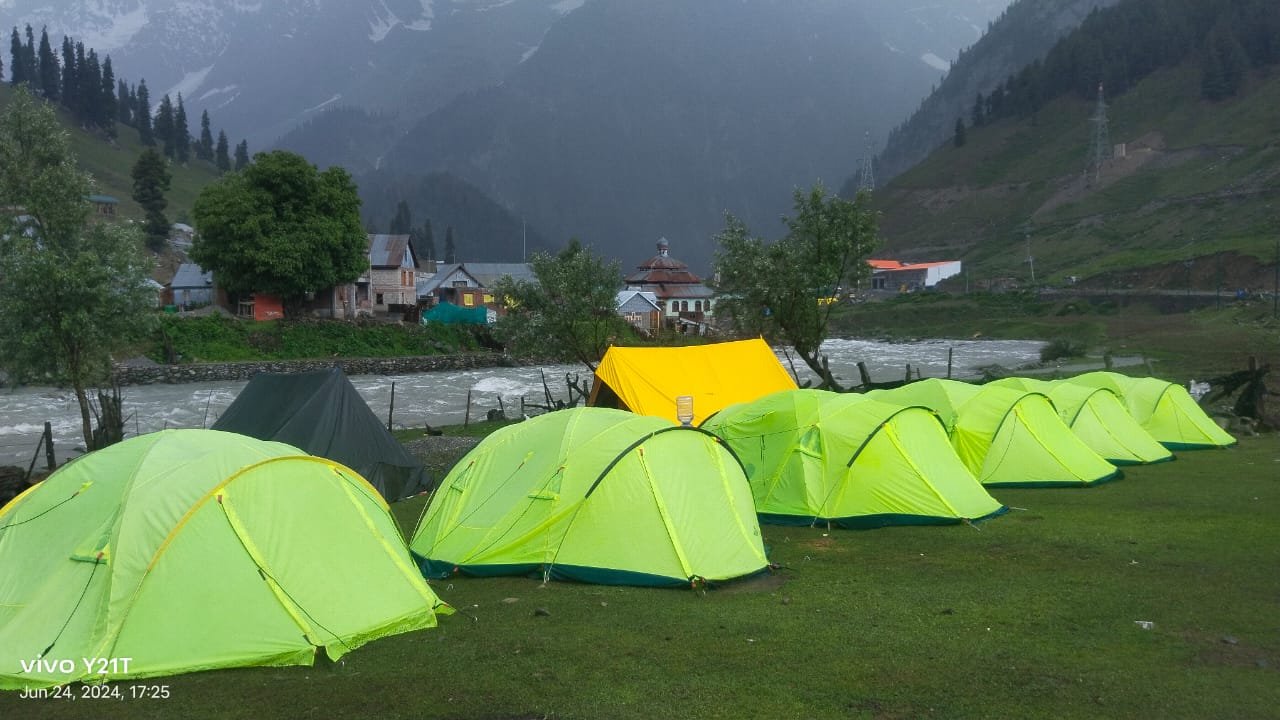
How Difficult Is Kashmir Great Lakes Trek?
The Kashmir Great Lakes trek is considered to be of moderate difficulty. It involves walking through various terrains, including meadows, forests, and rocky paths, with some steep ascents and descents. While it is not categorized as extremely challenging, it still requires a certain level of physical fitness and endurance.
Here are a few factors to consider regarding the difficulty level of the trek:
- Distance: The Kashmir Great Lakes trek covers a distance of approximately 68 kilometers (39 miles) over a span of 6-8 days, depending on the itinerary. This requires walking an average of 10-16 kilometers (5-6 miles) per day, which can be physically demanding if you are not accustomed to long-distance trekking.
- Altitude: The trek reaches an altitude of around 4,200 meters (13,780 feet) at its highest point. Acclimatization is crucial at such altitudes to prevent altitude sickness. It is recommended to take it slow, drink plenty of water, and listen to your body during the trek.
- Terrain: The trail includes steep ascents and descents, rocky sections, and uneven paths. Some sections may be slippery, especially during monsoon or post-monsoon seasons. Proper hiking boots with good grip are essential to navigate these terrains.
- Weather: The weather in the Kashmir region can be unpredictable. It is advisable to trek during the summer months (June to September) when the weather is relatively stable. However, even during this period, you may encounter rain, fog, or chilly temperatures, particularly at higher altitudes.
While prior trekking experience is not mandatory, it is recommended that you have a basic level of fitness and stamina to enjoy the trek comfortably. Regular cardiovascular exercises, such as jogging, cycling, or hiking, can help improve your endurance. It’s also essential to pack appropriate clothing, carry necessary supplies, and follow the instructions of your trek leader or guide to ensure a safe and enjoyable experience.
Kashmir great lakes trek safe for me?
Yes, Kashmir Great Lakes Trek is a safe trek if you are going with a good trekking team which you must know before booking yourself, It is important for you to know whether the bow trekking organization with which we are going is right or not,
And if possible, trek with a local trekking organization, you can do the same help all the time. then your trek can be very good and memorable
The minimum age required to trek the Kashmir Great Lakes trek is 15 years and the maximum is 55 years. The rest depends on your fitness.
Unusual Attractions of KGL Satsar Lake in Kashmir Great Lakes Trek
The meadows of Satsar are surreal and a stream flows through them. Satsar Lake is an addition to the beauty of the valley.
In addition, another attraction of this trek is the descent from Gangabal.
During the downhill, the trek gets the most surpassing views. Look backward and spot lofty Harmukh peak.
Further witness yellow flowers growing together and a single hut, this setting is idyllic. These settings can only be found in Kashmir.
Also, The Satsar Lake and green Bugyal are more beautiful Greenland in Kashmir valley; this is beautiful place stands in between high snow-covered peaks which together make an excellent sight.
On the other hand, the meadows remain covered in snow.
So, consequently, it turns out to be the most fantastic Monsoon trek in Kashmir valley. And, also an excellent Skiing destination.
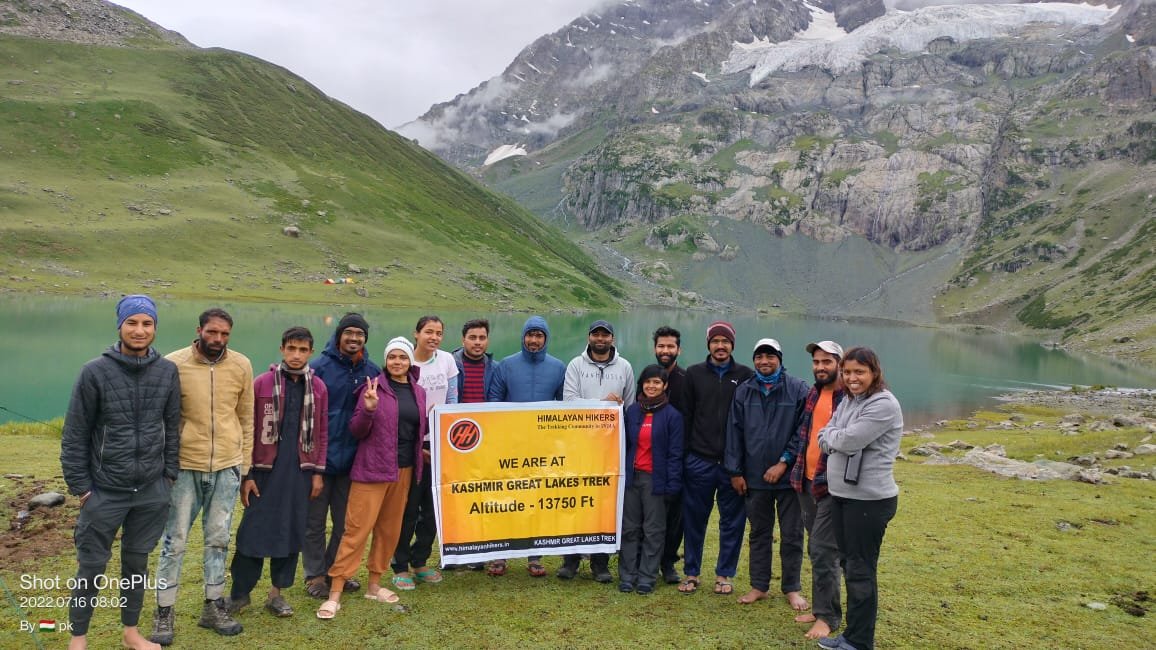
Why choose the Kashmir Great Lakes Trek?
Before heading towards the itinerary, it is really essential to perceive the reason behind choosing Kashmir great lakes trek.
See firstly, the trekking distance is a total of by taxi 125 Km from Srinagar to Srinagar and on foot 68 km which is to be covered in 6 nights and 7 days. From Srinagar to Srinagar
Kashmir Great Lakes trek is a low altitude mountain trek Altitudes is 13850 feet
The Starting trail is easy to moderate as compared to other treks this is a Moderate trek. So this trek is best for family and beginners.
Need proper gear & clothing for sub-zero temperatures?
Probably, You got to see so many heavenly bodies at one place like the panoramic view of the Himalayan ranges in Kashmir Ghati, you can see pine forests, different varieties of flora and fauna beautiful twin lakes surpassing bona fide Kashmiri culture.
Also, Do spare time in Interaction with our local team, and you will get to know about some of the ancient tales of Indian mythology and our local cultures, there is good ideas for trekkers
Beautiful landscapes so carry proper photo gear and extra battery backup.
The backpack should not exceed 12 kg only
Trekkers carry a photo ID, Adhar Card, Passport, Visa, Medical certificate, and trek insurance for entry at forest check posts on the trek it is very important
What should you keep in mind for the Monsoon trek to Kashmir Great Lakes Trek?
Kashmir Great Lakes Trek is as good as it is said, you also need to be prepared., Kashmir Great Lakes Trek is a Moderate trek that starts from Srinagar and ends after the trek same point,
So what are the special things to keep in mind before coming on this trek?
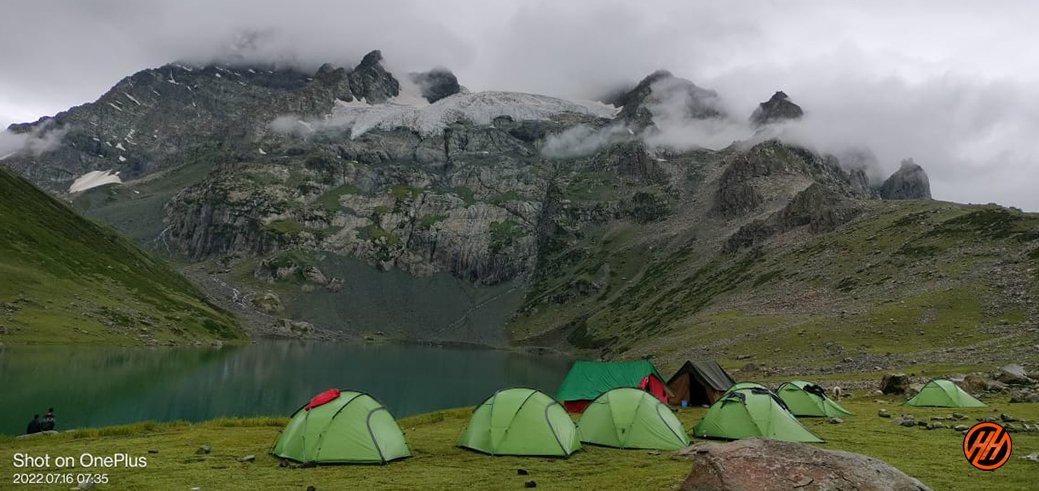
Summer Season
- Summer trek to Kashmir Great lakes Trek is very special, the view and the temperature are all favorable to you
- For summer trek, you have to bring only normal clothes, so that your trek can be good, there is no need for hot clothes, but in hiking it is also necessary to bring all the equipment which is necessary for you.
- It is necessary to have 2 pairs of clothes from trekking, especially the poncho, you will have to bring every season
- In the summer season, the temperature is always normal, so there is no need for hot clothes.

Monsoon Season
- During the monsoon season, it rains occasionally during the Kashmir Great lakes Trek, especially in the Kashmir valley, so if you have dry clothes here, it is very good, even when wet, it dries quickly.
- At this time you have to bring at least 3 pairs of clothes, for the monsoon trek you do not have to bring too warm clothes, at this time you, hiking pants and t-Sart, I can trek
- It’s only a little cold in the morning and evening and the day is a good temperature for you
- Before going on any trek, it will be easy for you to take information related to each season.
- Trekkers need to know about these, you can ask us anytime like, trek route, trek map, temperature, weather conditions, difficulty level, trek starting point, endpoint, transport, view of the trek, best time to visit, How to reach, trek distance etc, Trek Location, keep this information before going
ATM Point & Mobile connectivity in Kashmir Great Lakes Trek
ATM POINT: Withdraw money before your journey; Srinagar and Sonamarg is the last point where you will find ATMs.
Mobile Connectivity: There will be no networks during the trek, in Sonamarg your device will receive the networks. So make sure you finish all your important work and calls before starting the trek.
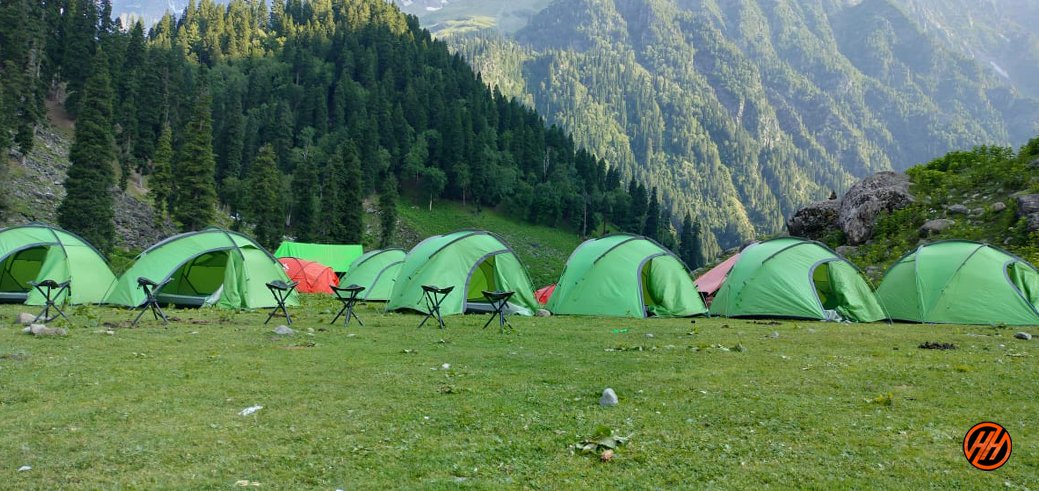
How to Reach Kashmir Great Lakes Trek?
- By Air: The easiest way to reach Srinagar is by air. Srinagar International Airport, also known as Sheikh ul-Alam Airport, is well-connected to major cities in India. Several airlines operate regular flights to Srinagar from Delhi, Mumbai, Bangalore, and other major cities. Once you arrive at the airport, you can hire a taxi or take a pre-arranged transfer to reach your accommodation in Srinagar.
- By Road: Srinagar is accessible by road, and you can choose to travel by private car, bus, or taxi. The road journey to Srinagar offers beautiful scenic views, especially if you are traveling from Jammu or other nearby regions. National Highway 1 (NH1) connects Srinagar to Jammu, and the journey takes approximately 8-9 hours. It is advisable to check the current road conditions and any travel advisories before embarking on a road trip.
- By Train: The nearest railway station to Srinagar is Jammu Tawi Railway Station, located in Jammu City. From Jammu, you can either hire a taxi or take a bus to Srinagar. The train journey to Jammu can be a convenient option if you are traveling from a city with a railway station. From Jammu, the road journey to Srinagar takes around 8-9 hours.
Will there be electricity in the Kashmir Great Lakes trek
Let me tell you that there is no electricity in the forest area of Kashmir great lakes trek. Here we use Stobe Light and or Solar Light, candlelight at the nights
If you come on this trek, then you should bring your own headlight and your camera with full charge, if possible, it would be good to bring extra battery backup, and also bring the phone after full charge, today people most phones use the same
You will get the last electricity only in our Home Stay Sonamarg base, where you have to charge the battery of your phone and camera at night.
What to pack for Kashmir Great Lakes Trek
Warm clothes, sleeves, wind shelter, comfortable clothing, and extra warm clothes so that you can enjoy trekking. A raincoat is the necessary
Footwear: A well-fitted trekking footwear shoes are highly recommended. If you wear an uncomfortable pair of shoes, your feet will be hurt.
Self-Certificate of Emergency Breakout
What we do during an emergency breakout in the kashmir great lakes trekking.
Trekking in the Himalayas is not a cup of tea but it is a rewarding experience. However, it’s important to keep things in mind when it comes to Safety. One must know about the weather conditions, the altitude gain, fitness, and other factors that can wreck your experience. In such adverse conditions, you are solely responsible for your well-being and act maturely.
Also, Read About – Safety Tips For Safe Trekking.
Preparations before the Trek
You’ve to understand that treks are away from cities and medical help is not always easily available. So, if you are heading for an adventurous trekking trip, stick to certain trekking guidelines and tips. Following these simple tips will help make the trek more fun and experiential for you as well as your fellow trekkers.
These tips and guidelines cater to useful and requisite information about your fitness training, packing and health precautions to be taken before and during the trek.
- Firstly, when you start, target 5 km in 40 minutes
- Then gradually increase your pace by running at least 4 times a week. Then try to bring it down to 5 km in less than 37 minutes
- If you are a person who prefers cycling over running then your target must be 22 km means you should be able to cover 22 km in 60 minutes.
- Walking is a great exercise that gives great shape to your legs and your body. It helps in burning calories and cut down excess weight and strengthens the heart.
- Jogging is effective in increasing the human lifespan and makes your lungs stronger. It is an aerobic activity that requires a lot of oxygen. This is a great exercise for fighting obesity and staying healthy.
- Squats are the best form of functional exercise to improve stability. They also strengthen your legs, thighs, hips, and hamstring.
- Another great cardiovascular exercise is pushing your body upstairs after stairs. This is regarded as the best exercise for increasing strength and power
What do we do during an emergency breakout in the Kashmir great lakes Trek?
First of all, the safety of trekkers is much more for us, if you see in the trek, then there are all the risks, which I do not think about.
Himalayan Hikers worry more about you than no one should ever have any problem in the trek.
What should we and you keep more safety in the trek
- Whenever you are going for any trek, it is very important that you go completely fit and ready.
- The trek is not difficult, if you make your feet and your mind calm and strong, you will find the trek very easy.
- While trekking, keep in mind that you are walking on the right route or not always with your guide.
- Most people look somewhere and where they are walking, this can cause twitching in your legs, which can ruin your entire trek.
- It is important to ask your doctor if you have any medical problems
- I should always keep my medical kit with me, it is very important.
- Himalayan Hikers always keep a medical kit with them, such as oxygen cylinders, and medicine to be given in an emergency on the trek
- If any trekkers have any more problems, then they are brought back to the base camp by laying them in the stretcher.
- Our camp in Kashmir great lakes trek is around 6000 feet to 13000 feet where you can not have any problem of oxygen
- In case of any medical problem, the help of your guide or well-informed trekkers should be taken
- If there is major health problems in Kashmir great lakes trek , then Nearest Hospital is in Srinagar which is about 81 Kms away from KGL Trek
- Along with the trek we keep getting acclimatization
Before embarking on a trek, it’s important for trekkers to prepare their bodies physically. Trekking can be demanding, and it requires a certain level of physical fitness to avoid injury and fully enjoy the experience. Here are some important fitness considerations for trekkers:
- Cardiovascular endurance: Trekking involves walking long distances and often at high altitudes, which can be challenging for the cardiovascular system. Cardiovascular exercises such as running, cycling, or swimming can help improve endurance.
- Strength training: Trekking requires strength in the legs, core, and upper body. Strength training exercises such as squats, lunges, planks, and push-ups can help build the necessary strength.
- Flexibility and balance: Trekking involves navigating uneven terrain and often requires the body to move in different directions. Stretching exercises and activities that improve balance such as yoga or Pilates can be helpful.
- Altitude acclimatization: If you’re planning a high-altitude trek, it’s important to acclimatize properly. This means gradually increasing your altitude over a period of days to allow your body to adjust to the lower oxygen levels.
- Mental preparation: Trekking can be mentally challenging, so it’s important to prepare yourself mentally as well. Practicing mindfulness, meditation, or other stress-reducing techniques can be helpful.
It’s important to remember that everyone’s fitness level and needs are different, so it’s a good idea to consult with a doctor or fitness professional before starting any new exercise program.
What to Pack for the Kashmir Great Lakes Trek?
When packing for the Kashmir Great Lakes trek, it’s important to carry the right clothing and essential items to ensure your comfort and safety during the trek. Here’s a list of items you should consider carrying:
- Lightweight and quick-drying trekking pants
- Full-length trekking trousers
- T-shirts (preferably moisture-wicking)
- Long-sleeved shirts (for sun protection)
- Fleece jacket or warm mid-layer
- Insulated down jacket or synthetic jacket for cold temperatures
- Waterproof and windproof outer shell jacket
- Thermal inner layers for colder nights
- Warm hat and gloves for cold weather
- Sun hat or cap to protect from the sun
- Trekking socks (wool or synthetic) for moisture control
- Thermal or woolen socks for colder nights
- Comfortable trekking shoes with good grip
- Backpack with rain cover (50-60 liters capacity)
- Sleeping bag suitable for cold temperatures
- Trekking poles for stability and reducing strain on knees
- Headlamp or flashlight with extra batteries
- Sunglasses with UV protection
- Water bottle or hydration bladder
- Snacks and energy bars for quick energy during the trek
- Personal toiletries (toothbrush, toothpaste, toilet paper, wet wipes, etc.)
- Sunscreen lotion with a high SPF
- Lip balm with SPF
- Basic first aid kit (including any personal medications)
- Trekking map and compass or GPS device (if self-navigating)
- Cash (carry sufficient cash as ATMs may not be readily available)
- Identification documents (ID card, passport, etc. Trek insurance, Medical certificate )
- Mobile phone with a portable charger or power bank
- Waterproof bags or covers to protect electronics and clothing from rain
- Camera or video equipment (if desired)
It’s important to pack light and carry only essential items to avoid unnecessary weight on your back. Additionally, check the weather conditions before your trek and adjust your clothing and gear accordingly. It’s always a good idea to consult with your trekking agency or tour operator for a comprehensive packing list based on the specific requirements of the Kashmir Great Lakes trek.
Himalayan Hikers – Provided food During the Kashmir Great Lakes Trek
– We serve five -05 times meals a day including- Breakfast, Lunch, Eevening Snakes, Soup, Dinner, A variety of delectable and healthy food is provided which includes; Indian, Chinese and other Western meals. They are nutritious and keep you fit and healthy on the trek.(Veg or non-veg food) With our local food and Day Pack, for Summit Day like fresh fruits
Food Menu – Roti + Rice + Salad + Papad +Matter paneer +Daal +mix veg+ daily more vegetable +sweet+ Bread +Omelets + jam + butter +Muesli, Milk+Banana+ Allo parantha +Tea & coffee Cornflakes, Milk +Egg bhurji +Bread, Peanut Butter +Pancake +Plain parantha +Fruits+ Porridge Oats+ +Bread & cheese +Poha +Boiled egg + Gulab Jamun+ Custard+ Jalebi+ Chilla +Honey+ Puri + Chole more
Note: – This is only list Himalayan Hikers Team or Cook provide you more healthy food and more items of per day menu
The type of food provided during a trek can vary depending on factors like the location, duration, and the trekking company or organization you’re with. However, there are some common types of food that are often included in trekking provisions:
- Carbohydrates : Foods high in carbohydrates provide energy for the trek. This includes items like rice, pasta, bread, and potatoes. More
- Proteins : Protein-rich foods help with muscle repair and recovery. Common protein sources include lentils, beans, tofu, meat (if available), eggs, and dairy products.
- Fruits and vegetables : These provide essential vitamins, minerals, and fiber. While fresh produce may not always be available, dried fruits and vegetables or canned options might be included.
- Snacks : Trekking often involves long hours of physical exertion, so snacks are important for quick energy boosts. Snacks like nuts, energy bars, trail mix, and chocolate are common choices.
- Local cuisine: Depending on the region you’re trekking in, you might also get the chance to sample local dishes. This can be a delightful way to experience the culture and flavors of the area.
Day 1 : Pickup to you from Srinagar TRC – Krishna Dhaba 1:30 Pm Drive to Shitkadi via Sonamarg Village-overnight stay Camp
Total distance – 90 km – 04 Hours journey
Mode of journey – By taxi- Innova- Sumo- Bolero
Altitude – Shitkadi camp – 7780 feet
Night stay – Camp – on twin share basis
Himalayan Hikers Arranged transport to you -Pickup to you TRC Srinagar -you have to reach Srinagar Reach your base camp in 4 hours. Overnight stay in camp.
The route from Srinagar TRC to Shitkadi via Sonamarg Village offers breathtaking views of the Kashmir Valley and the surrounding Himalayan mountains. Here’s a suggested route description:
- Start at Srinagar TRC: Begin your journey from the Srinagar Tourist Reception Centre (TRC), a central location in Srinagar, Kashmir.
- Proceed towards Sonamarg: From Srinagar, head north towards the picturesque town of Sonamarg. This leg of the journey takes you through beautiful landscapes, including lush green meadows, flowing streams, and tall pine forests. The road winds its way through the mountains, offering stunning views at every turn.
- Pass through Sonamarg: As you approach Sonamarg, you’ll be greeted by the majestic peaks of the Himalayas. Sonamarg, which translates to “Meadow of Gold,” is known for its pristine beauty and serves as a popular tourist destination.
- Continue towards Shitkadi: After enjoying the sights of Sonamarg, continue your journey towards Shitkadi. The road from Sonamarg to Shitkadi offers panoramic views of the surrounding mountains and valleys. You’ll pass through quaint villages and terraced fields, providing a glimpse into the local way of life.
- Arrive at Shitkadi: Finally, you’ll reach Shitkadi, a serene destination nestled amidst the Himalayas. Here, you can unwind and soak in the tranquility of the surroundings.
Shitkadi is few km away from Sonamarg and the trek starts from there, you have to reach Srinagar and vehicles will be arranged for you from there. Reach your base camp in 4 hours. Overnight stay in camp.
Day 2 : Trek from Shitkadi camp to Nichnai Camp
Total distance – 11 km – 6/7 Hours journey
Mode of journey – On foot
Altitude Nichnai – 11888 feet
Night Stay – our Camp – on twin share basis
The trek from Shitkadi camp to Nichnai Camp offers adventurers a chance to explore the rugged beauty of the Kashmir region. Here’s an overview of the route, location, and trek level:
- Start at Shitkadi Camp: Begin your trek from the Shitkadi campsite, which is likely situated amidst picturesque surroundings with views of towering mountains and lush greenery.
- Trek through the Valley: The trail initially leads through a valley, offering panoramic views of the surrounding peaks and meadows. You’ll pass through patches of dense forests and open meadows along the way.
- Ascend to Nichnai Camp: As you continue along the trail, you’ll gradually ascend towards Nichnai Camp. The path may involve moderate to steep inclines, depending on the specific route chosen.
- Shitkadi Camp: Situated in the Kashmir region, the Shitkadi campsite is likely located at an elevation with commanding views of the surrounding landscapes. It serves as a starting point for various treks in the area.
- Nichnai Camp: Located at a higher altitude than Shitkadi, Nichnai Camp offers trekkers a serene setting amidst the mountains. The campsite is often nestled beside a river or stream, providing a refreshing ambiance.
- Moderate The trek from Shitkadi Camp to Nichnai Camp is typically classified as moderate to challenging, depending on factors such as weather conditions, trail terrain, and individual fitness levels.
- Altitude Gain: Trekkers can expect a significant altitude gain during this trek, as they ascend from the lower valley to the higher reaches of Nichnai Camp. Proper acclimatization and pacing are essential to ensure a safe and enjoyable experience.
- Duration: The trek duration can vary based on the specific route taken and the pace of the trekking group. It may take several hours to reach Nichnai Camp from Shitkadi, with breaks for rest and sightseeing along the way.
Day 3: Trek from Nichnai camp to Vishnusar Lake.
Trek Distance – 13 km – 6/7 Hours journey
Altitude – Vishnusar – 12055 feet
The trek from Nichnai Camp to Vishnusar Lake offers trekkers a mesmerizing journey through the alpine landscapes of the Kashmir region. Here’s an overview of the route, views, trek level, and route details:
- Start at Nichnai Camp: Begin your trek from the Nichnai Campsite, which is typically located amidst scenic surroundings with views of mountains, meadows, and streams.
- Ascend to Nichnai Pass: The trail initially involves ascending towards Nichnai Pass, which may include moderate to steep inclines. Nichnai Pass offers panoramic views of the surrounding peaks and valleys.
- Descent to Vishnusar Lake: After crossing Nichnai Pass, the trail descends towards Vishnusar Lake. The path meanders through rocky terrain, alpine meadows, and patches of vegetation, offering stunning views along the way.
- Arrival at Vishnusar Lake: Finally, you’ll reach Vishnusar Lake, a breathtaking alpine lake surrounded by towering mountains. The crystal-clear waters of the lake reflect the surrounding peaks, creating a picturesque setting.
- Alpine Landscapes: Throughout the trek, you’ll be treated to breathtaking views of alpine landscapes, including snow-capped peaks, lush green meadows, and pristine lakes.
- Nichnai Pass: The ascent to Nichnai Pass offers panoramic vistas of the surrounding mountains and valleys, providing ample opportunities for photography and sightseeing.
- Vishnusar Lake: The arrival at Vishnusar Lake rewards trekkers with stunning views of the azure-blue lake framed by majestic mountains, creating a scene straight out of a postcard.
- Moderate : The trek from Nichnai Camp to Vishnusar Lake is typically classified as moderate to challenging, depending on factors such as trail conditions, altitude gain, and individual fitness levels.
- Altitude Gain: Trekkers can expect a significant altitude gain while ascending towards Nichnai Pass, followed by a descent to Vishnusar Lake. Proper acclimatization and pacing are essential for a safe and enjoyable trekking experience.
- Duration: The duration of the trek can vary based on factors such as trekking speed, weather conditions, and rest breaks. It may take several hours to complete the trek from Nichnai Camp to Vishnusar Lake.
- The specific route from Nichnai Camp to Vishnusar Lake may vary depending on trail conditions and local guidance. It’s advisable to consult with experienced guides or local authorities for the most up-to-date route information and safety tips.
Overall, the trek from Nichnai Camp to Vishnusar Lake promises an unforgettable adventure amidst the pristine beauty of the Kashmir Himalayas,
Day 4 : Trek from Vishnusar Lake to Gadsar Lake.
Trek Distance – 16 km – 7/8 Hours journey
Altitude – Gadsar Lake – 13850 feet
Night Stay – Camp site – on twin share basis
The trek from Vishnusar Lake to Gadsar Lake is a captivating journey through the scenic landscapes of the Kashmir Himalayas. Here’s an overview of the route, terrain, and key highlights:
- Depart from Vishnusar Lake: Begin your trek from the picturesque Vishnusar Lake, situated amidst towering peaks and pristine alpine surroundings.
- Ascend to Gadsar Pass: The trail initially involves ascending towards Gadsar Pass, which may include steep sections and rocky terrain. As you climb higher, you’ll be treated to panoramic views of the surrounding mountains and valleys.
- Descent to Gadsar Lake: After crossing Gadsar Pass, the trail descends towards Gadsar Lake. The descent may be steep in parts, and you’ll traverse through rocky terrain and alpine meadows.
- Arrival at Gadsar Lake: Finally, you’ll reach Gadsar Lake, a mesmerizing alpine lake surrounded by towering peaks. The pristine waters of the lake reflect the surrounding mountains, creating a stunning backdrop.
- Moderate to Challenging: The trek from Vishnusar Lake to Gadsar Lake is generally classified as moderate to challenging, depending on factors such as altitude gain, trail conditions, and individual fitness levels.
- Altitude Gain: Trekkers will experience a significant altitude gain while ascending towards Gadsar Pass, followed by a descent to Gadsar Lake. Proper acclimatization and pacing are crucial for a safe and enjoyable trek.
- Rocky Terrain: The trail may pass through rocky terrain, particularly during the ascent to Gadsar Pass and the descent to Gadsar Lake. Sturdy trekking shoes and trekking poles can be beneficial for navigating uneven terrain.
- Scenic Landscapes: Throughout the trek, you’ll be surrounded by breathtaking alpine landscapes, including snow-capped peaks, verdant meadows, and pristine lakes.
- Gadsar Pass: Crossing Gadsar Pass offers panoramic views of the surrounding mountains and valleys, making it a memorable highlight of the trek.
- Gadsar Lake: The arrival at Gadsar Lake rewards trekkers with the sight of its tranquil waters and the surrounding rugged beauty, providing a perfect spot for rest and relaxation.
- The specific route from Vishnusar Lake to Gadsar Lake may vary depending on trail conditions and local guidance. It’s advisable to consult with experienced guides or local authorities for the most up-to-date route information and safety tips.
Day 5 : Trek from Gadsar Lake to Satsar Lake.
Trek Distance – 11 km – 4/5 Hours journey
Altitude – Satsar Lake – 12100 feet
Cross a stream and go uphill, you will reach above the tree line but the trees and river will be visible below. As you go higher the altitude is gained and by trekking further you exit the river valley.
The trek from Gadsar Lake to Satsar Lake is another remarkable segment of the Kashmir Great Lakes trek, offering adventurers a chance to explore more of the region’s breathtaking landscapes. Here’s a detailed overview:
- Depart from Gadsar Lake: Begin your trek from the scenic shores of Gadsar Lake, surrounded by towering peaks and pristine wilderness.
- Traverse through Alpine Meadows: The trail from Gadsar Lake to Satsar Lake takes you through a mix of alpine meadows, rocky terrain, and patches of vegetation.
- Pass through High Altitude Passes: Depending on the specific route chosen, you may cross high altitude passes or ridges, offering panoramic views of the surrounding mountains.
- Arrival at Satsar Lake: The trek culminates at Satsar Lake, a cluster of seven interconnected lakes nestled amidst the mountains. The serene beauty of Satsar Lake is a sight to behold, providing a tranquil setting for trekkers to rest and rejuvenate.
- Moderate to Challenging: The trek from Gadsar Lake to Satsar Lake is typically classified as moderate to challenging, considering factors such as altitude gain, trail conditions, and individual fitness levels.
- Altitude Gain: Trekkers can expect some altitude gain during the trek, particularly if crossing high altitude passes or ridges. Proper acclimatization and pacing are essential for a safe and enjoyable trekking experience.
- Varied Terrain: The trail may encompass a variety of terrain types, including rocky paths, grassy meadows, and occasional steep sections. Trekking poles and sturdy footwear are recommended to navigate uneven terrain.
- Alpine Beauty: Throughout the trek, you’ll be surrounded by the stunning beauty of the Kashmir Himalayas, with panoramic views of snow-capped peaks, verdant valleys, and pristine lakes.
- Satsar Lake: The arrival at Satsar Lake is undoubtedly the highlight of the trek, offering trekkers the opportunity to witness the serene beauty of the interconnected lakes and their reflection of the surrounding mountains.
- Wildlife Sightings: Keep an eye out for various species of birds and wildlife that inhabit the region, adding to the allure of the trekking experience.
- The specific route from Gadsar Lake to Satsar Lake may vary depending on trail conditions, weather, and local guidance. Experienced guides or local authorities can provide updated route information and safety tips.
Overall, the trek from Gadsar Lake to Satsar Lake promises an unforgettable adventure amidst the rugged beauty of the Kashmir Himalayas,
Day 6 : Trek from Satsar Lake to Gangabal camp.
Trek Distance – 09 km – 5/6 Hours journey
Altitude – Gangabal – 11655 feet
Night Stay – our Camp – on twin/three share basis
Today’s trek will be a combination of ascends and descends, after half an hour of trekking you will come across the biggest and last Satsar Lake.
The trek from Satsar Lake to Gangabal camp is an exhilarating segment of the Kashmir Great Lakes trek, renowned for its stunning alpine landscapes and pristine lakes. Here’s an overview of the route, trek level, and highlights:
- Depart from Satsar Lake: Begin your trek from the scenic shores of Satsar Lake, which is a cluster of seven interconnected lakes nestled amidst the mountains.
- Traverse Alpine Terrain: The trail from Satsar Lake to Gangabal camp takes you through diverse terrain, including alpine meadows, rocky paths, and occasional steep ascents and descents.
- Pass through High Altitude Passes: Depending on the specific route chosen, you may traverse high altitude passes or ridges, offering panoramic views of the surrounding mountains and valleys.
- Arrival at Gangabal Camp: The trek culminates at Gangabal camp, situated near the shores of Gangabal Lake, one of the largest and most picturesque lakes in the region. The campsite offers stunning views of the lake and the surrounding peaks.
- Moderate : The trek from Satsar Lake to Gangabal camp is typically classified as moderate to challenging, considering factors such as altitude gain, trail conditions, and individual fitness levels.
- Altitude Gain: Trekkers can expect some altitude gain during the trek, particularly when crossing high altitude passes or negotiating steep sections of the trail. Proper acclimatization and pacing are crucial for a safe and enjoyable trekking experience.
- Varied Terrain: The trail encompasses a variety of terrain types, including rocky paths, grassy meadows, and potentially snow-covered sections, depending on the season. Trekking poles and sturdy footwear are recommended for stability and traction.
- Alpine Scenery: Throughout the trek, you’ll be surrounded by the breathtaking beauty of the Kashmir Himalayas, with panoramic views of snow-capped peaks, verdant valleys, and crystal-clear lakes.
- Gangabal Lake: The arrival at Gangabal Lake is a highlight of the trek, offering trekkers the opportunity to witness the pristine beauty of the lake and its reflection of the surrounding mountains. The serene ambiance of Gangabal camp provides a perfect setting for relaxation and exploration.
- Wildlife Encounters: Keep an eye out for various species of birds and wildlife that inhabit the region, including marmots, mountain goats, and elusive Himalayan ibex.
- The specific route from Satsar Lake to Gangabal camp may vary depending on trail conditions, weather, and local guidance. Experienced guides or local authorities can provide updated route information and safety tips.
Overall, the trek from Satsar Lake to Gangabal camp offers trekkers an unforgettable adventure amidst the majestic landscapes of the Kashmir valley Himalayas,
Day 7 : Trek from Gangabal to Naranag Road head ( 13 km) Same day Drive to Srinagar (70 km) (2/3) You will reach Srinagar by 6:00 to 07:00 pm.
Today’s trek is going to be knee breaking because descends are steep. Head downwards from the campsite along the stream, at the end of ridge descend towards meadow on right.
The trek from Gangabal to Naranag Road head is the final leg of the Kashmir Great Lakes trek, culminating in a drive back to Srinagar. Here’s an overview of the trek, drive, and estimated arrival time in Srinagar:
- Distance: Approximately 13 kilometers
- Route: The trail typically descends from Gangabal camp towards Naranag Road head, passing through alpine meadows, pine forests, and occasional streams.
- Trek Level: Moderate
- Duration: Depending on the pace of the trekking group and trail conditions, the trek from Gangabal to Naranag Road head can take around 2-3 hours.
- Distance: Approximately 70 kilometers
- Route: The drive from Naranag Road head to Srinagar usually follows a scenic route through the countryside, passing by lush green fields, villages, and winding roads.
- Duration: The drive typically takes around 2/3- hour, depending on traffic and road conditions.
- Arrival Time: Based on the trekking and driving durations, you can expect to reach Srinagar by 6:00 to 7:00 PM.
- It’s important to start the trek from Gangabal early in the day to allow sufficient time for both the trek and the drive back to Srinagar.
- Ensure that transportation arrangements are made in advance for the drive from Naranag Road head to Srinagar to avoid any delays.
- Consider factors such as weather conditions, daylight hours, and individual fitness levels when planning the trek and drive.
Overall, the journey from Gangabal to Naranag Road head, followed by the drive back to Srinagar, offers trekkers a memorable conclusion to the Kashmir Great Lakes trek, with the promise of reaching Srinagar by early evening.
Now you lose altitude and Naranag can be seen, come up to the village and then you enter the main road of Naranag. From here drive to Srinagar and probably reach there between 6:30 – 7:00 pm.
Mandatory Documents
Please carry the documents given below.
Original and photocopy of government photo identity card- (Aadhar Card, Driving License, Voters ID, etc, Passport and Visa important to foreigners Medical Certificate (First part should be filled by the Doctor and Second part by the Trekker) Declaration Certificates
Note: – Many trekkers commit the same mistake of carrying unnecessary items on a trek which only makes the backpack heavy. It is important to know the right items to carry. It differs from season to season if you are trekking in summers then carry less layers of warm clothing and if you are trekking in winters carry enough layers to protect yourself against chilly cold.
Necessary Items for trekkers

Backpack (50 to 60 liters) A strongly built backpack with good support is compulsory for a trek. (Rain cover is important)
Sturdy Trekking Shoes The shoes should be strong enough with good support. The people ask if sports shoes would be comfortable but it is good to bring the right trekking shoes.
The Clothes You Should Bring On a Trek Avoid keeping extra clothes because it only makes you backpack heavy.
Trek Pants – The jeans are never suitable for a trek so you need at least 2-3 trek pants for treks carry more for longer treks.
Jacket – Jackets are very important to carry on a trek it protects you against the chilly weather. So carry 2 jackets on a week long trek.
Layers of warm Clothing Carry warm woolen layers or fleece. Carry more layers during winter season (at least 2 to 3) and less during summer.
Thermals – The Temperature decreases at night so you might be need thermals for Night.
T- Shirts – Bring those t shirts which dry fast.
Poncho –They are needed if you are trekking on a Rainy day to keep you dry.
Hiking Pole
Water Bottle 2
Cap or Balaclava
Woolen and Waterproof Gloves
Socks (Woolen and Regular)
Torch head light
Personal Toiletry Items – (toothpaste, toothbrush, toilet paper, sanitizer etc.)
Carry Personal Medical Kit
Personal Medical Kit (Carry minimum 5 tablets and maximum 10)
Medicine for Altitude Sickness
Medicine for acidity and discomfort.
Fever and Headache Medicines
Pain Reliever
Motion Sickness Medicine
Medicine for Allergies
Medicine for Diarrhoea
Sprains Cream or Spray
Antiseptic Cream
Stretchable/Elastic bandage
Note:- Please take all medicines only when prescribed by the doctor. In case you face any problem during your trek, discuss and take advice from the Professional guide.
It is important to have some guidelines in place in case something unexpected happens. Here are some general guidelines that may be helpful:
- Have a first-aid kit: Make sure to carry a well-equipped first-aid kit that can be used to treat minor injuries and ailments.
- Follow safety protocols: It is important to follow all safety protocols and guidelines related to the trek. This includes staying on designated trails, avoiding risky or dangerous areas, and staying with your group.
- Have a communication plan: Make sure to have a communication plan in place in case of emergencies. This may include carrying a mobile phone or a satellite phone, or using a walkie-talkie to stay in touch with other members of your group.
- Know the local emergency services: Be aware of the local emergency services available in the area where you will be trekking. This includes knowing the location of the nearest hospital, police station, or rescue service.
- Carry proper gear and equipment: Make sure to carry appropriate gear and equipment for the trek, including proper footwear, warm clothing, and rain gear. This will help you stay comfortable and safe during the trek.
- Follow Leave No Trace principles: Follow Leave No Trace principles and leave the trekking area as you found it. This includes packing out all trash and waste, avoiding damaging vegetation, and respecting wildlife.
- Stay calm and collected: In case something unexpected happens, try to stay calm and collected. Assess the situation and take appropriate action to stay safe and help others in your group.
It’s also a good idea to consult with a local trekking agency or experienced guide before embarking on a trek, as they can provide additional guidance and support to ensure a safe and enjoyable experience.
Kashmir Great Lakes Trek FAQ
1. What is the Kashmir Great Lakes Trek? The Kashmir Great Lakes Trek is a breathtaking trek in the Kashmir Valley, known for its stunning alpine lakes, lush meadows, and panoramic views of snow-clad peaks. It’s considered one of the most beautiful treks in India.
2. Where is the Kashmir Great Lakes Trek located? The trek is located in the Kashmir region of Jammu and Kashmir, India. The trek typically starts from Sonamarg.
3. How do I reach the starting point of the trek? The trek starts from Sonamarg. Here’s how you can reach Sonamarg:
- By Air : The nearest airport is Sheikh Ul-Alam International Airport in Srinagar, about 80 km from Sonamarg. From there, you can hire a taxi to Sonamarg.
- By Train : The nearest railway station is Jammu Tawi Railway Station, about 300 km from Srinagar. You can take a bus or taxi from Jammu to Srinagar, and then to Sonamarg.
- By Road : Sonamarg is well-connected by road. You can take a bus or taxi from Srinagar, which is approximately a 2-3 hour drive.
4. What is the best time to visit the Kashmir Great Lakes? The best time to trek to the Kashmir Great Lakes is during the summer months of July to September. During this period, the weather is pleasant, and the meadows and lakes are at their most beautiful.
5. What is the duration of the trek? The Kashmir Great Lakes trek typically takes 7-9 days, including travel time to and from Sonamarg.
6. What is the difficulty level of the trek? The trek is considered moderate to difficult. It involves long walking days, steep ascents and descents, and traversing high-altitude terrain. It is suitable for trekkers with good physical fitness and some prior trekking experience.
7. What is the altitude of the Kashmir Great Lakes Trek? The highest point of the trek is Gadsar Pass, which is at an altitude of approximately 4,200 meters (13,780 feet).
8. What should I pack for the trek? Here’s a list of essential items to pack:
- Warm clothing (layers, thermal wear, down jacket)
- Waterproof jacket and pants
- Trekking shoes with good grip
- Trekking poles
- Backpack (40-60 liters)
- Sleeping bag (if not provided by the trekking company)
- Personal medical kit
- Water bottles and purification tablets
- Snacks and energy bars
- Raincoat/poncho
- Sunscreen, sunglasses, hat
- Flashlight/headlamp with extra batteries
- Toiletries and personal hygiene items
9. Do I need a permit for the trek? Yes, you need permits to trek in the Kashmir region. These can usually be arranged by your trekking company or obtained from local authorities in Srinagar.
10. What kind of accommodation is available during the trek? Accommodation during the trek typically includes camping in tents at designated campsites. The facilities are basic but comfortable.
11. Are there any risks or challenges on the trek? The trek involves challenges such as:
- Changing weather conditions
- Physical strain from long trekking days
- Altitude-related issues
- Navigating remote areas It’s essential to acclimatize properly, stay hydrated, and follow the guidance of your trek leader.
12. Is it safe to trek alone? While it is possible to trek alone, it is highly recommended to join a group or hire a local guide for safety, navigation, and a richer experience.
13. Can I do the trek if I have no prior trekking experience? The trek is moderately challenging and best suited for those with some prior trekking experience. Beginners should ensure they have a good level of physical fitness and perhaps undertake some shorter treks beforehand to build endurance.
14. What kind of food is provided during the trek? Most trekking packages include vegetarian meals, which are nutritious and catered to trekking needs. The food usually includes local cuisine, rice, chapati, vegetables, dal, and snacks.
15. What are some key highlights of the trek?
- Spectacular alpine lakes such as Vishansar, Krishansar, Gadsar, Satsar, and Gangbal
- Views of snow-clad peaks and glaciers
- Beautiful meadows filled with wildflowers
- Campsites beside stunning lakes
- Crossing high mountain passes
16. Are there any cultural or historical aspects of the trek? The trek passes through remote areas inhabited by the Gujjar and Bakarwal communities, offering a glimpse into their nomadic lifestyle and culture. The region is also rich in history and folklore.
17. What kind of fitness is required for the trek? A good level of fitness is required for the Kashmir Great Lakes trek. Regular cardiovascular exercise, such as jogging, swimming, or cycling, and leg strengthening exercises can help prepare for the trek.
18. What should I be aware of regarding altitude sickness? Altitude sickness can affect anyone above 2,500 meters. To minimize the risk:
- Acclimatize properly
- Stay hydrated
- Avoid alcohol and smoking
- Ascend slowly and give your body time to adjust
This FAQ should provide a thorough overview for anyone considering the Kashmir Great Lakes trek. If you have more specific questions, feel free to ask!
Are you Looking for Trekking Equipment on Rent?
If any trekker needs trekking equipment on Rent then Himalayan Hikers has the best trekking equipment available on rent.
There are many people behind this who are in great need of it, it is better to hire it at affordable price without spending much money for just a few days.
Rent Costs per Day
1. Hiking shoes Per day Rs. 100/-
2. Hiking Pant Per Day Rs. 100/-
3. Down Jacket Per Day Rs. 100/-
4. Hiking Pole Per Day Rs. 50/-
5. Headlight Per Day Rs. 50/-
6. Trekking Bag 50 to 60 litter Per Day Rs. 50/-
7. Gloves Per Day Rs. 50/-
Trek Equipment You can book directly at the Base Camp of your trek.
September-2024
07 Sep to 13 Sep 2024 (Open) 12 left
08 Sep to 14 Sep 2024 (Open) 07 left
14 Sep to 20 Sep 2024 (Open)
15 Sep to 21 Sep 2024 (Open)
21 Sep to 27 Sep 2024 (Full)
22 Sep to 28 Sep 2024 (Open) 11 left
What is Included In This Trek?
Transport Facility from Srinagar to Srinagar Both side (TRC Srinagar ) 1:30 Pm Pickup Time)
Forest Permit and entrance fee
Accommodation in tents on twin share basis
All meals: Breakfast, packed lunch, tea, coffee, snacks, soup and Dinner
High quality Dome tents
Sleeping bags
Separate Toilet tents – Ladies and Gents
Dining Tent
Dining Table
Good Experience Trek Leader guide and Technical guide
Medical Kit
Oxygen Cylinders
Crampons and Gaiters
What is not included in this Trek?
Personal toiletry Items
If you are a foreigner then your permit costs will be Rs. 2000/- extra which is not included in this package.
Aadhar card and +medical certificate+ Trek insurance are necessary for Indian people.
If you are a foreigner, then bring your visa and passport with you.
For Kashmir Great Lakes Trek, it is necessary to have medical certificate and trek insurance, without this permit will not be given. J.K Government or forest department
On the first day en route to base camp the breakfast and lunch are not included
last day en dinner are not included
Please carry your Tiffin/lunch box for Packed Lunch Day Time
If you don’t pick up your trekking bag yourself then if you need porters for that then its cost Per Bag per Day. 500.00 pay directly in the base camp
We serve three meals a day including snacks and soup. A variety of delectable and healthy food is provided which includes; Indian, Chinese and other Western meals. They are nutritious and keep you fit and healthy on the trek. (Veg food or Egg or Jain Food with fruits)
13 reviews for Kashmir Great Lakes Trek
Menaika Rodrigues – August 25, 2024
Indeed Best Trek
Aishwarya Naik – July 24, 2024
I recently completed the KGL trek with the HH team, led by Sonu and supported by Deepak and Wilayat as trek guides. Their dedication and hard work made the trek truly memorable. Despite facing terrible weather at times, the entire HH team remained patient, providing high-quality food and ensuring our experience was not hindered.
Kuldeep ji, the HH organizer, was extremely helpful, addressing all my queries before booking the trek. Throughout the journey, our trek lead and guides constantly motivated and entertained us, taking excellent care of the group. Over the six days, we bonded like a family, creating cherished memories.
The beauty of the KGL trek was enhanced by the wonderful people I was surrounded with. This experience is one I will always treasure.
Rehan Bijapuri (verified owner) – July 16, 2024
Me and my 3 other friends chose the KGL trek and Himalayan Hikers as the first trek of our life and we were truly amazed to see how well it was managed. Trek leaders like Sonu, Wilayat, and Deepak are gems. They ensured the safety of everyone and pushed beginners like us beyond our limits to go on an accomplish this trek. Proud of myself and the whole Himalayan Hikers team.
Mohammed Fazil – July 13, 2024
It was a great experience with himalayan hikers on this trek #KGL, all the trek leaders, sonu, wilayat and deepak were very patient, kind and helpful throughout our journey. They took good care of a group of 20 people and managed to provide a variety of good food during the trek. Wish to go on more treks with them in future. I highly recommend Himalayan hikers for smooth and safe treks.
Dhirender chand – July 13, 2024
I went on this trek with Himalayan Hikers, and it was an amazing experience. The team took care of everything, ensuring a smooth and enjoyable adventure. Special thanks to our trek lead Sonu and guide Deepak & Wilayat, who were incredibly active and caring, personally attending to our group of 20 people. The food was exceptional, with great variety and quality even in such remote mountains. I highly recommend Himalayan Hikers for anyone seeking adventure with the comfort of a caring team and excellent food. This trek was unforgettable, and I’m excited for my next adventure with them!
Rohan Ganti – July 11, 2024
The Kashmir Great Lakes trek is an extraordinary adventure through the Himalayas, offering a perfect blend of challenging terrain and breathtaking scenery. Starting from Sonamarg, trekkers experience lush meadows, dense forests, and rugged mountain passes. The trek’s highlights are its pristine lakes, including Vishansar, Kishansar, Gadsar, Satsar, and Gangbal, each reflecting the surrounding snow-capped peaks.
I would rate this trek difficulty 7/10
The guides and the team from Himalayan hikers, particularly Muddassir Rana and Monu, were incredibly helpful and informative, enhancing the overall experience. The food provided was good, and the stay at the camps was comfortable, ensuring a pleasant rest after each day’s trek. Overall, the trek was superb, making it a must-do for nature lovers and adventure enthusiasts.
Shree – May 8, 2024
Quick question: Are backpacks available for rent for the trek?
Himalayan Hikers – May 11, 2024
Prathibha Ramaswamy (verified owner) – September 3, 2023
This is my second trek with HH after Kedarkantha. The ground staff and the cook deserve special mention for taking good care of us and serving us delicious meals. Our trek lead Parvesh Rawat made sure we traversed difficult sections with ease when the body fails to listen to the mind. His Shabhash, chalo chalo kept us going. What I liked about HH and Parvesh ji was how they patiently allowed each one of us to find our own pace and not be pressurized by a norm.
Satheesh Reddy Pondugula – August 10, 2023
I had amazing experience with Himalayan Hikers, this second trek with them. Excellent tents with good food, very helpful staff. Trek guides addressing trekkers individually if someone is having problem. KGL is beautiful trek and with Himalay hikers it was more beautiful for me. Thanks to the team.
Himalayan Hikers – August 10, 2023
thanks Mr. Satheesh Reddy sir ji have a great day
Unnati Khanorkar – August 5, 2022
Overall it was great trek and special thanks to Kuldeep ji(organiser), Shaukat ji(Trek lead), Hari ji(the cook) and entire kitchen staff, Shahnawaz(helper boy) who took care of so many things and provided good hospitality at camps. But there can be few improvements like- Orientation should be there before starting the trek like before reaching to first army checkpost you need to install Twitter and follow army account, this took a lot time as there were no or limited network. The Manigam checkpost won’t allow you to pass after 5 pm because of that we had to stay at army checkpost on 30th July after the trek…if we would have been informed earlier we could have stayed in Sonmerg only… Othe than that food and organization at camps were nice. We are going to cherish this experience forever ?
Himalayan Hikers – August 5, 2022
Hi namaste Unnati ji – This experience of yours is special for us, we will do better in future. have a great Day
Rajat kumar – August 4, 2022
We had an good experience with team H.H, well equipment’s, food, guides special thanks Mr. Kuldeep ji and Amit bhai Parvesh ji you are super
Himalayan Hikers – August 4, 2022
Thanks Rajat sir ji – Your trek was good, it gives us more strength, most of all when you go well to your home after completing the trek
Prapurna – August 4, 2022
We had an amazing experience with Himalayan Hikers, we were a group of 11 al together and their team took care of everything starting from our health issues, food, comfort and were willing to fulfil any special requirement in their capacity. We definitely miss the talks of our tour guide Riaz/Mustaq/Visharad bhai, he has a fan base now, our trek leads – Monty bhai and Parvez bhai were amazing. Thanks to the entire kitchen staff and everyone who supported to make this trek a memorable one, we will cherish it throughout!
Thanks – Your experience will prepare our team to do better We continue to do the same work in future too – many thanks to you
Your email address will not be published. Required fields are marked *
Name *
Email *
Save my name, email, and website in this browser for the next time I comment.
Related Tours
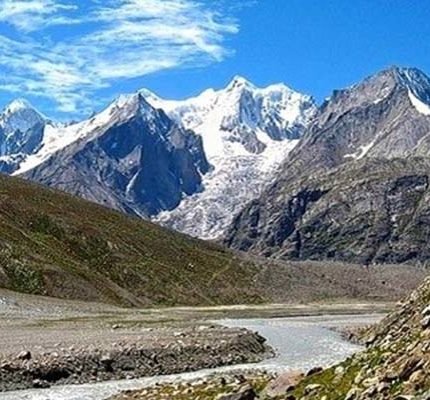
Rumtse to Tso Moriri Trek
Lake Moriri or Tso Moriri trek lies in the Jammu and Kashmir region.
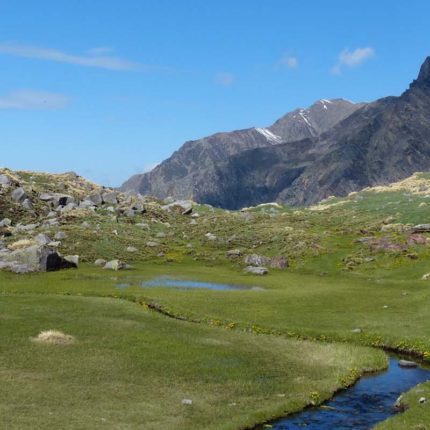
Obra Gad Trek
Obra Gad is amidst two idyllic valleys; Rupin and Supin
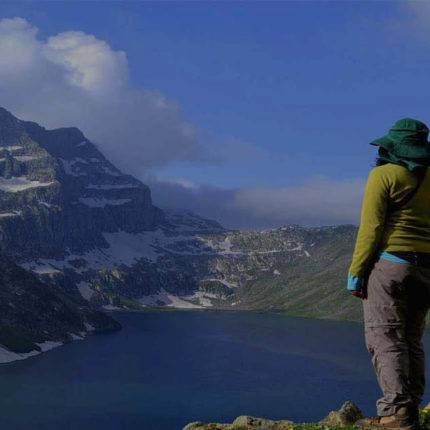
Tarsar Marsar Trek
Tarsar Marsar – the Prettiest Lakes in Kashmir -INDIA
Price: ₹ 15,000.00
Book the tour
Send a quick enquiry.
- Overview Itinerary Dates Include/Exclude
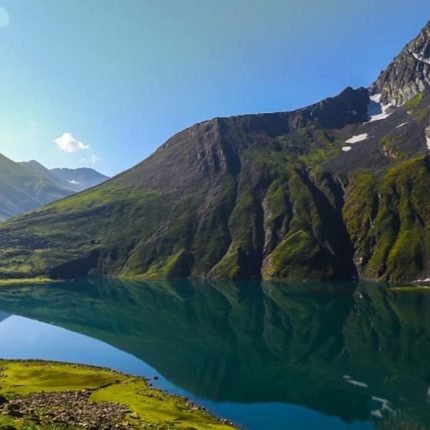

- International
- Food and Drink
- Places of Interest
- Sustainable
- What's new
- Celebrating People
- Hall of Frame
- Responsible Tourism
- MP on my Mind
- MP Wellness
All You Need To Know About The Kashmir Great Lakes Trek
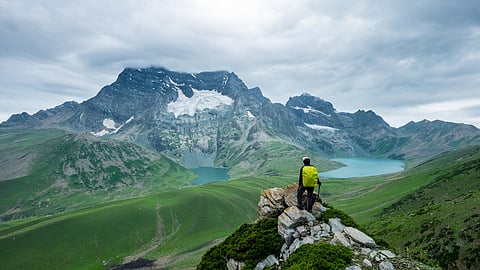
The Kashmir Great Lakes Trek is a challenging 6-day hike spanning 75 kilometres in the Western Himalayas of Kashmir. On an average, the trek involves more than 12 kilometres of hiking per day. It begins at Sonmarg and ends at Naranag, suitable for individuals aged 15 and above. Considering the terrain, it is advisable for trekkers to have prior experience on this climb. The Kashmir Great Lakes Trek is amidst peaceful valleys and towering peaks of the Himalayas, attracting adventurers from across the globe. This journey takes hikers through some of the most arresting landscapes imaginable, offering a glimpse into the Kashmir region's rich history, diverse biodiversity and unparalleled beauty. It is a true treat for the senses, from stunning azure lakes to lush green meadows, snow-capped peaks, and ancient villages. Here’s all you need to know about the Kashmir Great Lakes Trek before you embark with your friends on this adventurous journey.
Kashmir Great Lakes Trek

The Kashmir Great Lakes Trek is located in the northern Indian state of Jammu and Kashmir, which is often referred to as "Paradise on Earth." This region has a rich history influenced by various civilisations, including the Mughals, Sikhs, and British. The trek winds through the heart of the Kashmir Valley, offering breathtaking views of its famous lakes and surrounding mountains. It typically lasts 6-9 days and is graded as moderate in terms of difficulty. The elevation is around 13000 feet, and the distance covered is approximately 63 km. This trek offers a fulfilling experience where you can learn a lot about yourself physically and mentally. As a trekker, you'll experience the best of landscapes and adrenaline like never before. With proper preparation, this trek can be a happy and memorable experience you'll cherish forever.
Landscape And Biodiversity

The great trek stands out for its impressive array of wildlife and natural beauty. Trekkers will be surrounded by diverse flora and fauna, including rare species such as the Kashmir stag (Hangul), snow leopard, and black bear. The trek takes hikers through dense pine, oak, and rhododendron forests, where they will have plenty of opportunities to spot wildlife and watch birds. The trek's landscape is breathtaking , featuring seven stunning alpine lakes. Each lake offers a unique and unforgettable view, from the serene Vishansar Lake to the sparkling Gangbal Lake. Along the way, trekkers will also encounter vast meadows, towering glaciers, and cascading waterfalls, providing an immersive nature experience.
Places To See

Along the trek, hikers can witness places like Sonamarg, a beautiful hill station that serves as the starting point of the trek. It is known for its lush meadows and snow-capped peaks, which offer a picturesque view. Nichnai Pass is another attraction on the route, a high mountain pass that provides stunning views of the surrounding valleys and glaciers. Vishansar Lake is the first of the seven lakes on the trek. It is known for its crystal-clear waters and serene surroundings, which make it a beautiful spot to rest. Gadsar Lake is at an altitude of 3,800 metres and is one of the most beautiful lakes on the trek. It is surrounded by snow-capped peaks and alpine meadows, which make it a breathtaking sight. Gangbal Lake is the largest and most famous lake on the trek. Locals revere it as a sacred place and offer breathtaking views of Mount Harmukh.
Useful Information
To trek in the Kashmir Great Lakes region, you must obtain permits from local authorities. These permits can be acquired through registered trekking agencies or directly from the Jammu and Kashmir Tourism Department. The ideal time to go on this trek is from June to September, during the summer months when the weather is mild and the trails are clear of snow. However, trekkers should be prepared for sudden changes in weather, such as rain and snowfall. While trekking, you can stay in tents or homestays operated by local villagers. It is recommended to bring your own camping gear and sleeping bags, although some trekking agencies may rent out equipment.
Although generally safe, the Kashmir Great Lakes Trek entails some risks associated with high-altitude trekking, such as altitude sickness and extreme weather conditions. To avoid these, it is crucial to acclimatise properly and remain hydrated. It is also essential to heed the advice of experienced guides.
The Kashmir trails are buried under snow in all seasons except from the beginning of July to the middle of September, the best time to trek.
Getting There
The Kashmir Great Lakes trek begins at Shitkadi Village, which is about a three-hour drive from Srinagar and slightly ahead of Sonamarg.
Air : The nearest airport to Shitkadi Village is the Srinagar airport at 75 km.
Rail : Katra is the nearest rail head, or Jammu. Katra is 296 km from Shitkadi Village.
Road : You may also use a bus to reach Sonamarg, wherein the Shitkadi Village is located, from Srinagar.
Related Stories

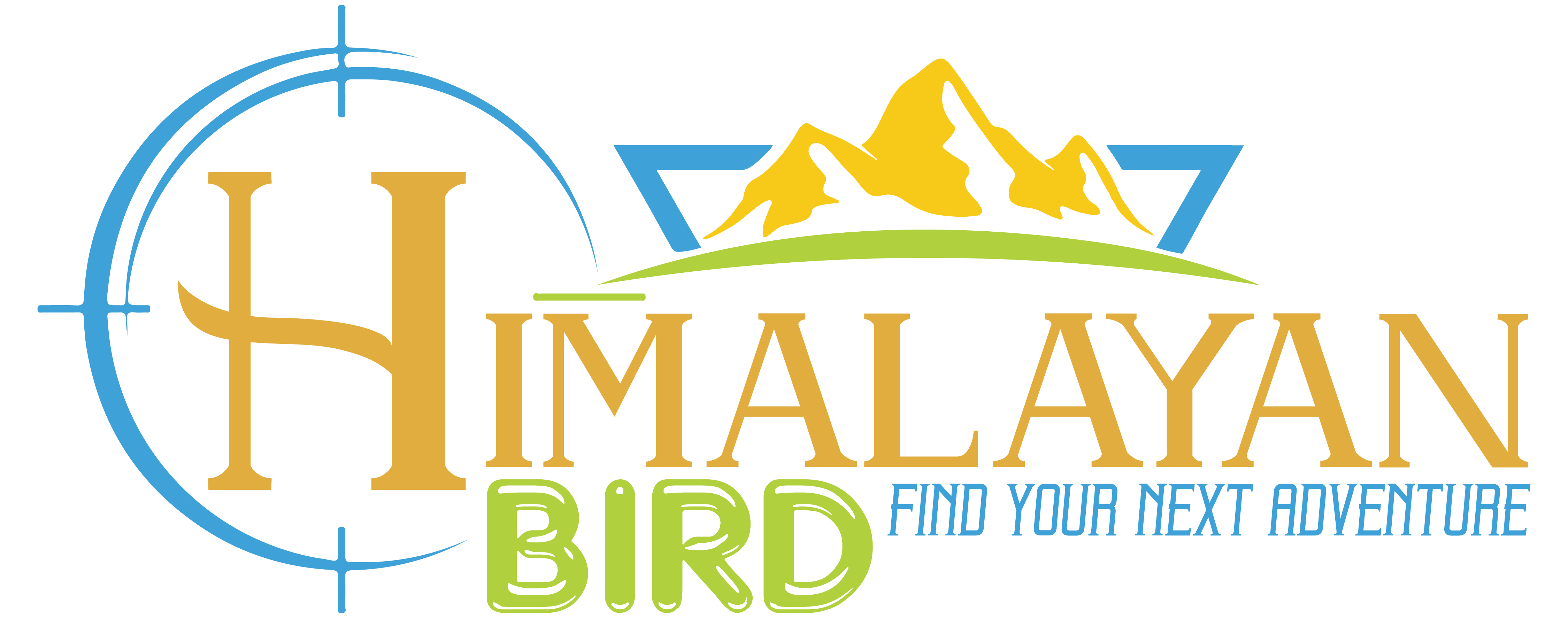
Kashmir Great Lakes Trek
- 6 night, 7 days
- Moderately Difficult
- Max. Altitude 4160 m.
Overview of Kashmir Great Lakes
Trek info navigation, what is included.
- INR 17000 INR On Fixed Dates
- 7 days, 6 nights
- Sharing Cab Transfers (Sxr to Sxr)
- Breakfast, Packed Lunch, Dinner
- Tea, Coffee, Snacks, Soup and Desserts
- Dinning Tents
- Kitchen Team And Tent
- Dome Tents (2P)
- Toilet Tents
- First Aid + BLS
- Professional And Experienced Trek Leader
- Hiking Assistance
- Bonfire + Veg Barbeque (Once)
- All camping Gears
- Trekking And Forest Permits
- Dal Lake Sightseeing
What is Excluded?
- Trek or Travel Insurance
- Load ferrying (offloading) - optional and costs Extra
- Meals During Travel (Enroute Basecamp and return)
- Internal Cab Transfers
- Personal Trekking Gear
- Medical Certificate
- Personal Medications
- Airport Pickup and Drop
- Accommodation
Quick Booing for KGL
Questions call us.
- +91-8899210442 (24*7)
Visit Our Office
Beauty of Kashmir Great Lakes Trek
Himalayan landscapes reflect a luminosity that is not present on the plains. Kashmir great lakes trek is full of psychedelic scenes of mountains peaks, meadows, and feelings of distant planet emerges from the heart while witnessing the sunrise and dawn breaking over the alpine lakes. After crossing the tree line at an elevation of 2000 meters the route of the great lakes trek provide amazing views of cliff valleys, glaciers views with sweet flowing water streams, and the meadows which are full of wildflowers. Great lakes trek is listed among the 5 best treks of India and is permitted for trekking purposes during the right season only by the Department of Tourism Jammu and Kashmir. The popular trails heads for great lakes trek are Naranag and Sonamarg. If you are gonna start trek from Naranag (closest village to this trekking trail), it will end up at Sonamarg and vice versa. We the team of Himalayan Bird offer you an amazing all-inclusive trekking deal for this trek with fixed group departures apart from that we operate private treks on the trail throughout the season.
Departure Dates for KGL 2024
- 27 June to 4 July | Group of 8 | 4 Vacant
- 5 July to 12 July | Group of 10 | 6 Vacant.
- 13 July to 20 July | Group of 10 | 6 Vacant.
- 21 July to 28 July | Group of 10 | 5 Vacant .
- 29 July to 5 August | Group of 10 | 6 Vacant.
- 9 August to 16 August | Group of 10 | 4 Vacant.
- 17 August to 24 August | Group of 10 | 9 Vacant.
- 26 August | 2 September | Group of 10 | 5 Vacant.
- 4 Sep to 11 Sep | Group of 10 | 6 Vacant
- 13 Sep to 20 Sep | Group of 10 | 5 Vacant
- 22 Sep to 29 Sep | Group of 10 | 8 Vacant
- 5 Oct to 12 Oct | Group of 12 | 10 Vacant
Harsh Weather Conditions, The Kashmir Great Lakes Trek is not permitted before 21 of June and after second week of October by the Department of Tourism Jammu And Kashmir.
How To Reach Srinagar, Kashmir
- Direct flights
Kashmir does have only one commercial Airport which we can reach by a direct flight of 1 hour 30 minutes from Delhi (DEL) Airport. All the flights from other parts of India reach via Delhi to Srinagar (SXR), Kashmir.
Direct Bus service to Kashmir from different states of India isn’t available but guests are advised to reach Jammu using Red Bus or any other bus service. Tourist taxi, Public transport And UT Government Bus Service will be available easily from Jammu to Srinagar.
The train services can be used up to Jammu And Banihal only. Tourist taxi, Public transport And UT Government Bus Service will be available easily from Jammu to Srinagar. The distance of 270 Km from Jammu to Srinagar is usually been covered in 6 to 7 hours.
Detailed Itinerary of Kashmir Great Lakes Trek.
Day 1: srinagar to sonamarg base camp (shitkadi)..
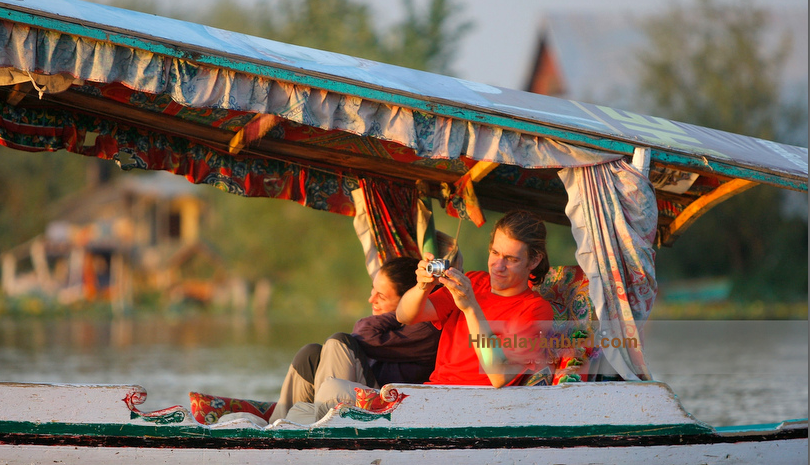
Day 2: Sonamarg Base Camp to Nichnai.

This awesome mountain journey starts from the popular and trending hill station which is Sonamarg. The first day of the trek is the easiest part of the trail. Our campsite for the Kashmir Great lakes trek is located at an elevation of 2500 meters above sea level on the banks of Sind river Sonamarg. Heading towards Shekdur, With the gradual ascent of one hour, we will be touching the tree line of pine forests. While looking behind an amazing panoramic view of Sonamarg, Tajiwas Glacier and surrounding snow-capped mountains make the view magnificent. The route seems to get to an end in between the tree line.
A narrow ridge that takes 30 minutes from its left corner to get into the beautiful meadow of Shekdur. This place is surrounded by different types of tree species like Birch ( Bhoj Patra), Boxwood (Shamshad), Deodar (Cedar), and Dogwood. This meadow is been used by gypsies and local shepherds for pasturing during summers. The gypsy houses and tents could be seen around the meadow. This mountain spot is a beautiful camping site too and by omission, the place is named Tabletop but in actual the name is given to the summit of the mountain nearby. Taking our early lunch break in this beautiful landscape makes the day memorable.
Experience during the first day of the trek.
After the break, it is 30 minutes gentle descend through the birch forests and one and a half hour gentle up ascent trek to the Nichnai campsite. During this normal up ascent trek to Nichnai Valley, trekkers will leave the tree line behind. Following the riverside, the route provides mind-blowing views of small waterfalls, snow-clad mountains, wildflowers. Kashmir’s great lake trek is full of adventure and joy also holds geographical importance. As we go higher from the left banks of the Nichnai river, the stream gets out of vision but splashing sound is always there.
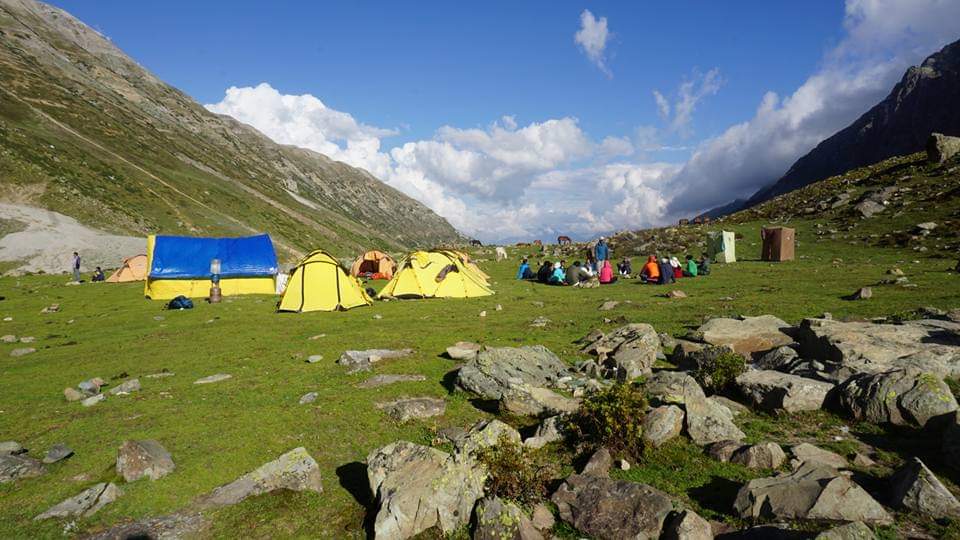
The landscape in the middle of Nichnai is mostly rough with rocky terrains and slopes so providing less land for comfortable camping. A green flat piece could be seen after leaving 2 parallel ridges behind. Sokhnai ( Valley of Rest ) is a small valley of the Nichnai Valley used for pitching tents. The great lakes trail remains covered with snow till the end of summer and the temperature remains around 8-15 degrees Celcius during the night. Nichnai is our camping site for tonight, Enjoy delicious and energy-boosting meals for dinner and sleep on time to stay fit. Tomorrow is going to be another day of thrilling adventure, explore different types of landscapes, and 2 breathtaking alpine lakes.
Day 3: Nichnai to Vishansar Lake.
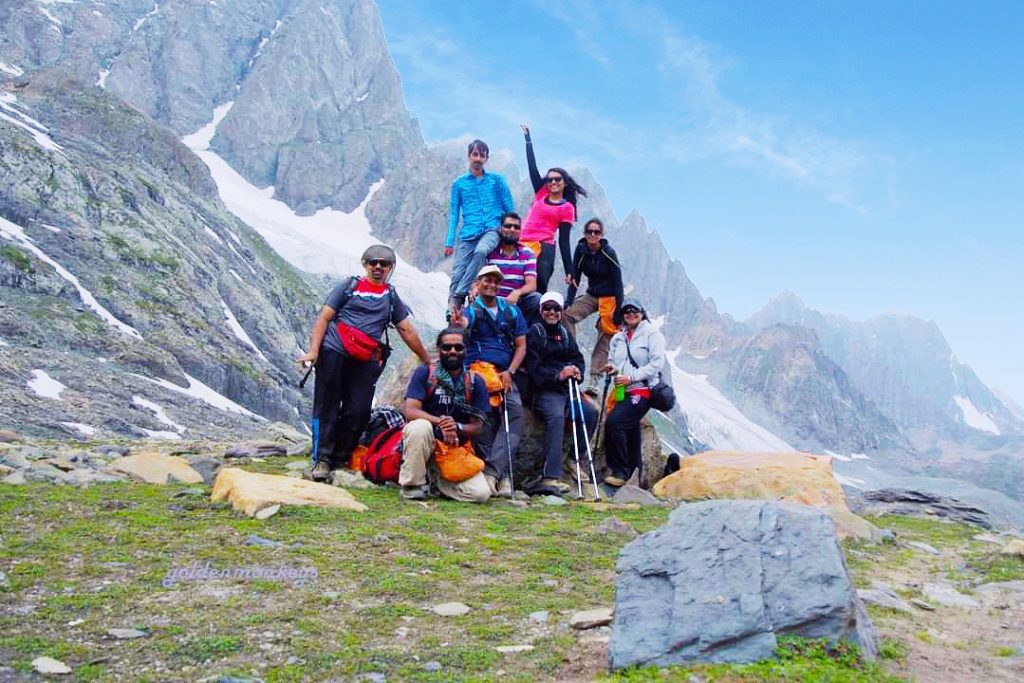
The trek from the camping site starts with a normal walk of 30 minutes and a moderate steep ascend of 180 minutes to get over the pass. The terrain towards pass is not too rough but due to high altitude and steepness in the up climb, it needs more push. The water stream of Nichnai comes to an end and the mind blowing view of lofty snow peaks provides the sense of the ore. The toughest part of the trek is over and we are at the elevation of 4114.8 MAMSL. (13500 feet.) The Herd of sheep grazing on slopes, small meadows, gypsy houses, and the mountain range of Zanskar is visible from Nichnai pass. This spot is named also Maggie point and the best match to relax, eat, and experience joyful views.
Easiest part of the trek, Nichnai Pass to Vishansar lake.

After crossing the pass the route turns right. Itis time to descend for the next 30 minutes with 2 hours of normal walk to cross the Valley of Vishansar Lake. The mountain peaks of this beautiful landscape remain under the convoy of clouds most of the time. A number of small snow-fed waterfalls mingle and form a crystal clear water stream that connects to the outflow of 2 great lakes. Small pebbles and stones fall down occasionally, due to the footsteps of folks of sheep and goats, grazing on the steep grass-covered slopes. Standing and walking in the valley of spiky mountain peaks fills the trek with the real wilderness. Walking parallel to the water stream will lead us to our campsite of Vishansar and Krishansar Lakes. Right after taking some rest, we will be exploring the Vishansar Lake which takes just 15 minutes from the camp.
Next to this Lake, there is another lake named Krishansar, the lake is triangular in shape and is 2 times bigger than Vishansar Lake. These lakes are the main sources of the Kishanganga river. In between a major river flowing from Dras, Kargil joins the stream and changes it to one of the biggest hydroelectric power-generating rivers of India. The river later enters Pakistan and called with the name of the Neelum river. Such giant water resources are building blocks for vegetation, drinking water, hydroelectricity for a huge human population.
Day 4: Vishansar Lake to Gadsar Campsite via Gadsar Pass.
The Kashmir great lakes trek is considered a moderate + difficult trek but also trek itinerary does have a direct impact on your physical stamina. Camping a full day and 2 nights at two great lakes is enough time to acclimatize and explore. One more step from us which makes your trekking more moderate is that your rucksack (10-15 kg ) is being carried out by horses during the whole trail.
Today is going to be more amazing and adventurous. We are at the elevation of 3600 meters and getting to Gadsar pass (Elevation – 4200 meter) is the first part of today’s trek. ( In the Kashmiri language ” Gad ” means Fish and “ Sar “ means High altitude water body). Starting the trek with a normal walk of 30 minutes and 90 minutes of a steep climb up to the top of Bari (“ Pass” ). On every step towards the ridge, the view of the beautiful mountain range gets bigger and adds a new thrill to the adventure.
Gadsar Pass of Great Lakes Trek
Most beautiful view of kashmir great lakes.
The most epic and popular view of the great lakes trail is from Gadsar pass. Two green bluish alpine lakes ( Vishansar and Krishansar ) in the lap of snow-capped peaks with the view of cliff valleys and snow dotted slopes in the background provide a breathtaking panoramic view. Such epic views of alpine landscapes are no were found in the whole world.
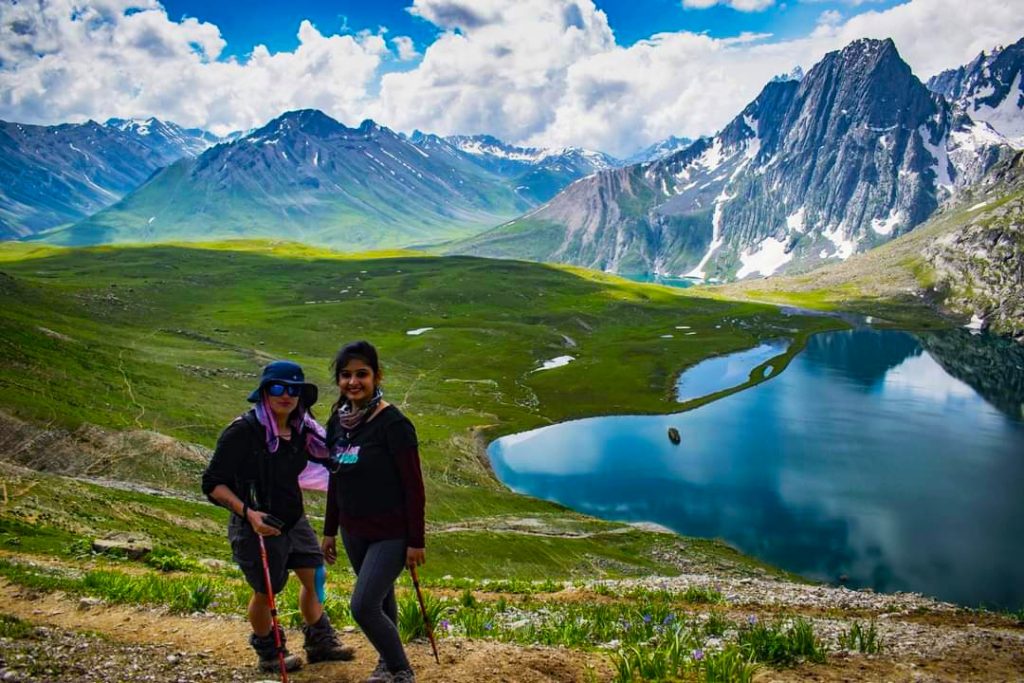
Alpine lakes covered with a vast zone of green lush grass and wildflowers are the next part of the trek. The route onwards the Gadsar pass is an almost normal walk through rolling slopes. Descending from the pass to 3500 meters, the route will take us to the third lake of the trail which is Yumsar. This high altitude water body is covered with wildflowers from the northern side and with solid rocky mountains from the other sides. Lake Gadsar is more than 60 minutes from a normal trek from Yumsar Lake. The surrounding landscape is a living habitat for Himalayan marmots and red foxes. The lake doesn’t provide optimum breeding conditions for trout fish, so they are not found in Yumsar.
A True Story about Nearest Village of Great Lakes Trek
We are walking parallel to a historic mountain village named Jabdoor. The village was one of the remotest villages of Gurez valley, connected through Tulail to district Bandipora of Kashmir. Till late 1990 Jabdoor was the closest village to the Kashmir great lakes trail, stretching to 2 square km. The village used to get hit by snow avalanches once in a decade. But the geographical phenomenon of nature changed and this human settlement got extremely dangerous avalanches in 1995. The villagers started moving to other nearby high altitude Villages and settled there. The remains of wooden structures and cemented bases are still there.
Day 5: Gadsar to Satsar Lakes.
The trail bends and forms a traverse to a small valley known as Mengondob, leaving the river of Menandob behind will take us to Satsar Lakes. The Lakes are providing different scenic views which depend on the season. During the month of June and July, the mountains are partially covered with snow which adds glory to the Valley but very few trekkers trek during this season. When it comes to flora, Kashmir’s great lakes trek always remains with wildflowers and a number of herbal plants from the time snow melts till the end of September. Exploring Satsar Lakes right after providing identity proof at Satsar Amry Camp ( 3rd line of control ). Our campsite is going to be an isolated valley of Satsar Valley and getting free after delicious having delicious meals. Tomorrow is going to an epic day of adventure, clear sky can give us chances to spot the 8000 m Peak of Nanga Parbat from Zajiball Top. Get free after dinner and proper rest will keep you ready for another day of adventure.
Day 6: Satsar to Harmukh Valley (Gangabal Lakes).
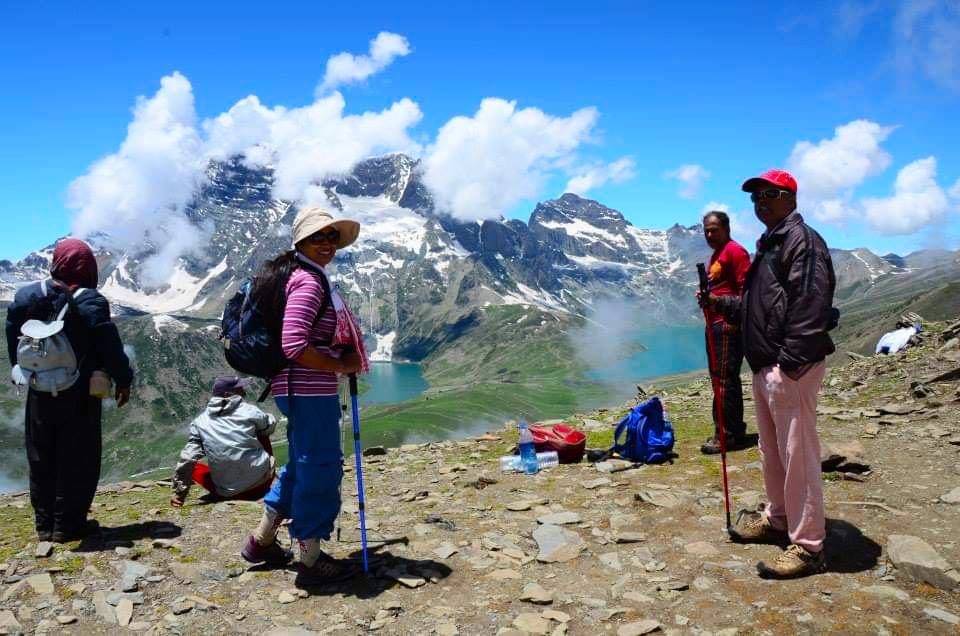
Waking up in this part of the Himalayan region is an adventure in itself and today is gonna be an epic day of the trek. Getting to Zojiball top from the Satsar campsite will take up to 3 – 4 hours which starts with a gradual ascent and descends with a steep ascent. The 40 percent of trek terrain is tricky and needs a little bit more push. Going through boulder walk and gaining altitude through the rough rocky mountain ridges. Going through zigzag routes over ridges will take you to the summit. The view is mesmerizing from the summit of the Zojiball, a mind-blowing view of two alpine lakes Nundkhol and Gangabal Lake in the lap of Mount Harmukh 5146 m ASL.
Once you are on the top Zojiball, the trekkers will have the chance to spot one among 8000 m mountain peaks of the world which is Nangaparbat 8126 m ASL using Binoculars. After taking a rest at the top and enjoying 360-degree views of the surrounding landscape it time for a steep descend of 50 minutes with a gradual descent of 30 minutes. Our campsite for tonight will be on the banks of Gangabal Lake with a giant mountain in the front. The temperature remains around 7 degrees Celcius (44 degrees Fahrenheit ). The campsite provides options for a campfire in good weather conditions, it is not uncommon to rain in the Valley of Harmukh during the late evening. We are at an elevation of 3500 meters and camping next to the lakes provides a fantastic camping experience with the real wilderness of the Himalayas.
Day 7: Harmukh Valley (Gangabal Lakes) to Naranag.
Kashmir Great Lakes Trek provides a lifetime adventure experience with picturizing views of Valleys, mountain passes, alpine lakes, cascading waterfalls with exotic wildflower beds. Kashmir Great Lakes but it does have great history too. In 1856 by members of the Great Trigonometric Survey led by Thomas Montgomerie, Mt. Harmukh was climbed for the first time. Montgomerie and other British Climbers made the first survey of the Karakoram mountain range from the summit of this mountain. The climbers sketched the two most prominent peaks, labeling them K1 (Masherbrum) and K2 about 130 miles ( 210 km) to the north of Mt. Harmukh. The surroundings mountains had been part of early climbing expeditions even when Tenzing Norgay wasn’t born. During this period of time, advanced mountaineering was just about conquering 4000 and 5000 m peaks.
Descending through the slopes of Mt.Harmukh towards Trundkhol meadow is the easiest part of the whole trek. The meadow of Trundkhol is pasturing mountain land for nearby Gujjar tribes and Shepherds. A number of gypsy houses and a Hut of the Department of Forest Protection will pass through the trek. Facing the Amry Camp while getting to the end of the meadow where we need to provide our identity information. Right after the Amry camp, we will enter the tree line at the elevation of 2950 m. For the next 40 minutes, the trekking route is moderate normal decent and provides a broad view of alpine valleys and glaciers. There are a number of small waterfalls on the route which could be used as a drinking water resource. The Gangabal route remains busy with gypsies grazing their cattle and transporting their needs on horses. The route makes turn through the forest and takes you to a small meadow which is actually Budhseri top. At this mountain spot, a Tea stall is set up during the summers where Maggie, Tea/Coffee, and Snacks are available.
FAQ's of the Trek.
1. what is the best time for kashmir great lakes trek.
The best time to do Kashmir great lakes trek is from July to the end of September . During this time, Kashmir Great Lakes Trek provides a lifetime adventure experience. The trekkers will able to explore picturizing views of Valleys, mountain passes, alpine lakes, glaciers, meadows, and cascading waterfalls with exotic wildflower beds. The route of Kashmir’s great lakes trek remains under the large scale of snow till mid of June.
Basically the best time to do trekking in Kashmir is from 15 May onwards but for the Great lakes trek, the perfect time is July to the end of Sep. During the month of June, the great lakes trekking trail is partially covered with snow, and the view is much different when compared to the remaining summertime. The trek can be performed during June also but needs crampons and some previous experience of high altitude trekking.
2. Can we do Kashmir Great Lakes in June?
The mountaineers and frequent high altitude trekkers can do this trek in June also. When it comes to nature lovers and adventure enthusiasts the best time to explore this landscape is July to Sep. During the month of October, the meadows of Kashmir great lakes trek turn brownish and the temperature also decreases. During winters everything changes to magical white icing but only peak summertime is meant to witness the miracles of nature. We, the team of Himalayan Bird operate treks and adventure tours in Kashmir and Ladakh throughout the year from more than a decade. We operate private treks also got fixed departure dates for all short and multi-day treks in Kashmir and Ladakh.
3. How difficult is Kashmir Great Lakes Trek?
The Great Lakes trek is a moderate difficult trek and on every Himalayan trek mental and physical strength is needed. If workout is already in your schedule that will surely help you to remain fit during the trek. Beginners and experienced trekkers must add walking plus running for 6 to10 km a day in your schedule. On an average trekkers will cover 6 to 7 km during this trek. The route of the trek is touching the valleys, passes and vast meadows with scenic view of mountains. The route is located in between the elevation of 3500 to 4000 m above sea level. Great lakes trek is an awesome lifetime trekking experience in the Himalayas of Kashmir. The trek can be too difficult for those who are totally new to trekking and not physically prepared.
Getting to Naranag - End of the Trek
The last part of the trek to Naranag is just a gradual descent of 10 Km. The zigzag route with steep descent over the small ridges of Harmukh Mountain. Mobile network coverage can be found at this point of the trek. The trail is surrounded by trees (Alder, Birch, and Deodar) on all sides. This part of Kashmir’s great lakes trek is a living habitat for a number of Himalayan birds and wild animals. The and Himalayan Monal, Himalayan snowcock (Tetraogallus Himalayensis), Snow partridge (Lewa), and snow pigeons are found in this region. Wangath river which originates from the Gangabal Lake and nearby Glaciers produces a melodious sound that makes the walk joyful. Due to the steep descent and roughness of the route the knees and toes get a lot of stress. Finally, a mountain village Naranag could be seen at an elevation of 2450 m ASL. The villagers earn their livelihood during summers by carrying loads of trekkers on their mules. Staying overnight in the guesthouses and relax with delicious food and traditional music ends the adventure. The trekkers will be transferred to the Airport or Srinagar on the next day. Enjoy free Dal Lake sightseeing before your departure to home.
Terms And Conditions for KGL Trek
* cancellation policy.
- Cancellation of any expedition/trek/tour must be notified immediately by writing an email to [email protected] or [email protected]. The cancellation of the trek will take place only after receiving a cancellation mail from your end.
- For any cancellation requested 40 days prior to the first day of any expedition/trek/tour, the full amount will be refunded with 10% of the amount deducted as a processing fee.
- For any cancellation requested between 40 to 30 days prior to the first day of expedition/trek/tour, only 50% of the amount will be refunded without any processing fee deduction.
- If cancellation is requested 30 days prior to the first day of expedition/trek/tour, there will be no refund.
- The rates/fees for the trek once decided will remain the same; however, if the group size is decreased from the client end, the trek fees may vary.
- In case of any untoward situation like a natural disaster, national emergency, terrorist activity, adverse weather conditions, or any other unforeseen situations, the refund may or may not be entertained which will solely be upon Himalayan Bird to decide.
* Medical Fitness for Great Lakes Trek
- Trekkers must get a recommendation from a registered medical officer/institute; getting a medical certificate is a must before embarking on an expedition/trekking. If you suffer from severe lung/heart/muscle disorders or any disease that can turn fatal, you are advised not to take any expedition/trekking with us.
- In case you lack the required fitness, or are suffering from diseases that have the potential of becoming fatal in the mountains/ high altitude, Himalayan Bird reserves the right to bar your participation from any expedition/trekking without any refund/compensation.
* Travel Insurance
- Trekkers/Guests are advised to have travel insurance cover. Our prices/fees don’t cover insurance or any other travel cover. Your travel insurance must cover accidents, injury, illness, and death medical expenses including any related to pre-existing medical conditions, emergency repatriation including helicopter rescue and air ambulance where applicable, and personal liability.
* Promotional Material And Identity Proof
- Himalayanbird.com reserves the right to take photographs/videos of participants and use them for any marketing/promotional activity. Any objection should be sent in writing before the commencement of any expedition/trek with us.
- Please carry valid Identity Proof. A valid passport and visa for all the tourists from outside India, and for Indians a valid identity proof preferably Aadhaar Card.
Kashmir Great Lakes Trek Operator/Guide
We are based in Srinagar, Kashmir and specified for Adventure and Eco Tourism.
Chandpora, Harwan Rd, Srinagar, Jammu and Kashmir 191123
If you got any questions? Talk To Your Trek Coordinator..
+91-8899210442
Get awesome deals by writing us an Email.
get social:
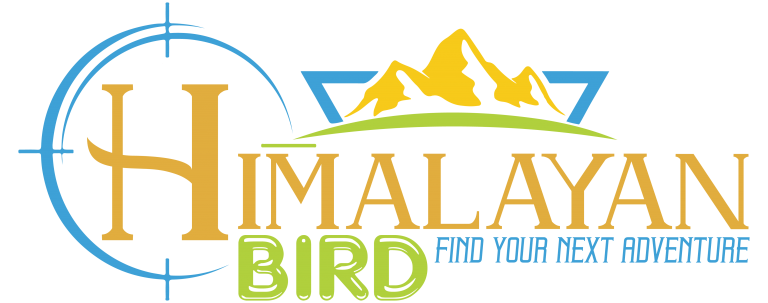
Immerse yourself in the lush landscapes, pristine lakes, and majestic peaks that define this region.
- Kashmir Great Lakes
- Tarsar Marsar Trek
- Gangabal Lakes Trek
- Short Treks in Kashmir
- Tulian Lake Trek
- Marchoi (Winter Trek)
QUICK lINKS
- Enquire Now
- Privacy Policy
Get In Touch
Chandpora, Harwan, Srinagar, Kashmir(UT), India
- Email: [email protected]
- Phone: +91-8899210442
- Hours: Mon-Sat 8:00AM - 9:00PM
© 2024 All Rights Reserved.
Embark on the extraordinary
Unveil the magic of Kashmir through our exclusive trekking offers
Kashmir Great Lakes Trek
Available batches, september 2024.
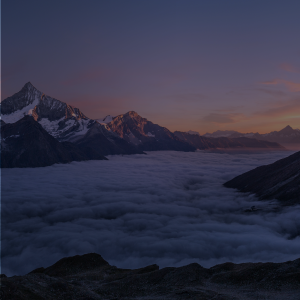
Brief description
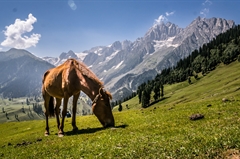
Brief Itinerary
Detailed itinerary.
Arrival at Sonamarg (2, 730 M)
Distance: 81 kms (Srinagar to Sonamarg)
Duration: 3 hours
Sonamarg, which translates to Meadow of Gold, is the starting point of the KGL trek. If you have opted for transport with Bikat Adventures, please ensure you board the vehicle from Dal Gate No. 1 in Srinagar latest by 12 PM. If you are traveling on your own, try to reach Sonamarg by 3-4 PM.
Although you have to report at the base camp only by 3 P.M, we recommend you come here early to explore the region. Home to some renowned peaks and glaciers of the Kashmir National Park, one can spot the Sirbal Peak, Kolahoi Peak, Amarnath Peak and Machoi Peak alongside the Machoi Glacier from here.
The drive from Srinagar to Sonamarg, although short, is a pleasant one to undertake. Once you are out of the city, there is barely any traffic and charming countryside vistas replace the cityscapes. About 30 kilometres into the drive, snow-capped mountains take over the horizon and sprawling, grassy meadows cover the lands on either side of the road as far as the eyes can see. The views enroute to Sonamarg are well worth a day trip from Srinagar!
The stay will be arranged in camps for the day. We will have a Team introduction after evening tea followed by an early dinner.
Sonamarg (2, 730 M) to Nichnai (3, 500 M) (Click to View GPS data)
Distance: 10 kms
Duration: 6 hours
We begin our trek at 9 am today from Shitkadi. The trail is a fair mix of ascent and descent. The gradient is moderate and plenty of water sources will be available for refilling water bottles along the way.
We begin by following a vehicle track that heads out of the main road of Sonamarg. This track descends all the way down to the Sind River from where the trail head for the Kashmir Great Lakes Trek begins.
The trekking trail from the trail head quickly ascends up. About ten minutes into the trek, the trail unanticipatedly enters a patch of rolling, green meadows overlooking the town of Sonamarg. This marks the end of civilization as we know it and the beginning of the beauty that is the Kashmir Great Lakes Trek!
Take a couple of moments to soak in the view here. The waters of the Sindh river glistening in the early morning sunlight as she makes her way through this tiny town hugged snugly on either side by gorgeous mountains is a sight to behold.
This view only gets fuller and more resplendent as you ascend further up the trail. It takes 30 minutes to the reach the top of the meadow. Maple, pine and silver birch trees dot the landscape here. From here onwards, it is an undulating climb across vibrant meadows marked by clear brooks and streams all the way up to Nichnai, your campsite for the day!
Nichnai (3,505 M) to Vishansar Lake (3,658 M) via Nichnai Pass (4,150 M) (Click to View GPS data)
Distance: 11 kms
We will be breaking camp early for the day and starting at 8 a.m. While the gradient is moderate, be prepared for long hours of walking. The scenery shifts winningly through the day ranging from a leisurely walk through expansive meadows, ambling along the banks of a river to a moderate ascent up the Nichnai pass followed by a sharp descent from the top of the pass.
We begin by walking along the river running through the Nichnai Campsite. On the way, look for feasible spots where you can cross the river. The Nichnai Pass is located at a distance on the other side of the river.
Once you reach the other side, continue walking along the river bank in the direction of the Pass (which can be spotted from the campsite itself). The trail ascends steadily for the next hour all the way to the top of the ridgeline that was visible from the meadow below. This ridgeline is not the Pass however. The actual pass begins after a couple of bends along the ridge.
The Nichnai Pass is a striking passageway set at 4, 150 M with snow clad mountains lining its left. There are no peaks on its right but the land rises there as well giving it the illusion of walking through a tunnel.
Once you reach the top of the Pass, it is a rapid and steep descent on rocky terrain to the meadows below. You will notice that colourful little flowers dot the grass here. A new river now flows from the Pass into this region. Multiple, narrow trails run into the horizon as far as the eyes can see.
Take one of these trails and continue walking ahead. Snow-clad mountains rise against the skyline on your left while your right hand side contains stretches of barren and rugged mountain faces. The sharp contrast in scenery only exaggerated further by the dewiness of the grass and flowers at your feet makes this one of loveliest meadow walk experiences on the Kashmir Great Lakes Trek.
Our campsite for the day is located two hours away beyond yet another river crossing and not far from an alpine lake with startlingly blue waters that is bound to have you hooked right from the moment you lay eyes on it. This is the all famous Vishansar Lake with its twin, Kishansar Lake, not far behind.
Buffer Day (Subjected to Weather Condition)
If the weather condition is bad, then we will use the buffer day which can be used to explore the lakes & acclimatize. The decision to use the buffer will solely be taken by the trek leader.
Vishansar Lake (3, 658 M) to Gadsar Lake (3, 810 M) via Gadsar Pass (4, 206 M) (Click to View GPS data)
Duration: 6 hours
Today’s trek is a steep two hour ascent followed by a steep two hour descent and then a gentle walk through the meadows. There will be ample water sources along the way to refill your water bottles.
Our trail begins with climbing a pencil thin ridge running along the mountain side near Kishansar lake. It takes about an hour and a half to reach the top of this ridge. About midway through your ascent, the mountains unfurl an arresting view of the Kishansar and Vishansar lakes together!
This view lasts until you reach the top of the ridge. What follows is an hour of steep descent after which the trail opens up into a bright valley with mountain ranges guarding it on either side.
The meadows of this valley are by far one of the most colorful you will be encountering on the trek, thanks to the bright red, yellow, purple and blue flowers popping out of the green grass. It makes you want to flop down and sneak in a nap after the steep climb up the pass. The Gadsar Lake lies beyond this meadow.
With piercing blue waters, the Gadsar lake is the most pristine of the seven alpine lakes primarily because it is the least visited. Quite a few make weekend trips from Sonamarg to Vishansar and Kishansar, more so make the trip on the other side of the trail; from Naranag to Gangabal. Gadsar, however remains untouched because of its location at the highest point of the trek which makes its accessibility tough.
Our campsite is one and a half hours away from the Gadsar lake, close to an Indian Army camp where all of our original ID cards will be collected, checked and recorded.
Gadsar Lake (3, 810 M) to Satsar Lake (3, 658 M) (Click to View GPS data)
Distance: 12 kms
The gradient for the day is mostly moderate barring the first one and half hours of steep ascent. Post that, it is a level walk all the way up to the next campsite.
The landscape on today’s trail stands in sharp contrast to the river valleys we have been trekking through till now. The terrain is rugged, desolate and captivating in its isolation. Meadows are scant and are marked by scattered patches of white flowers. Boulders and rocky terrain dominate the landscape with an occasional brook cutting through them.
We will be crossing an army camp today as well where our original ID cards will be collected, checked and recorded before letting us cross. Rolling grasslands once again take over the terrain beyond the army camp. Ten minutes away lay the first of the Satsar Lakes. Satsar is actually a group of seven inter-connected lakes situated in a narrow alpine valley stretching north to south. The lakes drain out into the Wangath Nallah which is a tributary of the Sindh.
Big and picturesque in its greenery and backdrop of the mountains, we will be setting up camp here for the day.
Satsar Lake (3, 658 M) to Gangabal Lake (3, 505 M) (Click to View GPS data)
Distance: 13 kms
Duration: 7 hours
We begin by taking the trail heading out of the Satsar Campsite. This section of the trail is exciting primarily because it is dominated by boulders. Most trekkers, we have noticed, are comfortable getting down on all fours when hopping from one boulder to the next. As fun as it may seem, do watch out for loose rocks that can make you lose your balance.
Beyond these boulders lie the largest and the last of the Satsar Lakes. After this, the trail descends for a good half an hour until we are confronted by ridge lines running across the mountains. It is time to gain altitude again. Be prepared for a steep ascent for the next three and a half hours. The terrain, you will notice, turns distinctly rocky and barren the farther we climb from the base.
Perhaps, it is to make up for the starkness of the landscape that KGL treats you with one of the most theatrical views of the trek right on top of this ridge- a vertigo inducing scene of the Gangabal and Nandakol lakes nestled snugly in the valley. Mist and fog playfully flit in and out of the scene hiding and revealing the twin lakes impelling you to take a break to watch the spectacle unfolding in front of you.
We will be setting up camp on the banks of the Gangabal lake. As is evident from the Pass, it is a very long descent from the top of the ridge to the campsite.
Unlike the other campsites, you will notice more trekkers and tents here. Gangabal and Nandakol are famous for trout fishing in the region. The Nandakol lake is bewitching in its setting. A jagged glacier clinging to slopes of the Harmukh Peak feeds the lake at its base. The play of light and clouds on the glacier are fascinating to watch!
Once you set up camp at Nandakol, take some time out to explore the Gangabal lake.
It is a short walk and a river crossing away from the campsite. The Gangabal lake, you will notice, is far less crowded than Nandakol and more tranquil in its setting. The water is clear near the banks revealing colourful pebbles on the waterbed. A mountain sits right on top of it. Remnants of a glacier clinging to its base feed this lake. It is a long and pleasant walk along its banks.
Once you are done exploring, ensure you return to your campsites before it gets dark.
Gangabal Lake (3, 505 M) to Naranag (2, 271 M) (Click to View GPS data)
Watch your toes and knees on the trail today because, as you have guessed it, we will be descending to the Naranag road head which is where our trek comes to an end. The distance is long and the trail gets steep at the end.
From the Gangabal campsite walk along the ridgeline that runs downstream towards the trees. It takes about an hour to reach the treeline. Continue walking along its fringe. For the first 7 kms or so, you don’t really lose altitude. There are gentle ascents followed by flat walks on lush grassy meadows.
You also begin to notice the beginning of civilization on the way. A hut or two dot the landscape and makes you wonder what it would be like to live there. Once you cross the 7km mark, the trail begins descending sharply. The track is mostly muddy and runs under a cover of pine trees. One or two kilometres into the descent, Naranag appears in sight but it is still a long way to go.
Expect to reach Naranag by afternoon. Our vehicles to Srinagar will be waiting there. We should be in Srinagar by half past 6 in the evening. If you are planning to travel out of Srinagar the same day, ensure you book your transport that leaves the city post 9 to account for any delays on the way.
What's Included
- Veg/ Egg Meals during the trek - Starting evening snacks on Day 1 till Lunch on Day 8
- Forest Permits/Camping Charges/Permits, Trek Permit Fee/IMF Permission (Upto the amount charged for Indian nationals)
- Camping tents (Twin sharing), Temp rated sleeping bags, mattress
- Safety Equipment includes static rescue rope, seat harness, carabiners, pulleys
- Mountaineering course certified Trek Leader with First Aid certification & customized rescue course from NIM
- Experienced Local guide, cook, helpers
- Porters or mules for carrying common luggage
- Exhaustive First Aid kit including portable oxygen cylinder
What's Not Included
- Meals during road journeys
- Any kind of Insurance
- Any expense of personal nature
- Any expense not specified in the inclusion list
- Portage of personal backpack
- Transportation to and from Srinagar
Are you Eligible for this Adventure?
Max Altitude

BRS Level Required
Kashmir Great Lakes Trek is a level 5 adventure on the Bikat Rating Scale.
This makes it mandatory for you to have high-altitude experience of preferably multiple treks marked at level 5 on the BRS. The altitude, the terrain and the nature of the climb demand a certain level of skill and a need for you to be aware of how your body reacts to the various features of high altitude environment.
If you do not know what level of BRS trek would suit you best, worry not! Fill out this Form:

we will send you a progression chart to help you comfortably get out of your comfort zone in order to level up and ultimately reach your highest potential in the big, bad world of outdoor adventure.
Climbing up to an altitude of 4,206 M, the trail switches between ascents and descents on most days making it relatively easy to navigate. The only challenge lies in building endurance needed to tackle the long distances (10 kms or more) one needs to cover each day. The trek is 69 kms long and is an excellent choice for beginners looking to step up their trekking game in the Himalayas. We recommend this trail for experienced trekkers as well, not for the challenges but for the sheer beauty and extravagance it houses.
Prequisite Skills
The trek demands a few mountain skills:

fitness benchmark
If you can do the following, physically you are ready to take on this trek:
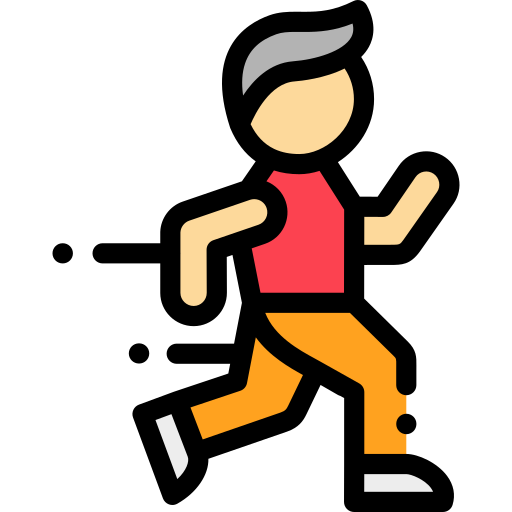
Packing List
This is a list of essential items for individuals doing the trek with Bikat Adventures. This list contains only those items which the participants are required to bring with them. The list excludes those items which are provided by Bikat Adventures on the trek. We have divided the items into five categories. All the items in the list are essential except for those marked as optional.
Trekking Gear
- Ruck sack bag with rain cover. Qty -1
- Day Pack Bag - Recommended for treks with summit day
- Head Torch with spare Batteries. Qty -1
- U V protection sunglasses. Qty -1 Here is how you can choose the best sunglasses for trekking.
- Water Bottles: 2 bottles of 1 liter each
- Non-skid, deep treaded, high-ankle trekking shoes Qty -1
- Pair of light weight Slipper/Sandals Qty -1
- Quick Dry Warm lower or Track Pants. Qty - 2
- Full sleeves T-shirts/ Sweatshirts. 1 for every 2 days of trekking
- Pair of thick woolen socks. 1 pair for every two days of trekking
- Thermal Body warmer Upper & Lower. Qty-1
- Undergarments. Qty - 1 for every day of trekking
- Warm jacket closed at wrist & neck .Qty-1
- Full sleeves sweater. Qty -1
- Rain wear ( Jacket & Pants ) . Qty-1
- Pair of waterproof, warm gloves. Qty-1
- Woolen cap. Qty-1
- Sun shielding Hat. Qty -1
- Personal toiletries kit (Small Towel, Toilet paper, paper soap, Bar soap, toothbrush, toothpaste, cold cream, etc.)
- Sun screen lotion small pack. Qty -1 Here is your Sun Protection 101 to stay safe in the bright sunny outdoors.
- Lip Balm small pack. Qty-1
- Small size, Light weight & Leak proof lunch box. Qty-1
- Plate. Qty- 1
- Spoon.Qty-1
- Tea/Coffee (plastic) Mug.Qty-1
Miscellaneous
- Camera (Optional)
- Carry your medicines in plenty in case you have any specific ailment. Consult your doctor before joining the trek.
- Dry fruits, Nuts, Chocolate bars (Optional)
Frequently Asked Questions
Eligibility, is this adventure good for me, what’s a good fitness benchmark for this adventure, what skills do i need to complete this adventure, what is the minimum and maximum age limit, about the activity, where is it located, what are some of its highlights, what are some of its challenges, what is the best season for this, what is the accommodation type, what is the temperature like here, is it technically challenging, connectivity, how do i reach the starting point, is there cellular network available throughout, where is the nearest atm, if i choose to travel to the base with you, what is the pick-up point, what time is the drop-off on the last day, what are the nearby attractions that i can explore, equipment & gear, what equipment is provided to us, what can i rent from you, where will i receive the rented items, where do i have to return the rented items, what gear do i need to bring, are there local shops to rent/buy equipment, facilities & additional services, can i offload my bag, can i leave any extra luggage i carry at the base of this adventure, what are the meals like, what are the washroom/ toilet facilities like, what should i do if i get my period on this adventure, what are the medical facilities available to me on this adventure, are there any electricity charging points on this adventure, mandatory documents, what documents do i need to carry, do i need insurance for this, do i need a permit for this, certification, do you provide a certificate of completion, when and how will i get the certificate of completion, international travel, will i need a visa, when should i apply for the visa, what kinds of insurance do i need to travel here, what is the specialty of this when compared to other mountain ranges, till which month can i make a booking for this, what is the qualification of the outdoor leader provided to us, how do you choose your outdoor leaders, is it safe for women, what is the ratio of outdoor leader to participants, what do you do in case of an emergency, what are the rescue options on this adventure, how do you choose your equipment, can i attempt this adventure if i have a specific medical condition, sustainability, what kind of camping do you practice on your outdoor adventures, why are you against fixed camping in the outdoors, how do you manage overcrowding on certain trails, what are some things to remember when using a dry toilet, why should i avoid wet wipes in the outdoors, where should i dispose of my sanitary waste if i am on my period, why should i carry my own utensils on an outdoor adventure, booking process, what happens after i make the payment, do you create a whatsapp group of participants before the start date of the activity, do i need to submit a medical certificate, do i need to submit an undertaking form.
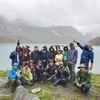
Small Group Size
Our batch sizes are capped at 15 for smaller treks with the trek leader and trekker ratio of 1:8. This ratio, in our years of experience, has proven to deliver the best trekking experience for individuals as well as groups. Capping the size of the group ensures individual attention to each trekker so that no signs of distress or need during the trek go unnoticed. It also helps to form a more cohesive cohort with better group energy which helps define the rhythm and pace of days on the trek. As you go higher up on the BRS scale, since the stakes are higher, expeditions have an even smaller group size with the ratio of expedition leader to climber set at 1:2.
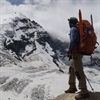
Qualified Trek Leaders
We follow a rigorous regime of hiring and training our experts in the field. Each trek leader is a certified mountaineer with years of experience in the field. In addition to their qualification, they also go through practical and situational training to tackle any and all kinds of sudden conditions that may present themselves on the ground. Being unpredictable is the core nature of the mountains but being ready for any circumstance as best as possible is a controllable asset that we try to nurture. Our field experts are also trained in basic medicine and first-aid response. Watch: Forerunners - The Making of A Trek Leader At Bikat Adventures
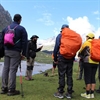
Guided Progression
Since Bikat Adventures is a learning-based organization, we help you climb up the ladder of difficulty within the sphere of outdoor adventure systematically. Our on-ground training modules are designed to handhold you through the upskilling process so that you are ready to take on bigger challenges.
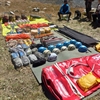
Equipment Quality and Check
All the gear used on our treks and expeditions is tried and tested, maintained for good quality, and is overall top-notch in quality and condition. We are continually looking to obtain the best of everything there is in the market so as to ensure optimum safety.
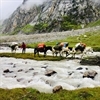
Support Systems
Along with the staff you see on-ground, we have a team of superheroes working in the background to give you the best experience possible. Our background team also comprises local staff from each area who know the region best. Having local support helps with studying the area, pre-planning, execution, and in receiving timely support in case of emergencies in these remote locations.
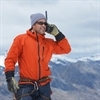
Communication
Our on-field staff is in constant contact with our teams based in primary locations so as to eliminate any avoidable delay in reaching additional help and support when required. We try to use the best tools for communication available, including satellite phones, in regions where they are not restricted.
What our customers Say

Cancellation Policy
Cash refund
Cancellations up to 30 days prior to departure date
5% deduction
Cancellations between 30 days to 15 days prior to departure date
50% deduction
Cancellations within 15 days prior to departure date
Voucher refund
Cancellations up to 5 days prior to departure date
No Deduction
Cancellations within 5 days prior to departure date
- Cash refund is applicable only in case of bookings made without using any promotional offer code or vouchers
- This is only a brief of cancellation terms. For finer details please refer Detailed Cancellation Policy.
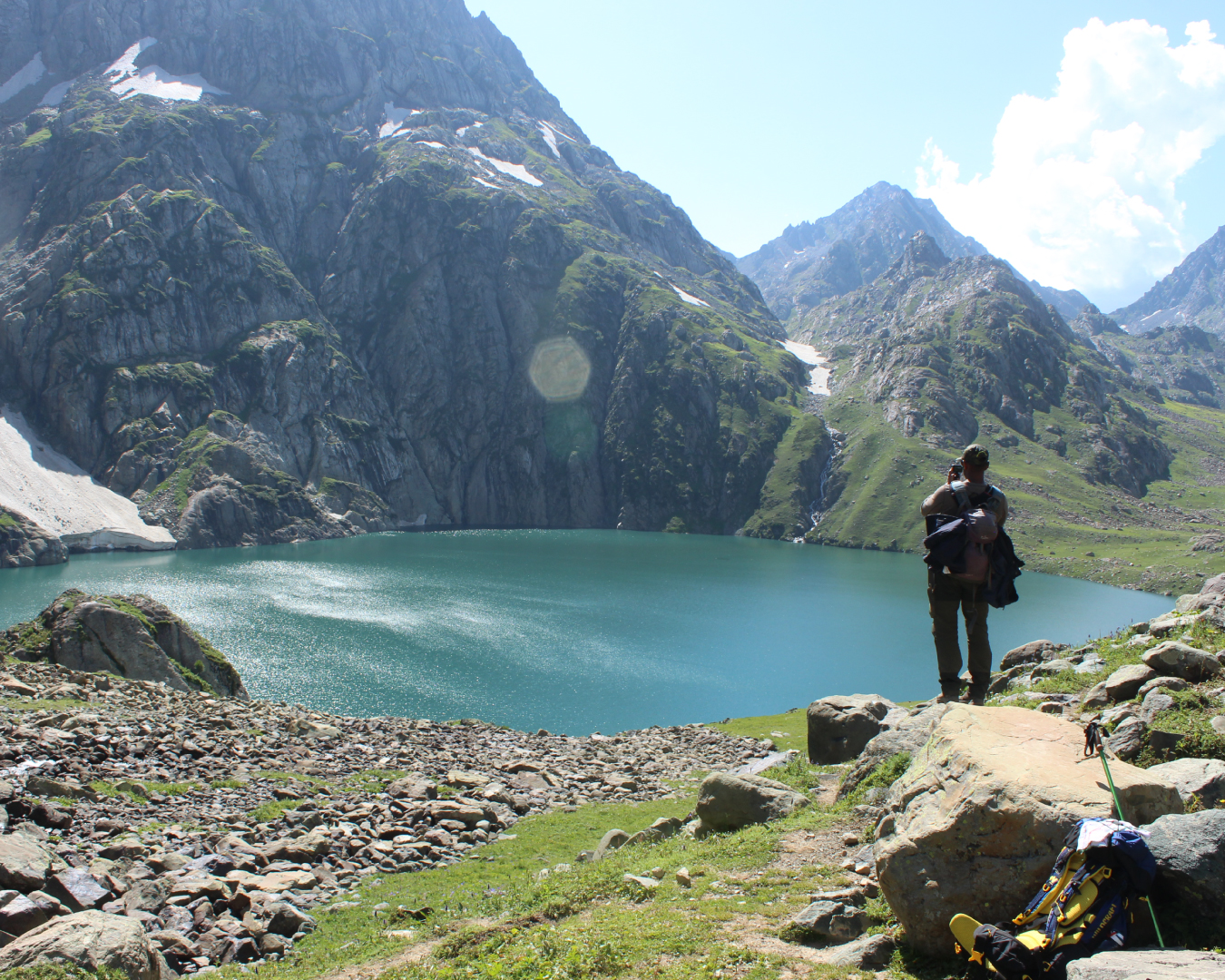
Subscribe for latest updates & offers
Similar adventures.
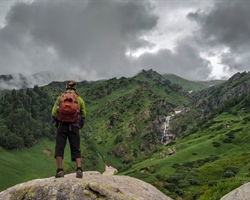
Kalihani Pass Trek
A challenging and off-beat gem of himachal.
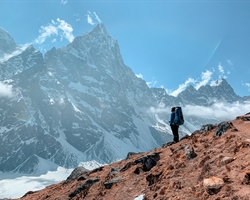
Everest Base Camp Trek
Walk where the legends walked..
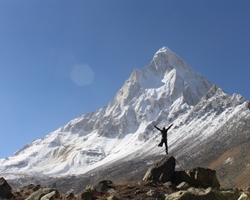
Vasuki Tal Trek
The closest one can get to mt shivling on a trek.
Uttarakhand
Enter your Email
Events by categories.

Mountaineering

Scuba Diving
Events by months.
- January July
- February August
- March September
- April October
- May November
- June December
Events By Nights
- 5 & More Night
- Environmental Policy
- Privacy Policy
- Term & Conditions
- Work With Us
- Address: 303, 3rd Floor, Tower B4, Spaze Itech Park, Sector 49. Gurgaon
- Pre Sale - 7838148127 , Post Sale - 8588878499, 9667639126
Bikat Adventures
- Cancellation & Refunds
- Content Sharing
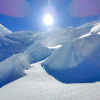
© 2024 Bikat Adventures - All Rights Reserved
Powered by: novel knett software solutions, submit enquiry.

Kashmir Great Lakes Trek
Northern Indian Himalayas
Starting from
he Kashmir Great Lakes trek is a popular trekking route located in the Kashmir region of India. This scenic trek is known for the stunning seven high-altitude alpine lakes, breathtaking mountain views of Harmukh and Gangabal. The kashmir great lakes trek is typically completed in 7-8 days, covering around 65-70 km, and is graded as moderate to difficult. Moreover, the trek takes you through several alpine meadows, dense forests, and snow-covered passes, including the Nichnai Pass and the Gadsar Pass. The highest point of the trek is the Gadsar Pass, which stands at an altitude of 13,750 feet. The trek is best done during the months of July to September, when the weather is pleasant and the trekking conditions are favorable. During this time, the valleys are in full bloom, and the landscape is a riot of colors. Notably, this period offers the best views of the region's flora and fauna. One of the most remarkable features of the trek is the alpine lakes that dot the route. Furthermore, the trek takes you through some of the most stunning lakes in the region, including the Vishansar Lake, Gadsar Lake, Satsar Lake, and Gangbal Lake. These lakes are surrounded by towering mountains and offer a tranquil and serene atmosphere. This makes them an ideal spot for camping and relaxation. To undertake the Kashmir Great Lakes trek, it is advisable to hire a professional guide and trekking agency who can provide you with the necessary equipment and ensure your safety throughout the trek. The starting point of the trek is usually Srinagar, which can be easily reached by air or road. Therefore, it is best to book your travel arrangements and guide in advance. Overall, the Kashmir Great Lakes trek is an unforgettable adventure that offers stunning natural beauty, challenging terrain, and a glimpse into the unique culture of the Kashmiri people. It is a must-do trek for all adventure enthusiasts and nature lovers who wish to experience the beauty and grandeur of the Kashmir valley.
Tour Review
Arrive: Srinagar
Duration: 7N8D
Depart: Srinagar
Trek Distance: 70 km
Best Time: July and August
Highest Altitude: 13,750 feet
Required Fitness
- You should be in good enough shape to engage in at least 5 hours of daily activities.
- Up to 6 kilometres of trekking per day.
- Carry: A daypack may hold up to 3 kilograms.
- Terrain: snowy, ice, rocky, uneven, and at times up to 4400 metres above sea level.
- Weather and climate: It can occasionally be rainy for a while, sunny in the valleys, and cold and windy higher up. Compared to July and August, the months of June and September are cooler.
- No swimming is necessary. The guides will help you cross streams.
- Anyone can trek in Kashmir; it does not require professionalism or prior mountaineering experience, but there are a few things that should be considered before the journey, as indicated above.
What To Carry
- Passport or a valid ID card
- 60-liter backpack day sack to carry day pack weighing between 4 to 6 kilograms
- Container for water
- Walking Boots
- Dependable Walking Footwear
- Outdoor pants
- Hat Shade Jacket with Hood
- Sunglasses\Gloves
- Small, dependable socks for a daypack
- Warm Attire
- Warm Hooded Windcheater Jacket
- Sunscreen cream
Transportation
Meals Included
Houseboat Stay
Guided Tour
Day 1 Pickup point to Base camp
- Pickup from Srinagar airport or bus stand or other designated point
- 100kms drive to sonamarg basecamp approximately 4 hours
Day 2 Sonamarg to Nichnai
- 10 km hike takes four hours, and the altitude ranges from 2730 to 3500 m.
Day 3 Nichnai to vishansar Lake ascending Nichnai Pass (4100m)
Vishansar Lake
- The hike is about 12 kilometers (7.5 miles) long and reaches an altitude of about 3,750 meters (12,500 feet).
Day 4 From Vishansar to Gadsar via Kishansar and Gadsar Pass 4550m
- 13km hiking about 7 hours
- Altitude 3750m~3650m
Day 5 Gadsar to satsar via satsar lakes
- 9kms hiking about 4 hours
- Altitude 3650m ~ 3800m
Day 6 Satsar to Gangabal Lakes bridging Zajibal Pass
Gangabal Lakes
- 12kms hiking about 6 hours
- Altitude 3800m ~ 3600m via 4300m Zajibal Pass
Day 7 Trek from gangabal to Naranag and drive to hotel in Srinagar
- 15kms hiking about 6 hours
- Altitude 3600m ~ 2100m
Day 8 Hotel to drop off point
Srinagar Airport
- Drop off at bus station or airport
- 20 minutes drive to airport or bus stand
Standard Package
7 Nights 8 Days
Premium Package
- Road Transport by Premium AC cars (SUVs)
- 6 Nights of Tented accommodation twin sharing in a 3 person trek or single complimentary
- 1 Night of Houseboat accommodation in Srinagar (after trek)
- All Trekking Essentials included kitchen and toilet tents,lunch and dinning tents sleeping bags and mats. lights for dinner Trekking poles
- Local Guides and Cooking staff Languages; English, Urdu, Hindi and Kashmiri cooking onLPG stoves
- Offloading Horses to carry your backpack throughout the trek (offloading) (except day sack)
- Meal plan- Vegetarian meals including eggs and cheese, unless specified
- 4 Meals per day (Breakfast, Lunch, Tea snacks, Dinner). Hotel or Houseboat – 2 Meals (Dinner and Breakfast)
- Drinking Water Packed bottled mineral drinking water (2 ltrs per person) on first day of the trek. Boiled drinking water for the rest trek-days
- Emergency First Aid Kit
- Emergency oxygen supply
- Flight and Train Tickets
- Personal clothing and equipment
- Medical costs
- Additional picnics or trips
- Tips for cooks helpers and guides
Starting Point : Srinagar
Customer Review
No Reviews Yet
5 ( 1 Reviews)
0 ( 0 Reviews)
27.5 ( 2 Reviews)
Discovery Hike

- Nepal Treks
- Expeditions

KASHMIR GREAT LAKES
8 days - 7 night, low to moderate, srinagar to srignagar, * gst @ 5% extra.
Kashmir, a phrase that conjures up a thousand feelings of love, grandeur, exoticism, and, in Firdaus’ terms, “heaven.” Some say it’s a paradise on earth, while others say it’s a paradise by itself, but Kashmir truly stands out among the world’s most beautiful places. The lakes around here, whether Dal Lake, Vishansar Lake, or the Gangabal Twin Lakes, are surreal and a rare sight. We discover the most pristine mix of alpine lakes, far-reaching meadows, high altitude passes, and vast unexplored vistas of Kashmir Himalayas on the Kashmir Great Lakes Trek. As the saying goes, once you visit Kashmir, your heart will never leave. The KGL trek is a perfect example of the state’s natural beauty.
SHORT ITINERARY
Day 1 receive from airport to shitkari base camp day 2 trek from base camp to nichnaie day 3 trek from nichnaie to vishnusar day 4 trek from vishnusar to gadsar day 5 trek from gadsar to satsar day 6 trek from satsar to gangbal and campsite at nundkul lake day 7 buffer day at gangbal lake (t&c*) day 8 trek from gangbal lake to naranag and back drive to srinagar trek gallery, detailed itinerary, day 1: receive from airport to shitkari base camp.
Upon arrival at Srinagar airport, board a vehicle for a three-hour drive to Shitkari, through winding roads that lead to Kashmir’s golden meadows of Sonamarg. Shitkari is our base camp for the Kashmir Lakes Trek, and it is located 3 kilometers before Sonamarg. Stay overnight in tents at the open grassy campsite at Shitkari.
Day 2: Trek from Base Camp to Nichnaie
We begin our trek to Nichnai early in the morning, aiming for a 2 to 3-hour moderate ascent to the tabletop village of Shekdur, passing through a stretch of pine forests before arriving at the bank of Nichnai Nallah for lunch. We arrive at today’s campsite after a gradual climb along the Nallah, with breathtaking views of the Nichnai Pass ahead.
Day 3: Trek from Nichnaie to Vishnusar
The day’s trek begins with a 2-hour moderate to a steep climb to the top of Nichnai Pass (4100 m). While ascending towards the pass, we can see the Nichnai lake on the left side. After crossing the pass, we descend for an hour and re-group for lunch before walking through the valley meadows to today’s campsite, which is located just below the Vishnusar lake. The rest of the day can be spent exploring the surrounding area. Visiting the Vishnusar and Kishansar twin lakes
Day 4: Trek from Vishnusar to Gadsar
We begin the day by ascending gradually across the twin lakes. Following a steep climb to the top of Gadsar pass at 4200 m, which offers spectacular views of the twin lakes, a gradual descent follows, followed by a simple walk along the meadows towards Gadsar lake. We re-group at the lake for lunch before going on to the campsite further ahead.
Day 5: Trek from Gadsar to satsar
Today’s trek takes us through SATSAR, a series of seven lakes. We hike uphill from Gadsar campsite for 1.5 to 2 hours before descending to Satsar pass through the Satsar stream. We re-group for lunch on the bank of a lake just across the pass before carrying on for another hour to our campsite today.
Depending on the season, there are 4 or 5 lakes with water. The Satsar army check post is located on the right side of the hill, above the ridge. It is the LOC’s third line of defense. The same identity verification, data collection, and questioning procedures apply here. Finish this today to ensure a clean day of trekking tomorrow. The first of the Satsar lakes is situated ten minutes from the army camp. The lake is very big, and it is set in a beautiful green setting with mountains in the background.
Day 6: Trek from Satsar to Gangbal and campsite at Nundkul Lake
Today we trek towards the Nundkol and Gangbal twin lakes. Our initial climb takes us to Zach pass at 4100 m, where we can see the Harmukh mountain looming over the Nundkol and Gangbal twin lakes. We take a break for lunch along a small stream before ascending to the Nundkol campsite through a small ridge with views of the lakes.
Day 7: Buffer day at Gangbal Lake
This day is an extra day or buffer day (counted as 8D-7N trek) for those who want to take rest for the entire day and that will be charged an extra 3200Rs per person (exclusive from 15,500). If this day is cancelled, then trek will be of 7D-6N @15,500Rs.
Day 8: Trek from Gangbal Lake to Naranag and back drive to Srinagar
Today is our last day in the wilderness, and we’re heading back to civilization. We begin with a gradual ascent out of the valley, then descend towards the tree line to reach a forested trail that leads to a Tea-shop, where we will stop for lunch. After that, it is a three-hour steep descent to Naranag, an ancient temple settlement, and a road-head that connects to Srinagar. Move your luggage to the waiting vehicles, then relax and enjoy the ride to Srinagar.
Upon arrival at Srinagar airport, board a vehicle for a three-hour drive to Shitkari, through winding roads that lead to Kashmir's golden meadows of Sonamarg. Shitkari is our base camp for the Kashmir Lakes Trek, and it is located 3 kilometers before Sonamarg. Stay overnight in tents at the open grassy campsite at Shitkari.
We begin our trek to Nichnai early in the morning, aiming for a 2 to 3-hour moderate ascent to the tabletop village of Shekdur, passing through a stretch of pine forests before arriving at the bank of Nichnai Nallah for lunch. We arrive at today's campsite after a gradual climb along the Nallah, with breathtaking views of the Nichnai Pass ahead.
Day 3: Trek from Nichnaie to Vishnusar
The day's trek begins with a 2-hour moderate to a steep climb to the top of Nichnai Pass (4100 m). While ascending towards the pass, we can see the Nichnai lake on the left side. After crossing the pass, we descend for an hour and re-group for lunch before walking through the valley meadows to today's campsite, which is located just below the Vishnusar lake. The rest of the day can be spent exploring the surrounding area. Visiting the Vishnusar and Kishansar twin lakes
Today's trek takes us through SATSAR, a series of seven lakes. We hike uphill from Gadsar campsite for 1.5 to 2 hours before descending to Satsar pass through the Satsar stream. We re-group for lunch on the bank of a lake just across the pass before carrying on for another hour to our campsite today. Read More Depending on the season, there are 4 or 5 lakes with water. The Satsar army check post is located on the right side of the hill, above the ridge. It is the LOC's third line of defense. The same identity verification, data collection, and questioning procedures apply here. Finish this today to ensure a clean day of trekking tomorrow. The first of the Satsar lakes is situated ten minutes from the army camp. The lake is very big, and it is set in a beautiful green setting with mountains in the background.
Today is our last day in the wilderness, and we're heading back to civilization. We begin with a gradual ascent out of the valley, then descend towards the tree line to reach a forested trail that leads to a Tea-shop, where we will stop for lunch. After that, it is a three-hour steep descent to Naranag, an ancient temple settlement, and a road-head that connects to Srinagar. Move your luggage to the waiting vehicles, then relax and enjoy the ride to Srinagar.
subscribe Now
Depature date.
09 July to 14 July 16 July to 21 July 23 July to 28 July 30 July to 04 August
06 August to 11 August 13 August to 18 August 20 August to 25 August 27 August to 1 September
3 September to 8 September 10 September to 15 September
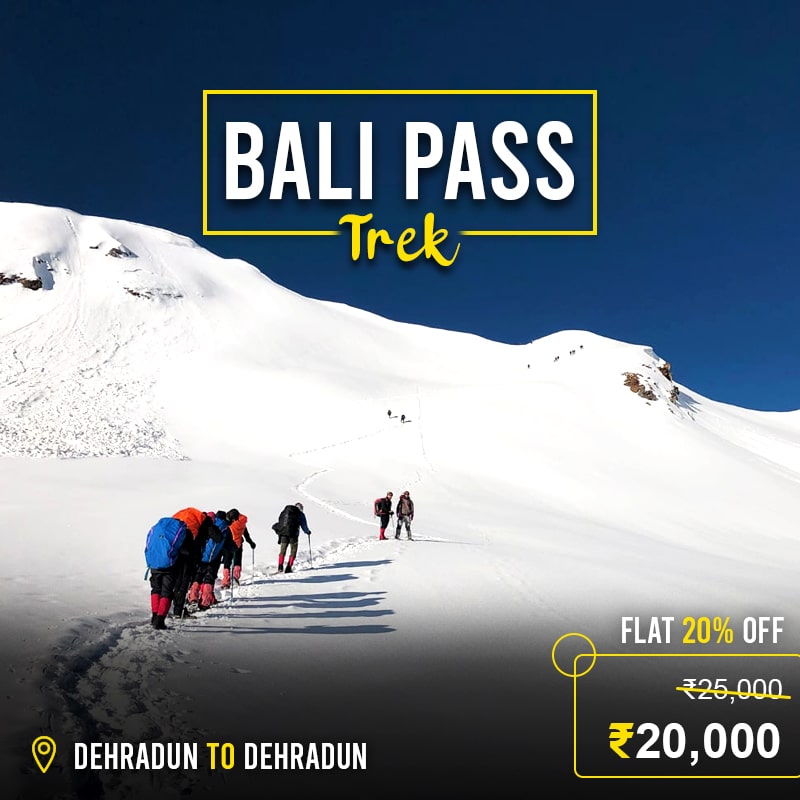
COST INCLUSION
Transport will from srinagar to sonamarg base camp trek leaders , guide,cook ,camp helpers and horses/porters as required taxes ,permit fee,and other charges imposed by local authorities ,national parks etc good quality of tents,sleeping bags,carry mats.tented accommodation be on double /triple sharing basis. safetyequipments –firstaidkit stretcher,pulsoximeter,portable oxygencylinder(where required for use of emergency service) all vegetarian meals (breakfast,lunch,dinner) on all trek days for the trek duration from shitkari base camp till end of trek at naranag cost exclusion, transport cost to reach srinagar and stay in srinagar. meals,snacks,mineral water ,telephone,tips and other incidental expenses during travel between srinagar and sonamarg. cost of doctors ,medical officers ,trek leaders are trained in first – aid to assist in case of medical emergencies emergency evacuation related costs owing to medical emergencies or weather conditions horse ride at thajwas glacier , transport for zero point transport for sightseen in and around sonamarg / srinagar before and after the trek. transport can be arranged but will be separately charged as per cost incurred. trekkers are expected to carry their own packpacks ,those intending to trek without backpacks or carry only a day pack and offloading their backpacks onto horses / porters will have to bear an additional cost of inr 3500 for whole trip per backpack. subscribe now, frequently asked question.
- Footwear : The trekking boots which must be waterproof and snow proof, normal boots, floaters, and woolen socks.
- Backpack: (50 ltr), Daypack (20-30 ltr), Duffel bag.
- Clothes : Jacket and trousers that are both waterproof and breathable. Jacket (synthetic or down feather fleece), synthetic insulated trousers, poncho, sweatshirt, inner thermal (upper & lower), fleece, t-shirts, cotton trekking pants, shorts
- Season wise Clothes :
- Hand and head protection includes liner gloves, bandannas, sun hats, woollen caps, and face masks, among other things.
- Accessories : Sunglasses/goggles, anti-glare lenses, water bottle, hydra bag, and headlamp with spare bulb and extra batteries are all recommended.
- Trekking Gears: Toolkit for an emergency. Sunscreen, a toiletry pack, water purification pills, Ziploc packs, ear plugs, first-aid kit, and the necessary medications are all recommended.
- Camping Equipment : Sleeping bags of lining (extreme -5 to +5 Celsius if you have one), trekking sticks, and so on.
- Warm top/light micro fleece pullover/full sleeve T shirt – 2/3
- Water resistant/repellent trekking pants with an inner lining for added warmth- 2 High-quality windproof/water-resistant outer shell (jacket) with a proper hood
- Thick Fleece / Full-sleeve Woollen Jumper, Down Jacket with at least 600 fill capacity Innerwear with a thermal component (upper and lower)
- Woolen hat, inner fleece gloves, and outer water-resistant gloves
- 4–5 pairs of thick woollen socks and standard socks, scarf/muffler (optional)
- Waterproof Trekking/Hiking shoes with a thick heel and high ankles that are comfortable to wear. Sneakers/sport shoes are ideal for camp.
- Poncho or raincoat. A small, light-weight towel
- A hydration pack and an insulated water bottle (optional)
- Sunglasses with UV cover and the potential to cut light, as well as a cap or floppy hat to shield the strong sun off your skin (important when traversing through snow)
- Trekking pole or sturdy walking stick Lip Balm, Sunscreen Lotion
- Flashlight / torch (with extra batteries) Medications, if any special prescription is needed Toiletries for personal use
- Carry a rain cover over your luggage • Day pack/small bag that you can carry on your back all day to keep your essentials in
- Keep a few poly bags or plastic containers in your bag to place your things in if you need to in case of heavy weather.
Personal Medical Kit (MANDATORY FOR ALL)
- 10 Diamox tablets (to prevent AMS)
- Nifedipine – 5 pills Dexamethasone – one strip
- 6 tablets of Crocin (fever)
- 4 tablets of avomine (motion sickness) 4 capsules of Avil 25mg (allergies)
- 4 tablets of Combiflam (Pain killer)
- 6 tablets each of Norflox TZ and Lomofen (diarrhea) 10 tablets of Digene (acidity)
- 10 Omez/Rantadine capsules (antacids) 3 to 5 metres of crepe bandage
- 1 tiny roll of gauze 10 strips of bandage 1 small roll of cotton 10 packets of ORS
- Moov spray Betadine or other antiseptic cream (aches, & sprains)
- If you're vulnerable to knee injuries, you should wear a knee cap. Powder with antifungal properties
- Cancellation: If a trek is cancelled at the last minute due to a natural disaster or unforeseeable circumstances (such as floods, earthquakes, landslides, attack, or bandh), Discoveryhike will have a trek voucher for the full number. The voucher can be used for the same or a different trek over the next year.
- In case you wish to cancel the trek, then please be aware of these things:
- Cancellations made within 30 days of the trek's launch date will include a complete refund.
- If you cancel within 30 and 20 days before the hike, you will get a 50% refund.
- There will be no refund if you cancel less than 20 days before the trek begins.
- Please keep in mind that if you get a refund, there will be a reduction of 4% (Cancellation charges) from the overall amount you pay. In addition, if you purchased trek insurance, you would not get a refund.
- Discoveryhike assumes no responsibility for any malfunction or injury to your clothes, supplies, or other belongings while on the trek. The trek fee covers all expenses associated with the trek from start to finish.
other Treks

WhatsApp us

Home » Shop » Kashmir Great Lakes Trek
- getting there
- detailed itinerary
- cost inclusions
- CANCELLATIONS
- 1 Week trek
- Jammu Kashmir
- Kashmir Valley Treks
- Moderate Grade Treks in Himalayas
- Monsoon Treks
- Summer Treks
Kashmir Great Lakes Trek:
- Available upcoming group departures for Kashmir Great lakes trek starting on 3rd, 10th, 11th & 25th Aug 2024 .
- Customised private tours are possible from late June to late September. Costs as per group size are given in details on this page here .
Kashmir Great Lakes, a.ka. KGL trek , became increasingly popular and now probably the most coveted trek during monsoon in Indian Himalayas. Kashmir – “The paradise on earth” is truly unfurled during this 7 days walk covering a distance of approximately 70 km. Six high altitude lakes, alpine meadows dotted with tiny wildflowers, exquisite campsites make this journey a fascinating one. Consequently the KGL trail is the Best of Kashmir, what locals call Jannat E Kashmir , a piece of paradise on earth.
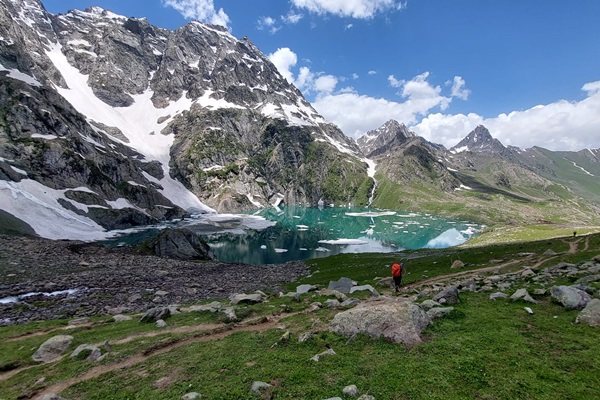
Below is your Complete Guide to KGL Trek for 2024 . Click on a link to jump to a specific part of information.
Itinerary Notes on itinerary About KGL trek Altitude & Distance graph Trek Difficulty Is it doable by beginners? Weather & Best time to visit Rainfall during best season: An observation Things to bring Flora & Fauna 2023 Tour packages & Cost Reaching trekbase
Itinerary for KGL trek:
Day 1: Drive from Srinagar (latest by 12 o’clock) to the trek base Shitkari (~ 2650 m/8690 ft, 2 Km before Sonamarg) – 85 Km – 3 to 4 hours drive. Twin sharing camp. Day 2: Trek to Nichnai (~ 3505m/11500 ft) – 13 Km – 7/8 hours. Camp. Day 3: Trek to Vishansar Lake (~ 365o m/11970 ft) via Nichnai Pass (~ 4070 m/13350 ft) – 12 Km – 6 to 7 hours. Camp. Day 4: Rest and active acclimatisation Day that also acts as a buffer day. Hike to Kishansar Lake and back to Vishansar Lake for 2 hours, in case we are required to stay at Vishansar. Our trekking guides will make decisions subject to weather and team conditions . If the weather remains clear, we will move ahead and take a complete rest at Nandkol campsite. However, at Nandkol, all team members must decide to stay an additional day or get down to Naranag together. It is not possible to split the team so that some take rest and some continue to complete. Day 5: Trek from Vishansar to Gadsar (~ 3660/12000 ft) via Gadsar Pass (~ 4200 m/13775 ft) – 16 Km – 7 to 8 hours. Camping ground is further down (~ 3300 m/10825 ft) from Gadsar lake. A strenuous day. Day 6: Trek to Megandob (~ 3650 m/11970 ft) via Satsar lake – 10 Km – 5/6 hours. Camp. Day 7: Trek to Nundkol lake via Zaj Pass – 8 Km – 5/6 hours – visit Gangabal lake and return – 2 hours. Camp. Day 8: Trek to Naranag – 11 Km – 5/6 hours – 60 Km drive to Srinagar – 3 hours. You will reach Srinagar by 7 pm. Day 9: Fly out from Srinagar.
Important notes on itinerary:
Carefully read the following points so that you can arrange your tickets and understand the estimated additional expenses outside the TREK FEE.
- You need to reach the latest by 12 noon on Day 1 in Srinagar . After the trek you will return to Srinagar on Day 8 or Day 9 (if reserve day is utilised), by 7 pm. You may fly out of Srinagar anytime on Day 9 or later . Arrange your tickets, and stay in Srinagar accordingly.
- Day 4 , i.e. rest and acclimatisation day depends on different actual conditions during the trek. Sometimes we may skip it and keep a rest day at Gangabal twin lakes camp instead. In this way trekkers get a full day to relax at Gangabal twin lakes camp.
- We will arrange a shared transportation from Srinagar airport (or from TRC Srinagar ) to basecamp Sitkari and from trek endpoint Naranag to Srinagar city back. The fare is ₹ 4500 one way for a Tata Sumo/similar and can accommodate up to 6 persons. You pay the driver directly, sharing equally with the other team members. Consider ₹ 1500 to 2000 per person which includes pick up and drop.
- Leave luggage facility is not available on this trek as the trek start and end points are not the same but far away.
- Note that prepaid sim cards do not work in Kashmir . Airtel and Jio have decent networks at basecamp Shitkari and Naranag. In between we will not get any network.
About the trek:
Not only do you see six fairly large alpine lakes on this trail but get an all round hiking flavour in Kashmir Valley . Jannat doesn’t need a long introduction. As they say, “A picture is worth a thousand words”, let’s go through this incredible hiking experience visually.
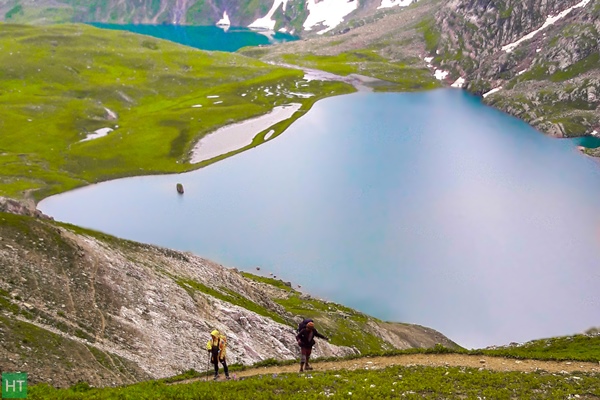
Beautiful, isn’t it? But just don’t jump into this moderate grade trek! Undestand and get more insights reading thoroughly so that you can plan and prepare.
KGL trek: Distance & Altitude profile chart:
Below is an indicative profile of the trekking trail. Note that you will get more undulations (ups and downs) on the actual trail.
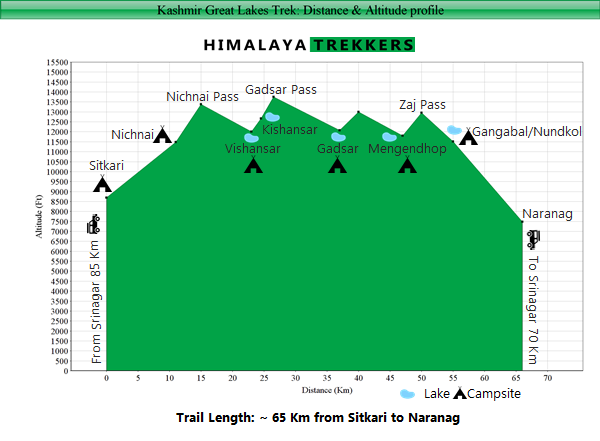
How difficult is the Kashmir Great Lakes trek?
KGL is a moderate grade Himalayan trek. Walking considerable distances everyday with some ascent and descent may fee a a bit strenuous to some as well. That is why we rate it 6.5/10 on a grade of physicality scale.
At the same time our itinerary has 7 trekking days. Initial couple of days are long and you gain height as you reach the first lake on the trail Vishansar. Depending upon team and weather condition we may take an active acclimatisation day here as mentioned in the itinerary. We will visit the next lake Kishansar, gain some height towards Gadsar pass and return to Vishansar camp. Or else if everything looks good we can skip this day and continue till the last campsite at Gangabal twin lakes. This is also a welcome opportunity to relax a full day beside the exquisite campsite at Gangabal.
The fairly long ~ 65 Km trail has few ups and downs as well (refer to the altitude profile graph above). Water bodies/lakes are at the base of the mountains and usually you will cross a pass or ridge like Gadsar or Satsar and followed by a descent to the next valley and lake(s). So prepare for some easy to moderate ascents and descents during the trek. The trek from basecamp to Nichnai has moderate grade of ascent with a relatively steep gradient in the initial couple of hours.
When you go up on a mountain trail, eventually you need to get down. Here in KGL trek almost all the altitude loss, i.e. your climb down on the hike is on the last day of the trek. To note that more than 1000 m/3300 ft descent in a span of 11 Km. Use walking sticks and knee cap particularly who may have prior knee conditions/injuries or suspect one.
Is KGL trek suitable for beginners?
At the same time there are encouraging parameters for beginners as well. While the highest altitude on this hike is below 14000 ft (4200 m/13775 ft), all camps are more or less in between 11500 to 12200 ft. In between we climb higher although sleep at a lower altitude, following the “ walk high, sleep low ” mantra of acclimatisation.
So you can understand that KGL is not a trek to take casually. It is ideal for hikers with few prior experiences or even for the beginners who have pretty good physical fitness and leading an active healthy life. Do check the guidelines to prepare and improve your fitness for treks so that you are comfortable on the trail.
Weather pattern and best time for Kashmir Great Lakes trek:
Kashmir treks are best done between July to September and so is the KGL trek. There are no theoretical summer monsoons in Kashmir. This region receives maximum precipitation as snow during winters due to the western disturbances.
Season starts as early as the later half of June when snow becomes minimum. Although there is no monsoon, but July and August do get rain showers. On mountains afternoon showers are common in summer and monsoon. Due to rain and warmer temperatures valleys turn greener with vibrant wildflowers.
From September autumn sets in. Rains are minimal during this month of the season. Meadows turn yellow to golden as we move on. Shepherds and Bakkarwals return to their base with their cattle after the grazing season.
Finally in our opinion mid July to late August is the best window to visit Kashmir Great Lakes trail within the possible season of late June to late September.
Monsoon and rainfall during Jun to Sep in KGL trek: An observation
Practically there is no or almost negligible “monsoon wind” that enters the Kashmir valley. Kashmir region receives most of its annual precipitation from western disturbances and lesser precipitation from Indian Summer Monsoon (ISM). You will get more idea of monsoon patterns and precipitation in our article for best monsoon treks in India .
However note that it does rain during the possible season between Jun to Sep. A recent research shows that rainfall has increased and become somwhat errant nowadays. Climate change is playing its part here as well. The following chart shows a yearwise study of rainfall since 1980.

So be prepared to get some rainfall during your trek. Usually pm showers mostly in the afternoon for an hour or two and common on mountains. Rarely you may get moderate to heavy rain throughout the day. Carry your waterproof clothing (raincoat or a poncho) and you should be OK on the trail.
What type of clothing should I bring for this trek?
It is important to carry proper clothing in this trek. We recommend to use “three layers” of clothing in the campsite during early morning or evening, while you are outside tent.
- A quick dry base layer (Dry-fit t-shirt).
- A warm jacket (Double layer or Fleece jacket ) as middle layer.
- A windproof cum waterproof with hood as the outer layer.
- Additionally you would require a rucksack and a decent trekking shoe.
Check the detailed List of things to carry or download the PDF. Also check how to select the correct gears/clothing you need for the high altitude treks .
Flora Fauna on KGL trail:
Often we overlook the actual residents i.e. the various species of plants and animals or birds on a hiking trail. Kashmir valley is typically famous for its alpine wildflowers and you can spot more than 50 species easily on this trail alone. Hyacinths, Lilies, Jasmine, Marigold, Kashmir Iris are some common ones.
Among birds, gold and rose finches, wagtails and pipits are easy to spot. You may spot a colony of Himalayan marmots on the rocky side walls of the valley.
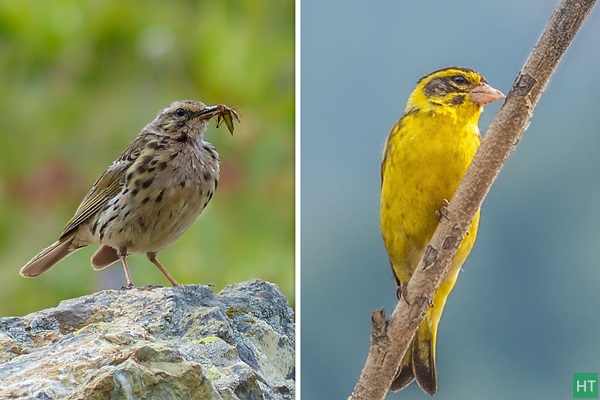
Kashmir Great Lakes trek cost and packages for 2023:
A) Fixed Group Deparutes/Tours: TREK FEE: ₹17,950 per person ( Sitkari to Naranag ) + 5% GST. Dates are published and available in the Booking Form calendar (marked in green). TREK FEE includes all meals, twin sharing tent accommodation, permit, guide, cook support staff and camping equipment. Your tour is travel and medically insured for a duration of 10 days. Check detailed inclusions and exclusions list in the COST INCLUSIONS tab.
Note: Offloading of backpack is ₹ 2500 per bag up to 10 Kg for the entire duration of the trek.
B) Customised Private tours: It is also possible to customise this trek as per your preferred dates and services. This is usually cost effective when you are a larger group of 10 people or more. However this is also suitable for smaller groups who prefer more flexibility or tailor made itineraries and additional services suiting their specific needs.
Below is a Price-Matrix for customised treks assuming the same inclusions and exclusions as that of our group departures (Economy inclusions, same as that of Fixed group departures).
5% GST applicable on TREK FEE.
How to reach Kashmir Great Lakes trek base (Sitkari near Sonamarg):
Our trek base Sitkari is around 3 hours drive from Srinagar via Kangan and Gangangir. Similarly trek end point Naranag is around 60 Km away from Srinagar.
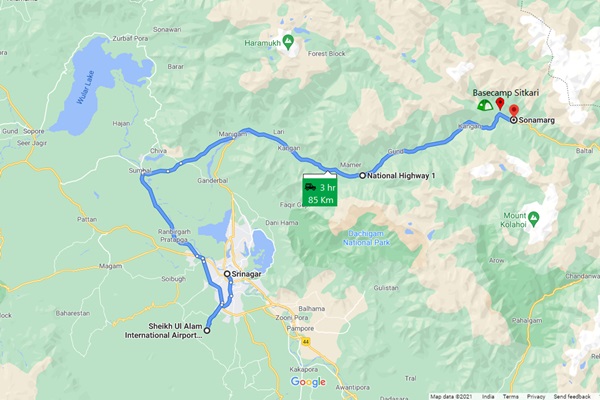
We will arrange a car pick up from the airport/city centre to trek base Sitkari and from trek end point Naranag to Srinagar back. The charges for 2023 are following:
Srinagar airport to base camp Sitkari: ₹ 5000 (Tata Sumo, Non AC) Naranag to Srinagar: ₹ 5000 for a Tata Sumo (Non AC). You pay directly to the driver sharing equally.
Most convenient way to reach Srinagar is via flight. Sheikh Ul-Alam International Airport in Srinagar (Code: SXR) is around 10 Km away from the city centre.
Otherwise, the nearest railway station is in Jammu (Station Code: JAT) and it takes around 10 -12 hours to reach Srinagar, covering ~ 280 Km.
Why treks with HT?
Duration: 7 days of trek; Srinagar to Srinagar in 8 days.
Prerequisite: Prior trekking experience is desirable. Good physical fitness to comfortably walk sustained duration on mountais.
Highest Point: Gadsar Pass ~ 4200 m/13750 ft.
Grade: Moderate
Physicality: 6.5/10
Length: ~ 70 Km
Seasons: July to September
Further Option: From Naranag drive to Sumbhol and trek to Tarsar and Marsar
Access: Trek starting point is Shitkari, Sonamarg, 85 Km from Srinagar
Rail station: Jammu Tawi (STN Code: JAT)
Airport: Srinagar (Code: SXR)
Upcoming scheduled dates for KGL trek:
- You can check the scheduled Fixed Departure dates in the calendar available inside Booking Form or inside REGISTER NOW form. Tour starting Dates are highlighted as per our itinerary (Day 1 of 8 days itinerary) .
- At present BOOK NOW functionality is disabled . You can get all the information in your email by submitting the REGISTER NOW form.
- If you are a group of people and available dates are not matching then you may select Custom date mode (by clicking the Select your custom date) and fill in the displayed form.
- You can also check all the available dates at a glance in our TREK CALENDAR .
- Trekkers need to reach Srinagar on Day 1 by 12 noon. Return to Srinagar on Day 8 evening by 8 pm. Arrange your tickets for inward journey and return accordingly.
Getting to Sonamarg (The trek base):
We will arrange a car pickup from Srinagar to Sonamarg and from Naranag to Srinagar back. This will be shared equally by the availing team members.
The best option to reach Srinagar is by flight. There are direct flights from Delhi.
By train one has to reach Jammu and then a drive to Srinagar takes around 12 hours covering approximately 300 Km.
Drive to Sonamarg: 90 Km - 3 hours
Pickup from Srinagar TRC in the afternoon (between 2 to 3 PM) and reach Shutkari (~ 2300m, 7500ft) the trek base which is 2 Km before Sonamarg. The 80 odd Km drive from Srinagar takes up to 3 hours, following Sindh river on Srinagar Leh highway. The camp site is beside a tributary to Indus and located opposite to the small village called Shutkari. Tented accommodation for the night.
Trek to Nichnai: 11 Km - 7/8 hours
Trek to vishansar via nichnai pass: 12 km - 6/7 hours, trek to gadsar via kishansar and gadsar pass: 12 km - 7/8 hours, trek to myangandhop via satsar: 10 km - 6/7 hours, trek to nandkul via zaj pass: 10 km - 6/7 hours, a walk to gangabal lake plus a rest day, trek to naranag: 11 km - 6/7 hours; drive to srinagar: 70 km - 3 hours.
P.S.: Distances and altitudes are approximate and may not be exact.
TREK FEE: ₹ 17,950 (Sitkari near Sonamarg to Naranag) + 5% GST
Inclusions:
Accommodation in twin sharing tents as per itinerary during the trek.
All Meals during the trek (vegetarian with occasional serving of eggs) including breakfast, hot/packed lunch, and dinner with morning and evening tea.
Professional Guide, Cook & Helper.
Porters/Packed animals to carry the central logistics.
Camping equipment like Sleeping bag, Carry mattress, Dining tent, Toilet tent, Gaiters, Micro spikes/Crampon.
Permit fee, camping charges, forest levy as required in the trek.
Basic Medical & First Aid kit.
Cost of rest or buffer day.
Travel cum Medical Insurance Policy covering high altitude trekking tours (For Indian nationals it is included in the TREK FEE, up to 60 years of age) for a duration of 7 days.
Exclusions:
Transportation from Srinagar airport to trek base Sitkari, and from trek end point Naranag to Srinagar back. ₹ 4500 by a Tata Sumo (Non AC) one way .
We assume that you will carry your Rucksack/Backpack including all your personal belongings. If you prefer to offload your bag and be carried by our horse/porter then an additional Rucksack offloading charge of ₹ 3000 is to be paid directly on spot for the entire duration of the trek. One such rucksack should weigh within 10 kg.
₹ 2000 + 5% GST per person additional for foreign citizens toward permits and different fees.
Any tip/gratuity to the HT supports staff.
Anything which is NOT mentioned in the “Inclusions” or personal in nature.
- We assume that you have read and understood our “ Terms & Conditions ” before Booking a trek/tour.
- To reserve your place in a scheduled Fixed Departure trek or a Customised/Private trek pay 25% of the Trek/Tour Fee as the initial “Booking Deposit” . You can pay by Net banking/Draft/Cheque/Credit/Debit cards. This will ensure your participation in the desired trek and we will reserve your place in the scheduled date. You need to pay the remaining amount at least 15 days before Trek Starting Date .
- If you book a Trek/Tour before 14 days or less from Trek/Tour Starting Date, you need to pay the full Trek/Tour Fee .
Cancellations:
- “Booking Amount” i.e. 25% of the Trek/Tour Fee is Non-Refundable at any stage.
- If in case you are not able to make it due to unavoidable reason(s), we provide you a very flexible choice of Shifting to another trek within next one year . One year is counted from the starting date of the trek/tour you booked initially with us.
- In case you postpone your trip you need to inform minimum of 15 days before the trek/tour starting date. (Though we suggest to inform us earlier if known)
- In case you postpone a trek/tour before 15 days of the scheduled Trek/Tour Starting date or prior , you may shift to another group of the same trek/tour scheduled in the same season or within next one year. You may shift to another suitable route also. For changing any, you need our approval first. Your request must be in written communication through your registered email with us.
- If you cancel/postpone a trek/tour from 14 days to 8 days before tour starting date , your Booking Amount is Non-Refundable. We will not take any request of shifting dates. We will charge 50% of the amount as Cancellation Charges and process refund of remaining 50%. You may also shift to another group within next year but 25% Booking Amount will be deemed as Cancellation Charge and the rest amount will be transferred to the shifted group.
- If you cancel a trek/tour 7 days (i.e. a week) before Trek/Tour Starting Date or later , there will be NO REFUND.
- In case of any unforeseen incident including but not limited to natural calamities like flood, earthquake, landslide, forest fire or any political unrest, if we are compelled to cancel the trek/trip, you will be entitled to redeem the full amount for the same/similar kind of trek/trip within next one year.
If you need more clarifications write in to [email protected]
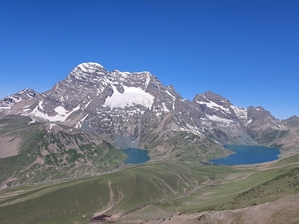
Tour Reviews
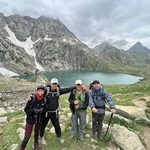
We are Thai people, This is my first time trekking for me, I had a wonderful time with Himalayatrekker, All staff very nicely for our team. Thank your for my new experience in wonderful places
Leave a Review
Cancel reply.
You must be logged in to post a comment.
You May Also Like
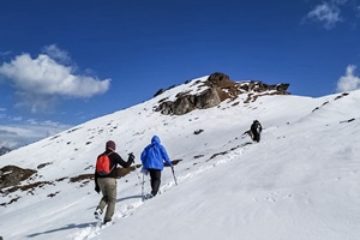
Winter Kuari Pass Trek

Pangarchulla peak with Kuari Pass trek

Ronti Saddle Cross Trek
Submit this form that we can email you all the necessary details and call you to discuss., tour starting date: green boxed dates indicate starting of a scheduled fixed departure tour (day 1 of our tour itinerary). please check the calendar and choose a suitable fixed departure date (green boxed) unless dates are not matching or you are looking for a customised/private trip., i accept the terms & conditions.
- Weekend +91 87 6262 3333
- Himalayan +91 9886 444 809
- International +91 84968 85968
- [email protected]
- One Day Treks
- Two Day Treks
- Himalayan Treks
- International Treks
- Private Treks
- Group Adventures
Kashmir Great Lakes Trek
- Guide to Kashmir Great Lakes Trek
Introduction to the Kashmir Great Lakes Trek
The Kashmir Great Lake trek is, without a doubt, one of the most beautiful treks in India. The Kashmir Great Lakes Trek is at the top of the list of must-do treks because of its breathtaking views. The turquoise and emerald green lakes, the green meadows, and the valleys full of wildflowers are all different but mesmerizing in their own way.
Every time you cross a mountain pass, you will come down to a lower elevation; these fields feel even more peaceful. Kashmir Great Lakes trek should be at the top of your list of places to visit if you love being outdoors and taking in the beauty of tall mountains and picturesque scenery.
This page is your comprehensive guide for the Kashmir Great Lakes Trek. We have consolidated all the information you need to trek safely to the Kashmir Great Lakes. This page will give you a general overview of the Kashmir Great Lakes trek, along with the blog links.
How can we go Trekking in Kashmir, and is it safe?
Treknomads has been leading treks in Kashmir for many years. There have never been any problems in the trek. There may be some irregularities, such as curfews, but our teams can handle these situations safely.
You must carefully research and plan your trip while trekking in Kashmir with as fewer risks as possible. Keep up with the news and the local authorities. Learning about the area and preparing your route and trek accordingly is essential.
We understand that you still might have questions like - How to plan and minimize risk, what are the best safety tips, what to carry, and so on.
We have tried answering all of these in the blog, and the link has been shared below.
https://www.treknomads.com/blog/how-can-we-go-trekking-in-kashmir-and-is-it-safe/
6 Reasons to Take the Kashmir Great Lakes Trek
People who want to try something new and exciting will love the Kashmir Great Lakes trek. It is located 75 km northeast of Srinagar. The trek takes 9 Nights and 10 Days and has moderately challenging terrain, along with some steep ascents and descents. This trek has challenges and adventures that you won't find anywhere else. One of the main reasons to go on this trek is to see numerous beautiful alpine lakes that are hard to find on other treks.
This Kashmir Great Lakes Trek takes hikers past six beautiful lakes like Vishansar, Satsar, Krishnasar, Gadsar, Gangabal, and Nundkol.
If you still are not convinced, we have many more reasons to take the Kashmir Great Lakes trek in the blog below -
https://www.treknomads.com/blog/6-reasons-to-take-the-kashmir-great-lakes-trek/
When is the best time for Kashmir Great Lakes Trek?
Want to know when the best time is for the Kashmir Great Lakes Trek? When we talk about Kashmir Great Lakes, the weather plays a significant role. Trekkers can go on the Kashmir Great Lakes trek during July, August, and September. Kashmir has a very cold place, so the entire area is covered in snow except from June to September, making it almost impossible to move around in the rest of the months. The monsoon rains can't get to Kashmir because of the Pir Panjal mountain range, which separates Kashmir from the rest of the Indian subcontinent. July to September are the peak of summer and the start of autumn. No matter the weather, the best times to visit Kashmir are the second half of July, the whole month of August, and the first half of September.
In the blog below, you will read in detail about - What the weather is like during July, August, and September in detail, the flora and fauna you might come across, and the Kashmir Great Lakes Trek month-by-month Summary.
https://www.treknomads.com/blog/kgl-trek-best-time-for-kashmir-great-lakes-trek/
What to Expect on the Great Kashmir Lakes Trek?
Now that you know what you will encounter on the Kashmir Great Lakes trek, you might wonder what to expect on this trek. The Kashmir Great Lakes Trek not only has beautiful views, but it is also a moderately tough trek. During the trek, the trail will often change from ascent to descent. On some days, you would trek up to the high point, for example, Gadsar Pass, which is 13,800 ft (4,200 m), and then hike down to a campsite on the other side of the mountain. Even though the Kashmir Great Lakes look like a relaxing trek through the fields, be aware of the difficulties that come with it. The long walks involved on a daily basis and the ups and downs we have to make as we move from one valley to the next can be hard on your lungs and your feet. In the blog below, we have discussed Sightseeing and other must-visit spots, accommodation, facilities, and basic amenities arranged by our team, temperature, and even the fitness level in detail.
https://www.treknomads.com/blog/what-to-expect-on-the-the-great-kashmir-lake-trek/
All you need to know about the Great Lakes Kashmir Trek
The Kashmir Great Lakes Trek is one of the most beautiful treks in India. It gives the trekkers a once-in-a-lifetime experience to see the beautiful natural scenery of the Himalayas. On the trek, you will see some of the most breathtaking views, like lakes and coniferous woods, beautiful wildflowers, and some rare flora and fauna. When getting ready for the trek, it is essential to make sure you know everything about the trek. We are sure that you have more questions like - What are the highlights of the KGL trek, how to plan for the KGL trek, which campsites you will be staying at, Things to do while on the great lakes Kashmir trek, and more. We tried our best to answer all the questions in the blog below. Have a look! -
https://www.treknomads.com/blog/all-you-need-to-know-about-the-great-lakes-kashmir-trek/
Kashmir Great Lakes Trek Experience
What speaks more than first-hand experience from one of the trekkers who joined us for the Great Lakes Trek? In the blog below, we will be talking about Highlights of the KGL trek from the point of view of trekkers. It also talks about what kind of preparation is required for a high-altitude trek, how to reach for the trek, and a detailed day-wise experience (with photos!).
https://www.treknomads.com/blog/kashmir-great-lakes-trek-experience/
Getting Fit for Kashmir Great Lakes Trek
The Kashmir Great Lakes Trek is an excellent experience for people who love trekking. This trek involves a lot of physical strength. To handle the ascents and descents on the trail at high altitudes, your upper body, lower body, and core must all be in good balance. If you are a beginner, this trek could get hard for you, so be prepared. If you are currently in the middle of your fitness regime, start a good workout routine three to five months before the trip. To know more in detail, read the blog below -
https://www.treknomads.com/blog/getting-fit-for-kashmir-great-lakes-trek/
Kashmir Great Lakes Trek Difficulty level
The Kashmir Great Lakes Trek has been classified as a moderately tough trek in terms of difficulty. Treknomads take the most important aspects of a journey, such as the kind of terrain, altitude, degree of steepness along the route, weather conditions, distance traveled, and length of time spent on the trek, into account to classify the trek as moderate. In this blog below, we have discussed the difficulty level in detail, increasing altitudes, steep ascents and descents, crossing high altitude mountain passes, boulder sections, and more.
https://www.treknomads.com/blog/kashmir-great-lakes-trek-difficulty-level/
Kashmir Great Lakes FAQs
Now that you know what you can look forward to on the trek, you should join us. If you wish to do the trek, you may have a few questions; in the blog below, Kashmir Great Lakes trek FAQs will help answer your queries and prepare you for the trek!
https://www.treknomads.com/blog/kashmir-great-lakes-trek-faqs/
- Testimonials
- Customized Private Treks
- Corporate Outings
- Cancellation Policy
Online booking system by Vacation Labs | © 2024 TrekNomads
You will receive an email containing a link allowing you to reset your password to a new preferred one.
Verification mail has been sent.
Please check your mail to verify your account.
Click Here to Login
- How To Reach
- Dates & Price

34°25'15.9"N 75°03'24.3"E
Kashmir Great Lakes Trek

Sonamarg, Kashmir
Pickup Point
Tourist Reception Center, Srinagar
Minimum Age
- Kashmir Great Lakes Trek offers Magnificent Alpine Lakes
- Vast Green Meadows and Valleys
- Breathtaking Views
- A must-do High Altitude Trek
Kashmir Great Lakes Trek is one of the Top Treks in India and it is t he most popular trek in Kashmir, . The stellar beauty of five alpine lakes lapped in the dreamscape of Kashmir - can you think of a more beautiful combination? Kashmir Great Lakes is a name that sets every trekker's heart racing - and for good reason! The Great Lakes of Kashmir Trek is easily the most beautiful, picture-perfect, postcard-worthy trek we run. The trail of this Himalayan Trekking leads you through five alpine lakes, each as beautiful as the other. The lakes follow one after the other every day, making each day equally exciting. Remember the rush and excitement of a pass day/summit day? Well, multiply all of that by 5, and you have the Kashmir Great Lakes Trekking - each day a beautiful, new lake to look forward to. What's more interesting is that you get to see these lakes just as they are being fed by the snow-clad mountains. If you are lucky enough, you may even chance upon an occasional iceberg floating across the pristine blues and greens of the lake. The beautiful, albeit distorted reflections of the surrounding mountains on the surface of the lake, is also something to look forward to. Given the arduous, undulating trail, Kashmir Great Lakes Trekking demands commendable fitness.
Kashmir Great Lakes
Trekking Alpine Lakes in the Himalayas plunges into the beautiful, lush meadows of Kashmir, each one competing with the other in terms of beauty. Every day brings a new meadow to explore. From pine and maple lining the meadows to the verdant valleys of Kashmir, the trek is essentially a patchwork of different terrains. On the fourth day of the trek, you can see the sweeping Satsar Plains looking phenomenal as a gurgling stream snakes through the middle. Climbing up to 13,800 ft., Kashmir great lakes trek difficulty is fairly challenging and demands a rigorous fitness regime to be followed. The fitter you are, the more you can explore. If you are a nature lover, you cannot miss this trek! If adventure and mountain trails are your callings, book your Kashmir Great Lakes trek in India with us. Check out the Kashmir great lakes trek guide now and Kashmir great lakes trek reviews. Head to our dates for the Kashmir Great Lakes Trek 2019 and book your slots today.
Best Time To visit Kashmir Great Lakes
The best time for Kashmir great lakes trek is from July to August when the floral colours and greenery are in full bloom. The snow cover melts in June, leaving behind a lush carpet of colours behind. The weather is also quite pleasant during this window.
Temperature at Kashmir Great Lakes Trek
The temperature ranges from 17 to 20 degrees Celsius during the daytime and 3 to 4 degrees Celsius at night.
Advisory Note : Please include a buffer day in your travel plans to accommodate bad weather on the trek or any political instability. All this totally depends on circumstances in the state of Kashmir. You are liable to pay Rs 1800/- per day if buffer day is used.
Prior to your your adventure with Trekmunk, it will be mandatory to sign the waiver form and get a medical certificate from a doctor 15 days before the trek, without these, you will not be allowed to start the trek. You'll also need to upload your ID on the website. We need these paperwork of yours to get the permit from tourism department which only issues the permits 10 days or earlier before the trek date.
Brief Itinerary
Detailed itinerary, day 1 : getting to base camp - arrive at shitkadi.
Shitkadi is a beautiful, quaint little place just a few kilometers beyond Sonamarg. The drive to Shitkadi is very picturesque and will take around 4 hours. You will reach the campsite by evening.
Note: The pick you up will be arranged from Tourist Reception Center, Near Dal Gate 1 from 12 pm -1 pm. Cost of 5-6 seater cab is approx Rs. 4,500 Which is shared between the fellow trekkers.
Day 2 : Trek from Sonamarg to Nichnai via Shekdur
The Kashmir Great Lakes trek begins about 3 km away from Sonamarg, along the Srinagar road. Once you cross 3 km, a solitary little dhaba can be seen on your right. If you’re short on edible supplies, this dhaba is the last place until Naranag to buy them. The trail follows a moderate ascent for the first 3 hours, followed by an hour-long descent before another mild ascent leads you to Nichnai. After the first 10 minutes, the trail climbs into a lush, green meadow that offers sweeping views of Sonamarg. Another 30 minutes into the trek, trees of maple and pine spring around, beyond which the trail dips down to a small stream and then moves up again. You’re now treading through a dense Maple forest – a dreamy experience that is exclusive to Kashmir treks. Continue along the trail climbing up until the forest finally ends at a ridge, giving you a beautiful glimpse of the Sonamarg valley.
You now begin descending to another meadow graced generously by beautiful trees of Silver Birch. What comes next is a beautiful blanket of greenery that spans the meadow. There are a few books here where you can refill your water bottles. The right side of the meadow is the Shekdur meadow and is flanked by lofty, snow-capped peaks. Have your lunch under the canopy of the Bhoj trees that Shekdur is home to. The trail dips gently into a beautiful Silver Birch forest, after which it climbs back up to a river valley. This is the beginning of Nichnai. Soon, the inviting meadow of Nichani opens up, perched in the laps of two mountain ranges. Camp overnight at Nichnai.
Day 3 : Trek from Nichnai to Vishnusar Lake
It is a slight long day, with the trail winding through yet another set of lovely meadows. There is also a noticeable change in scenery beyond Nichnai! We start early in the morning by 08:00 AM so that there’s sufficient time for you to wander around and admire the beauty of the meadows. The Nichnai Pass or Vishnusar Berry almost marks the halfway point of the day’s trek. About half an hour later, a river-crossing awaits you and the trail runs along the left bank of the river. The trail now begins ascending gradually through the meadow, with the pass being just an hour’s climb away now. The climb to Nichani pass is a moderate one before it descends and eases off into a flat walk as you approach Vishnusar Lake. Nichnai Pass opens up yet again to stunning views of the Sonamarg valley. You can get a decent BSNL connection here. The climb to Nichani pass is a fast one, and you can actually feel the altitude shift even as you climb. Nothing to worry about though, as, beyond the pass, the trail begins depending quickly into a large meadow through which a beautiful river flows. The meadow stretches for another half hour till the valley ends. You can now see a whispering stream here, which originated from Vishnusar Lake. Settle here for the camp, and rest for a while. The lake is now only 500 meters away. It bears a striking reflection of the Kishansar peak. The color of the lake changes throughout the day, depending on the weather and skies. The next destination to explore is the Kishansar lake, just 500 meters away from Vishnusar lake. It thrives right at the foot of the Kishansar peak and takes 45 minutes to reach. It is accompanied by a magnificent meadow on the right, while the ridge on another end of the lake rises up to the famous Gadsar Pass.
Day 4 : Trek from Vishnusar to Gadsar Via Kishansar lake & Gadsar Pass
The trek starts from the side of Kishansar Lake, and the trail leads to the ridge’s top. Follow the narrow trail that unfolds along the mountain side, and stick to the ascending trail. Reaching the top should take you about 1.5 hours or 2, depending on your pace. Soon, you are treated with the views of Vishnusar and Kishansar lakes in entirety. It is a rare view and follows you right up to the tip of the ridge i.e. Gadsar Pass. Reigning atop 13,800 ft., Gadsar Pass is the highest point of the Kashmir Great Lakes Trek. The ascent is a steep one, and takes about 2 hours, followed by an equally steep descent which eases out into a mild walk through the meadows. You can see some tall and lofty mountains in the distance; these are beyond our Line of Control. You will most likely find some snow at the pass.
Yamsar Lake is the first small lake visible on your left. Another hour’s descent dips into the meadows, with two glorious ranges bordering both sides of the valley. The grassy meadow is spiked with beautiful floral colours crisscrossing its surface – an amalgamation of reds, blues, purples, and yellows. Once you enter the blue Iris region, Gadsar is not far. It thrives at foot of snowy mountains, with lovely blue flowers popping up on the side. On the other side, you can see snow slabs sliding off from the mountain and into the lake! Camp overnight near Gadsar.
Day 5 : Trek from Gadsar to Satsar
Being the trek by crossing the stream and following the trail that climbs up the mountains. The terrain starkly resembles that of the Western Ghats here. You can see the river valley and tree line right beneath you. It is a level walkthrough Maengandob, a place identified by its iconic, deep craters. The riveting views of the mountains and valleys take your breath away. Satsar is a cluster of 7 beautiful lakes On the right side, just next to the ridge is the Satsar army check post, where some ID proofs must again be shown. The first Satsar lake appears 10 minutes away from the army post. Camp overnight at Satsar.
Day 6 : Trek from Satsar to Gangabal twin lakes
The trail starts out as a mild ascent, alternating between ascents and descents. Reaching the targets Satsar lake takes about a half-hour, and the trail essentially involves hopping over boulders. This lake is the last one for the trek. The trail begins descending now as a lovely forest appears on the left. The trail is an undulating one throughout. As you reach the top for a ridge atop 13,400 ft., you can see the two beautiful lakes side by side, out of which the biggest one is Gangabal, accompanied by Nandkol. The route climbs up and down yet again followed by a stiff descent, which lasts for 1.5 hours and brings you to lush, green meadows. Another kilometer into the trail, the tree line springs up again. A short climb followed by a quick descent brings you to the lake. You can see that Nandkol lake, right at the foot of Mt. Harmukh, is not nearly as untouched and clean as the other lakes of the trek. A lot of trekking residue can be seen scattered along the sides as the trek from Naranag to Gangabal is a famous weekend trail. You can try to clean up if you want here, making sure it is in a better condition than when you had found it. Gangabal is merely 20 minutes away from Nandkol, and the two are linked by a whispering stream which must be crossed via a bridge. Camp overnight.
Day 7 : Trek from Gangabal to Naranag, Drive to Srinagar
Though it is the last day of the Kashmir Great Lakes trek, it is an exhausting one and takes a toll on your knees and toes. The trail descends gradually initially, followed by a steep descent all the way. About 30 – 45 minutes into the trail you can find traces of Airtel connection. The Harmukh peak still dominated the landscape, tall and mighty as you enter a beautiful meadow with blooming yellow flowers covering its face. An hour later, the tree line emerges again, and the pine trees are a welcoming sight. We stick to the borders of the forest, instead of heading straight into it. For the next 6 km, you keep weaving in and out go the first before finally entering it. Soon, the descent becomes really steep through the pine forest. Soon, the main road of Naranag can be seen, from where Srinagar is a short drive away. The cab arrangement will be same as before. Overnight stay at Srinagar. Arrange for your stay in Srinagar.
Day 8: Buffer day
Advisory Note : Please include a buffer day in your travel plans to accommodate bad weather on the trek or any political instability. All this totally depends on circumstances in the Union Territory of Jammu and Kashmir.
If the buffer day is used, you have to p ay us Rs. 1,800 per day (INR) +5% GST. The money will be collected by the Trek Leader only if we use the buffer day.
We can arrange a cab for you from the pickup point in Srinagar, the charges for the same are not included in the package. The cost of the cab can be shared among the trekkers joining the trek. For communications purposes, we will create a Whatsapp Group before the departure date of the trek and will share the details regarding the transportation. The drop at Srinagar after the trek will be arranged in a similar way.
Cab cost keeps fluctuating but they tend to be approx 4500/- one way for Innova or similar class vehicle.
How To Reach Great Lakes Trek in Kashmir:
Srinagar Airport is well connected to the major cities of the country. Frequent flights ply from Delhi, Jammu, Mumbai, Bangalore, Chandigarh, and Kolkata. Srinagar airport is about 70 km away from Sonamarg.
Sonamarg is accessible from the other parts of the country via the National Highway 1D. The Srinagar bus stand is about 87 km away from Sonamarg, and sufficient public buses are available from Srinagar to Sonamarg. The Srinagar Bus Stand is well connected to Delhi, Chandigarh, and Jammu
The Jammu Tawi Railway station is the most convenient stop, from where frequent buses and cabs are available for Srinagar and then Sonamarg.
Latest Stories
Why trek with us .
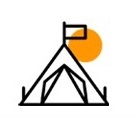
Trek Calendar All
Get yourself fit, nutrition tips, things to take, health & safety.
- Accommodations at Kashmir Great Lakes Trek: All accommodations on the trek will be on twin sharing basis in Tents.
- Great Lakes Trek Guides: An experienced and professional guide will accompany you for the trek. The team will have years of experience and well equipped for any emergency situation.
- Services of a Professional Trekking Team: A team of an experienced Cook, Camp Staff, Porters/Mules will accompany you for all the arrangements on the trek.
- Meals at KGL Trek: All Meals on the Trek are included. We will serve Vegetarian Indian food on the trek which will be cooked by our high altitude chefs. You will be given packed lunch everyday which you will have to carry in your lunch box.
- Camping and Safety Equipment: All the camping equipment such as Tents, Sleeping bags, Toilet Tents, Dining Tent, Mattresses, and other things will be provided by us and we guarantee the quality. Safety Equipment including Medical kit, Oxygen Cylinder, Oximeter will be provided by us. We recommend you to bring your own sleeping bags if possible.
- Trek Permits and Forest Camping Charges: Only for Indian Clients, All the applicable trekking permits, Camping Charges, Forest Entry Fee, etc will be paid by us. Foreigners have to pay these charges if not mentioned.
- A Life-Changing Experience: We assure you that by trekking in the Himalayas you will have a life-changing experience and we will do everything we can to provide you with the best services and make your venture in the wild an unforgettable one.
Note: Prior to your your adventure with Trekmunk, it will be mandatory to sign the waiver form and get a medical certificate from a doctor 15 days before the trek, without these, you will not be allowed to start the trek. You'll also need to upload your ID on the website. We need these paperwork of yours to get the permit from tourism department which only issues the permits 10 days or earlier before the trek date. All this can also be done online without using any paper.
- GST and Other Taxes: The goods and services tax is not included in the price mentioned with the trek. They are subjected to change according to the government rules of India.
- Accommodation and Food in Srinagar: Food and stay in Srinagar and during transit to Shitkadi, Sonamarg and back are not included in the package. You can book your hotels or homestays in Srinagar, we can recommend a few good options.
- Flights and Transportation to and fro base camp: Flights or other means of transport are not included in the package. Transportation from Srinagar to Sonamarg and Naranag to Srinagar (Cab cost keeps fluctuating but they tend to be approx 4500 for 5-6 seater Innova or similar class vehicles one way which is shared between the fellow trekkers which will pick you up from Tourist Reception Center, Dal Gate 1, Srinagar) is not included in the package. We can arrange a cab for you according to your requirements but you will be liable to pay for the same. Any expenses occurred during the journey are not included in the package cost.
- Personal Equipment: Your Rucksack, personal clothing, shoes, trek poles, and other personal trekking gear is not included in this package. You have to bring your own gear according to the weather and difficulty of the trek.
- Portage of Personal Bags(Offloading): We highly advise you to carry your own burden (your rucksack) but due to any reason, if you wish to not carry your rucksack, we can arrange for a porter/mule to carry it. For this service, you will be charged over and above the trek cost. The charges for offloading vary with every trek.
- Travel Insurance: Travel Insurance is not included in this package. You need to have travel insurance before opting for such adventures. You can buy insurance from providers like ASC360, Religare etc.
- Personal Expenses: Any personal expenses incurred (Laundry, Bottled Water, Beverages, Snacks, Orders at tea houses or dhabas, Tips for guides, Camera fees, etc) are not included in the package.
- Emergency Expenses: Any costs arising out of unforeseen circumstances such as accidents, bad weather, landslides, road conditions and any other circumstances beyond our control are not included in the package.
- Anything not mentioned in Inclusions of the package.
Cancellation Policy And More Information
Booking terms:, confirmation policy:.
Upon Booking, An invoice will be sent to your mail & within 12 to 24 hours the booking confirmation with additional details will be sent to your mail.
Cancellation Policy:
This image is only a brief visual representation of the policy.
Please read the detailed policy carefully by clicking on this text.
_1655191763393.jpg)
Refund Policy:
Any refund applicable will be processed within 10 to 15 business days as per the company policy.
Postpone/Transfer of a booked trek:
a) You can postpone your booked trek for a period of two months (61 days) but Trekmunk will charge a 20% processing fee. The last date for the postponement will be 15 days before the start of the trek. You can book any slot for the same trek in the next 2 months (61 days) which will totally depend on the availability. You will have to confirm your slot for your future trek 15 days prior to that trek. Failing to book the slot in 2 months (61 days) time, would be considered a cancellation with no refund of any kind. The 2 months (61 days) time frame will be from the start date of the initial trek you booked for. Postponing a booked trek can only be done once. If it is postponed 45 days before the departure date, we will not charge any fee.
b) You can transfer your booked slot for the trek to any fit person till 15 days before the trek. You just have to mail us the request and rest we will handle. The new person has to get all the mandatory documents duly signed for the trek and is bound with this booking contract. It is the participant's responsibility to read and agree to all these terms.
More Information:
1. We Trek for a Cause: For overall development of the areas we run our operations in, we donate Rs 100/- per booking from our profits which are used for the upliftment of the local people and conserving nature. We have named this initiative as - Trek for a Cause. For more details, follow: https://www.trekmunk.com/trek-for-a-cause
2. We are paperless: We are focusing on Sustainable Tourism and to do that we are trying all measures to convert our trek operations to be Eco-Friendly. Going Paperless is one step closer to our aim.
3. Single-Use Plastic: Trekmunk does not encourage the use of single-use plastic items. We are ensuring that our team is working together to reduce the problem and educate those around them. We will send you instructions on how to go plastic-free on your adventures.
4. Preparing for your Holiday: Getting some additional exercise makes a lot of sense to spend time before coming on a trekking adventure. The fitter you are, the more enjoyable you will find the experience. Hiking in the hill country is the best training but jogging, squash and swimming are also good for developing cardiovascular fitness and stamina. To read more on how to get fit, follow: https://www.trekmunk.com/get-fit-for-trek
5. Electricity Supply & Plug: You will get electricity supply till the starting point of the trek. If not Indian, We recommend you check if you require an adaptor for your electrical items at: http://www.worldstandards.eu/electricity/plugs-and-sockets/
6. Currency: The unit of currency in India is the Indian Rupees.
7. Health & Vaccinations:
Severe Allergies: If you have a severe allergy please inform the Trekmunk office before you travel. We will do all we can to help, but we cannot guarantee an allergy-free environment on trekmunk trips. You will need to carry your own treatment for the allergy with you, as 'adrenaline auto-injectors' are not carried as standard by our leaders and staff. You should inform your leader on the arrival of your allergy, and let them know where you keep your adrenaline pen.
Vaccinations: You should contact your doctor or travel clinic to check whether you require any specific vaccinations or other preventive measures. You should be up to date with routine courses and boosters as recommended e.g. diphtheria-tetanus-polio and measles-mumps-rubella, along with hepatitis A and typhoid. Malarial prophylaxis is not usually required for trips in the mountains, however, if you are visiting rural and remote low lying areas then they might be necessary.
8. Passport & Visas/Identity Proofs: If foreigner, Validity for 6 months, should have blank pages, and should be kept with yourself all the time.
9. Water: If you are on a trekking or cycling holiday, water is supplied to fill up your individual bottles. This will be boiled or filtered. Additionally, you should take purification tablets or a filter bottle (such as a LifeStraw, Sawyer Filter) to treat your water when in towns or where water is not supplied. We do not encourage the purchasing of single-use plastic bottles.
10. Altitude: This adventure involves going to a very high altitude. This is not something that you should worry about; the human body is quite capable of adapting to a very wide range of altitudes, but it is important that we follow some simple rules in order to acclimatize successfully. We will send you the information in your mailbox about Acute Mountain Sickness and trekking in high altitudes. On this trip, we carry bottled oxygen for use in emergencies.
11. Guidance on Tipping: Tipping is the accepted way of saying thank you for good service. Normally the guide and any other trek staff are given their tips at the end of the trek and this is best done as a group. The main guide will make sure that the tip is appropriately distributed among all the staff members on the trek.
12. Spending/Emergency Money: Approximately Rs. 8000-10000/- (in Indian Currency)should be carried for miscellaneous expenses including porter and trek crew tips, drinks, soft drinks, etc. We recommend that you carry your travel money in the form of cash as the availability of ATM is less in these remote areas. This can also serve as your emergency spending money.
13. Travel Insurance: It is mandatory to have an insurance for this trek. When taking out insurance please ensure the policy you choose covers you for the activities and altitude included in your itinerary. We will ask for the Travel Insurance Details over a mail.
I chose (after a lot of research) Trekmunk for my first trek - The Hampta Pass and Chandratal Trek. And I am so really glad I did so. The trekker needs to only focus on the trek and the beautiful landscape around him/her. The rest of everything is taken care of by Trekmunk from d ...
I had the best time of my life at Sandakhphu Phalut trek arranged by Trekmunk. Literally I felt like I was in heaven and I was soo very happy. I will recommend everyone to opt for Trekmunk. I was a solo woman traveler and was a bit worried, but things went very smoothly and I en ...
We were a group of 12 friends and booked a trek to Kedartal with Trekmunk, it was an amazing experience..even though it was our first trek to the Himalayas and Kedartal being a difficult terrain trek we were guided excellently by the Trekmunk team. They served us nutritious food, ...
I chose (after a lot of research) Trekmunk for my first trek - The Hampta Pass and Chandratal Trek. And I am so really glad I did so. The trekker needs to only focus on the trek and the beautiful landscape around him/her. The rest of everything is taken care of by Trekmunk from day 1 till the end of the trek. Scrupulously managed logistics; no compromise on safety and security; experienced, intelligent and knowledgeable trek leaders; scrumptious meals; contingency and backup plans; etc. make Trekmunk an ideal choice to go trekking with. My trek was lead by Ashish Pathania, Prashant Reddy and Sanjay Thakur. The three are were thorough professionals. They were jolly, very helpful, experienced, knowledgeable, organized, and needless to say polite yet strict when needed. They played the most important roles in making sure our overall trekking experience was a wonderful one. Thank you Trekmunk for one of the most beautiful experiences I have had till date. Will see you guys soon.
I had the best time of my life at Sandakhphu Phalut trek arranged by Trekmunk. Literally I felt like I was in heaven and I was soo very happy. I will recommend everyone to opt for Trekmunk. I was a solo woman traveler and was a bit worried, but things went very smoothly and I enjoyed it a lot. I miss my fellow trekkers too. I am very satisfied with their arrangements.
We were a group of 12 friends and booked a trek to Kedartal with Trekmunk, it was an amazing experience..even though it was our first trek to the Himalayas and Kedartal being a difficult terrain trek we were guided excellently by the Trekmunk team. They served us nutritious food, took complete care of our safety and health and gave us the right advice to overcome AMS. Eagerly awaiting our next trek with them.
Traveling with these people is surely an insanely enthralling experience. This is my second backpacking trip with these people and the way I had imagined backpacking to be has been fulfilled by them and they have given me surely more. The best thing about travelling with these people is that you understand the true meaning of travelling and experience it very closely. You are given great freedom but at the same time taking care of. You participate in the process of backpacking. You have a trip leader with you but he acts more like a friend as the days pass by! We attended the hornbill festival and did a wonderful trek to Dzukuo valley in Nagaland with the leadership of this group. You break the boundaries of yourself when you travel like a true traveller and that is possible with these people.
I was bored with my regular 9 to 5 schedule and then I decided to seclude myself from the chaotic city life. So, I went to Brahmatal trek last month along with a couple of my friends. We went with Trekmunk and it was a lovely experience. The trek guide, Ramesh was very polite and helpful. The food and snacks were amazing. The activities in the campsite during our overnight stay is something that I am gonna cherish my entire life. I am waiting for my next trek with Trekmunk.

Related Blogs
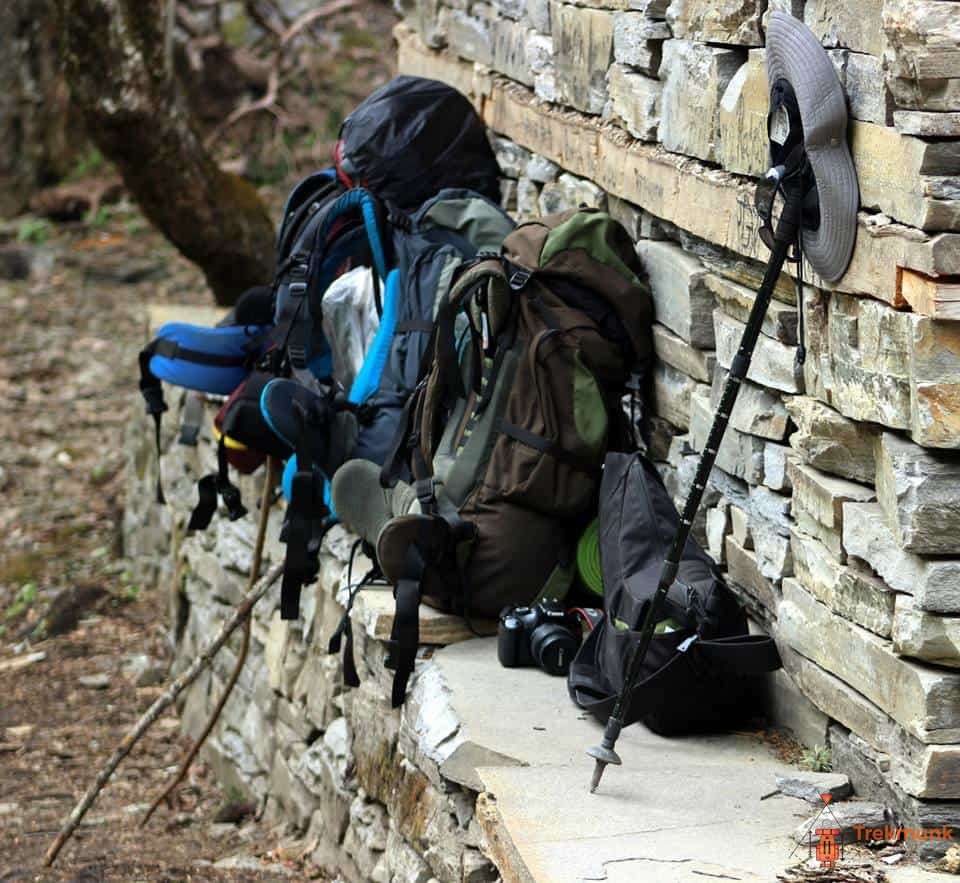
Related Tours
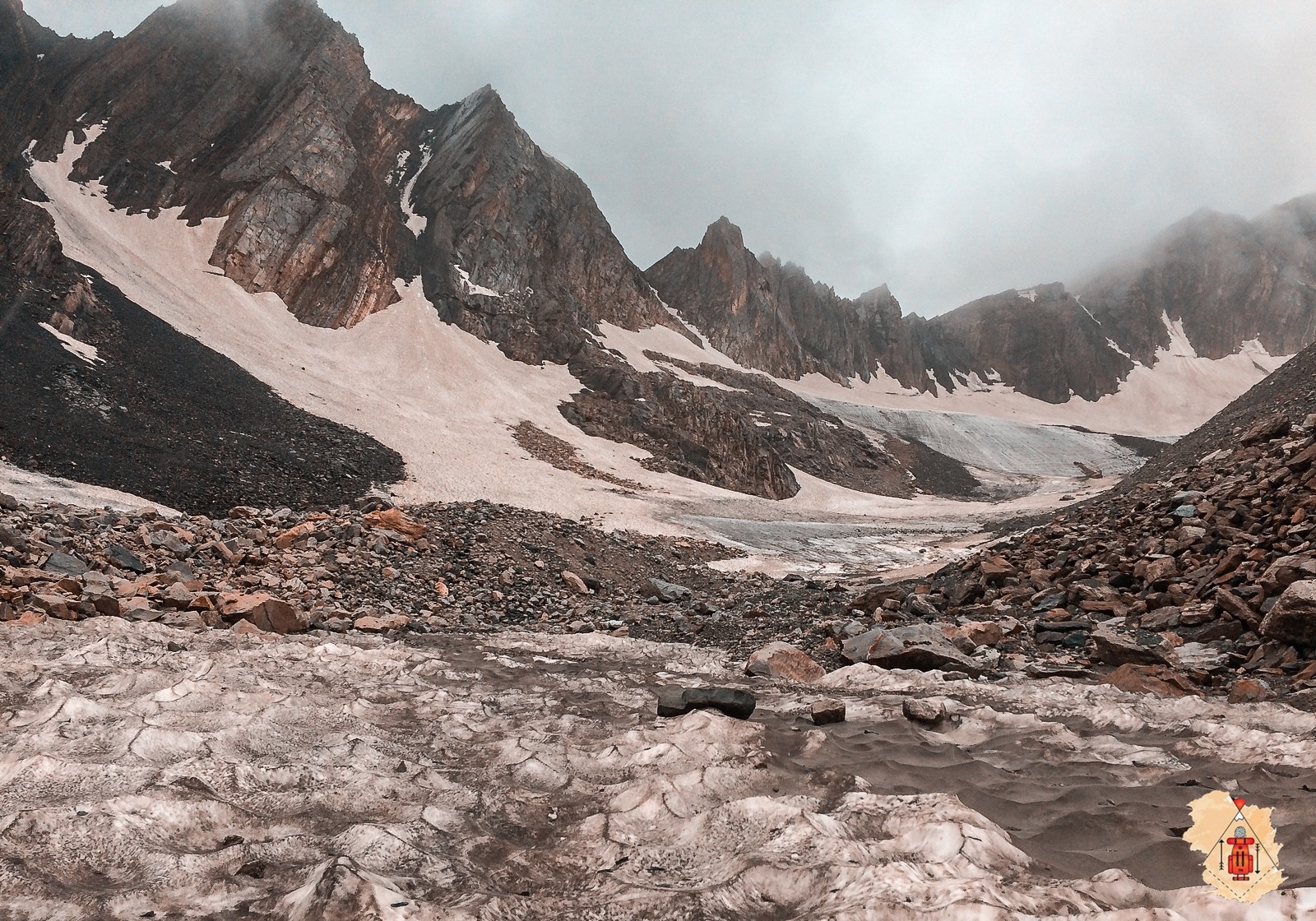
Basmai - Soun Valley Trek
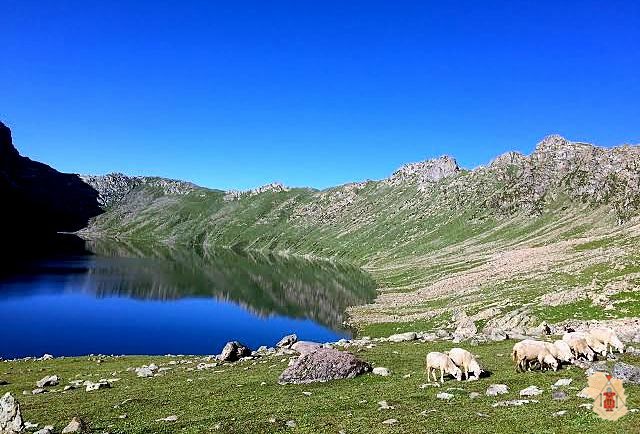
Basmai Pass - Tarsar Marsar Lake Trek
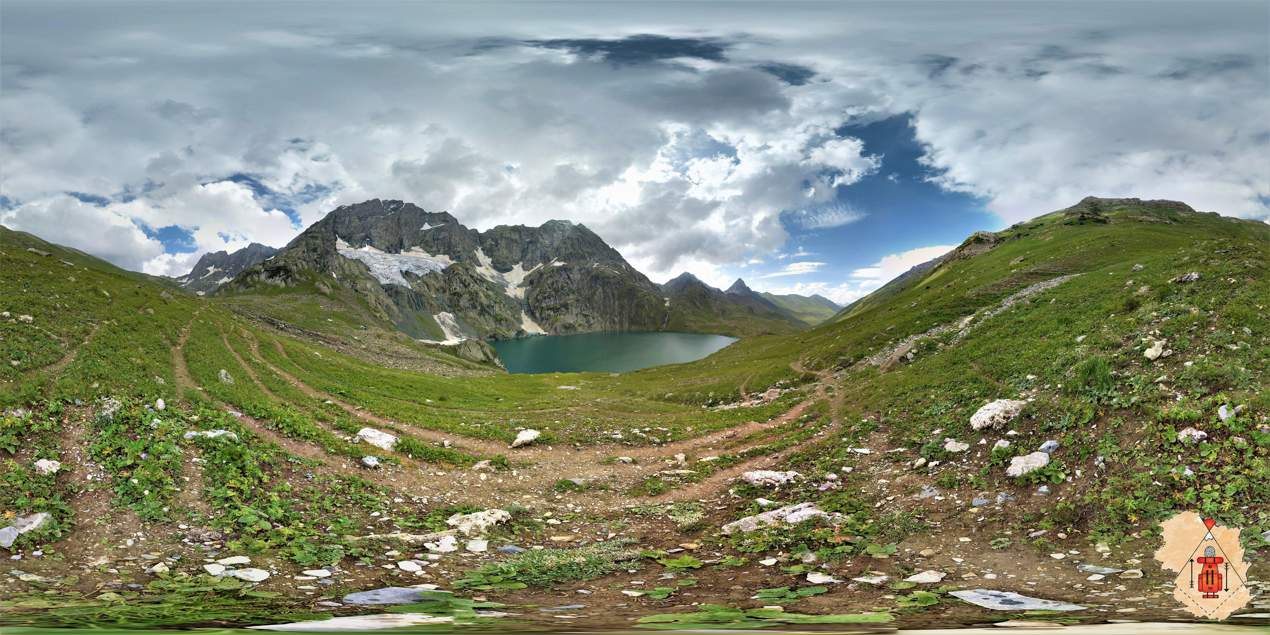
Gangabal Lake Trek -Largest Alpine Lake of Kashmir
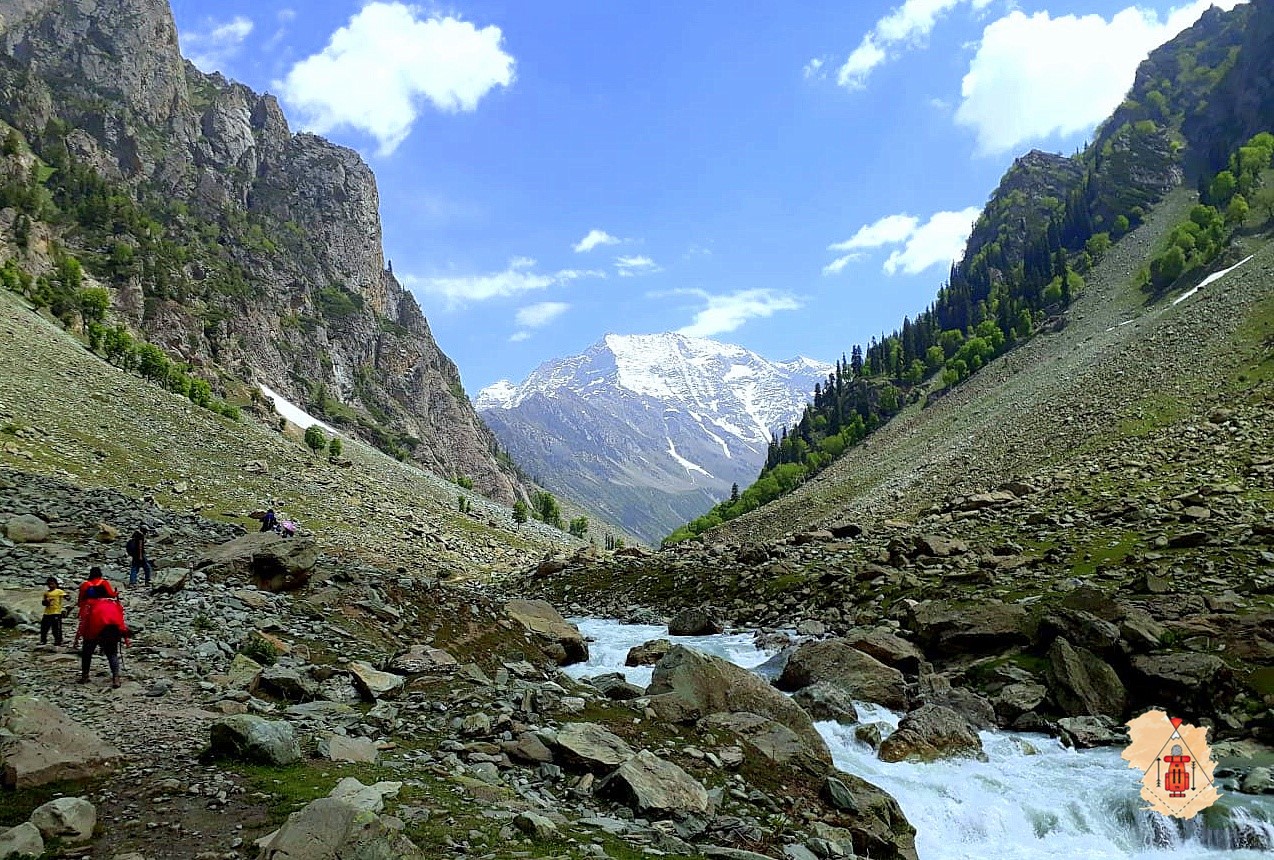
Kolahoi Glacier Trek
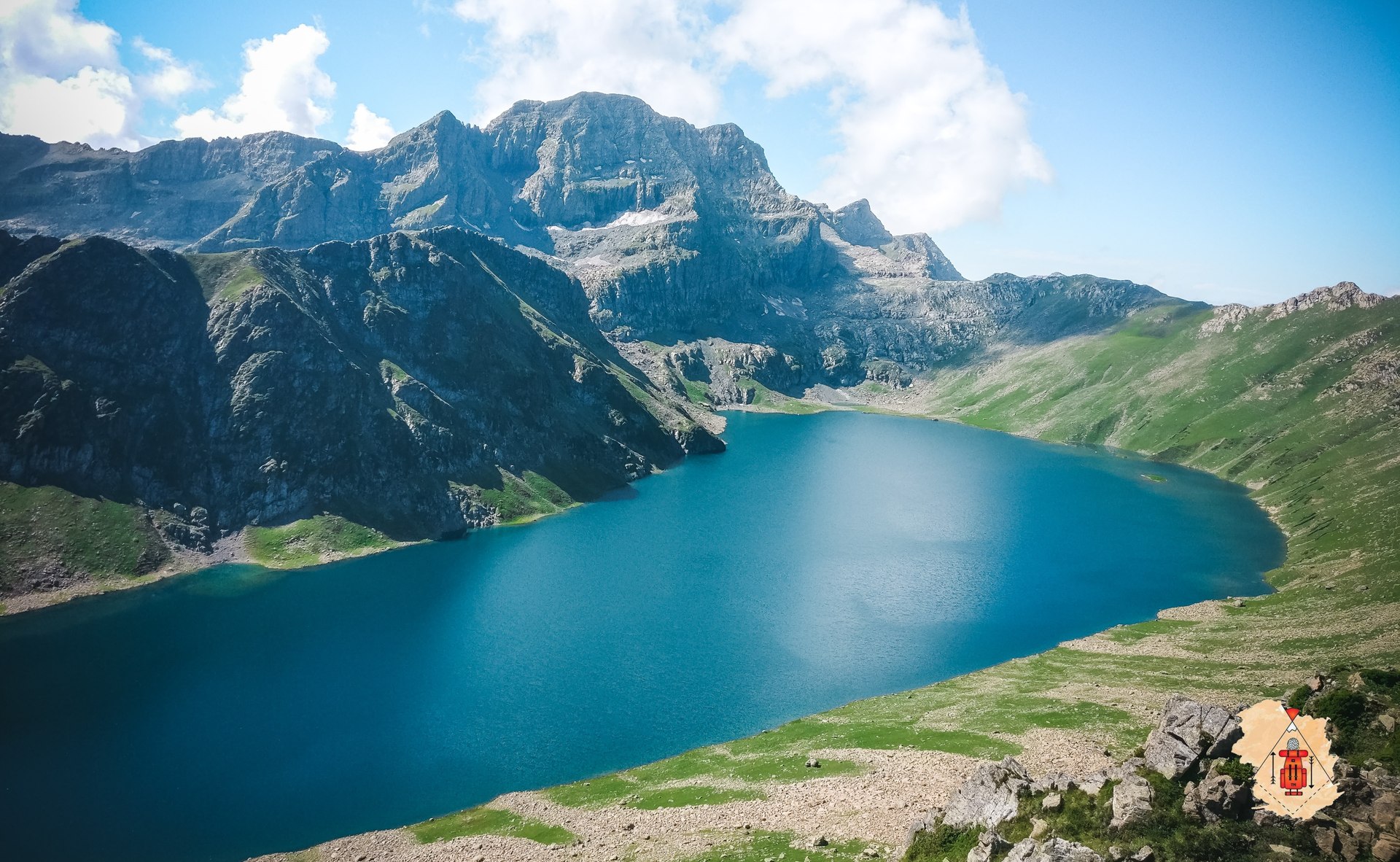
Tarsar Marsar Trek
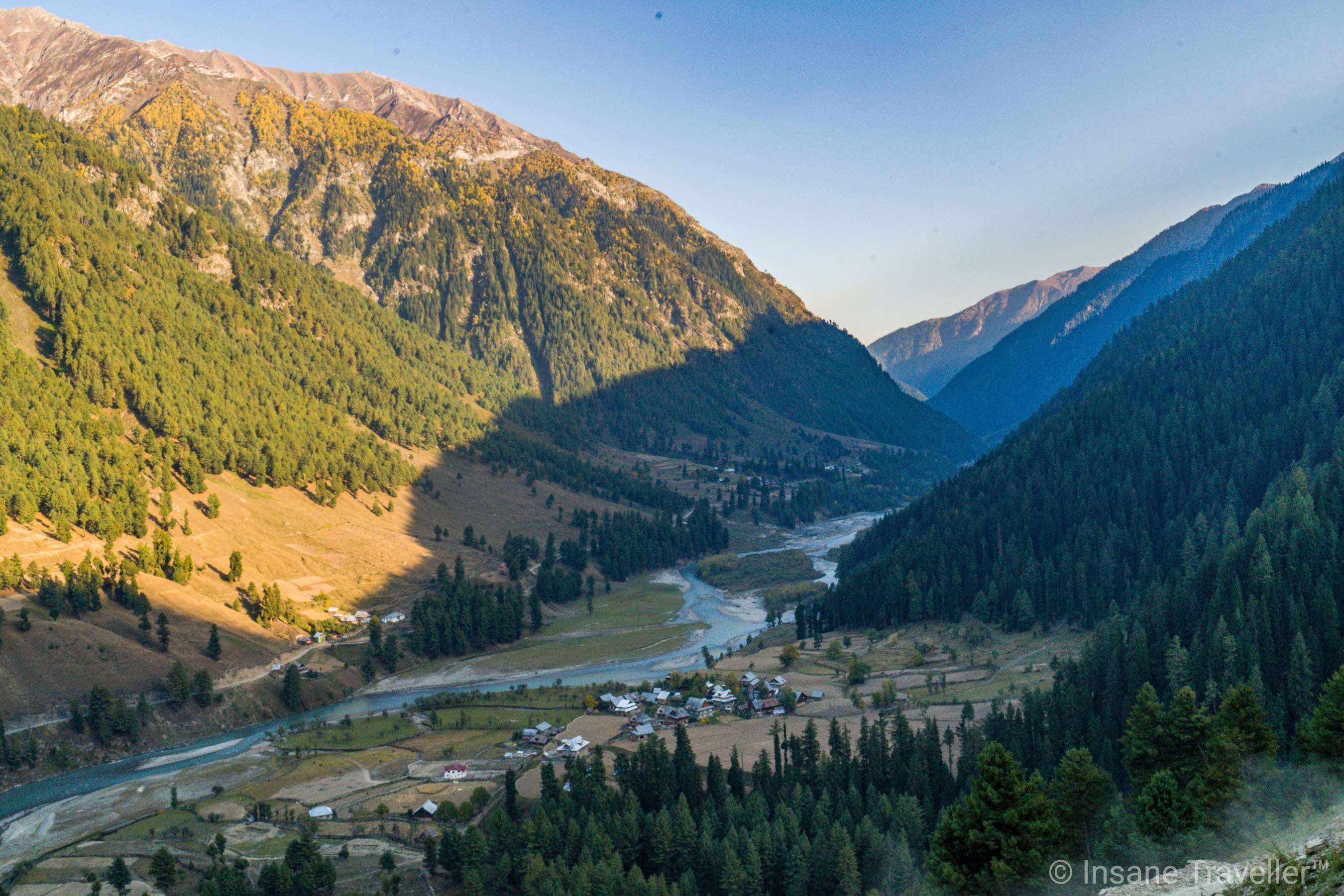
Warwan Valley Trek

"Trekmunk is changing the indian trekking industry"
"10 Most Promising Adventure Sporting and Trekking Companies - 2020"
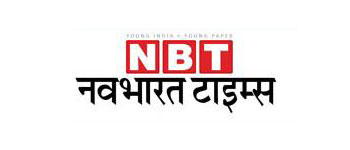
" Things you do for the Passion for Travel"
Hello there, How can we help you ?
Timing: 10 am to 6 pm IST (GMT +5:30)
Whats App Us

IMAGES
VIDEO
COMMENTS
The Kashmir Great Lakes, trek is the most beautiful, amazing and full of natural beauty trek. In this trek you can enjoy the scenic beauty of God's amazing creation called 'Lakes'. ... YHAI at any time can refuse /deny the member-participant the opportunity to participate/further continue the trek. 3. YHAI will not be held liable for any ...
The Kashmir Great Lakes, trek is the most beautiful, amazing and full of natural beauty trek. In this trek you can enjoy the scenic beauty of God's amazing creation called 'Lakes'. ... This Trek Is Moderate To Hard. YHAI will provide adequate assistance in above circumstances but cannot be held responsible for any risk mentioned or not ...
Kashmir Great Lakes Trek - 2024
The Kashmir Great Lakes Trek is a breathtaking adventure in the heart of the Himalayas, offering trekkers a chance to explore some of India's most pristine alpine landscapes. This 8-days journey is situated 75 km northeast of Srinagar and takes you through lush meadows, dense forests, and rocky terrain, showcasing seven stunning high-altitude ...
Top 8 Lake Treks in Kashmir 2023. 1. Tarsar Marsar Trek. Route: The trek usually starts from Aru Valley and passes through Lidderwat, Shekwas, Tarsar Lake, Sundersar Lake, Marsar Lake, and ends at Homwas. Duration: Approximately 7-8 days. Difficulty: Moderate. Highlights: Scenic meadows, alpine lakes, and panoramic views of snow-capped peaks.
The Kashmir Great Lakes Trek offers stunning vistas of alpine lakes, snow-capped peaks, and verdant meadows, providing a truly immersive trekking experience. By participating in this trek, you'll not only enjoy the natural beauty but also play a crucial role in maintaining the cleanliness of the trails and surrounding areas. Our collaboration ...
The Kashmir Great Lakes Trek , a journey that stands out for its unique features, is a trek that speaks for itself. Its name alone evokes images of breathtaking beauty and adventure. Nestled in the heart of the Himalayas, Kashmir is a haven for nature lovers and thrill-seekers alike. This trek offers a one-of-a-kind experience that will imprint ...
Duration: - 06 Nights 07 Days from Srinagar to Srinagar. Base camp: - Shitkadi- Sonamarg. Monsoon Temperature: - Day (5°C to 17°C) Night (2° C to 8° C) Altitude- Kashmir Great Lakes Trek - 13785 Feet. Best Time: - July August, September. Trek Level: - Moderate. Trek distance: - On foot 68 Km - By taxi 125 km.
The Kashmir Great Lakes Trek is a multi-day journey through the beautiful alpine landscapes of Kashmir, India. Trekkers will explore snow-capped mountains, lush meadows, and alpine forests, and encounter several stunning high-altitude lakes along the way. The trek offers a unique opportunity to experience local culture and interact with the friendly people of the region.
The Kashmir Great Lakes Trek is a challenging 6-day hike spanning 75 kilometres in the Western Himalayas of Kashmir. On an average, the trek involves more than 12 kilometres of hiking per day. It begins at Sonmarg and ends at Naranag, suitable for individuals aged 15 and above. Considering the terrain, it is advisable for trekkers to have prior ...
The route of Kashmir's great lakes trek remains under the large scale of snow till mid of June. Basically the best time to do trekking in Kashmir is from 15 May onwards but for the Great lakes trek, the perfect time is July to the end of Sep. During the month of June, the great lakes trekking trail is partially covered with snow, and the view ...
Discover the heavenly side of Kashmir with the Kashmir Great Lakes Trek, a breathtaking trail that spans over 69 kms and features three high altitude passes, seven alpine lakes in stunning shades of green, blue and turquoise, and endless panoramic views of rugged mountains and wild meadows. With relatively easy navigation and long distances to cover each day, this trek is perfect for beginners ...
Day 1: Arrive in Srinagar for the Kashmir Great Lakes trek. Day 2: Drive from Srinagar to Sitkari/Sonamarg. Day 3: Trek from Sitkari village to Nichnai. Day 4: Trek from Nichnai to the Vishansar Lake. Day 5: Trek from Vishansar Lake to Gadsar Lake. Day 6: Trek from Gadsar lake to Mengandob/Satsar lake.
The kashmir great lakes trek is typically completed in 7-8 days, covering around 65-70 km, and is graded as moderate to difficult. Moreover, the trek takes you through several alpine meadows, dense forests, and snow-covered passes, including the Nichnai Pass and the Gadsar Pass. The highest point of the trek is the Gadsar Pass, which stands at ...
The lakes around here, whether Dal Lake, Vishansar Lake, or the Gangabal Twin Lakes, are surreal and a rare sight. We discover the most pristine mix of alpine lakes, far-reaching meadows, high altitude passes, and vast unexplored vistas of Kashmir Himalayas on the Kashmir Great Lakes Trek.
Kashmir. Great Lakes Trek: Available upcoming group departures for Kashmir Great lakes trek starting on 3rd, 10th, 11th & 25th Aug 2024 . Customised private tours are possible from late June to late September. Costs as per group size are given in details on this page here. Kashmir Great Lakes, a.ka. KGL trek, became increasingly popular and now ...
Kashmir Great Lake Trek. Kashmir; Starts from INR 65000* 9D/8N Duration 7/10 Difficulty Age June-Sept Season Nestled amidst the majestic Himalayas, the Kashmir Great Lakes Trek offers a mesmerizing journey through some of India's most stunning landscapes. ... - These twin lakes, located at 11,500 feet, are famous for their serenity and beauty ...
Kashmir Great Lake Trek - An Overview. For a trekker, it is impossible not to have the Kashmir Great Lakes Trek on their bucket list. Himalayan treks will always include this trail as it offers a lifetime experience. The trail starts from Sonamarg and ends at Naranag after 8 days of life-altering trekking experience. The trek is considered to ...
The Kashmir Great Lakes Trek not only has beautiful views, but it is also a moderately tough trek. During the trek, the trail will often change from ascent to descent. On some days, you would trek up to the high point, for example, Gadsar Pass, which is 13,800 ft (4,200 m), and then hike down to a campsite on the other side of the mountain.
Day 2 : Trek from Sonamarg to Nichnai via Shekdur. Day 3 : Trek from Nichnai to Vishnusar Lake. Day 4 : Trek from Vishnusar to Gadsar Via Kishansar lake & Gadsar Pass. Day 5 : Trek from Gadsar to Satsar. Day 6 : Trek from Satsar to Gangabal twin lakes. Day 7 : Trek from Gangabal to Naranag, Drive to Srinagar.
The Kashmir Lakes Circuit trek traverses some of the hidden jewels in the Kashmiri mountain scapes in the pristine alpine high altitude lakes of Vishansar, Krishansar, Gadsar, Satsar, Nundkol and Gangbal. If you are looking for green meadows filled with colourful wild flowers, pristine colour changing water lakes, meandering streams and amazing ...
Here's the cancellation policy for Kashmir Great Lakes Trek. If you cancel before 30 days - 90% of the amount will be refunded. If you cancel between 20 -30 days - 75% % of the amount will be refunded. If you cancel between 15-19 days - 50% will be refunded. If you cancel between 7-14 days - 25 % amount will be refunded.
2014-02-21. W hen Sandhya UC, COO and co-founder at Indiahikes, went on a Kashmir Great Lakes Trek exploration in 2010, little did she know that her trip to Kashmir was going to change the entire trekking scenario in the beautiful mountainside. She went with eight others trekkers on this exploration, which took her to glacial lakes.